During our expeditions in Panama, our team attempted to capture comparable night photos in the same approximate region where Kris Kremers and Lisanne Froon took their night photos. We used the same camera model that Kris and Lisanne used during their fateful hike when they disappeared in 2014.
Matt from our team had purchased the Canon Powershot SX270 HS camera online and sent it to Chris prior to our expedition. I charged the camera’s batteries and brought the camera with me on the trail. I used it frequently, day and night, during the expedition. Romain already had his own camera (the same model, Canon Powershot SX270 HS).
The purpose for taking our own photos with the same model camera was to test the camera in similar conditions (as similar as possible given the incomplete case details) in order to understand how their camera could have impacted their behavior. For example, could the pre-flash indicator light have been used as a light source? Was the camera’s grip slippery when held in moist/humid conditions and could that have contributed to the inconsistent photo-angles? Were the camera’s inner-electronics delicate to moisture/humidity along the river?
From our photos, we were able to make various observations. We’ve provided our photos and some brief analysis below.
Other related articles about the case:
- Unsolved: Kris Kremers And Lisanne Froon In Panama (Start here if you’re new to the case)
- Panama Expedition 2021 – A Complete Overview
- A Deep Analysis of the Night Photos
- New Case Data: Night Photo EXIF Temperatures
- View our entire list of case articles here.
All Photos Below Are Our Photos (Not the original case photos!)
In order to avoid confusion, on this page we will not include any of the night photos from Kris and Lisannes photos. None of the photos here are the original night photos. All of the photos below (and in the body of this entire article) are from the Imperfect Plan team, during the 2021 and 2022 Panama Expeditions.
Again, none of the photos below are from Kris Kremers and Lisanne Froon.
If you’re interested in viewing the original night photos, you can find them here: A Deep Analysis of The Night Photos or on Scarlett’s blog here.
Two Sets Of Photos (from the Imperfect Plan team)
Our team took two sets of photos, so we’ve separated them below. The first set of photos were taken in July 2021. The second set of photos were taken in March of 2022. Both sets were taken using two different Canon Powershot SX270 HS cameras. Although it was the same model camera, it’s worth mentioning that there were two different camera’s involved.
Both sets of photos have been scaled in size in order to make this page load at a reasonable speed. Large resolution photos usually make web-pages load awfully slow, so we made the images smaller. However, every photo is also available here in it’s full size. In order to view the large size, simply remove the part in the URL that says “-scaled”.
Example to see full-size photos:
Scaled: https://imperfectplan.com/wp-content/uploads/2023/10/IMG_3524-scaled.jpg
Full size: https://imperfectplan.com/wp-content/uploads/2023/10/IMG_3524.jpg
If you choose to see the full size photo, they may take a moment to load. They’re often about 10 megabytes in size (which is big!).
Locations Where We Captured The Photos
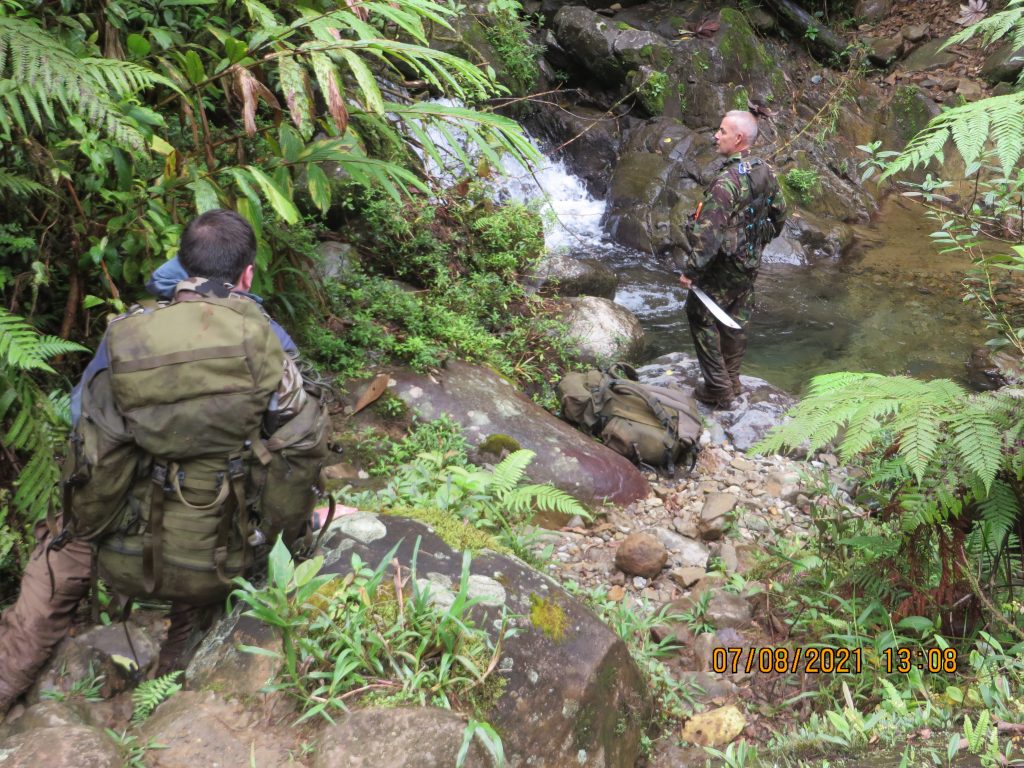
Kris Kremers and Lisanne Froon’s camera was found in their blue backpack on a bank of the Serpent River (Rio Culebre) and the camera photos indicate clear rock formations, which are consistent with the river-beds in northwest Panama. Therefore it’s generally accepted that Kris and Lisanne’s night-photos were taken on the bank of a river.
The location of where Kris and Lisanne’s night photos were taken remains unknown. In fact, there’s no clear indication of whom exactly took the night pictures that were found on their camera, although we’ve determined it was most likely Lisanne whom was the owner of the camera.
It also remains unknown which location of the river (or tributary thereof) was where they took the photos. Given that fact, we were unable to capture photos in the same location.
Our first set of photos were taken at River 3 and our second set at the first monkey bridge.
Photo Set #1: Where River 3 Intersects The Trail
We opted to take our first set of night-photos at River 3, where the trail intersects the river. We previously noted the location on this map. River 3 is a tributary that converges with the Serpent (Culebre) River.
Photo Set #1 Technical Notes:
Time Taken: From 7:30PM to 7:44PM
Date Taken: July 10, 2021
Location: River 3
Air Temperature: 16.4° C (61.52° F)
River Temperature: 16.2° C (61.16° F)
Camera: Canon Powershot SX270 HS
Camera Setting: Automatic, zoom used for some photos.
Number of photos: 45 Photos
Temperature Note: It was fairly chilly that night, especially considering that I was already soaking wet from walking in the river all day. As mentioned in prior articles, staying dry was very difficult during the entire expedition. The air is dense with humidity and everything is covered with a thin film of water.
Time Taken Note: It got very dark immediately after the sun went down. I could have opted to wait until late night to take the photos, but waiting was not necessary. It was essentially pitch-black when I took the photos, which was all that was needed to match the lighting circumstances of Kris and Lisanne’s night photos. Furthermore, the risk of injury would have increased later at night with colder temperatures and a higher chance of predators (nocturnal snakes, arachnids, etc) present.
The Photos We Captured (Set #1)
Below you’ll find the first series of photos we captured during July 2021.
You’ll notice that our photos differ from Kris and Lisanne’s photos. Some differences were caused by various factors: the location is different, the season is different and the atmospheric conditions were different. However, there are some differences that we cannot explain. Our photos came out remarkably clear, providing significant detail, even when reduced in size. The photos from Kris and Lisanne appeared to lack resolution, even when viewed in their full original size.
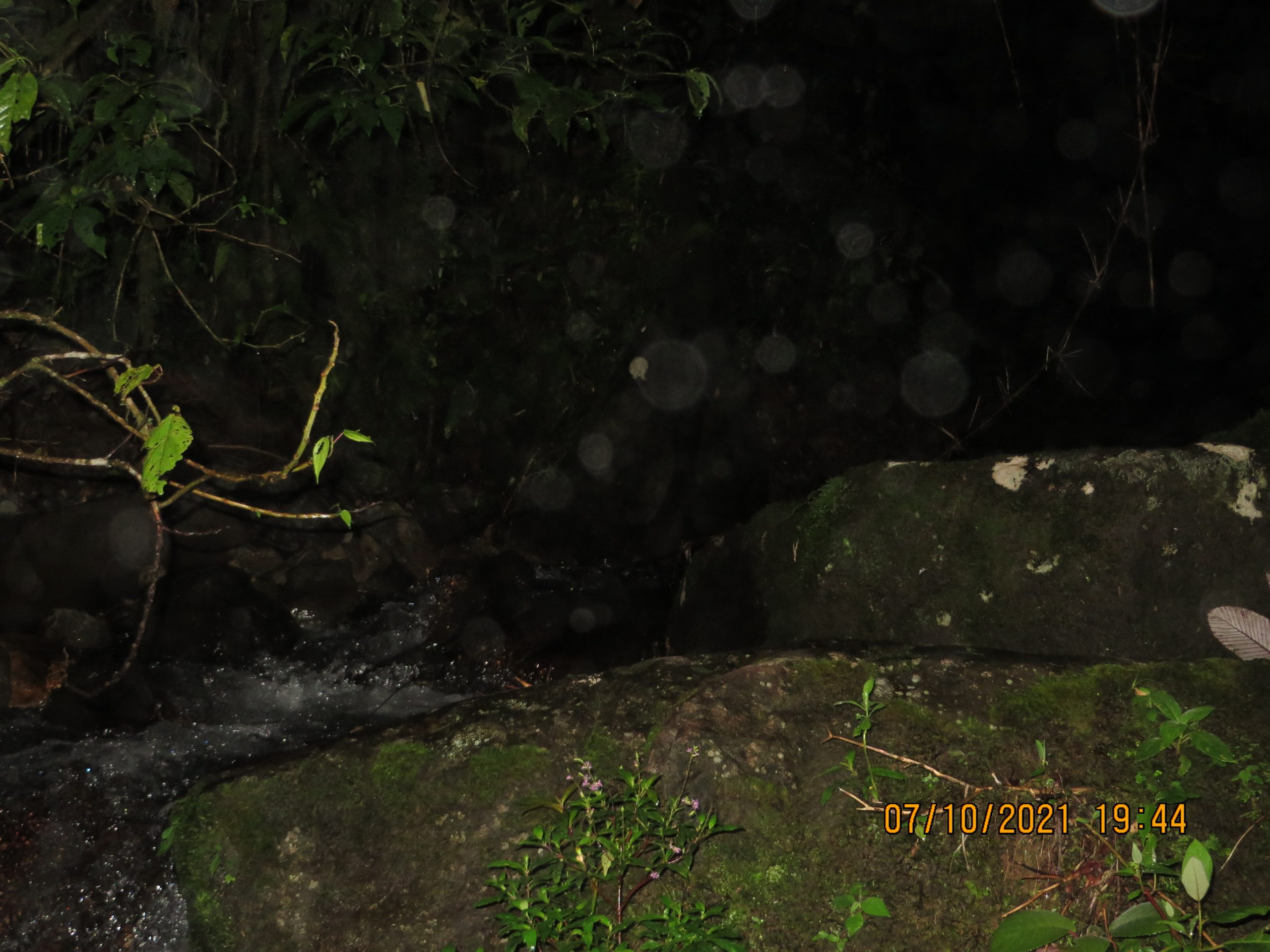
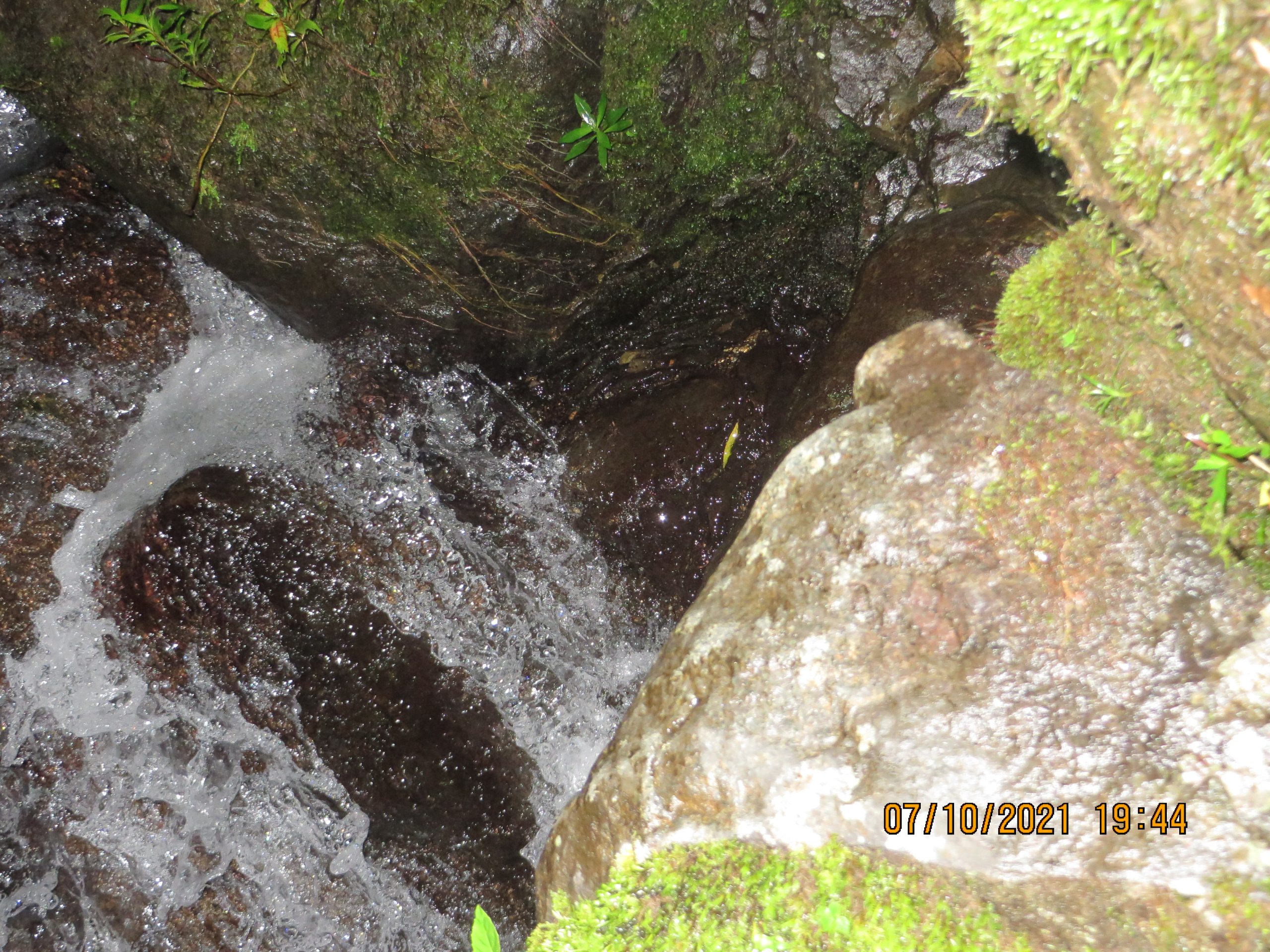
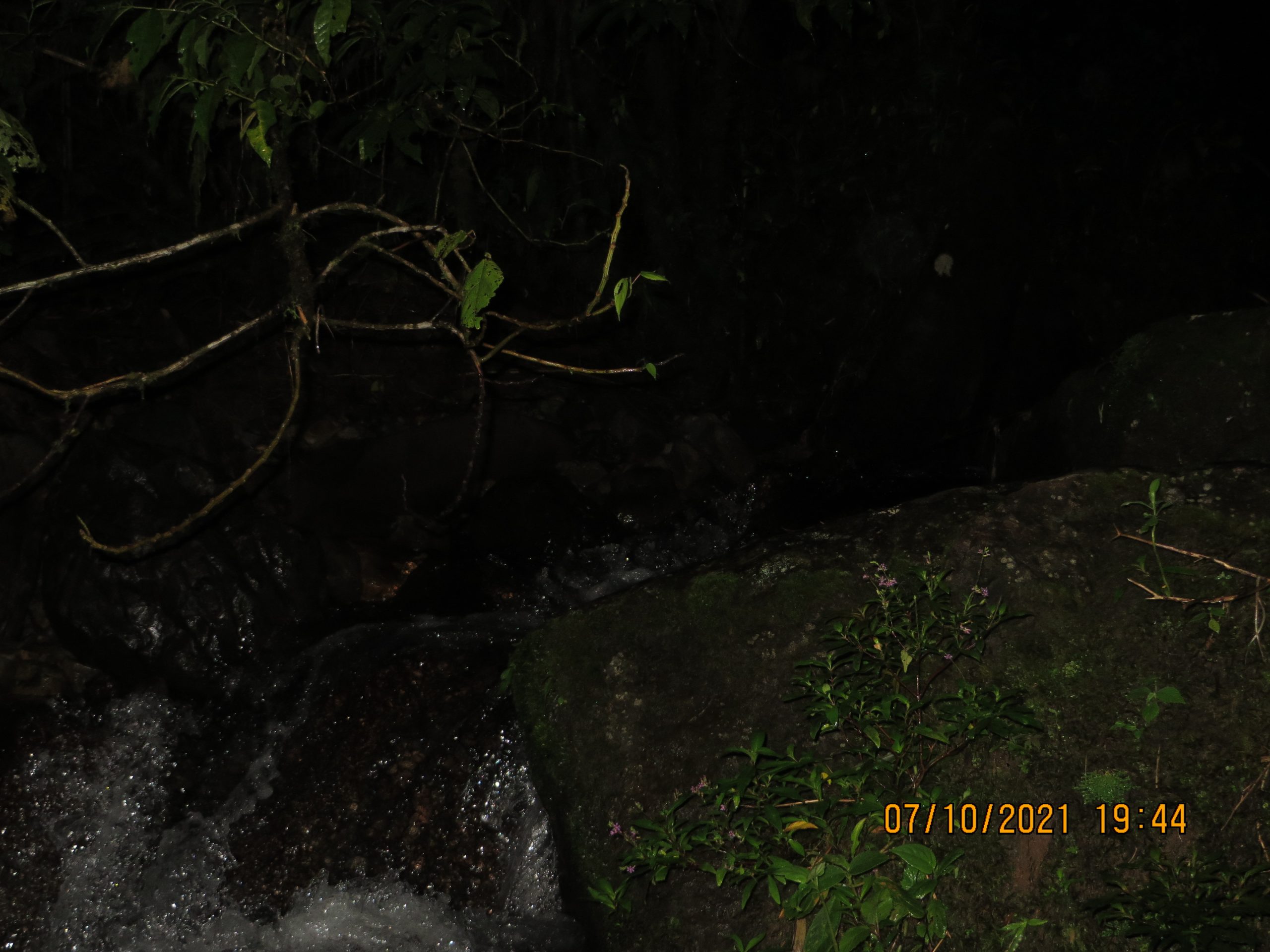
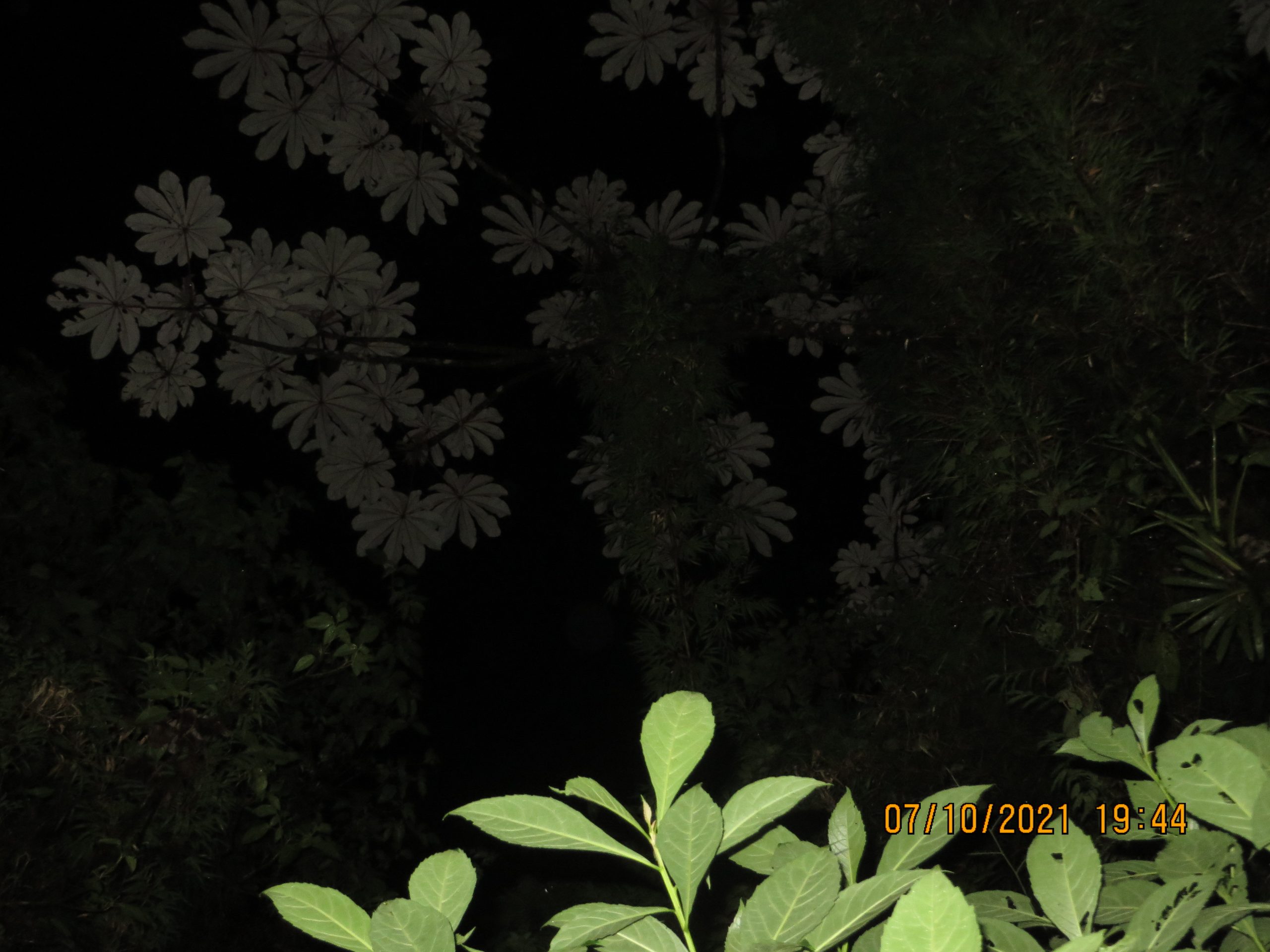
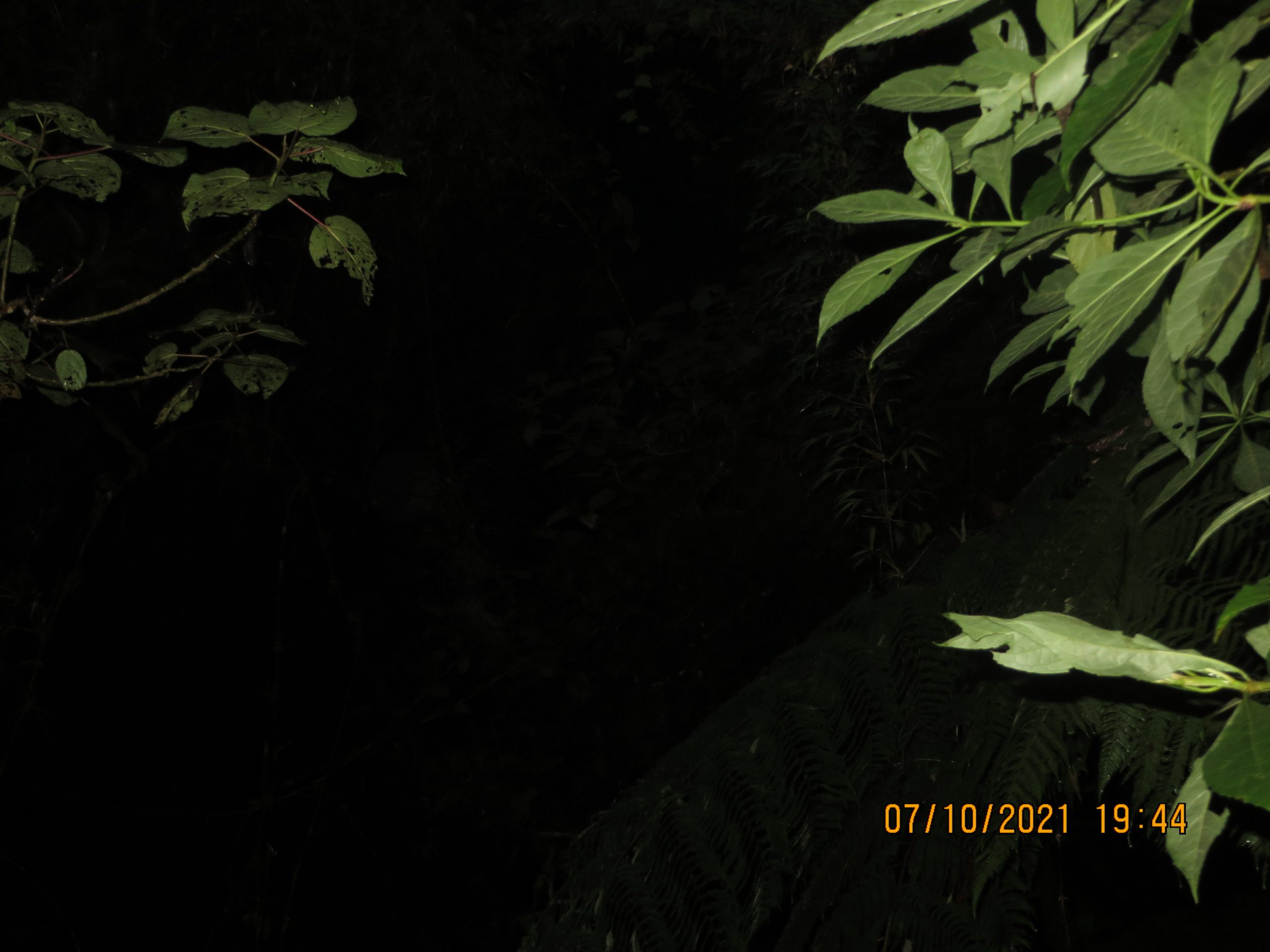
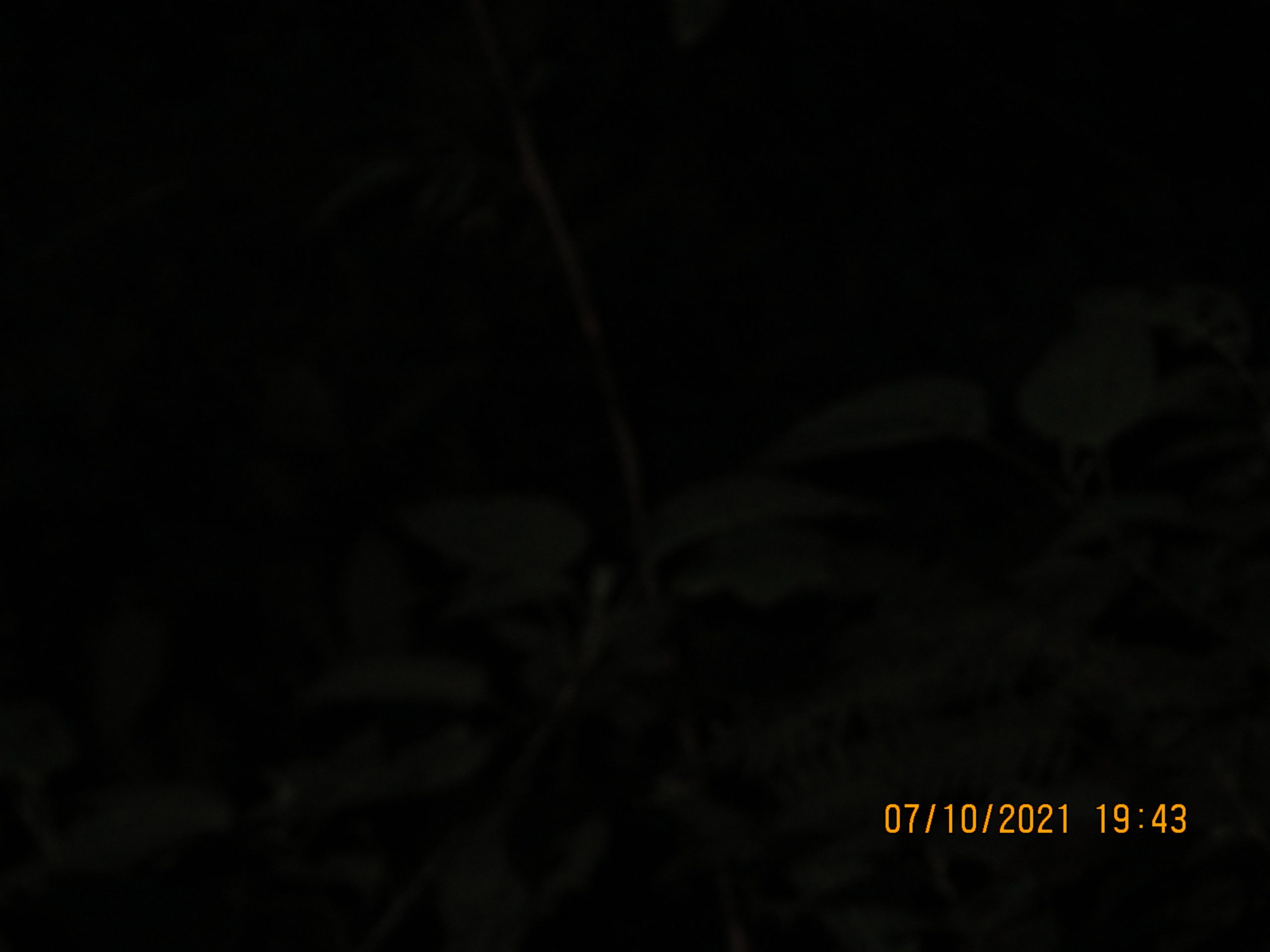


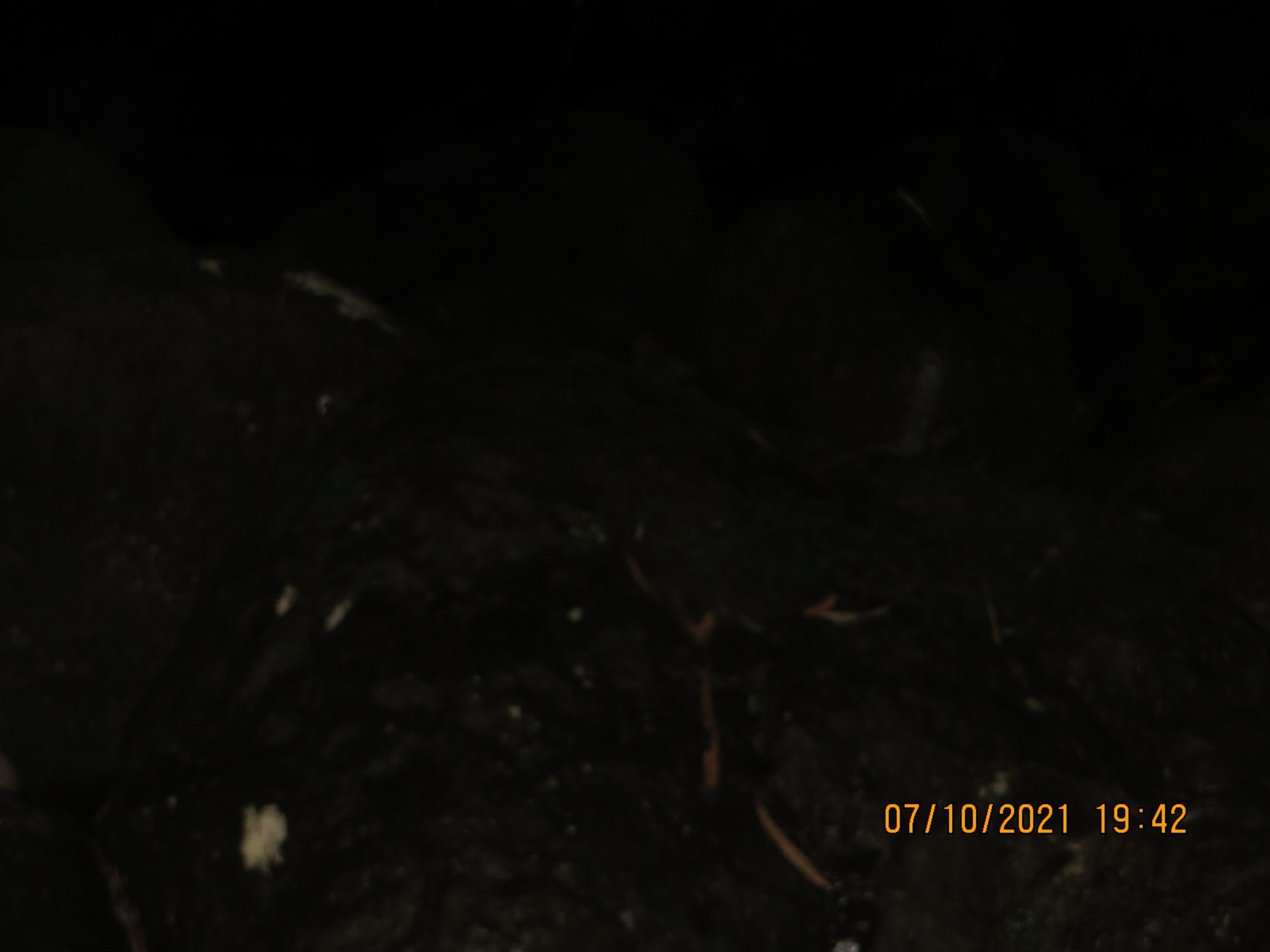
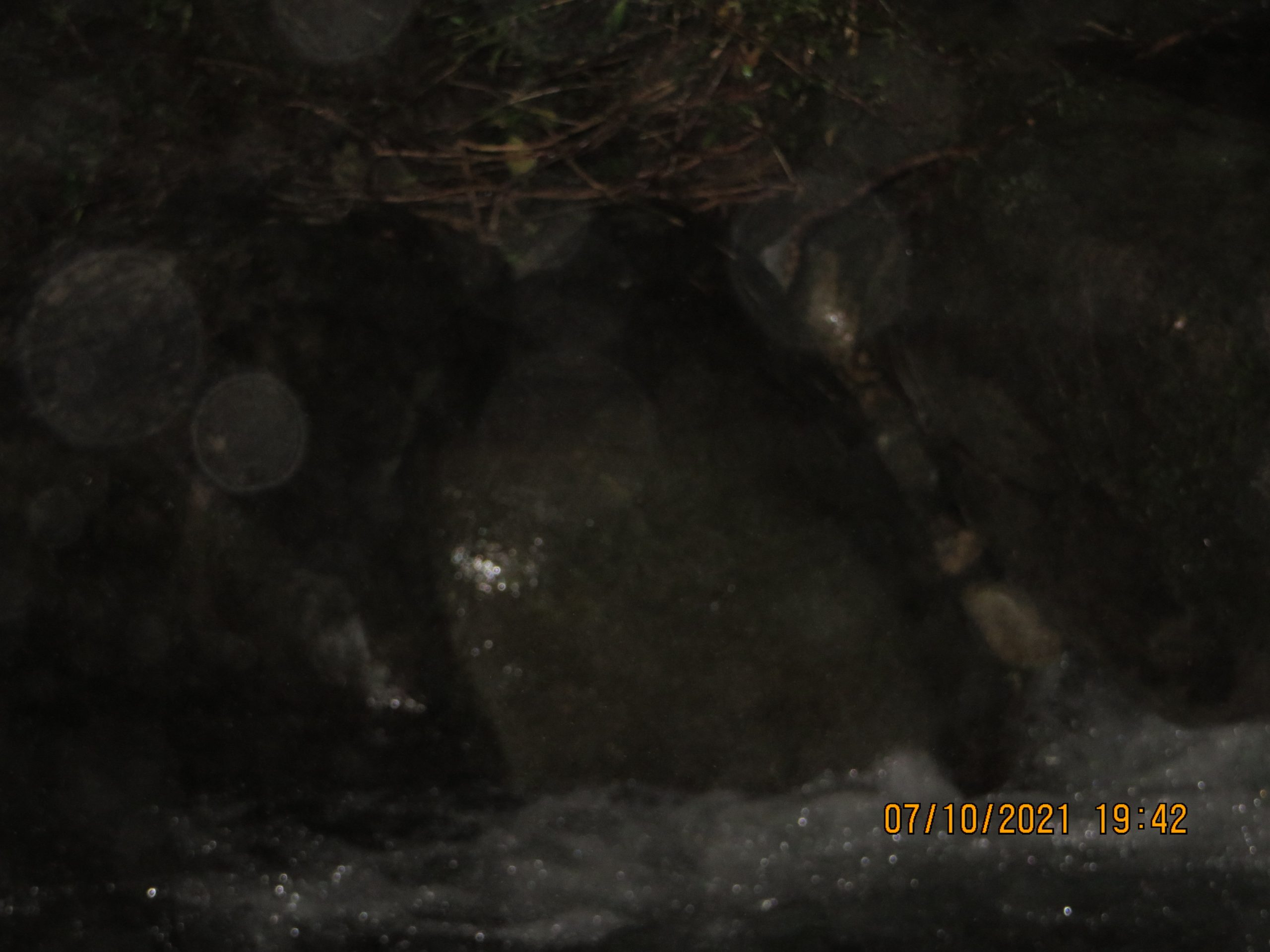


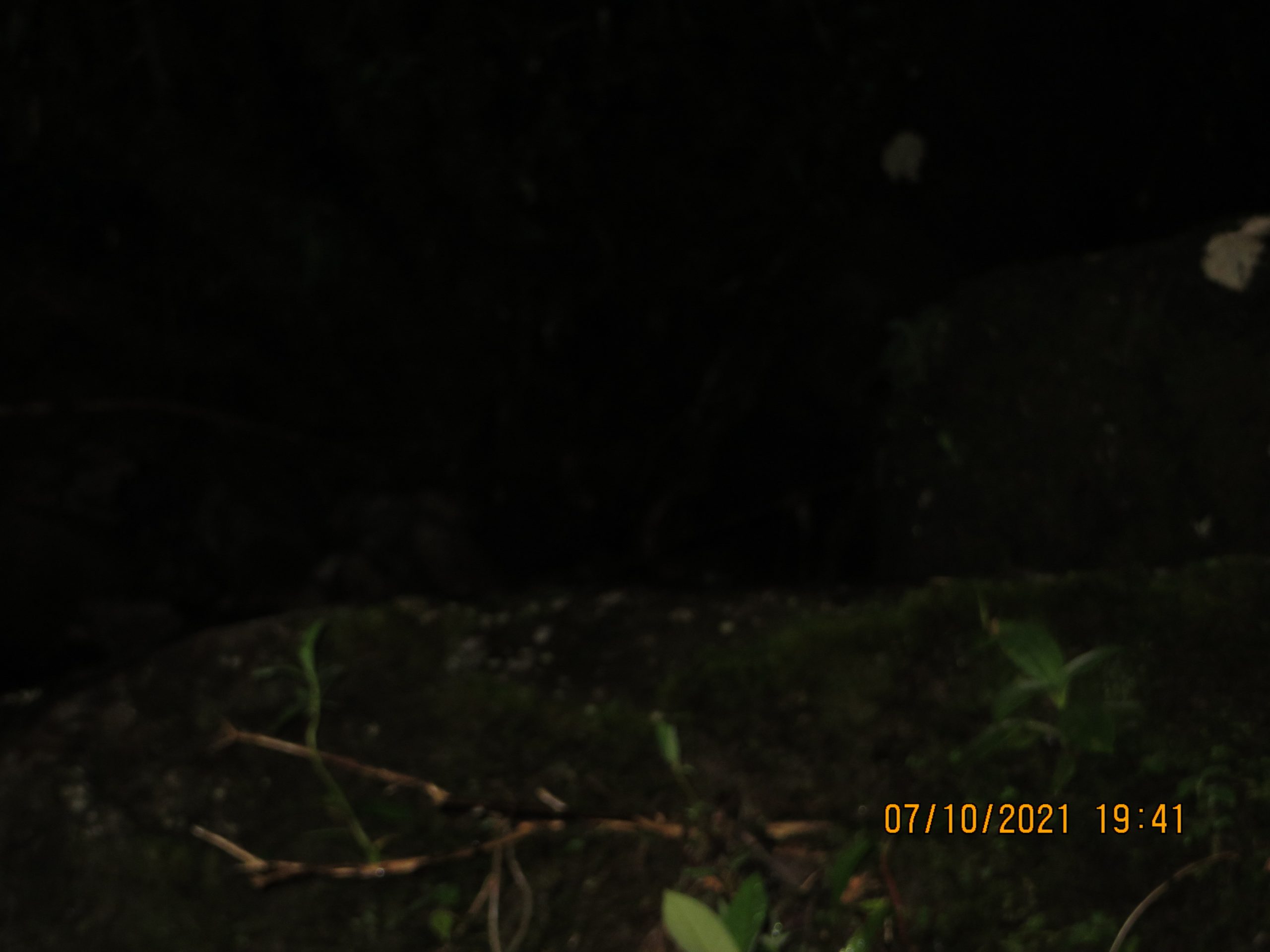
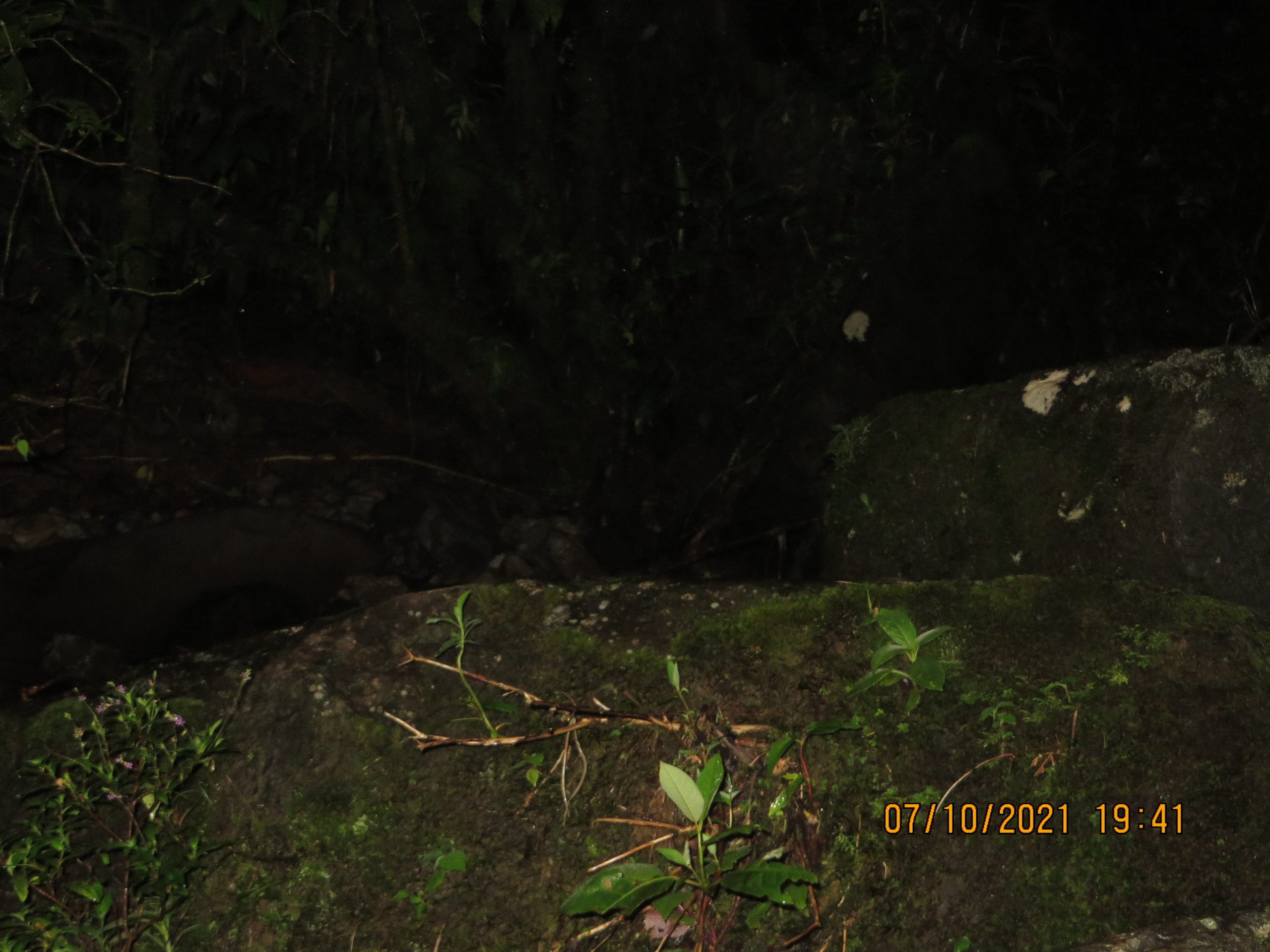
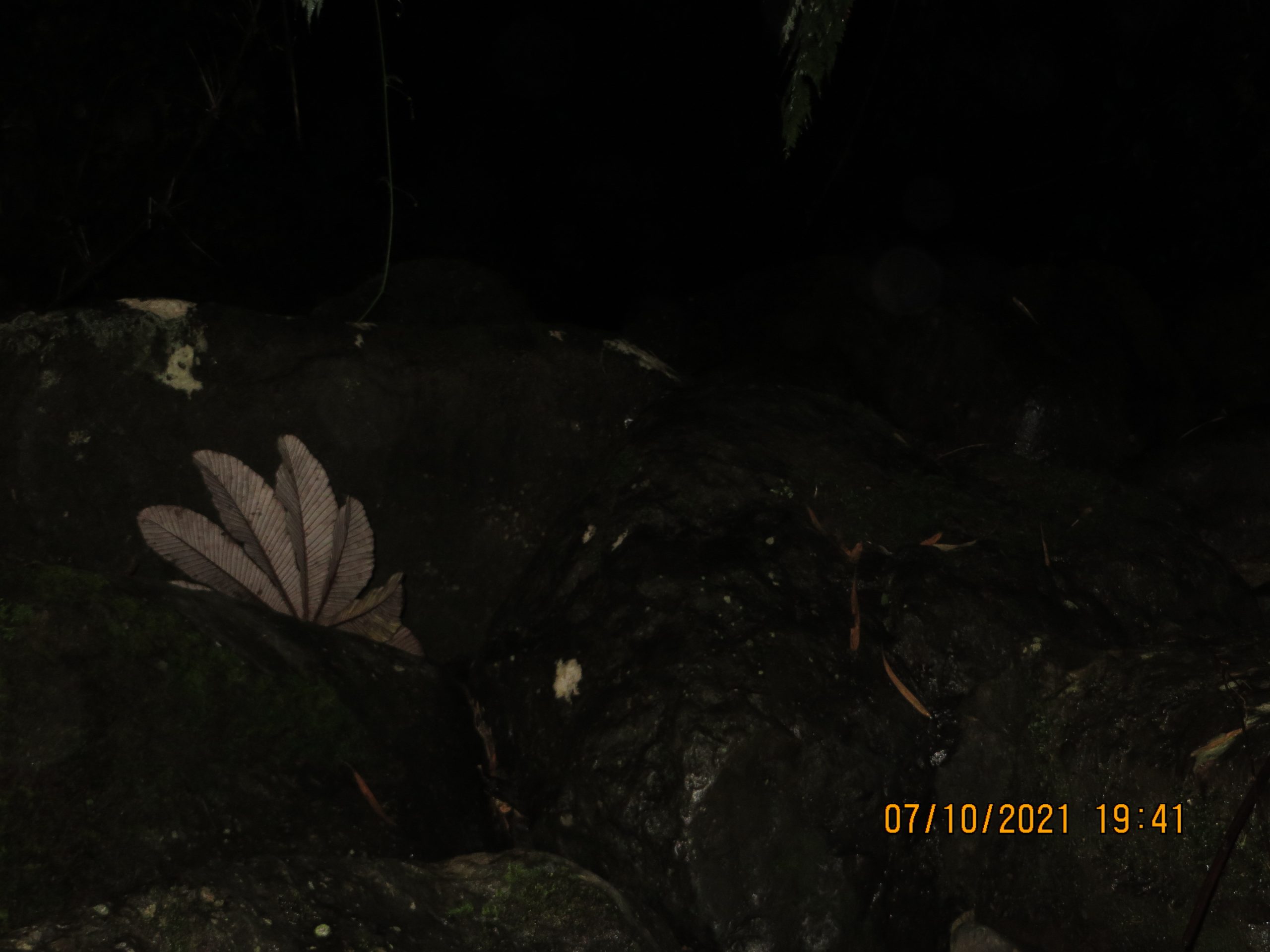
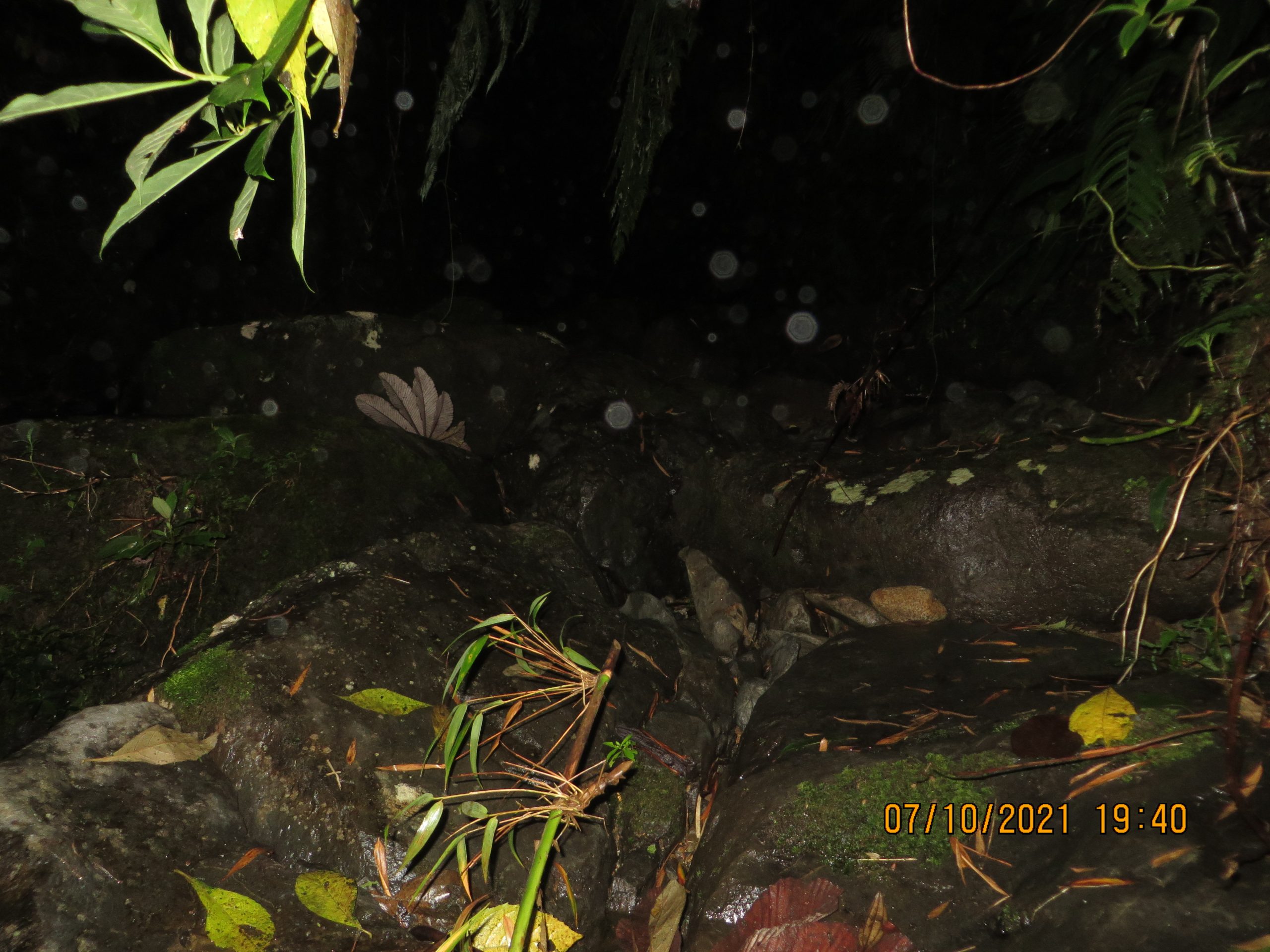

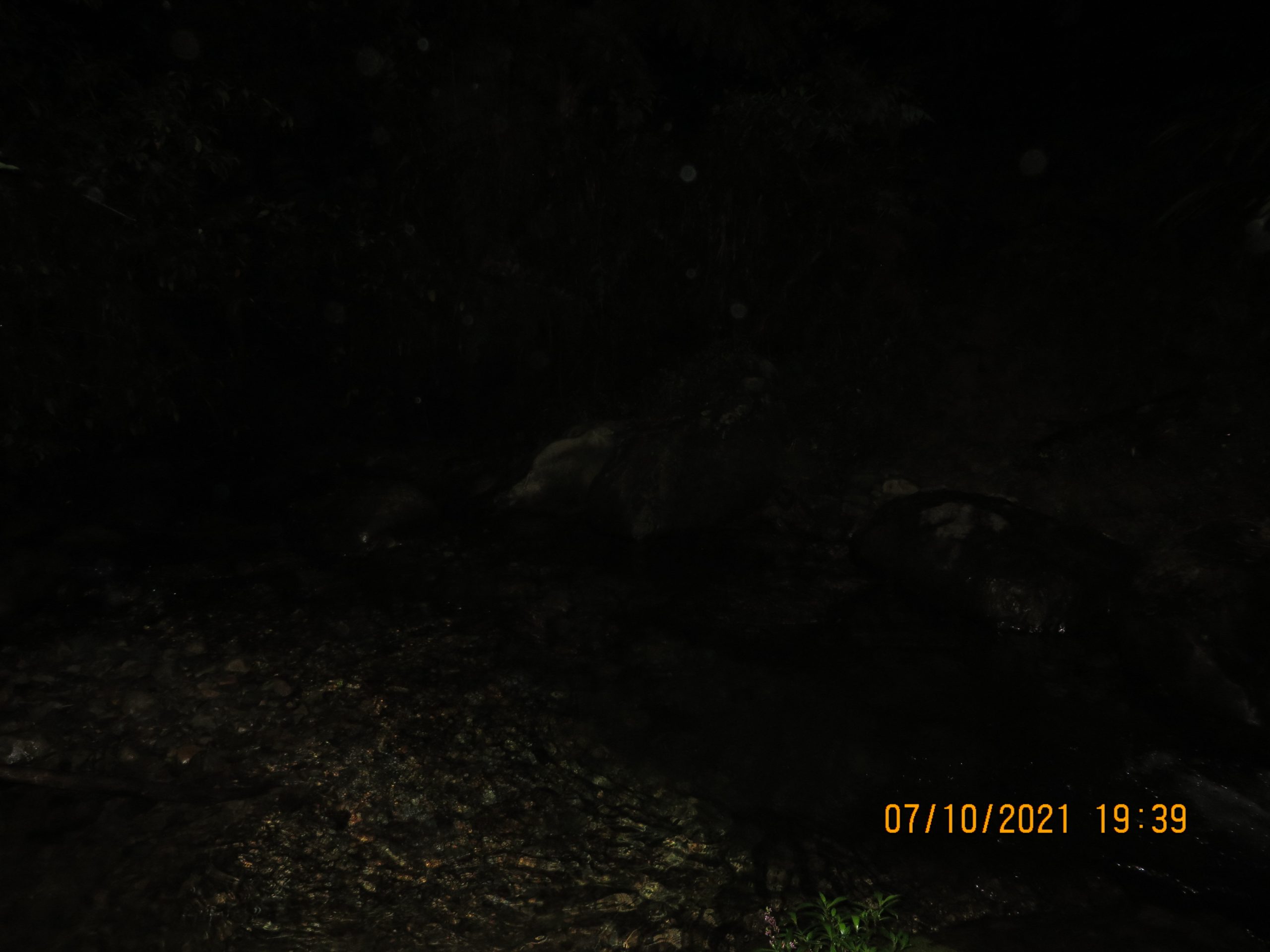

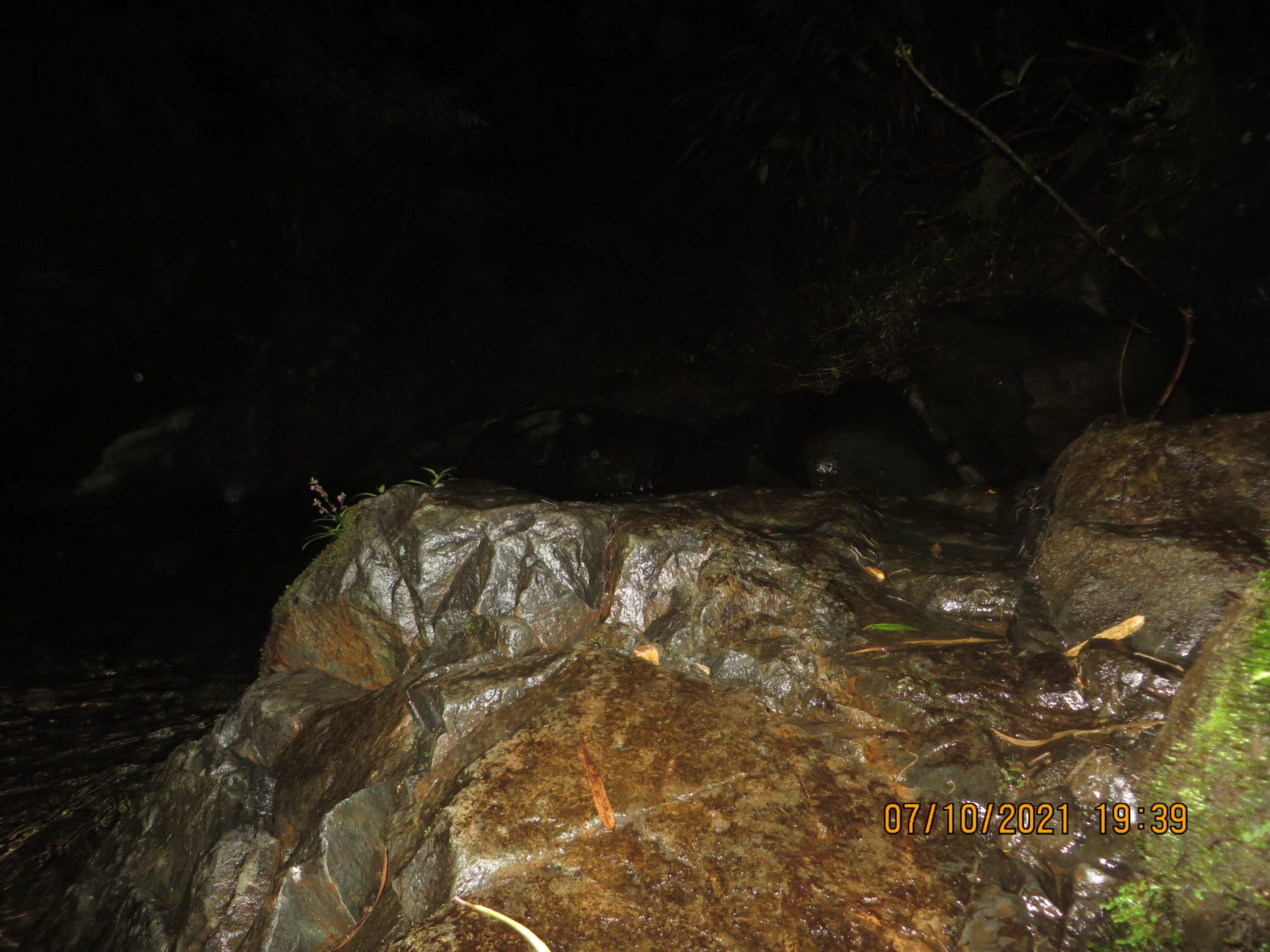
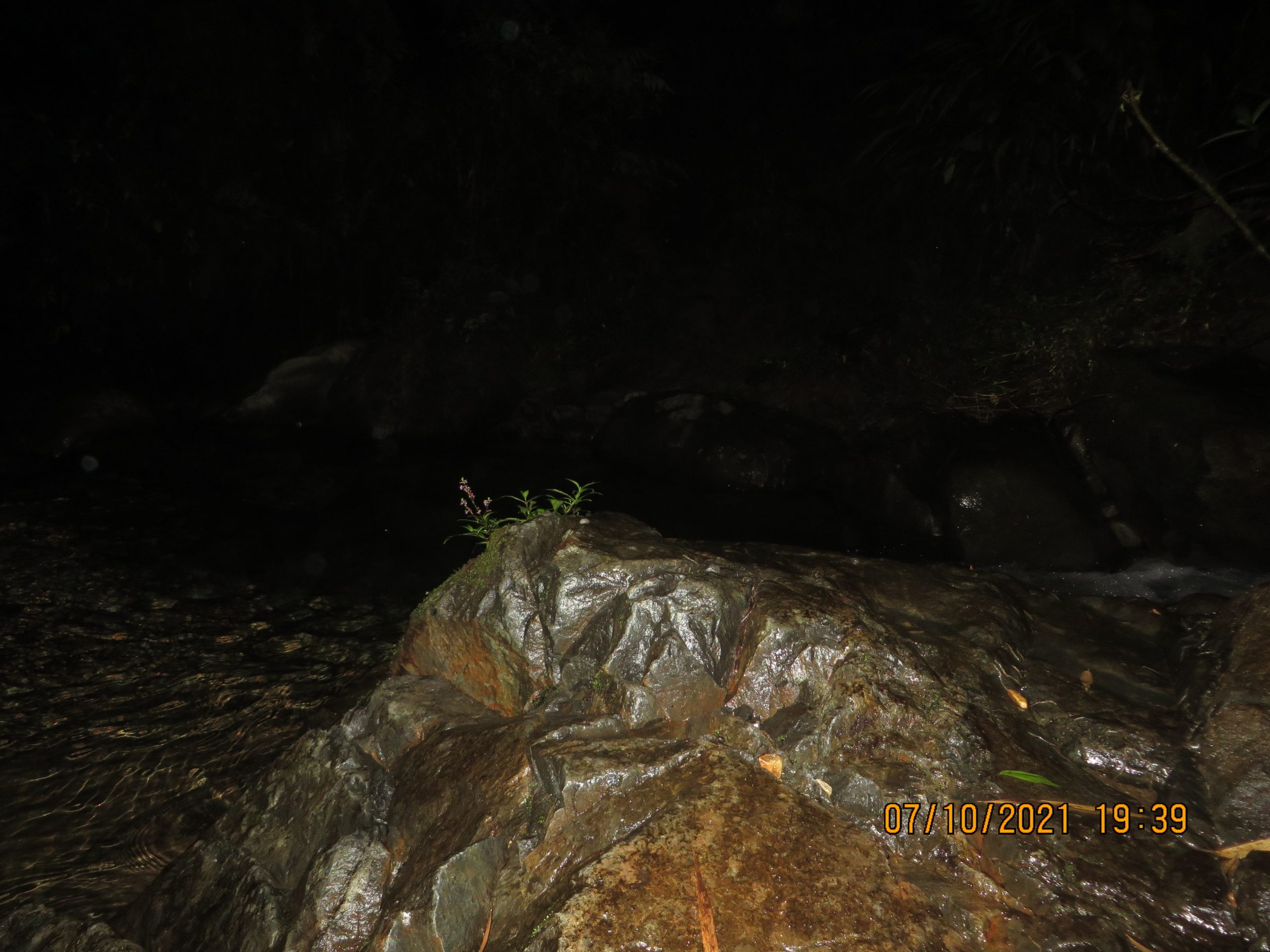
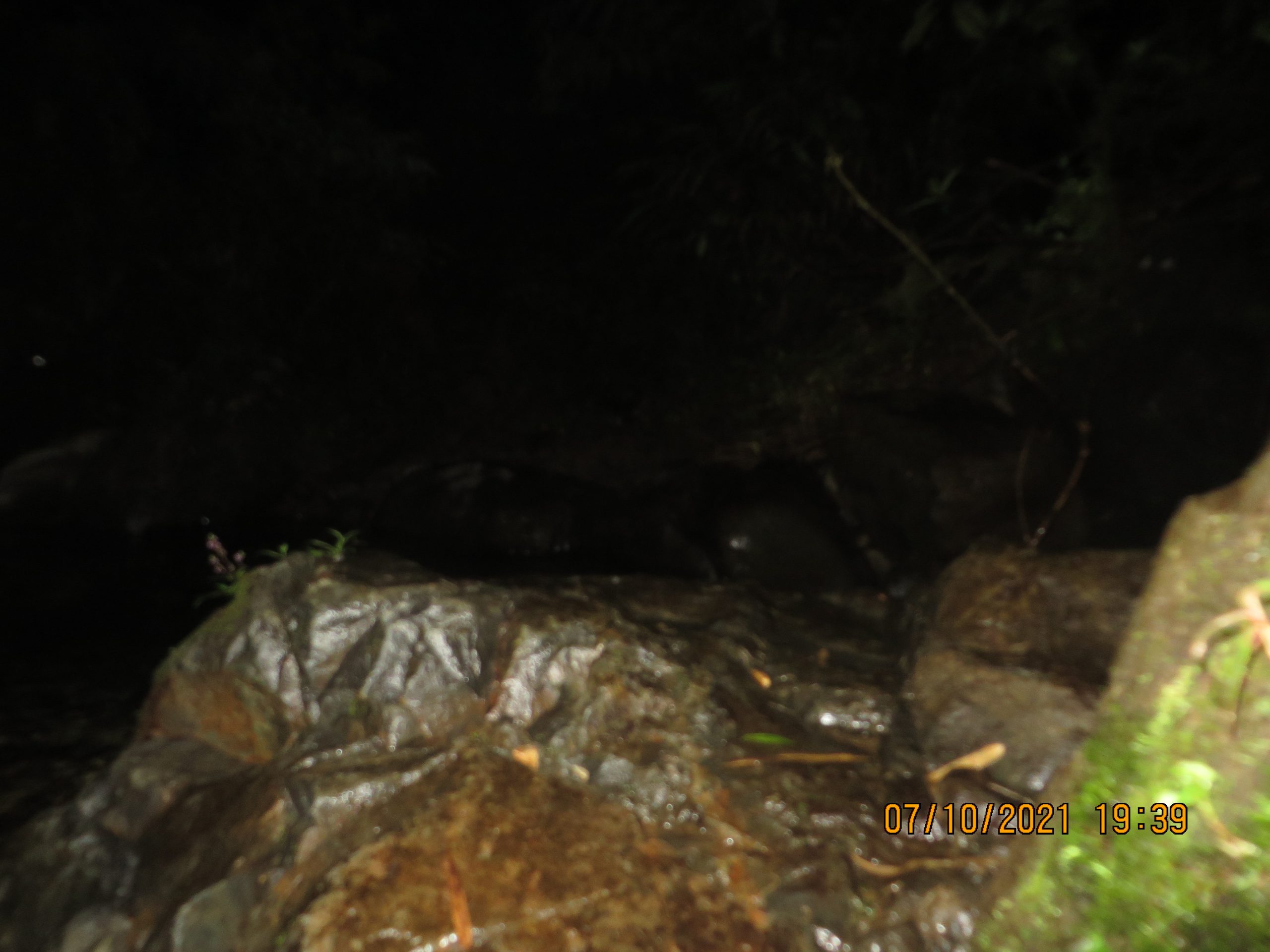
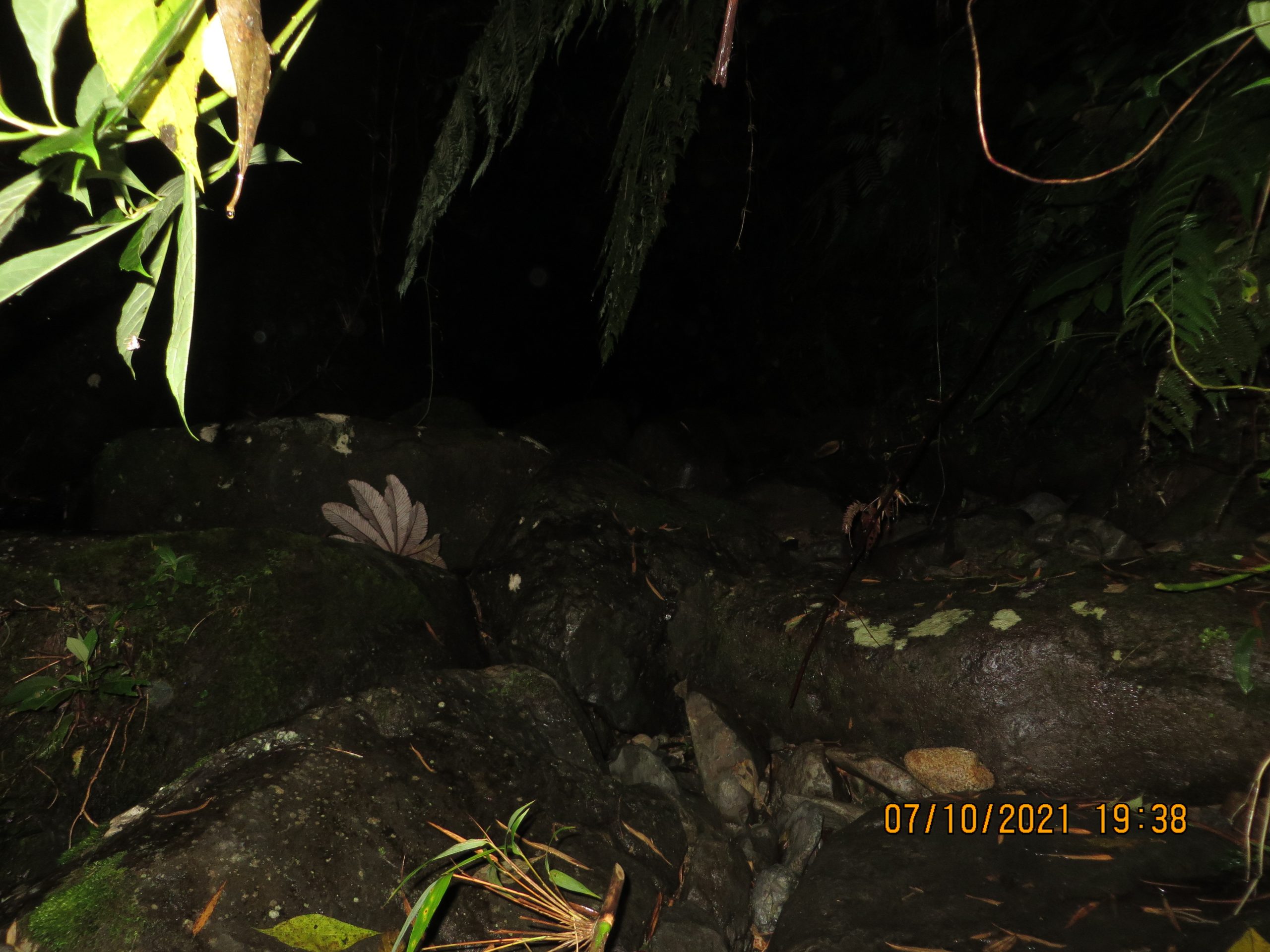
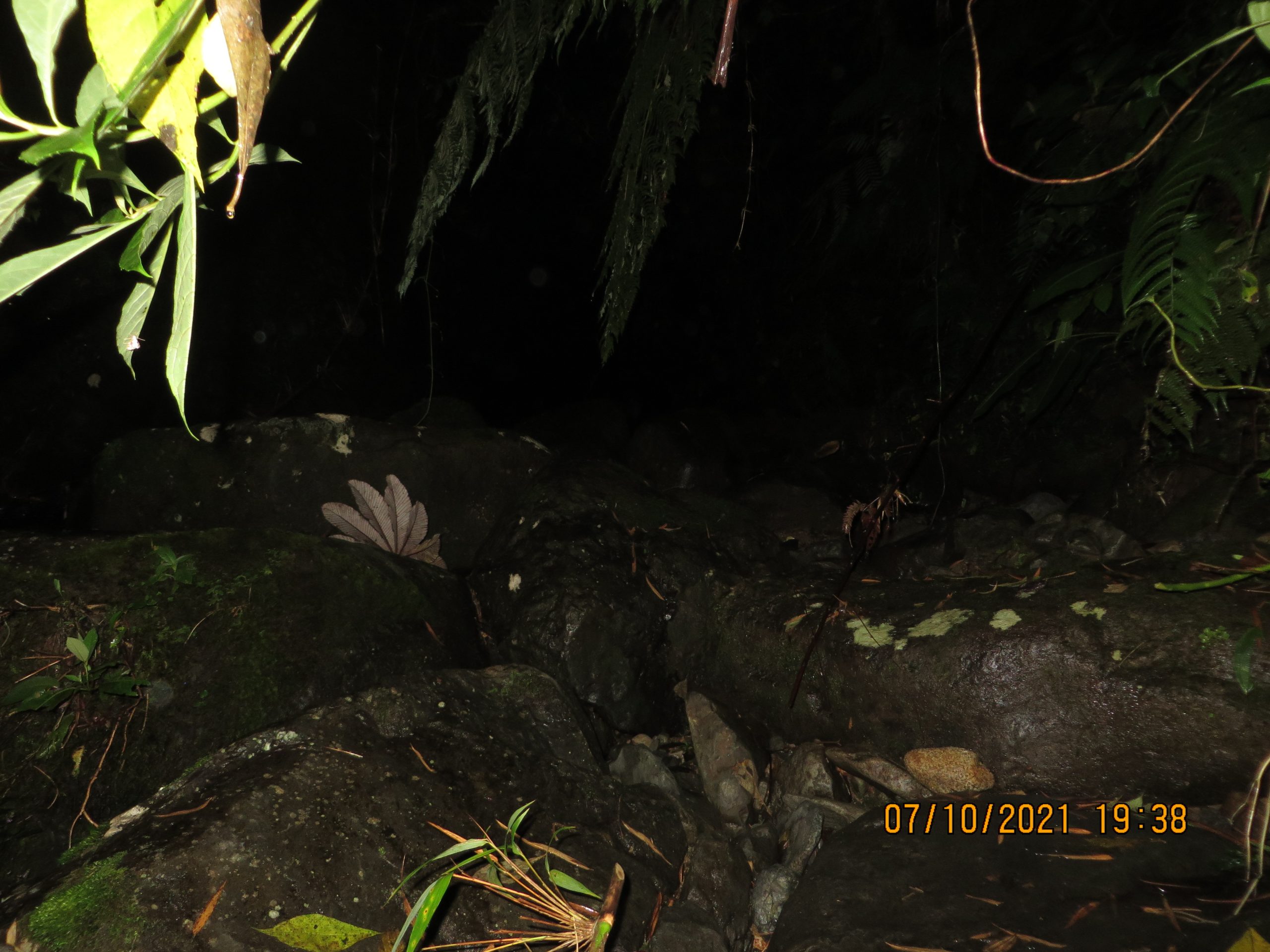

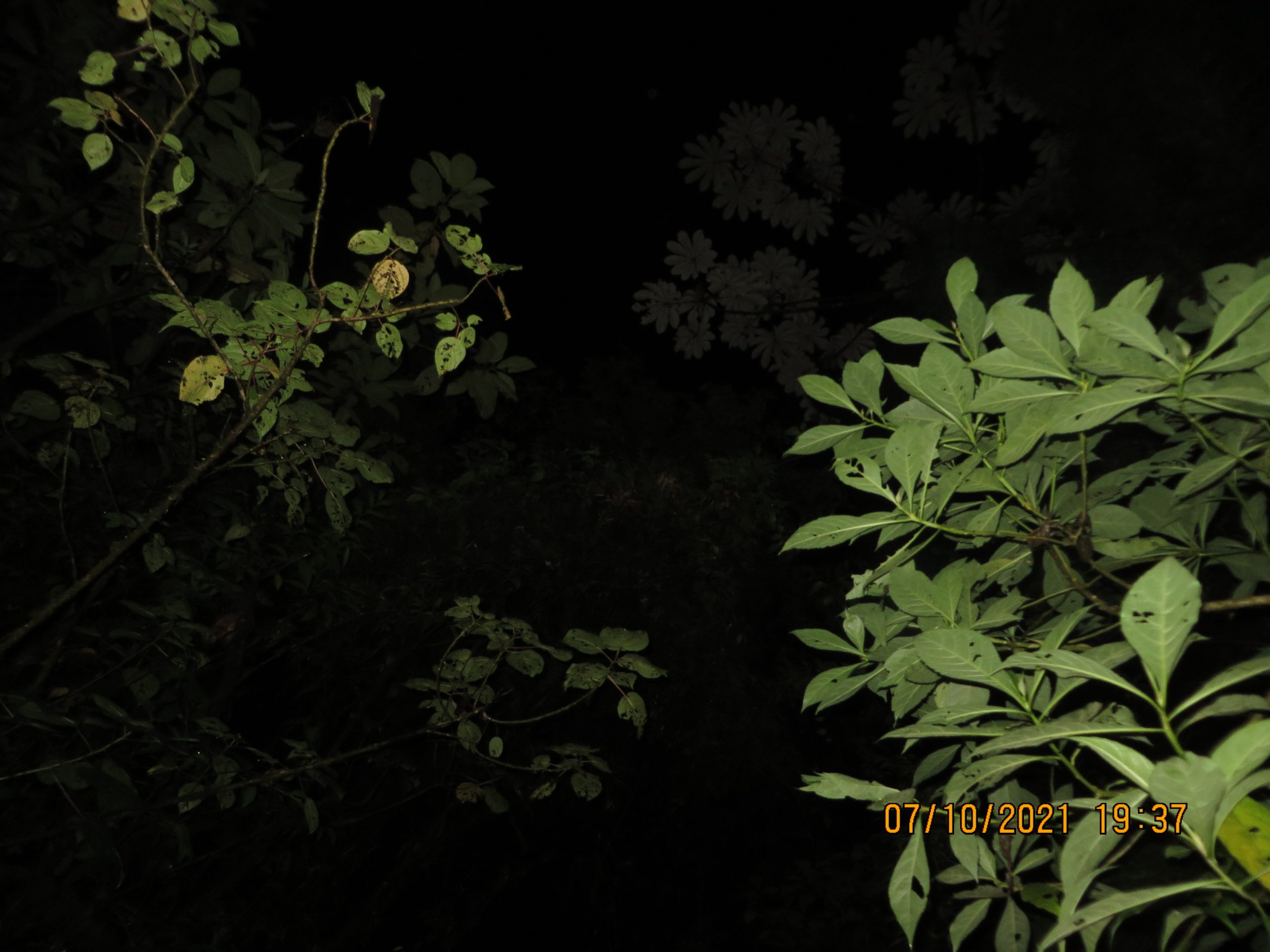

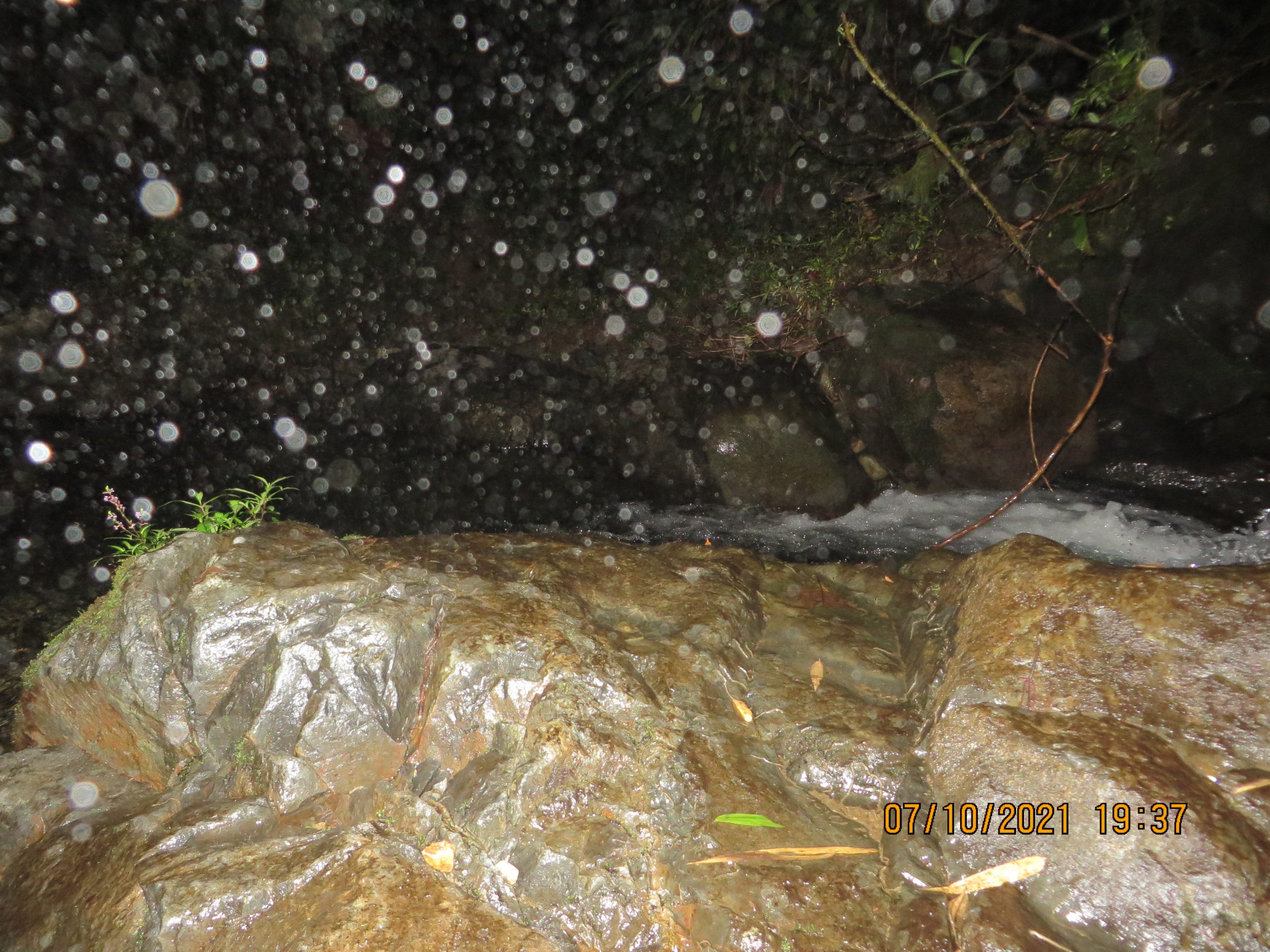
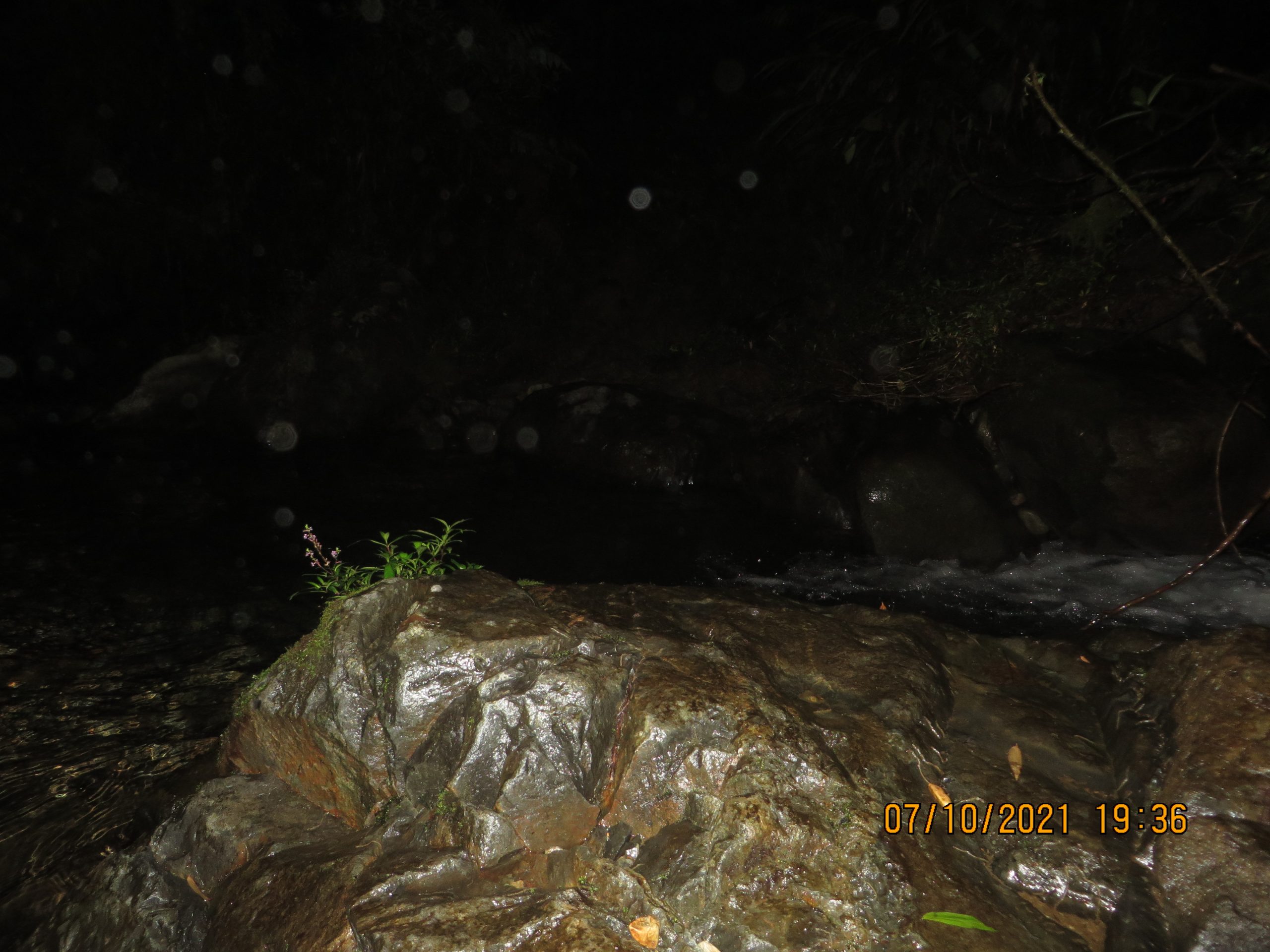
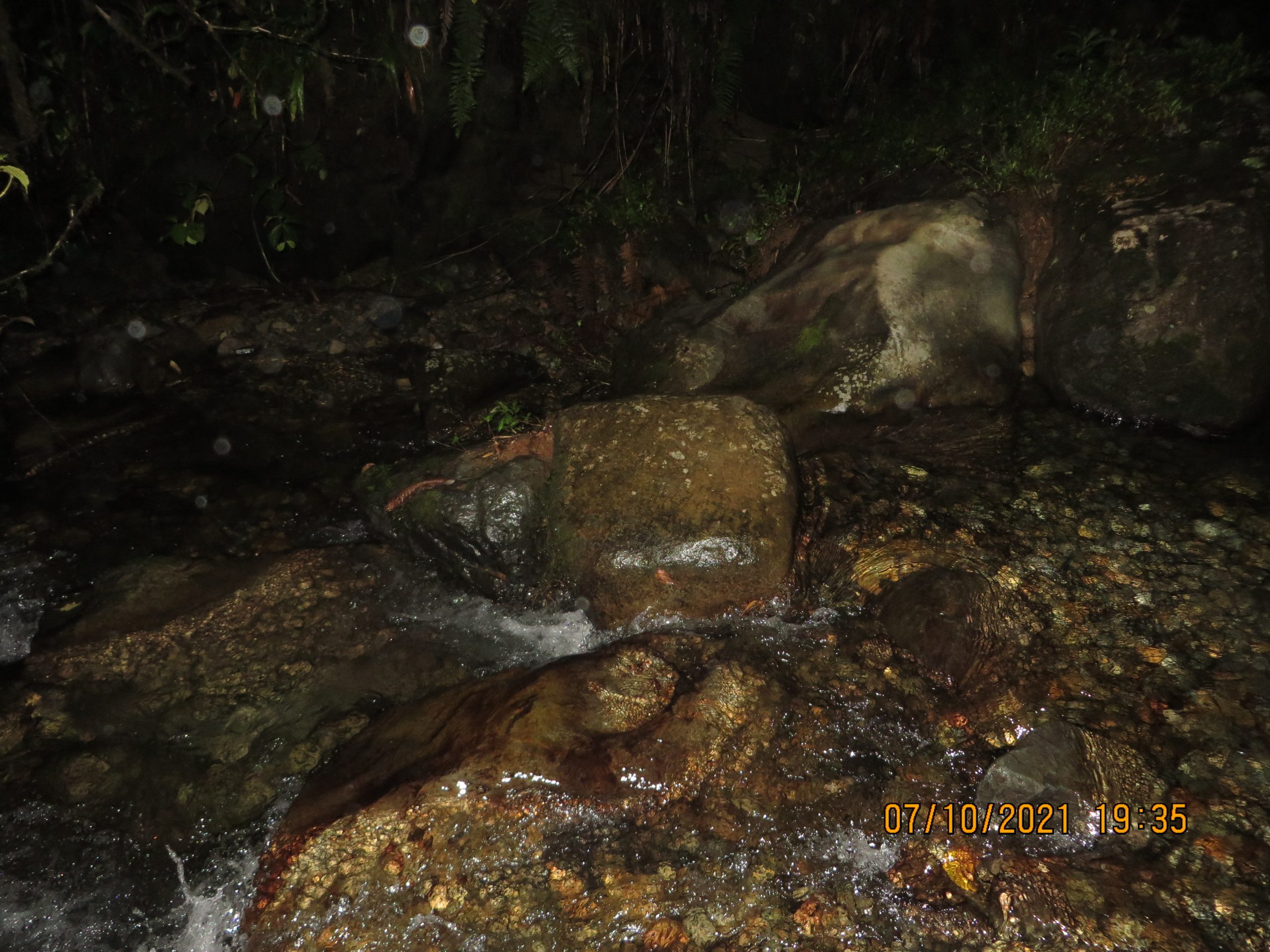
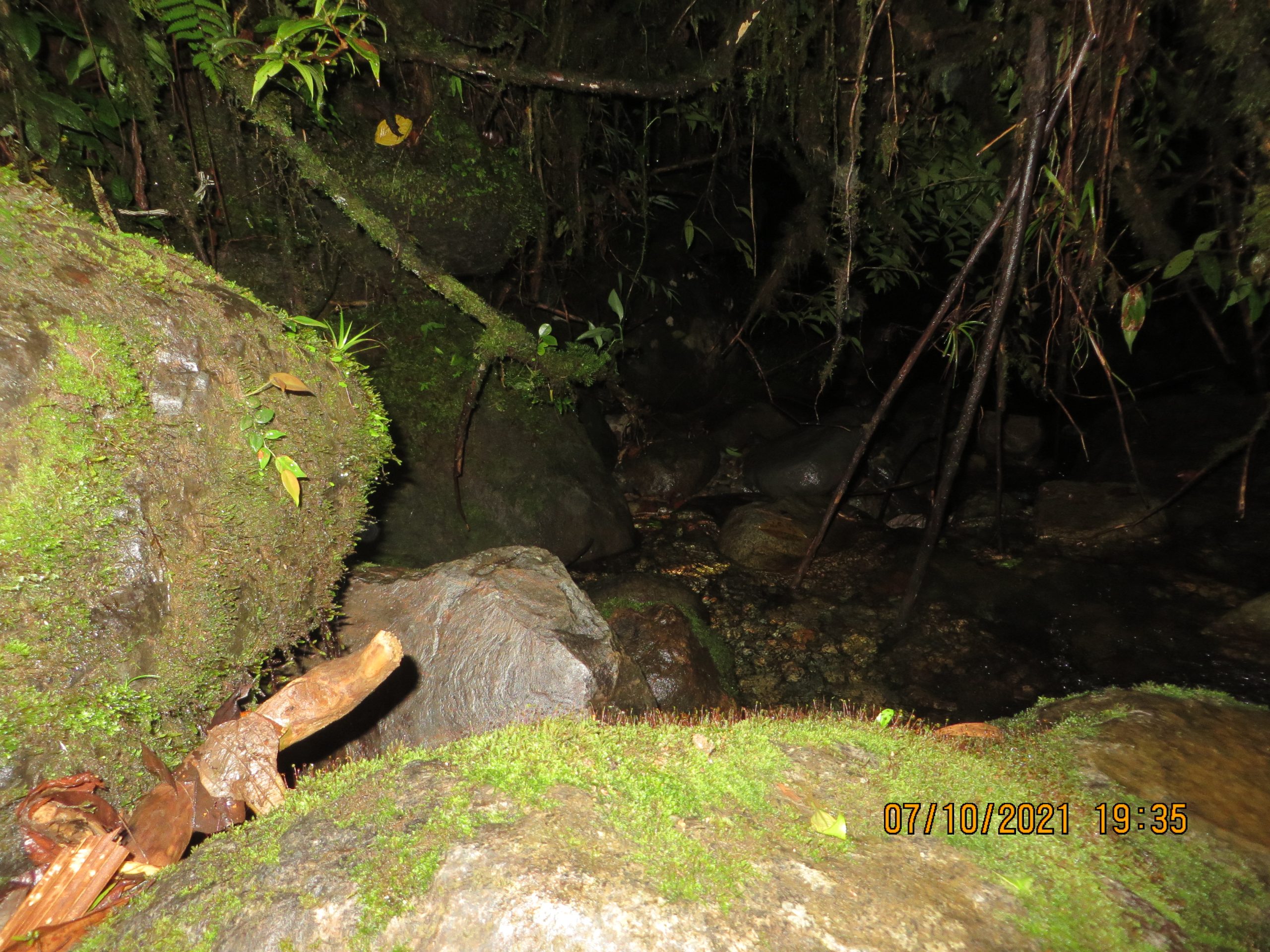
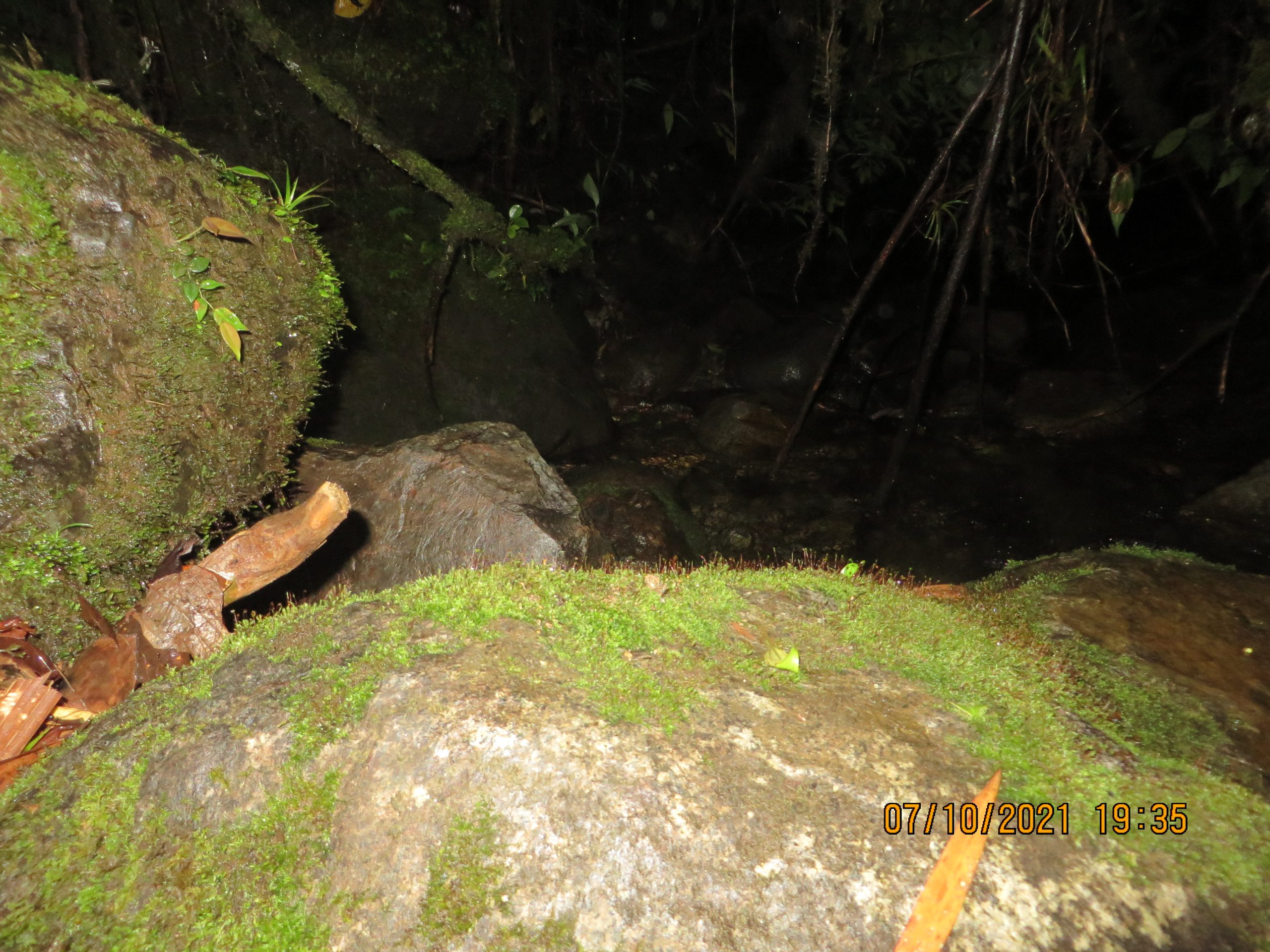
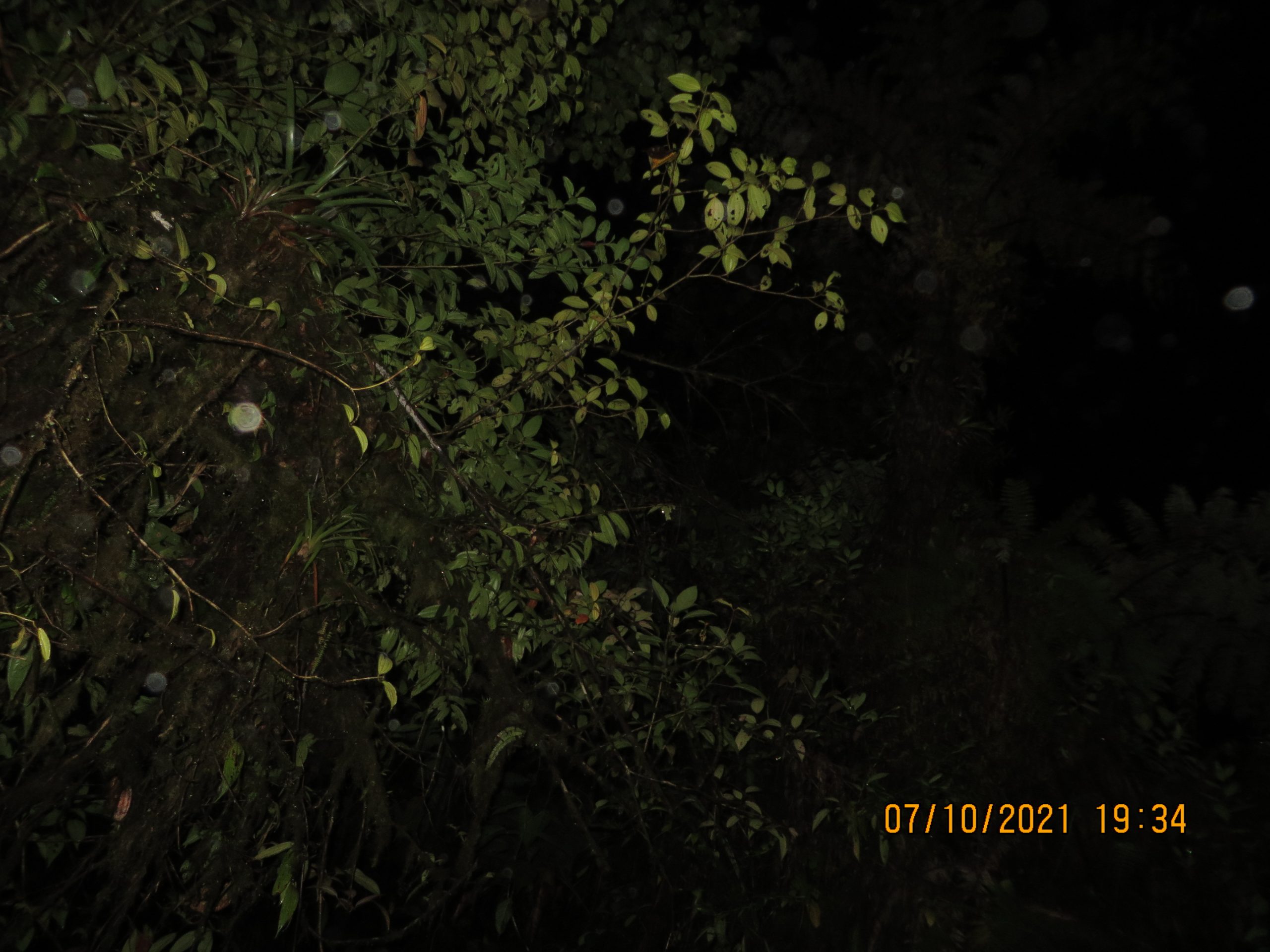
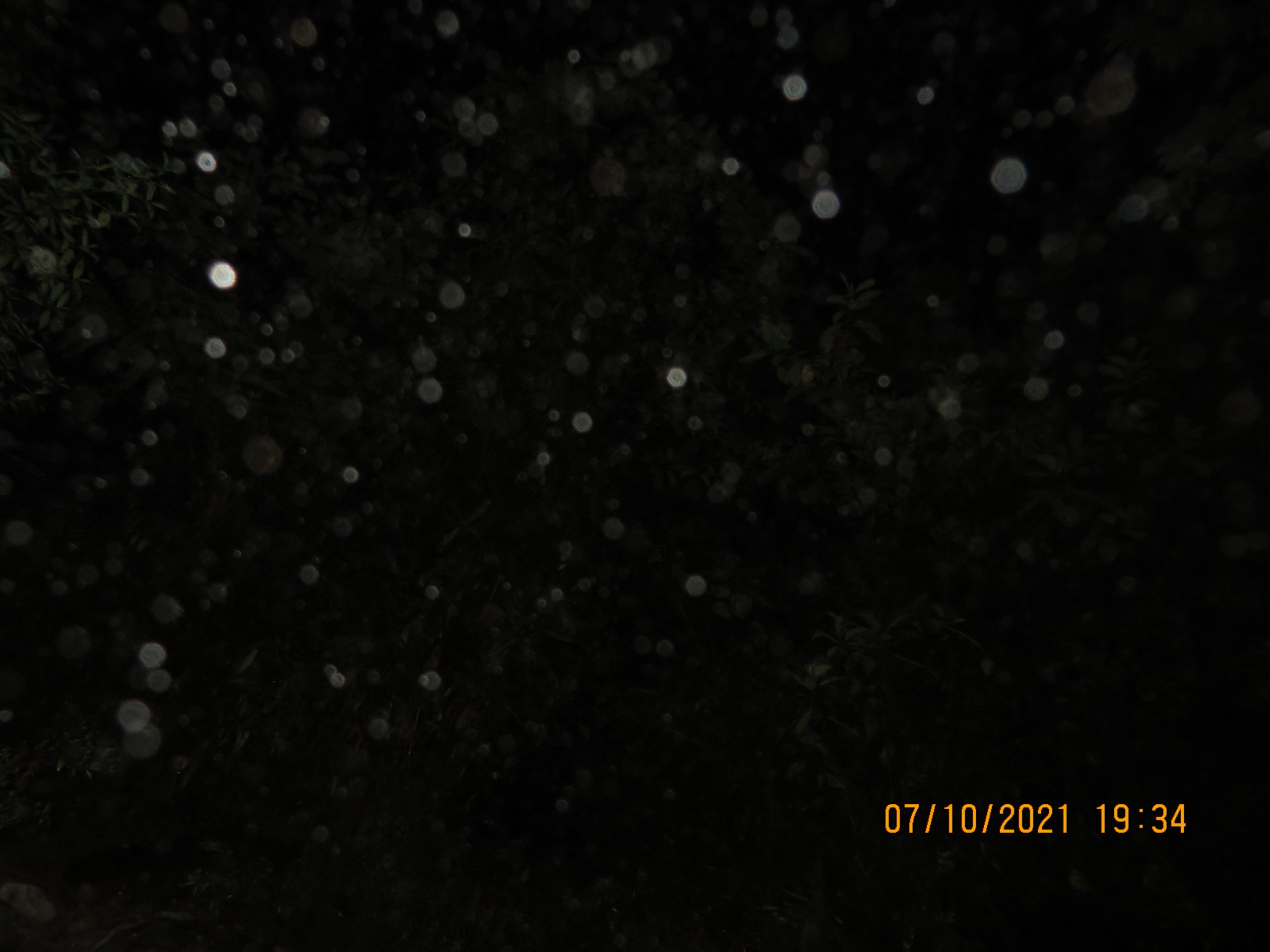

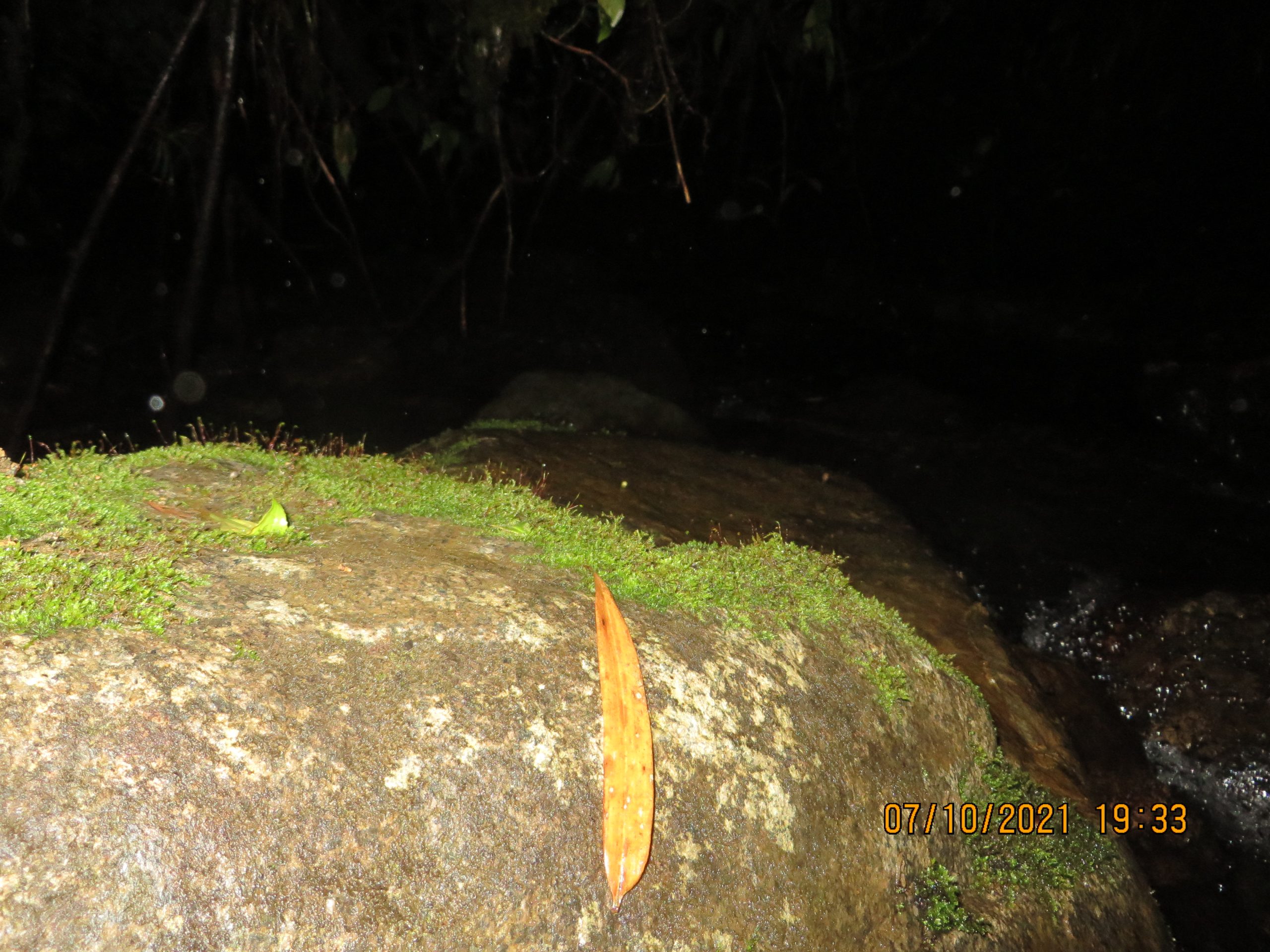
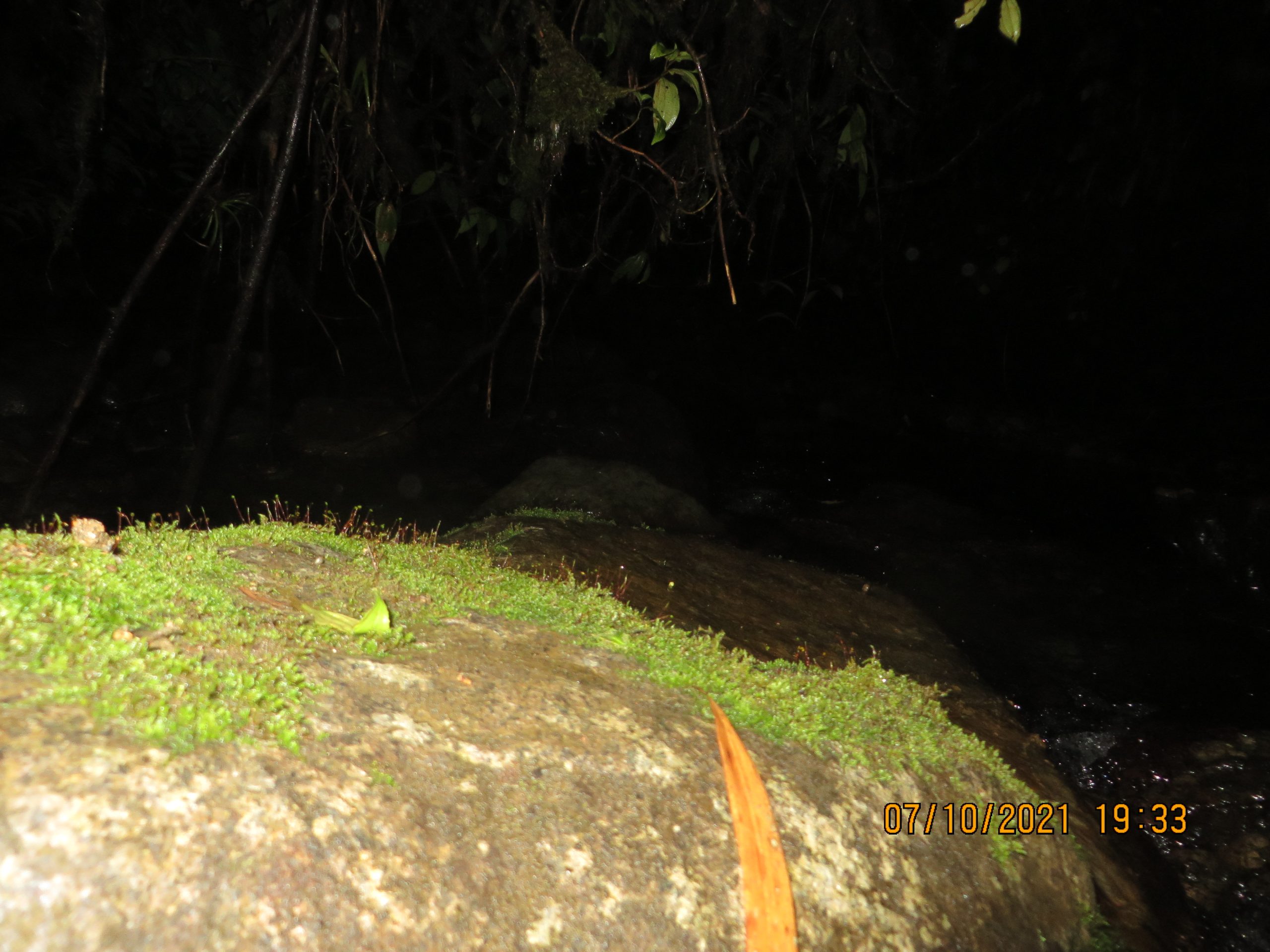
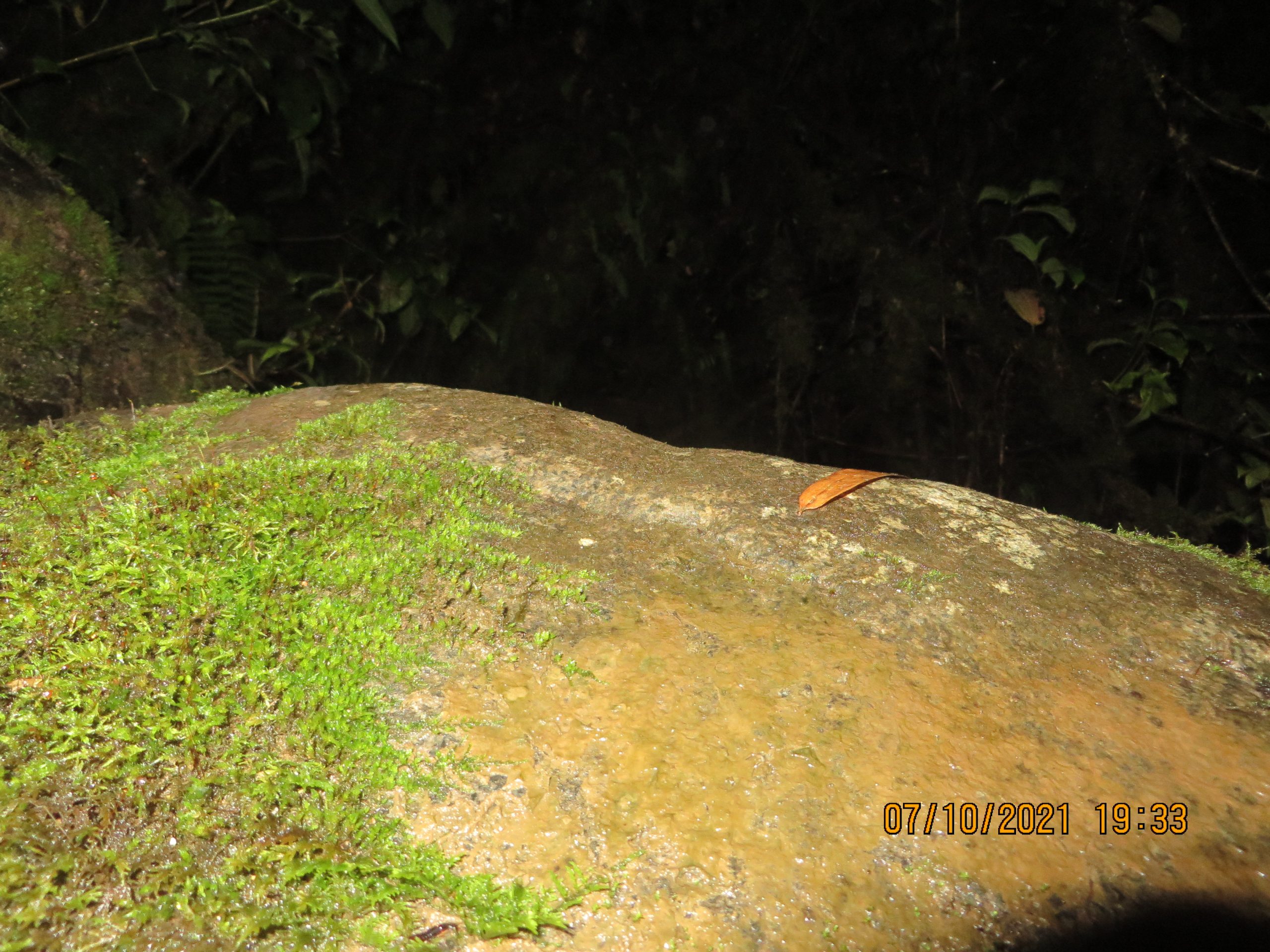
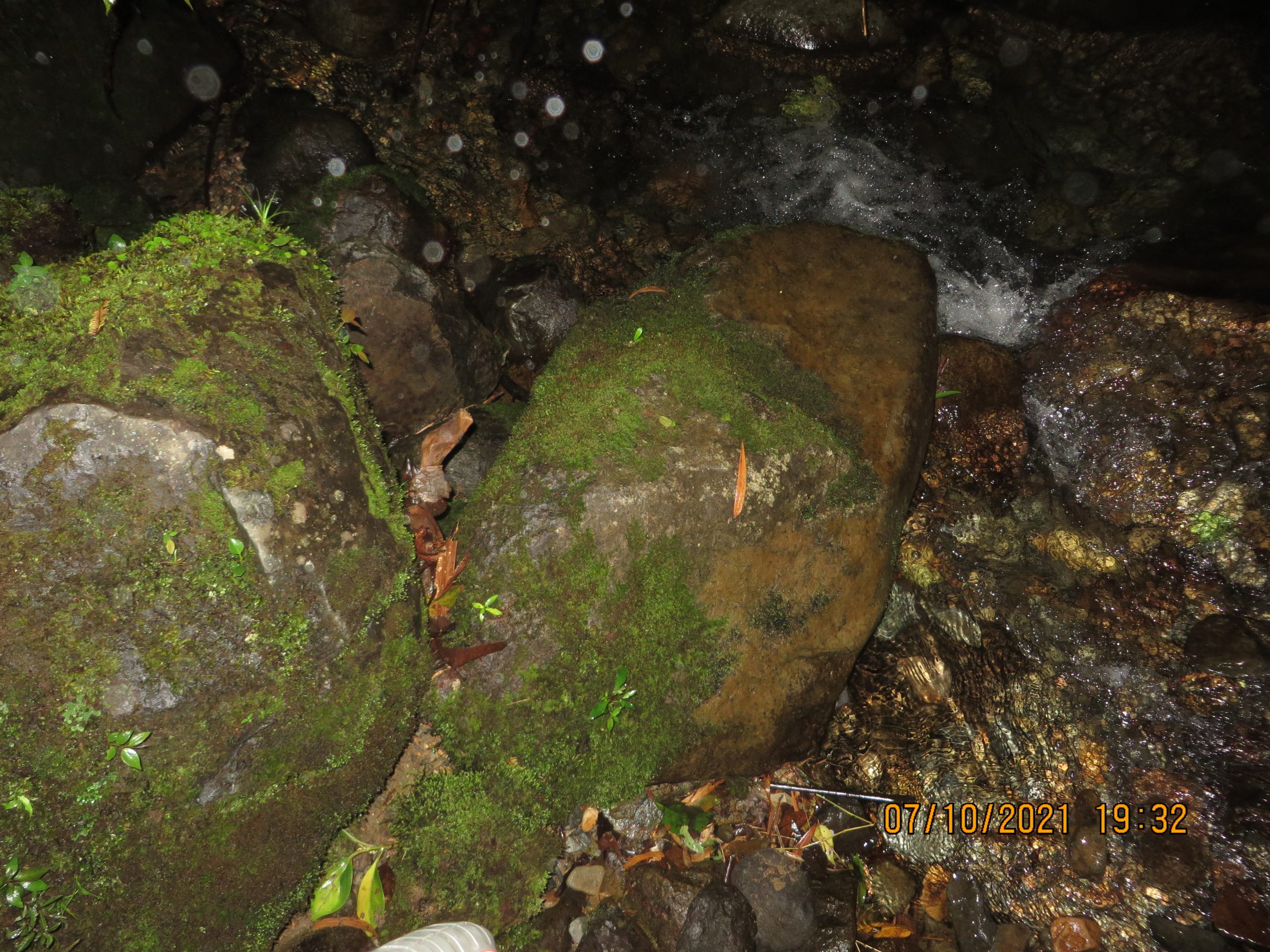
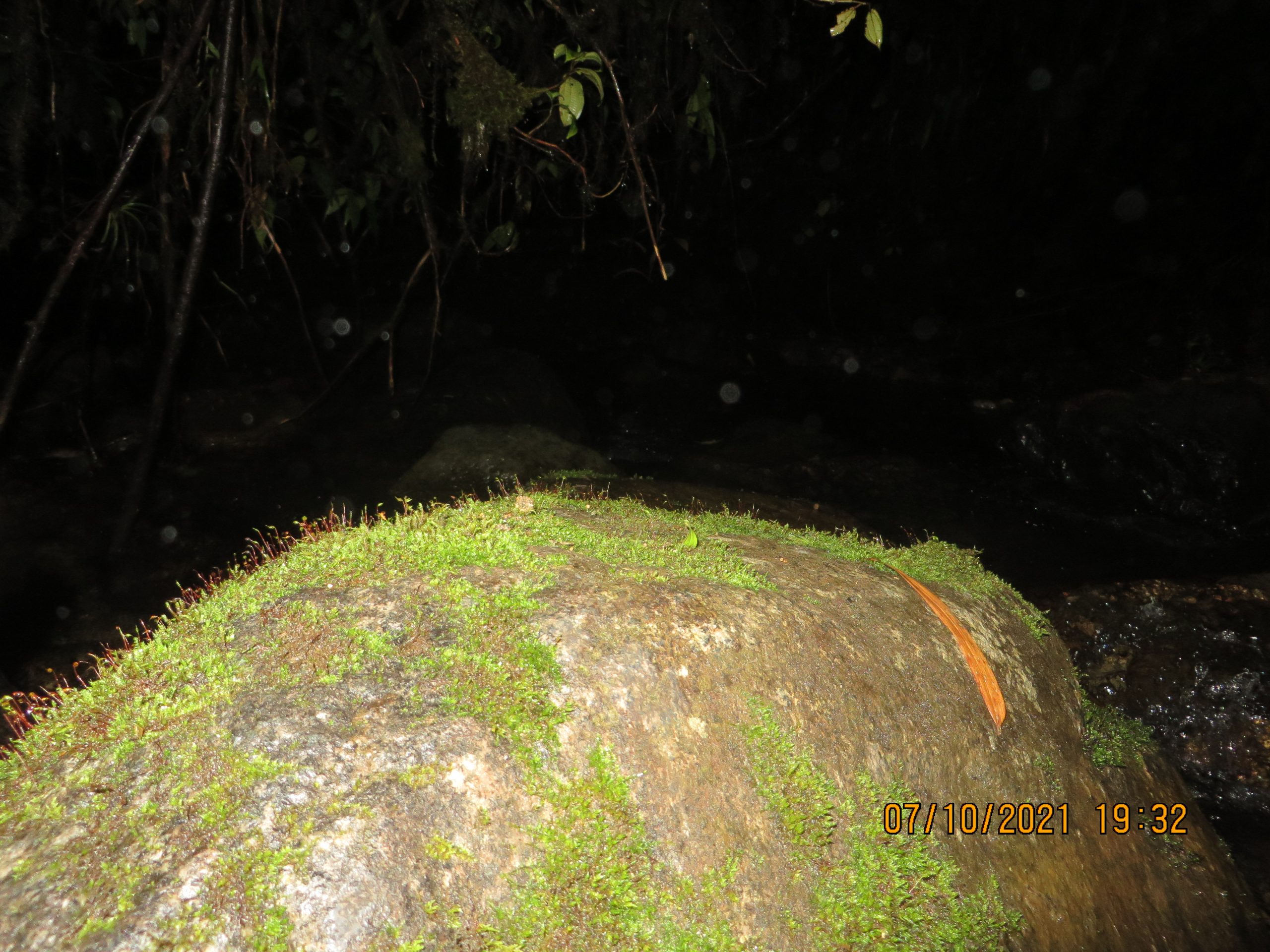
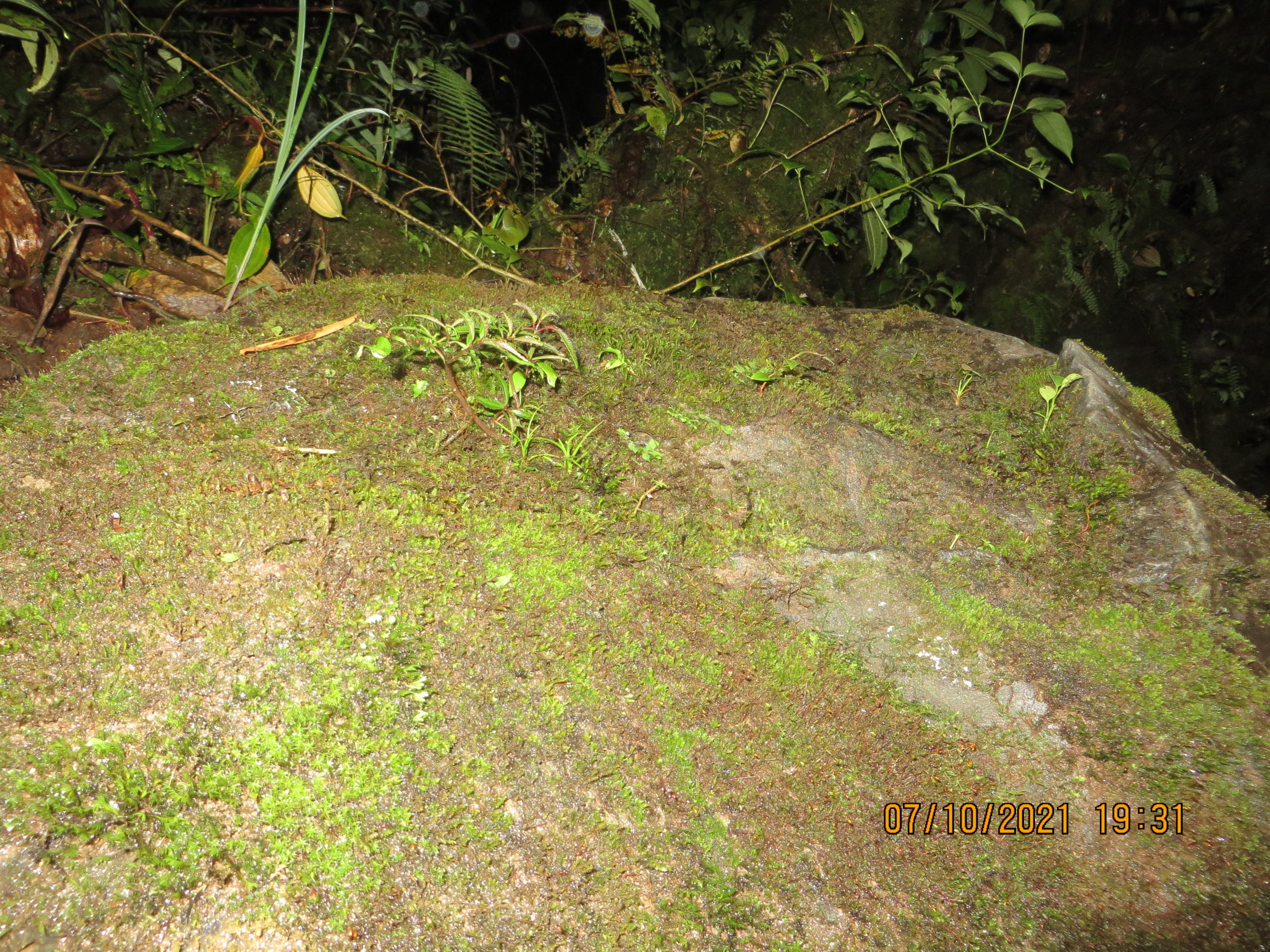
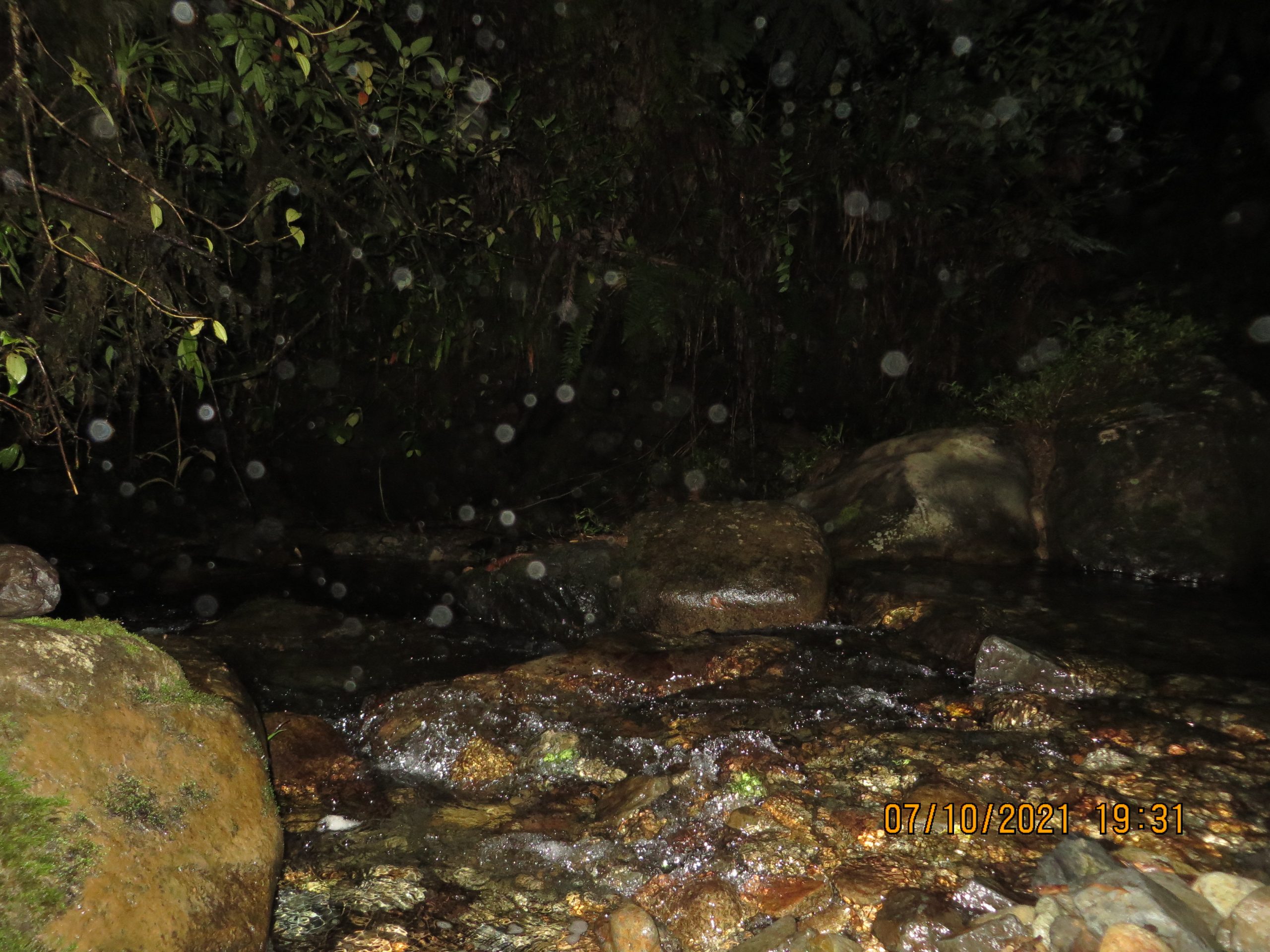
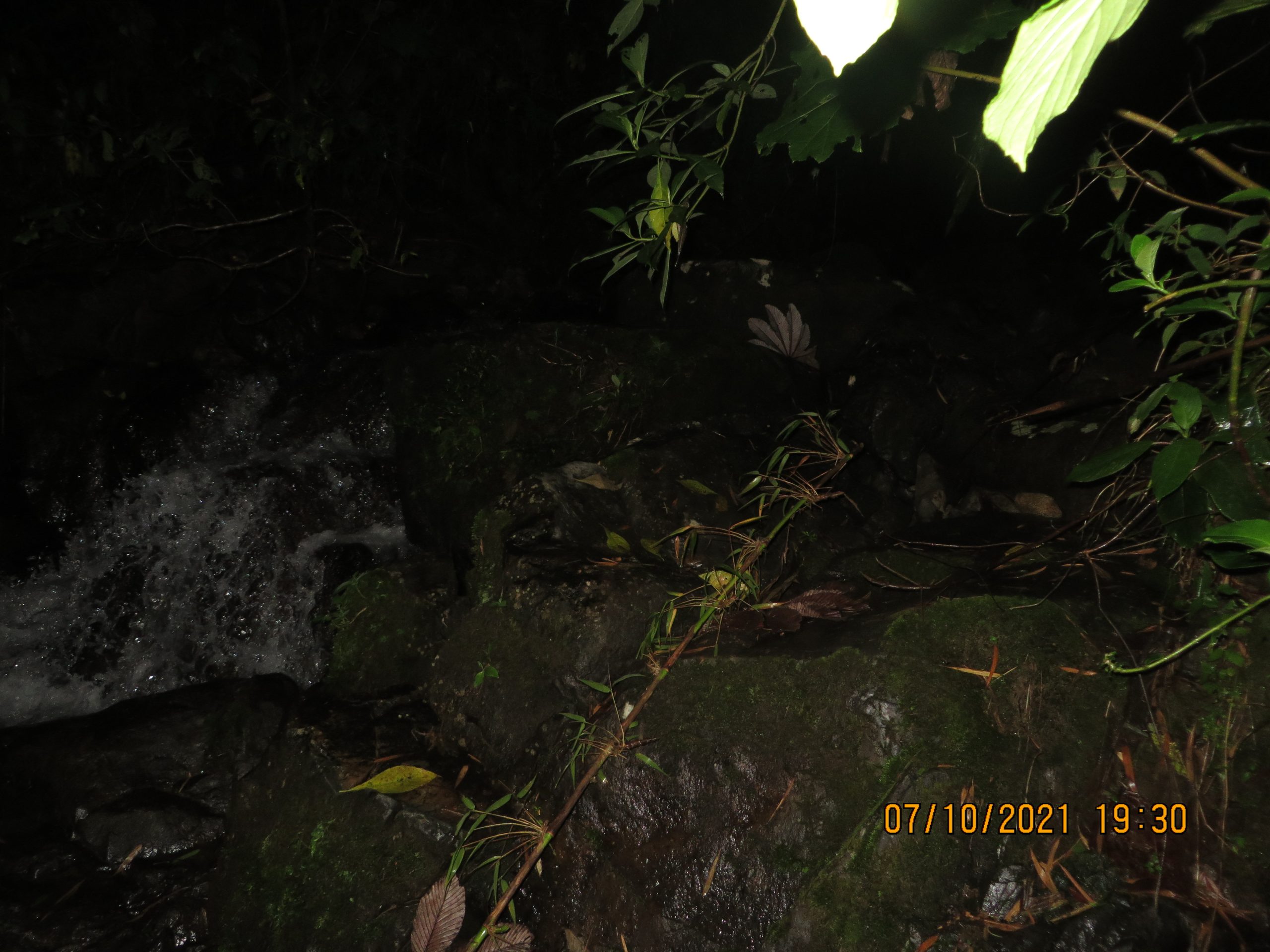
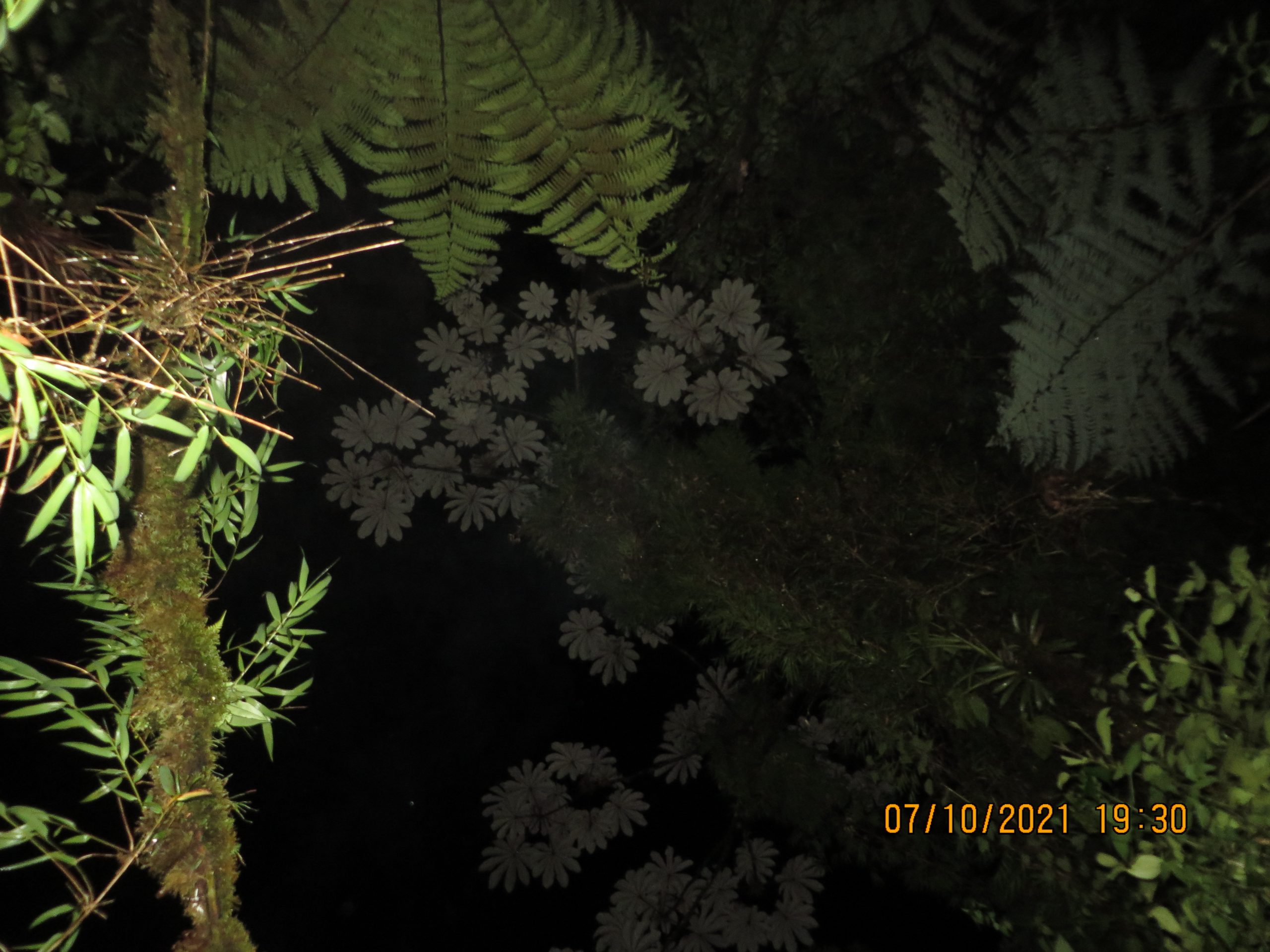
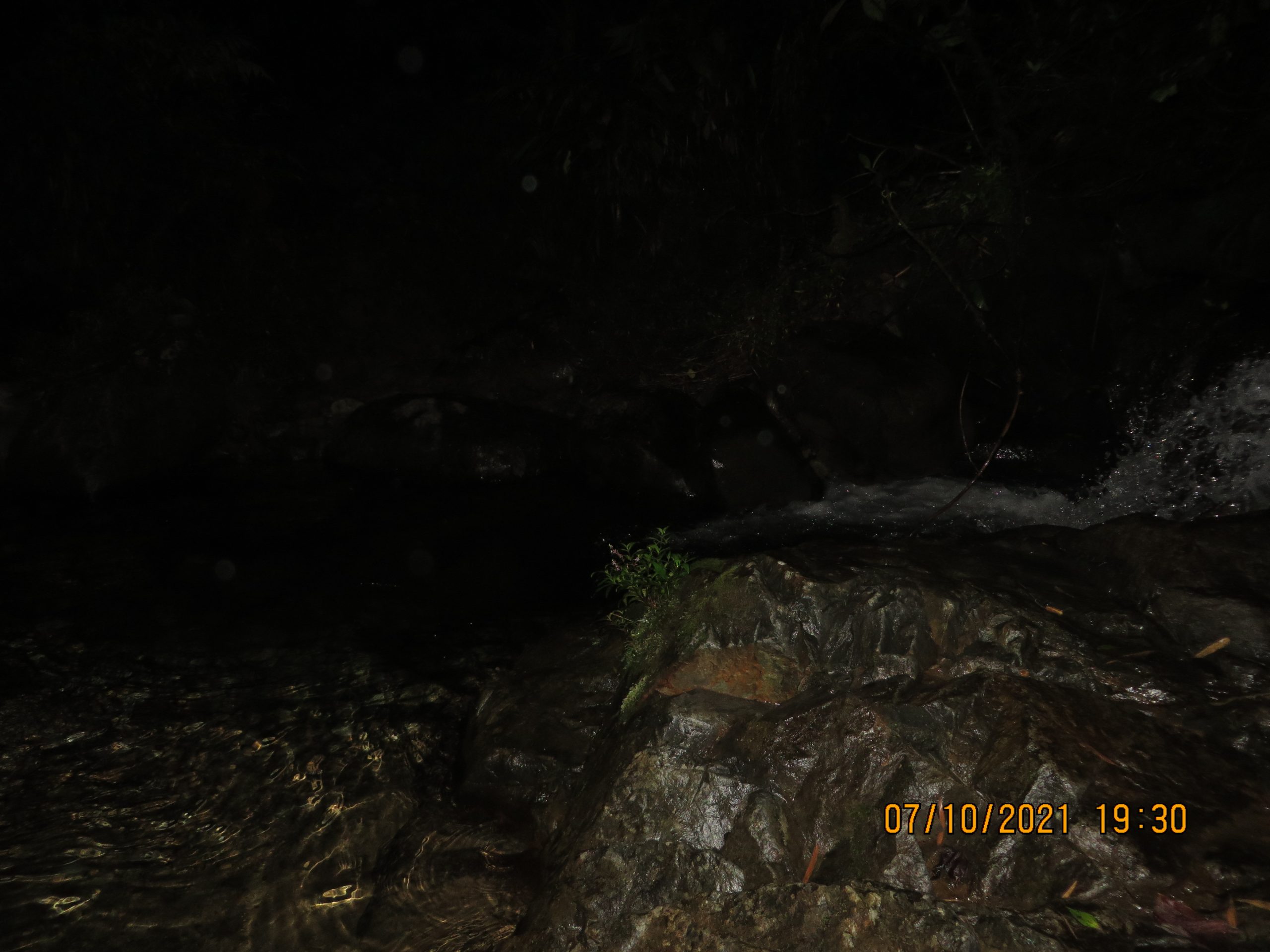
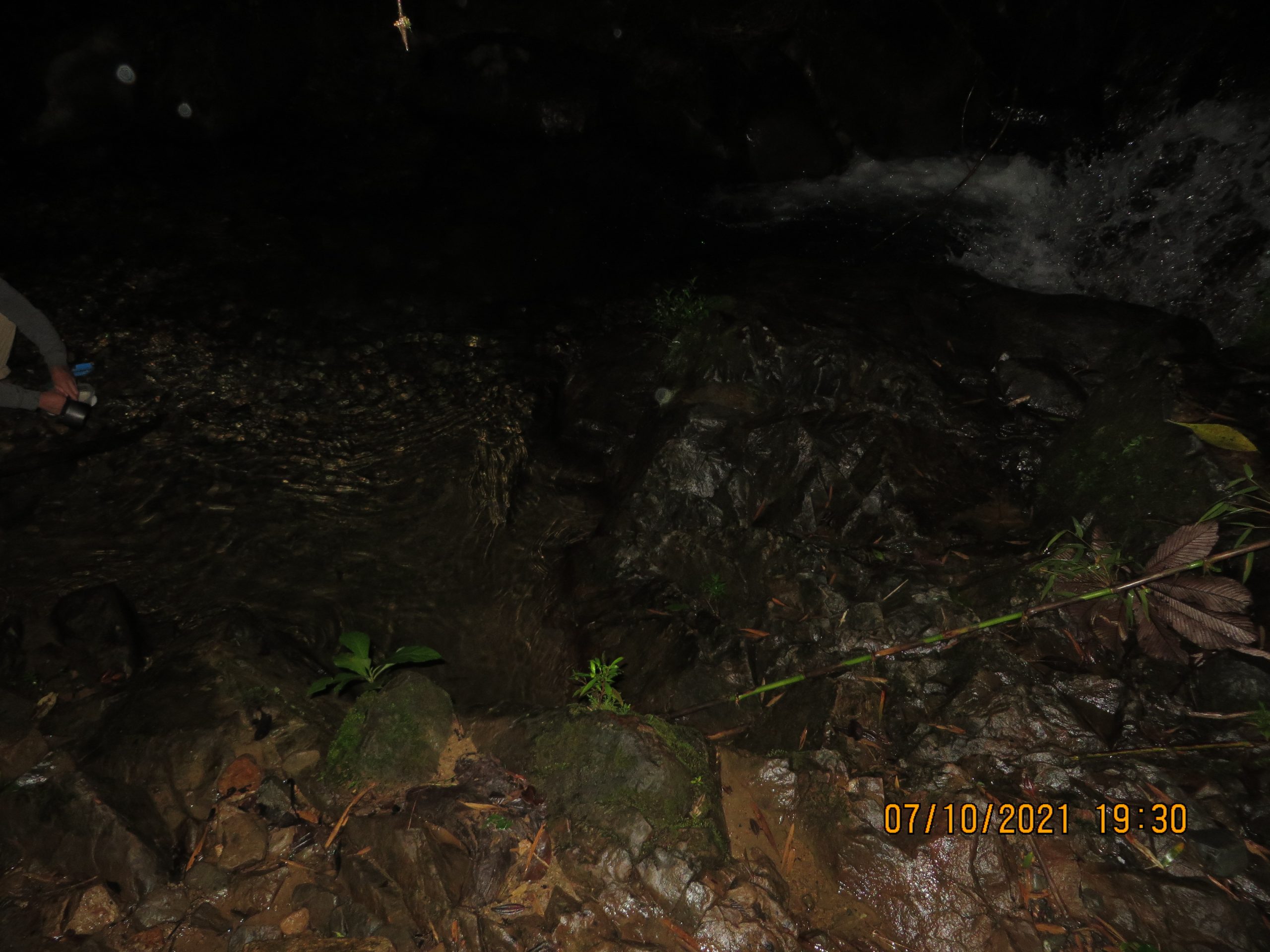
Note: I gave each photo of a caption, for the sake of identifying each photo during the following discussion portion of this article.
Most of the photos were taken lower to the ground, in a crouching-position, to mimic the original night photos of Lisanne photos. I didn’t walk far, all of the photos were taken at the same approximate location, perhaps moving a maximum of 2 meters in the same area. The goal wasn’t to photograph different locations, but rather to capture the various impacts of the surroundings on the camera in the same location.
Here are some note-worth details on some of the photos:
| Caption/Number | Camera Angle | Unique Characteristics |
|---|---|---|
| IP425 | Across the river | Last photo in series. |
| IP424 | Downward, towards the ground | Up-close photo of the ground, brightly lit |
| IP423 | Across the river | |
| IP422 | Upward towards the sky | |
| IP421 | ||
| IP420 | Black, little visibility. | |
| IP419 | Leaves, little visibility. | |
| IP418 | Likely towards the ground. | Unfocused, slightly blurry view of rocks. |
| IP417 | ||
| IP416 | Across the river | Water droplets, large orbs visible (appearing to have more detail than orbs in other photos). |
| IP415 | Black, little visibility. | |
| IP414 | Black, little visibility. | |
| IP413 | ||
| IP412 | ||
| IP411 | ||
| IP410 | Toward the bank of the river. | Bank of the river (many boulders). |
| IP409 | ||
| IP408 | ||
| IP407 | ||
| IP406 | Across the river | Reflection of light on rocks/boulder. |
| IP405 | Across the river | Reflection of light on rocks/boulder. |
| IP404 | Across the river | Reflection of light on rocks/boulder. |
| IP403 | Across the river | |
| IP402 | Across the river | |
| IP401 | Across the river | Small waterfall |
| IP400 | Upward towards the sky | Displays the underside of tree/bush leaves. |
| IP399 | Upward towards the sky | |
| IP398 | Strong reflection off rocks shows heavy suspended water droplets/orbs | |
| IP397 | Water droplets, orbs visible | |
| IP396 | Water droplets, orbs visible | |
| IP395 | ||
| IP394 | ||
| IP393 | Upward towards the sky | Displays the underside of tree/bush leaves |
| IP392 | Water droplets, orbs visible | |
| IP391 | Across river. | Water droplets, orbs visible |
| IP390 | Boulder with vegetation. | |
| IP389 | Boulder with vegetation. | |
| IP388 | Boulder with vegetation. | |
| IP387 | Water droplets, orbs visible. Boulder(s) with vegetation. | |
| IP386 | Boulder with vegetation. | |
| IP385 | Boulder with vegetation. | |
| IP384 | Across the river, facing downstream (to the left). | Water droplets, orbs visible |
| IP383 | Across the river, facing upstream (to the right). | |
| IP382 | Upward towards the sky | Shows underside of plants, leaves and trees |
| IP381 | Across the river | |
| IP380 | Camera facing downward, pointed at the river below. | First photo in series. Taken from high on the ledge above the river bank. |
Photo Set #2: Where The Stream Intersects The First Monkey Bridge
Romain opted to take our other night-photos on another smaller stream. This time, he took pictures of the stream that merges with the first monkey bridge.
Photo Set #2 Technical Notes:
Time Taken: From 7:26PM to 7:59PM
Date Taken: March 25, 2022
Location: First Monkey Bridge
Camera: Canon Powershot SX270 HS
Camera Setting: Automatic, zoom not used.
Number of photos: 129 Photos
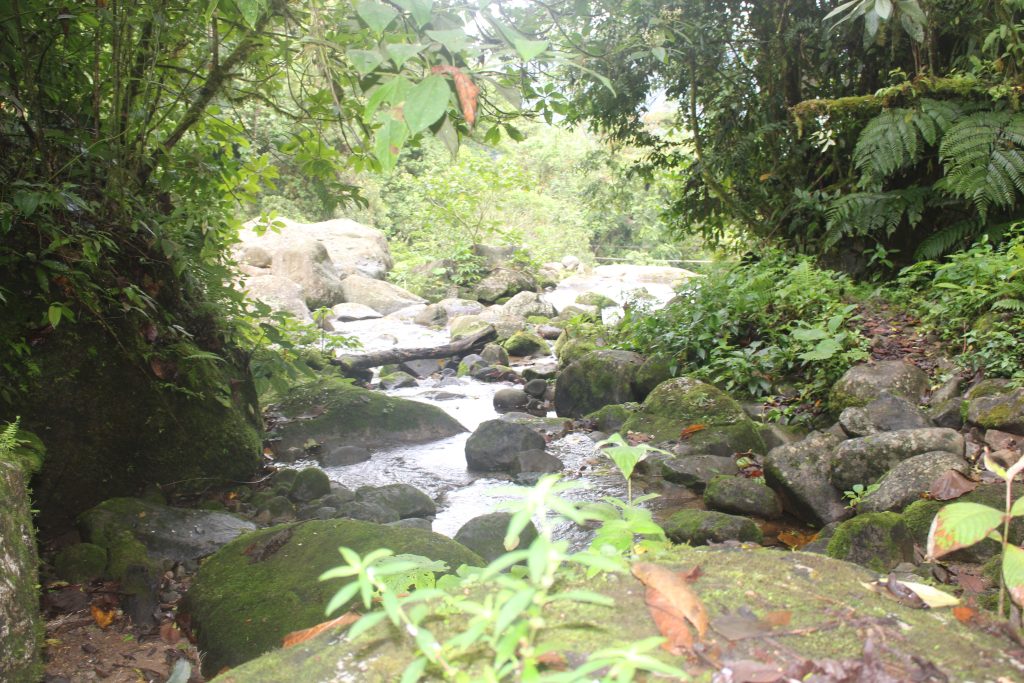
The Photos Romain Captured (Set #2)
Below you’ll find the next set of photos we captured.
The camera was carried in Romain’s backpack for 5 days before the following night-photos were taken.
You’ll notice that our photos differ from Kris and Lisanne’s photos. Even though the season is the same, it rained quit a lot during the days prior to taking these photos. This effort provided some helpful insights which we’ll discuss below the photos.
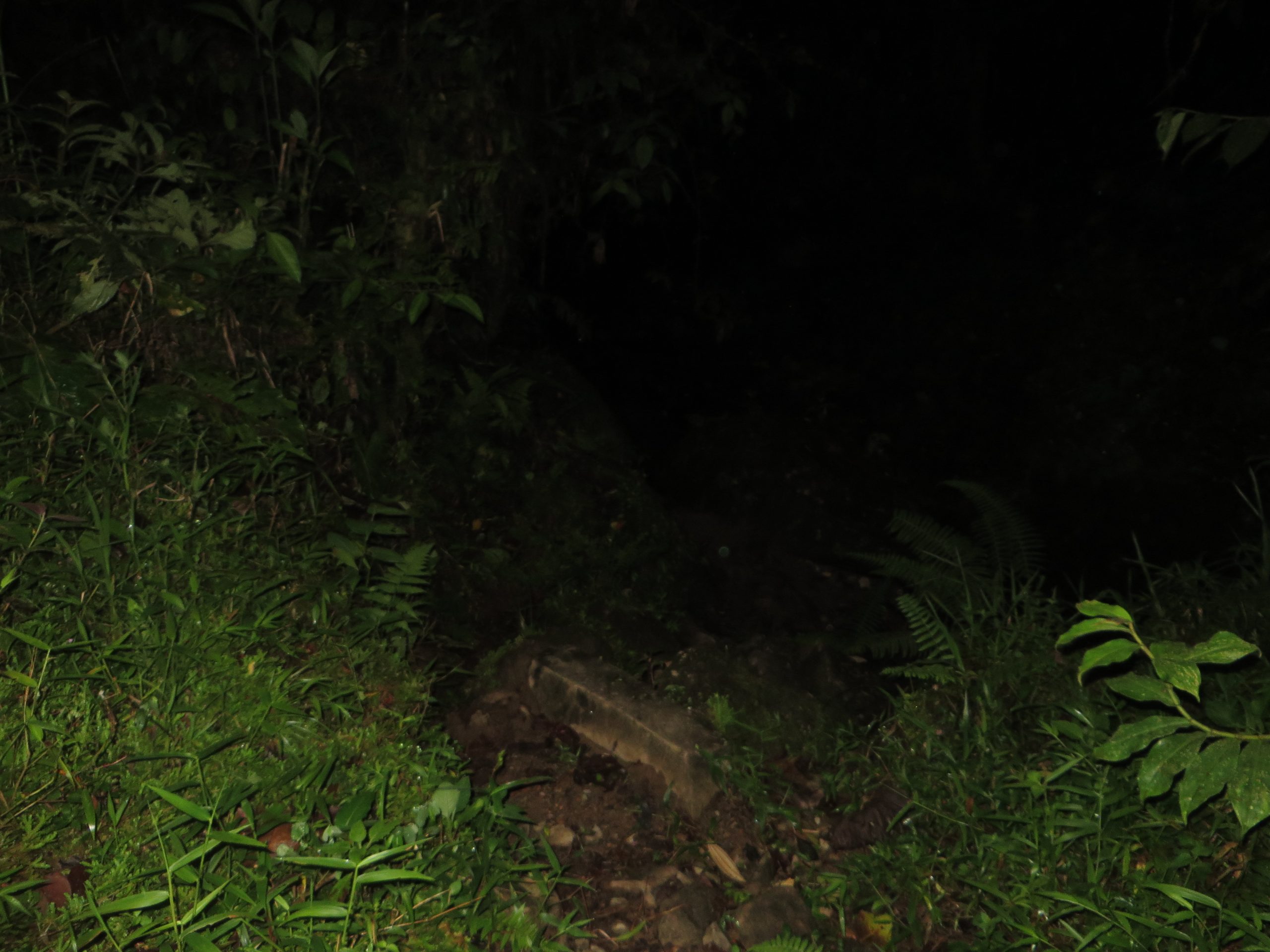
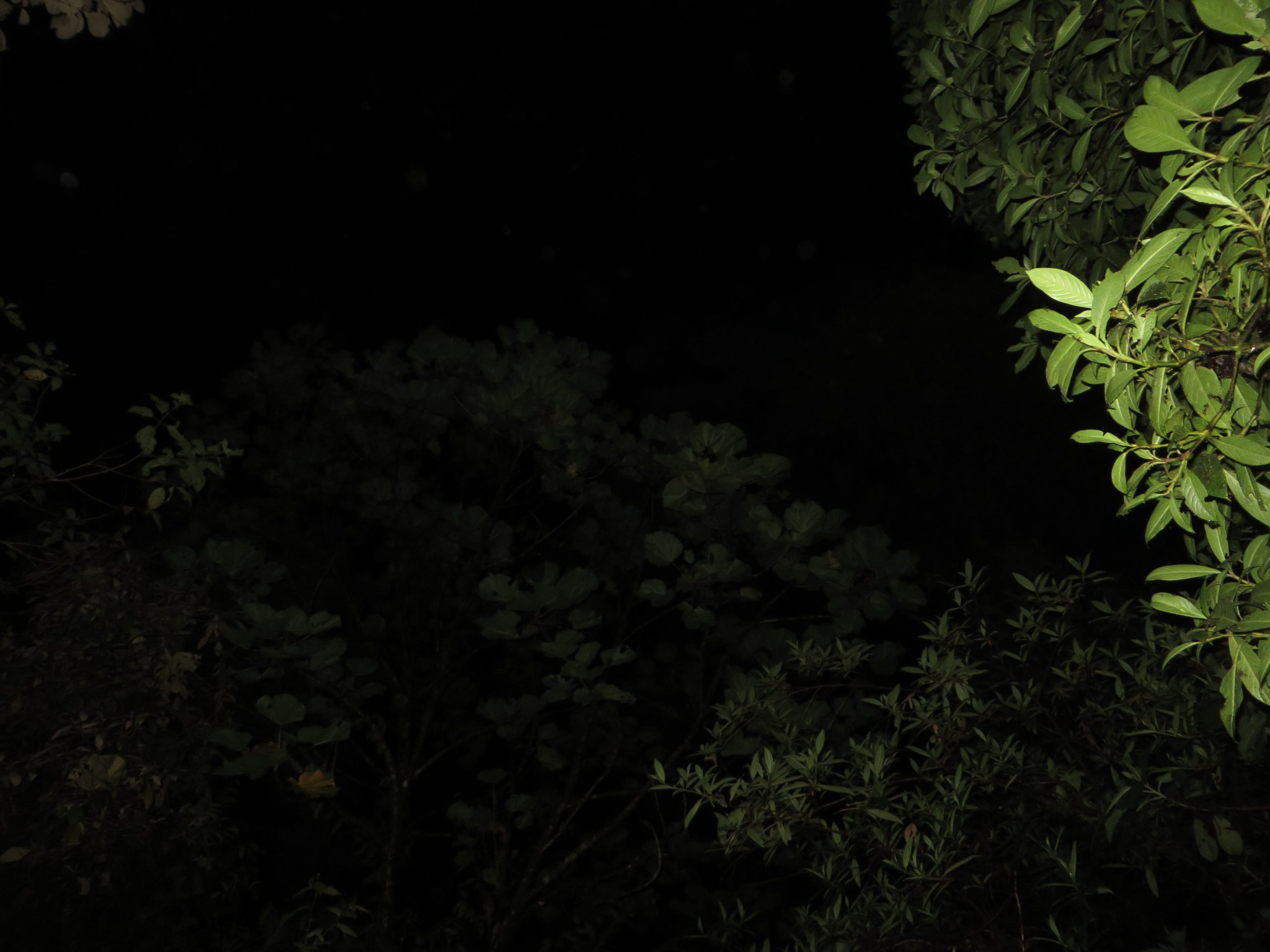

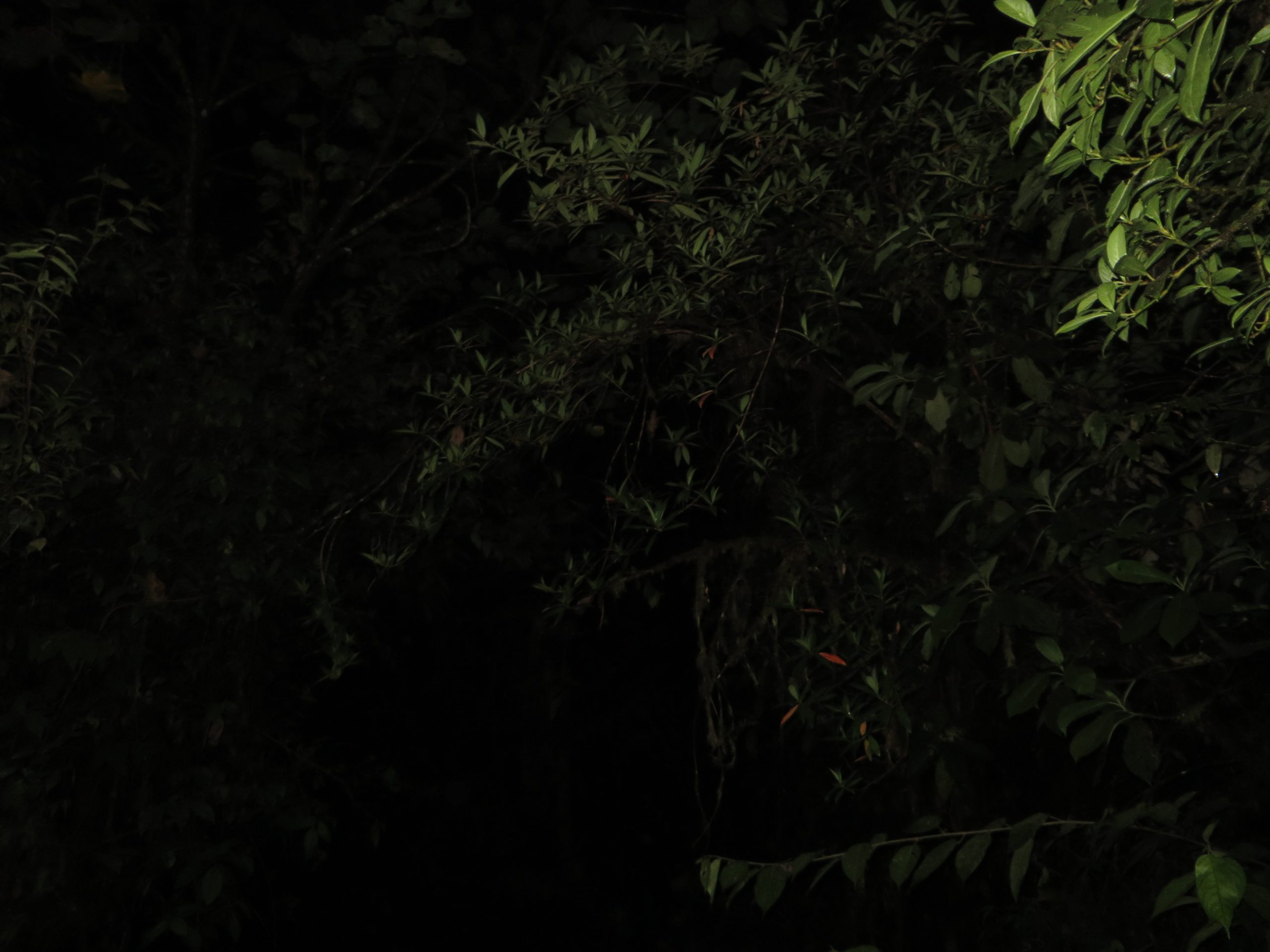
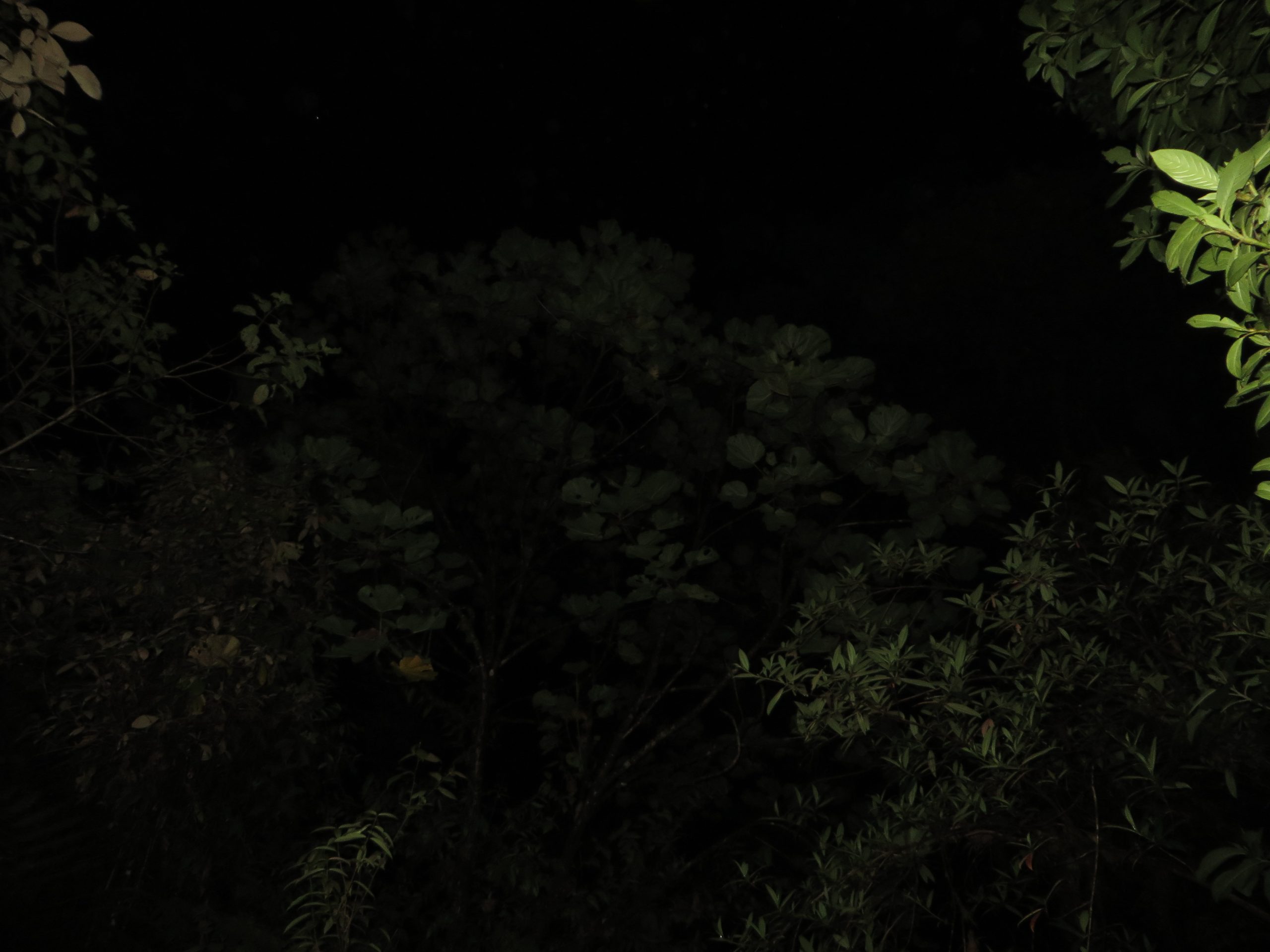

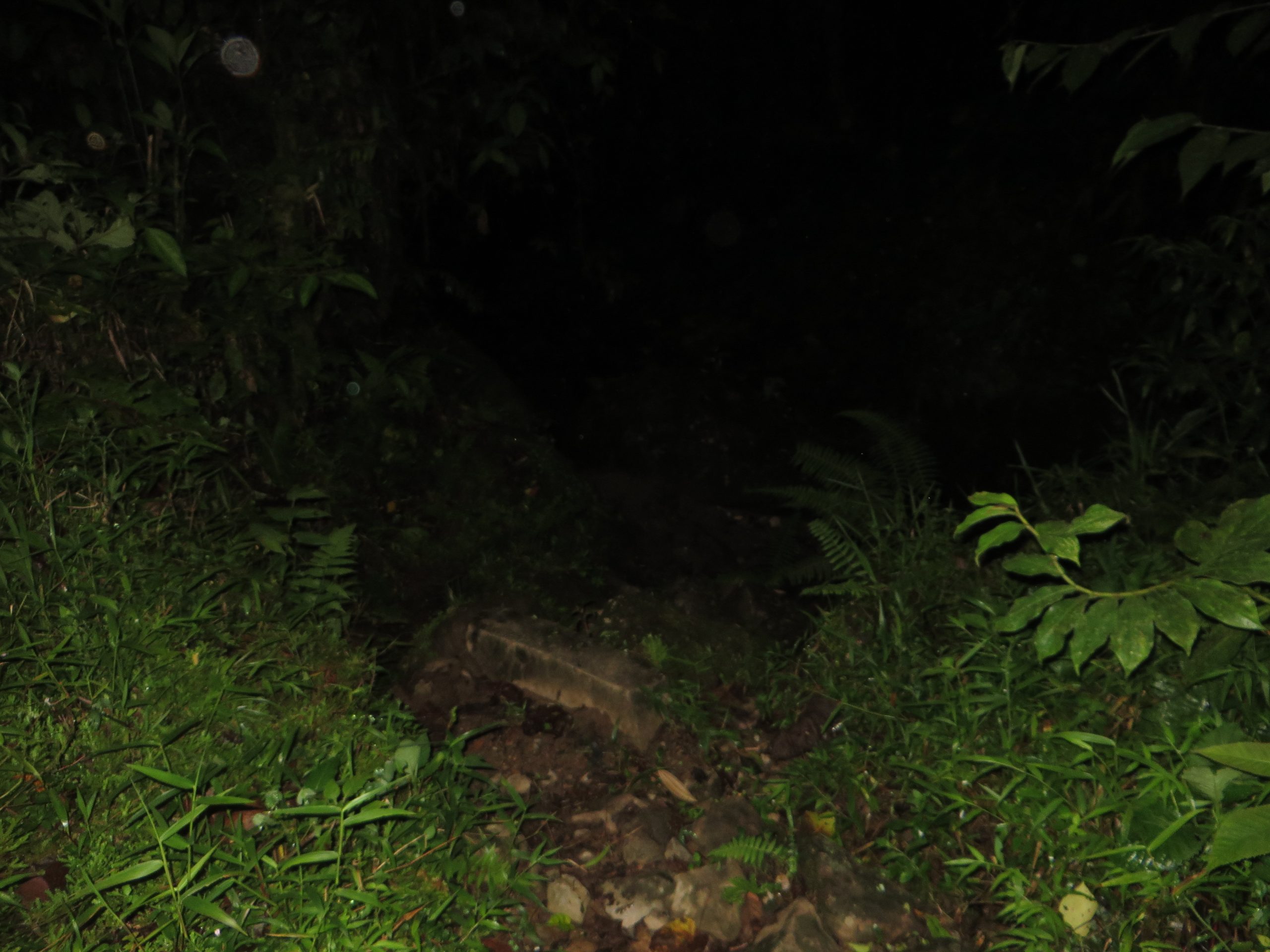
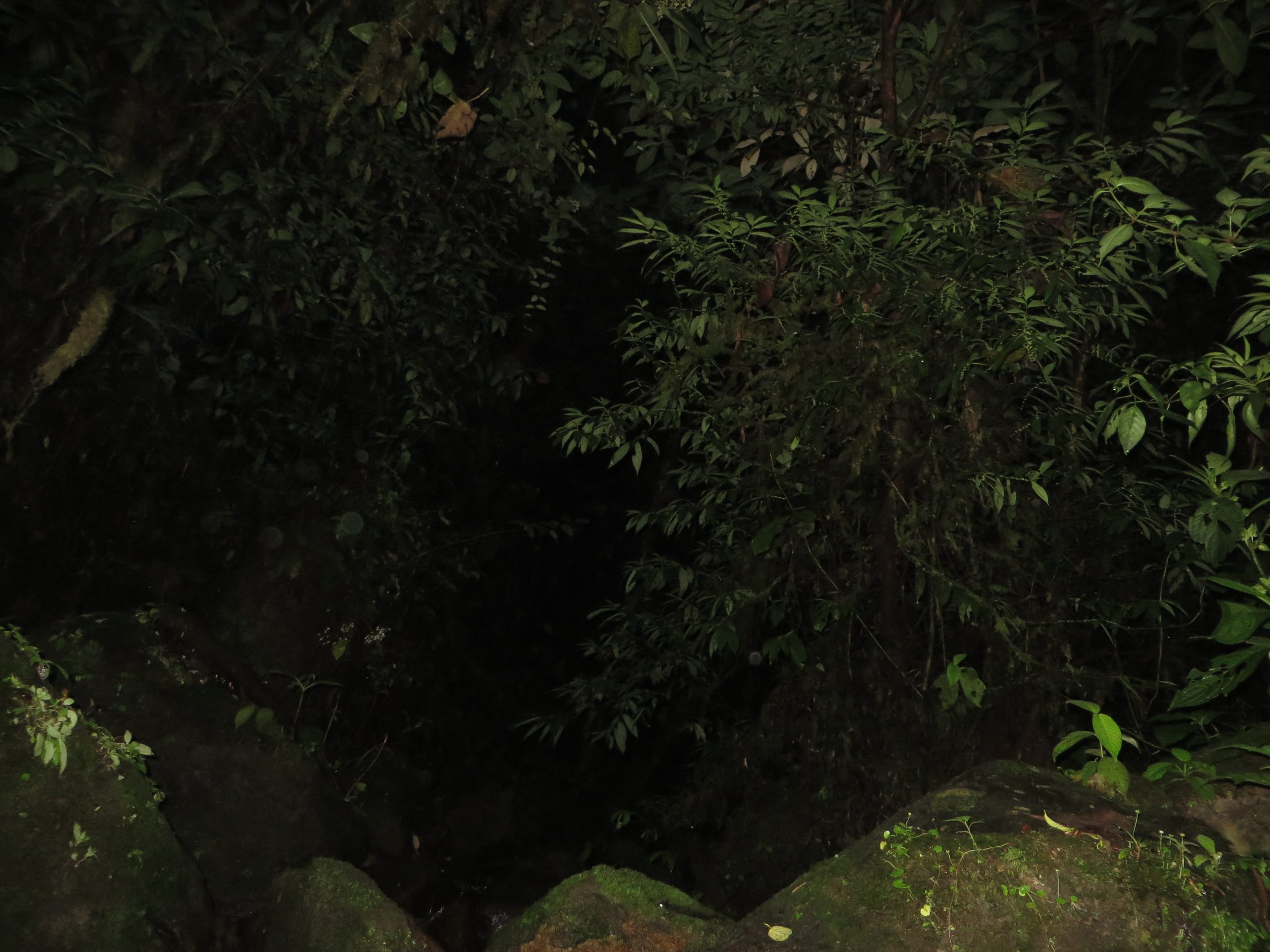

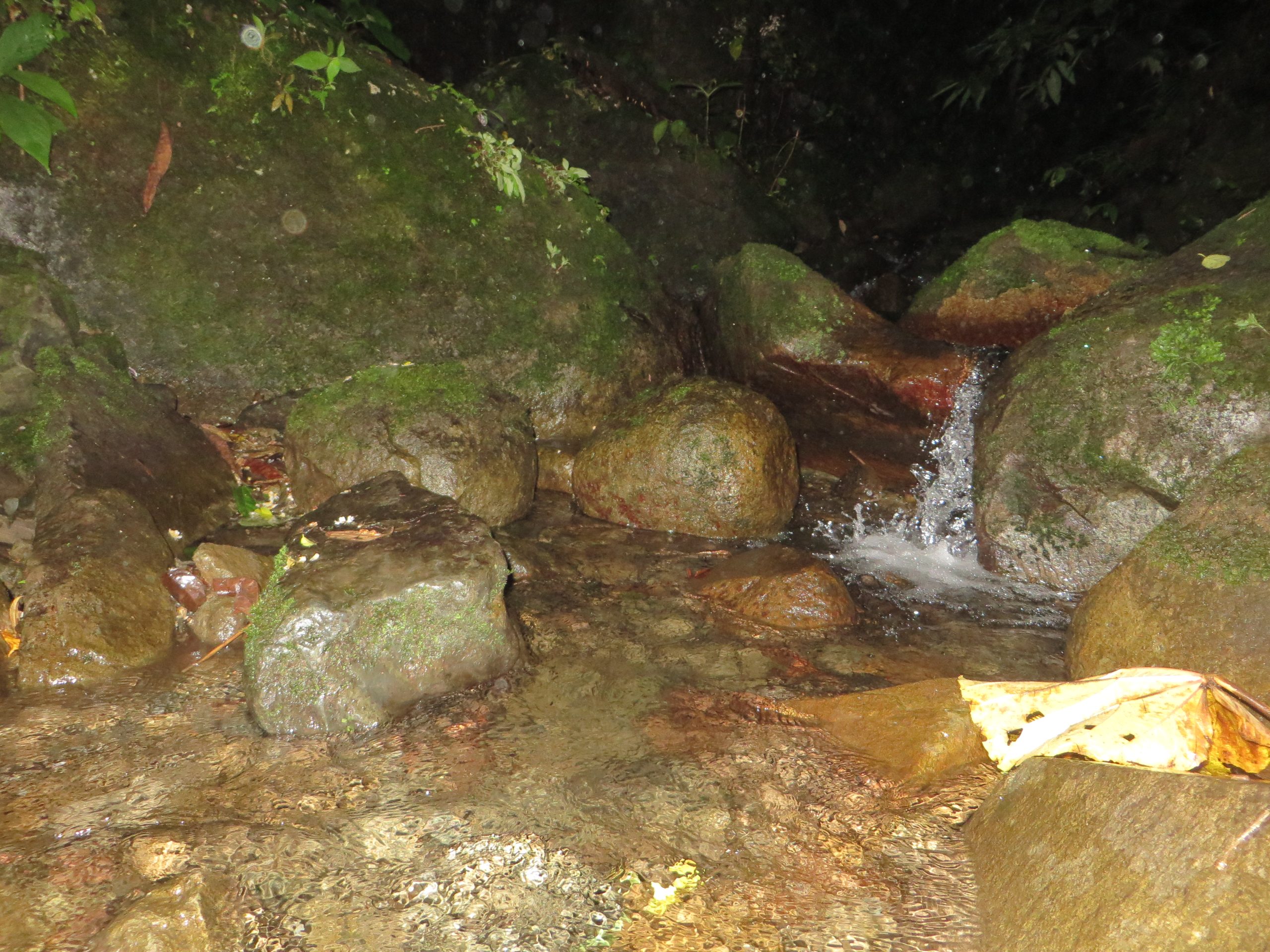
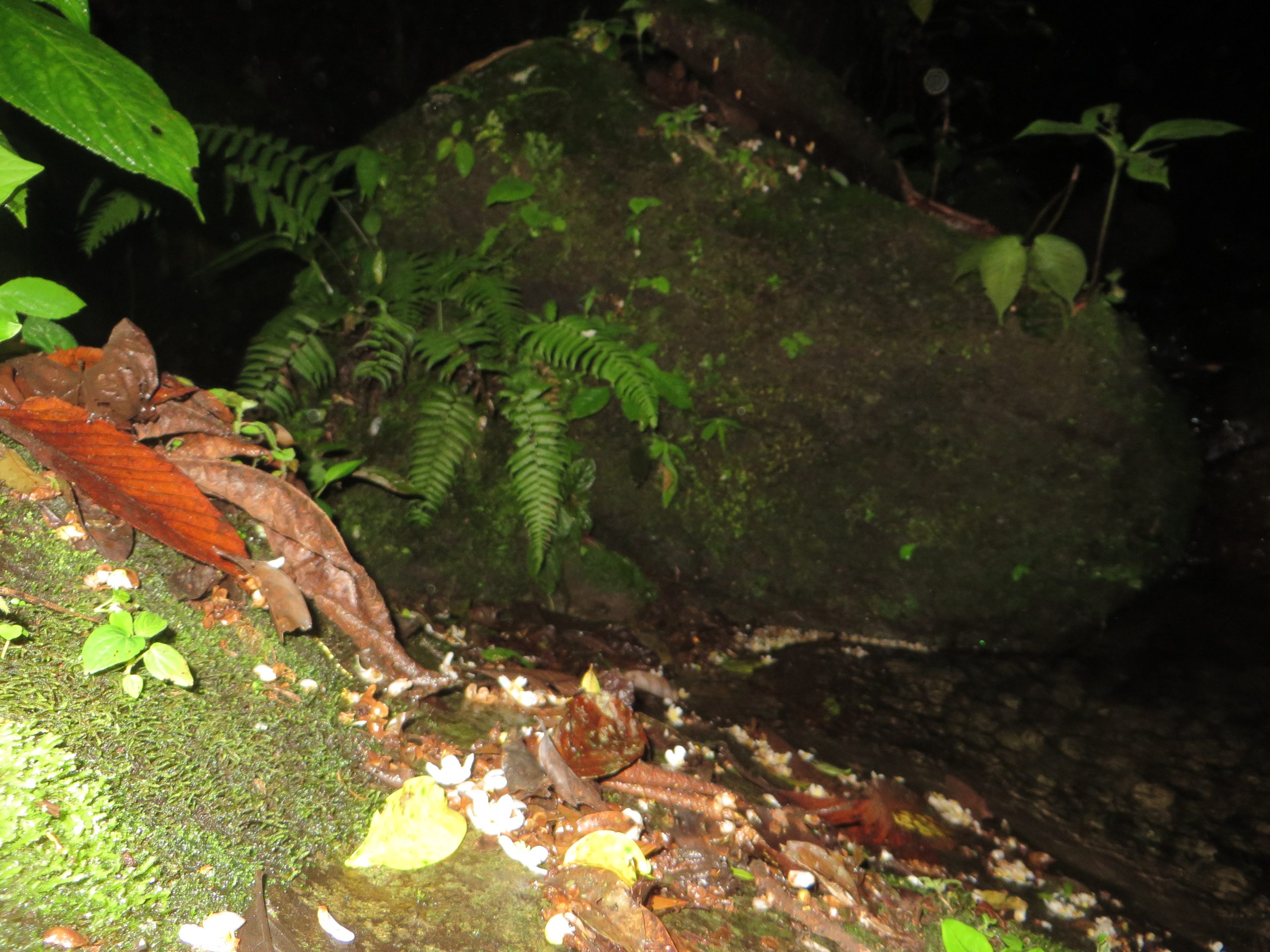
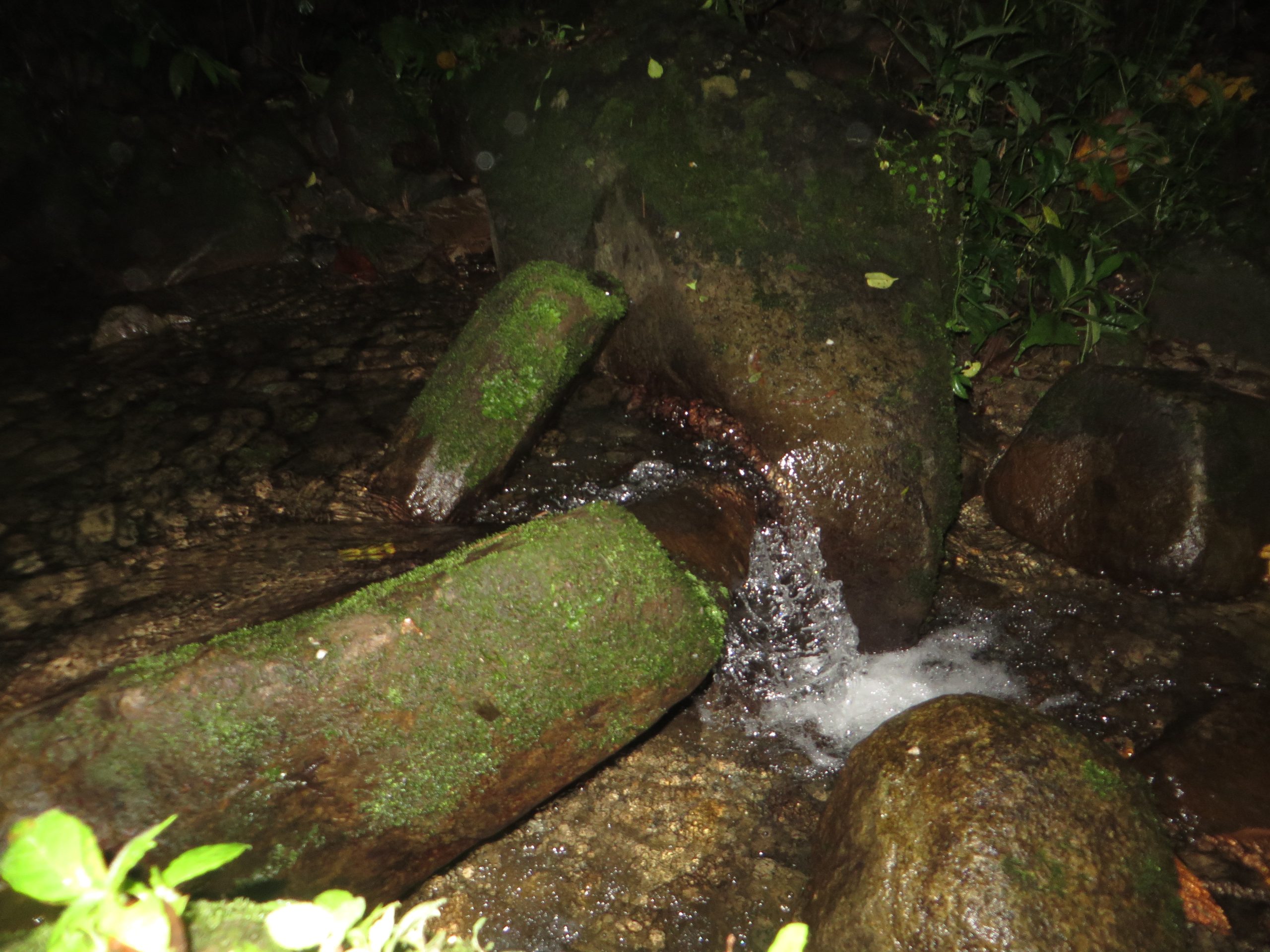
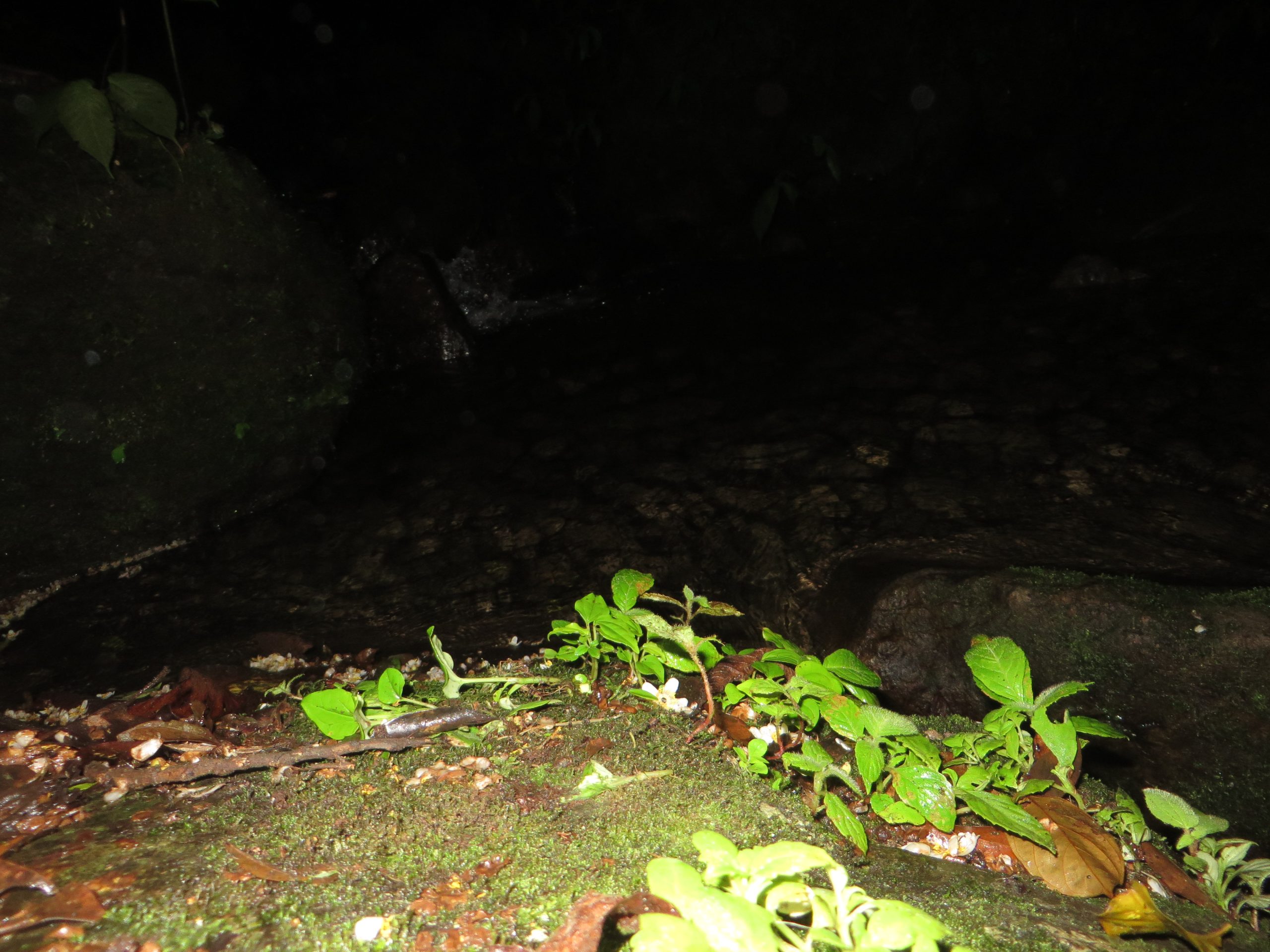
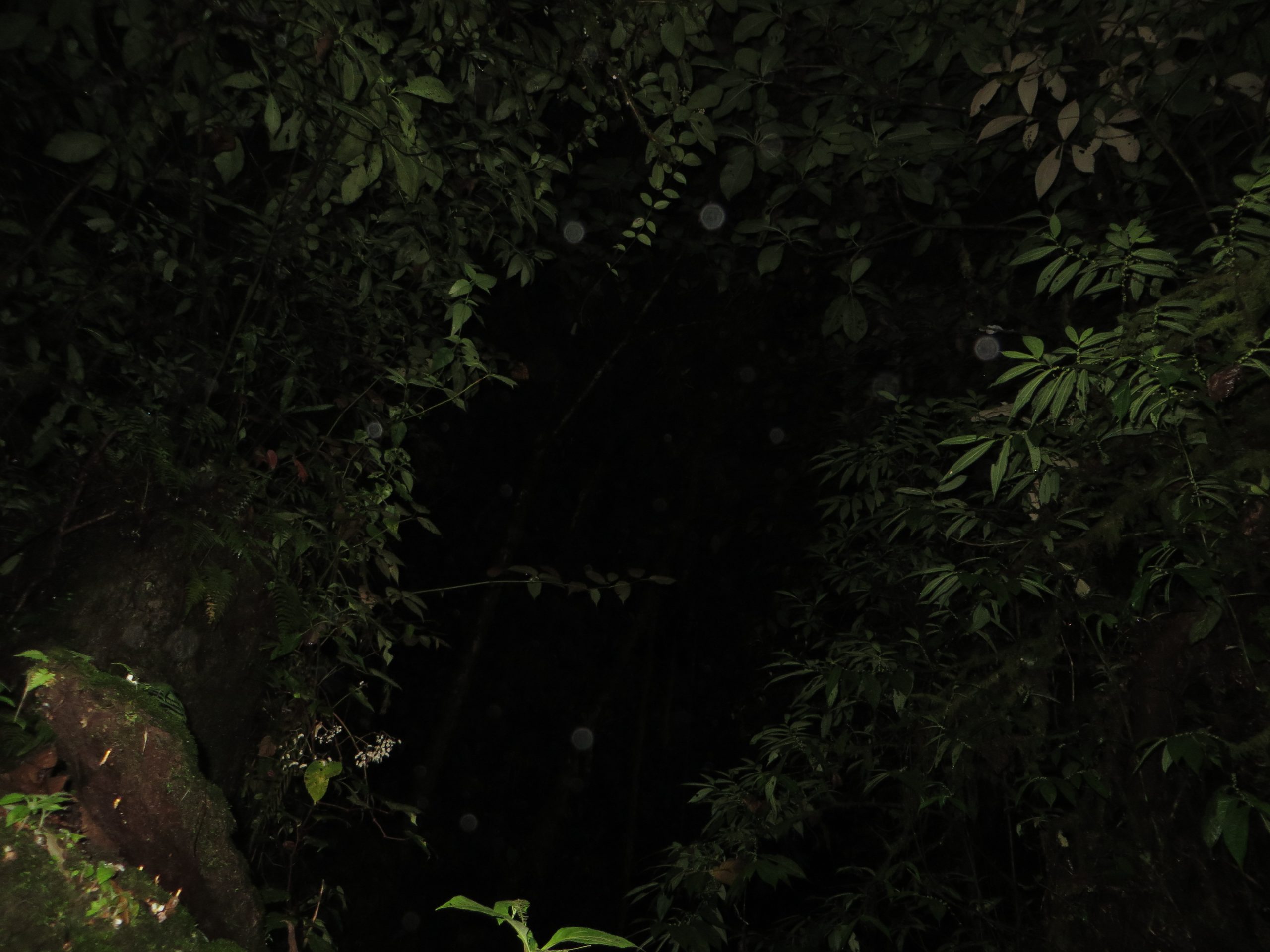
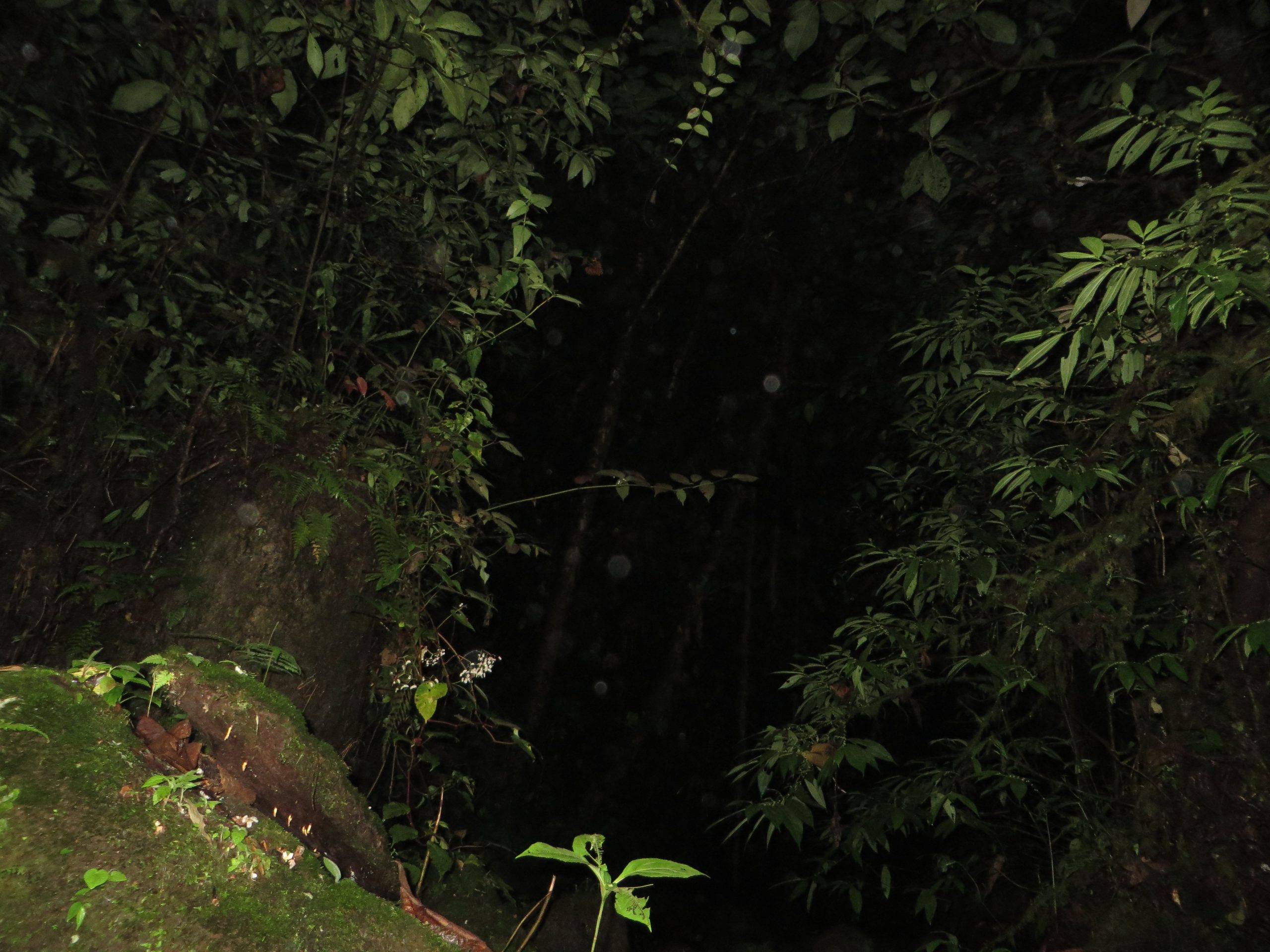
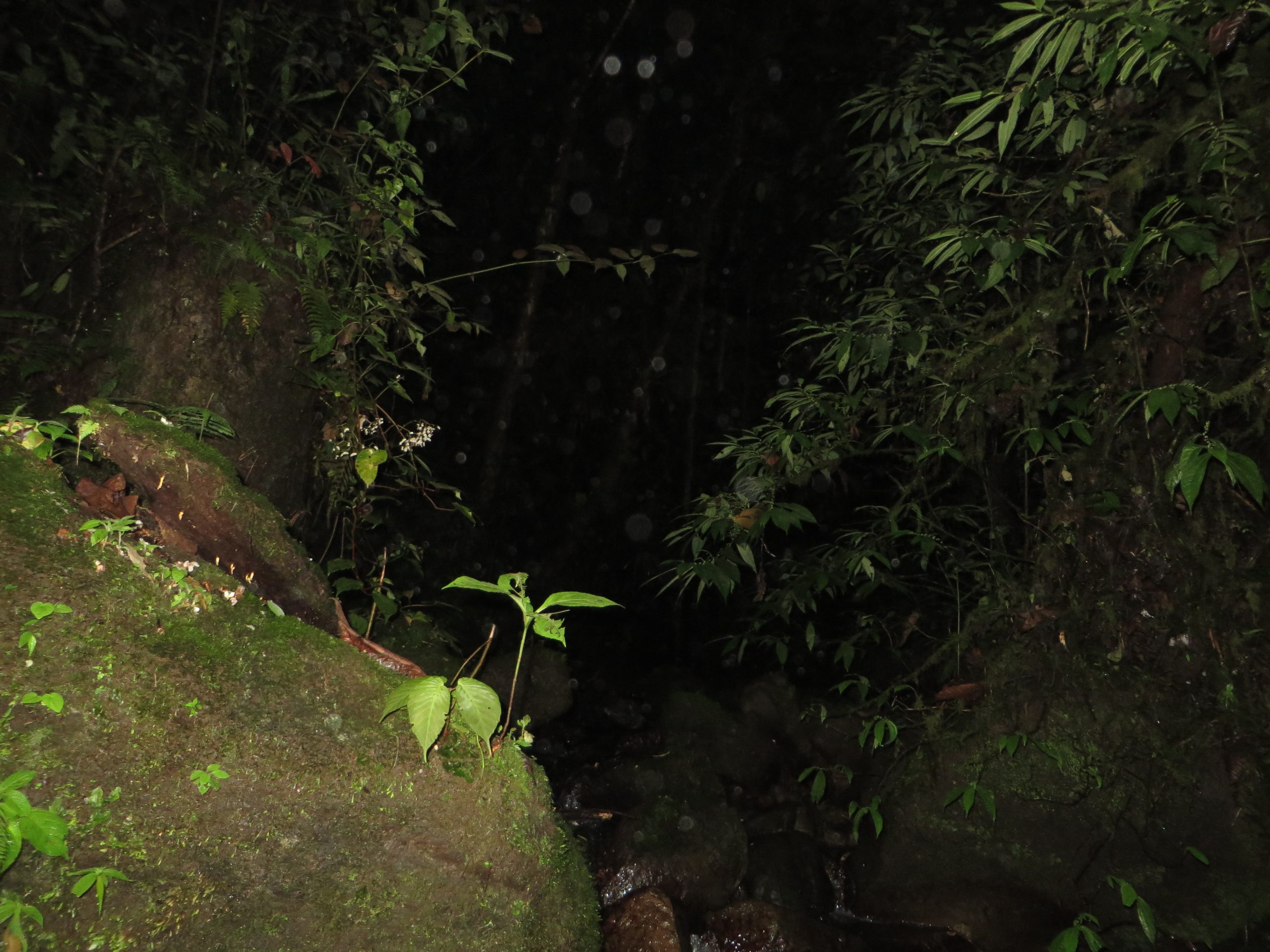
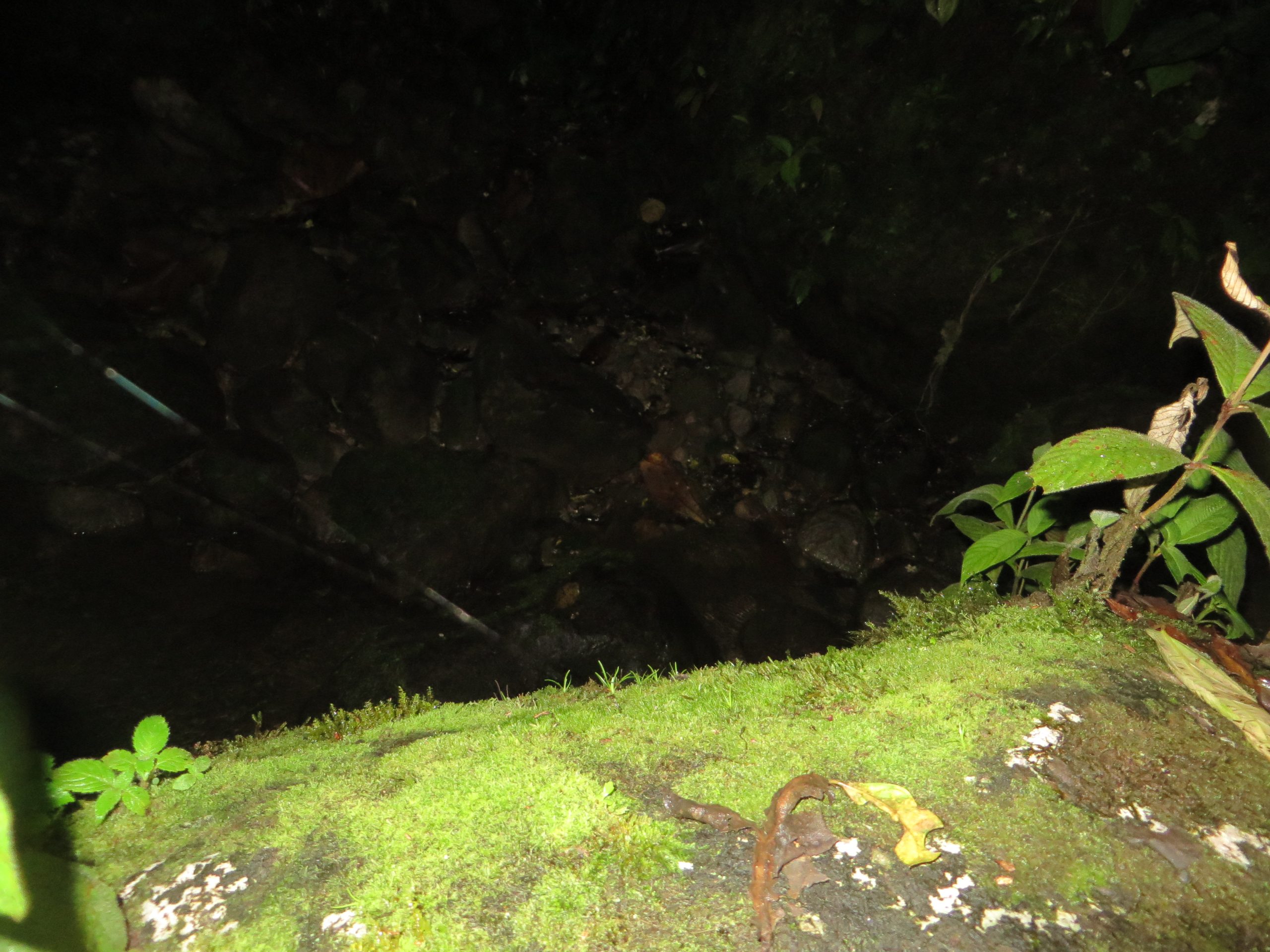
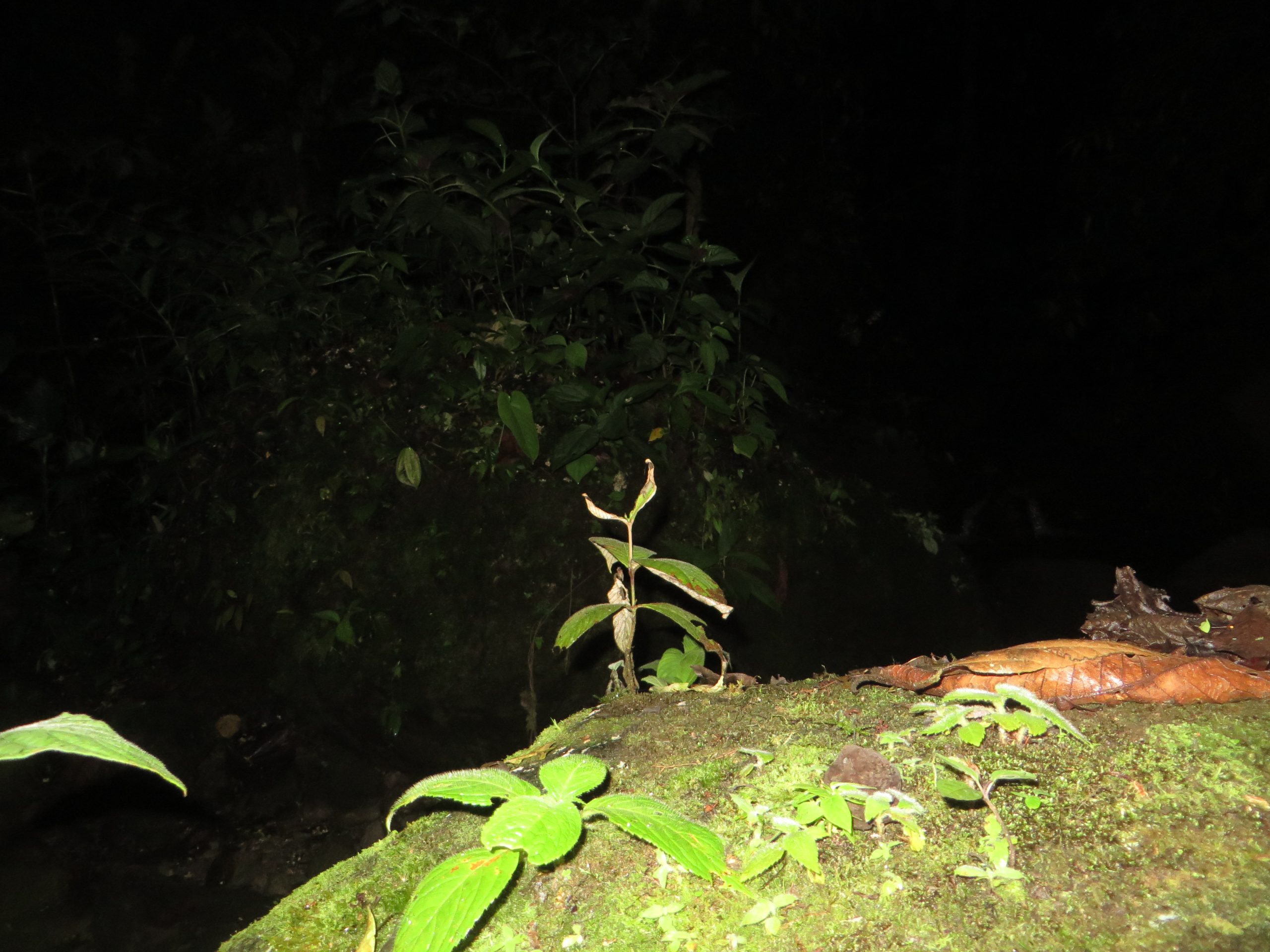
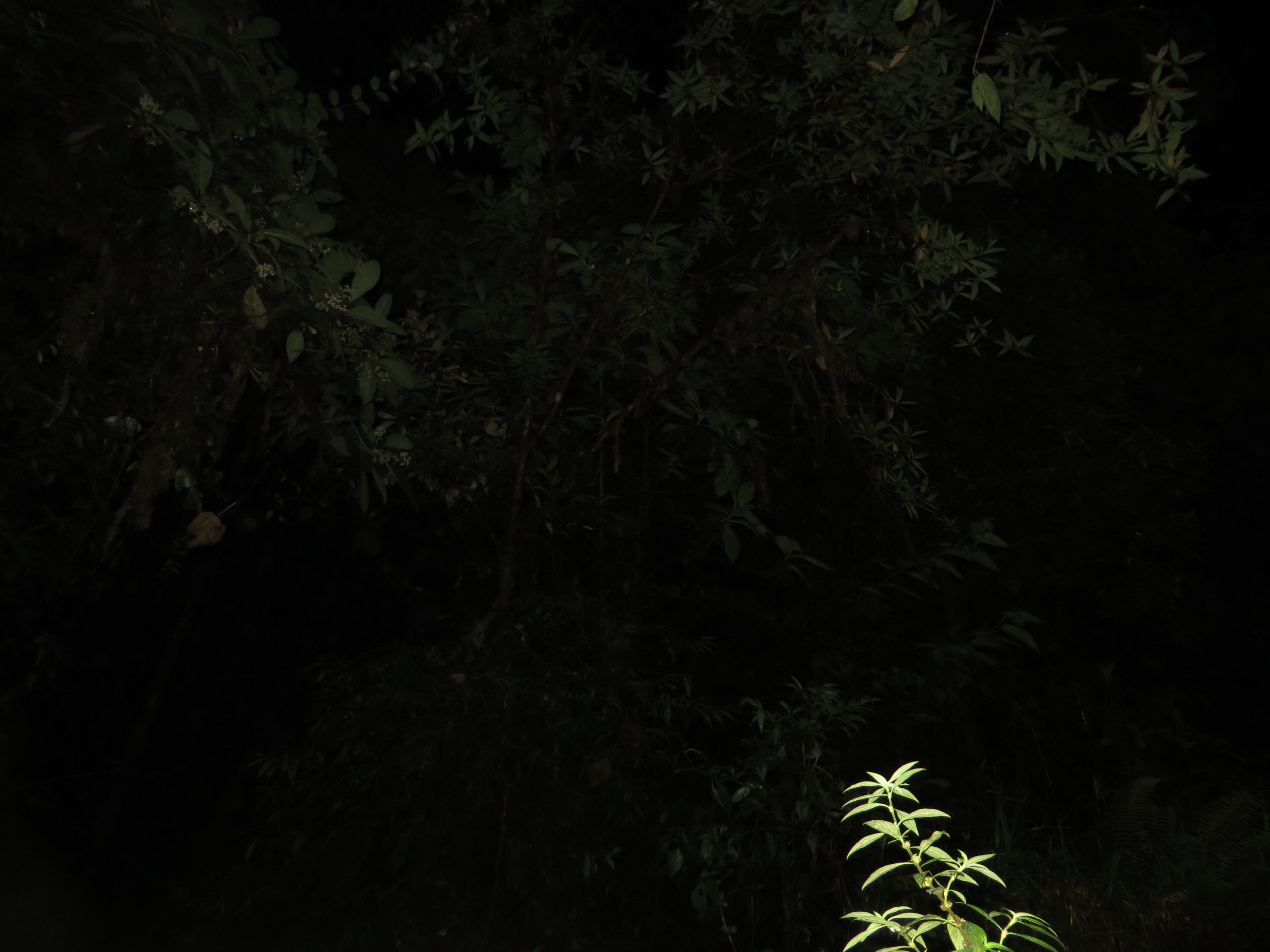
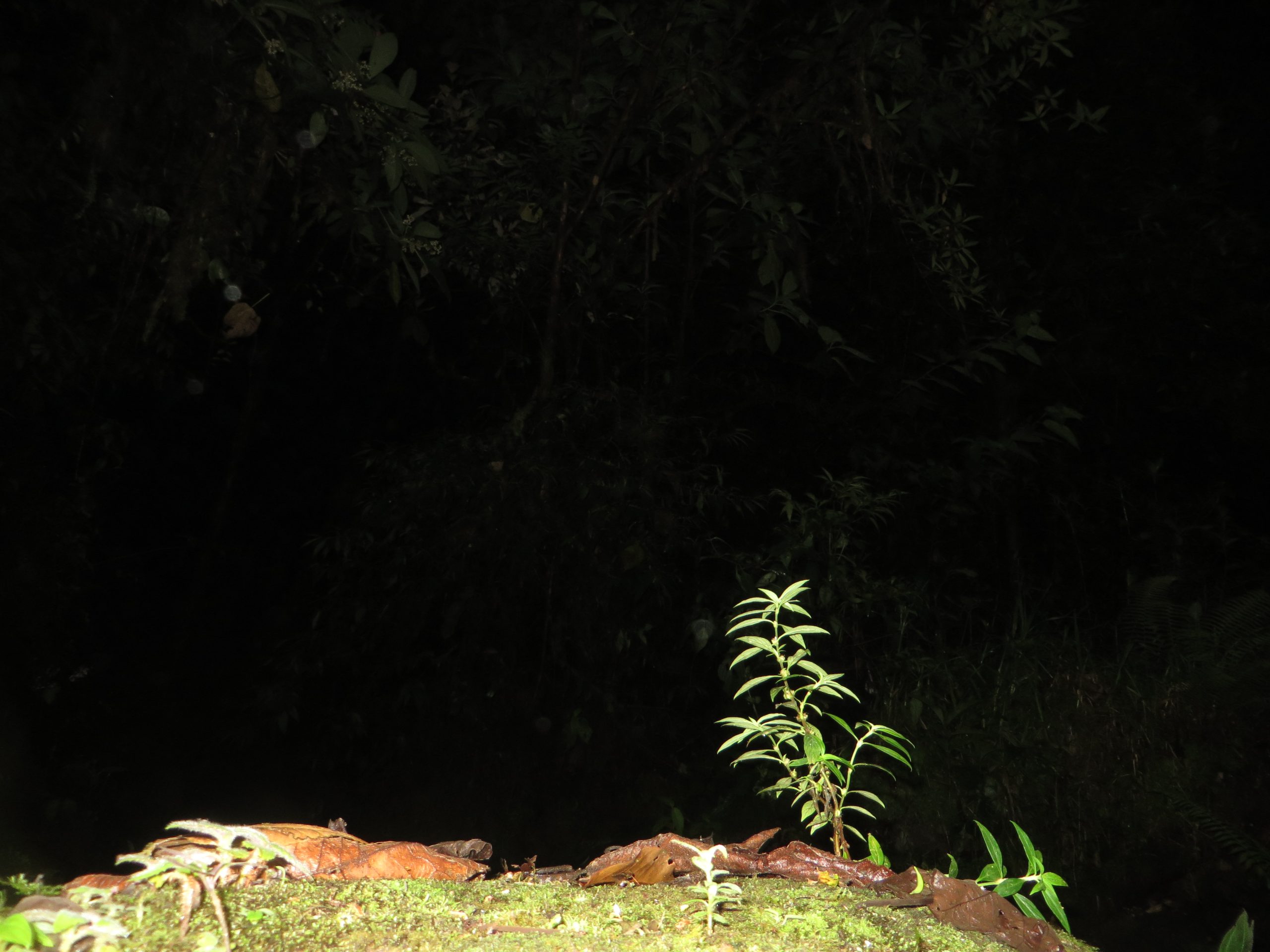
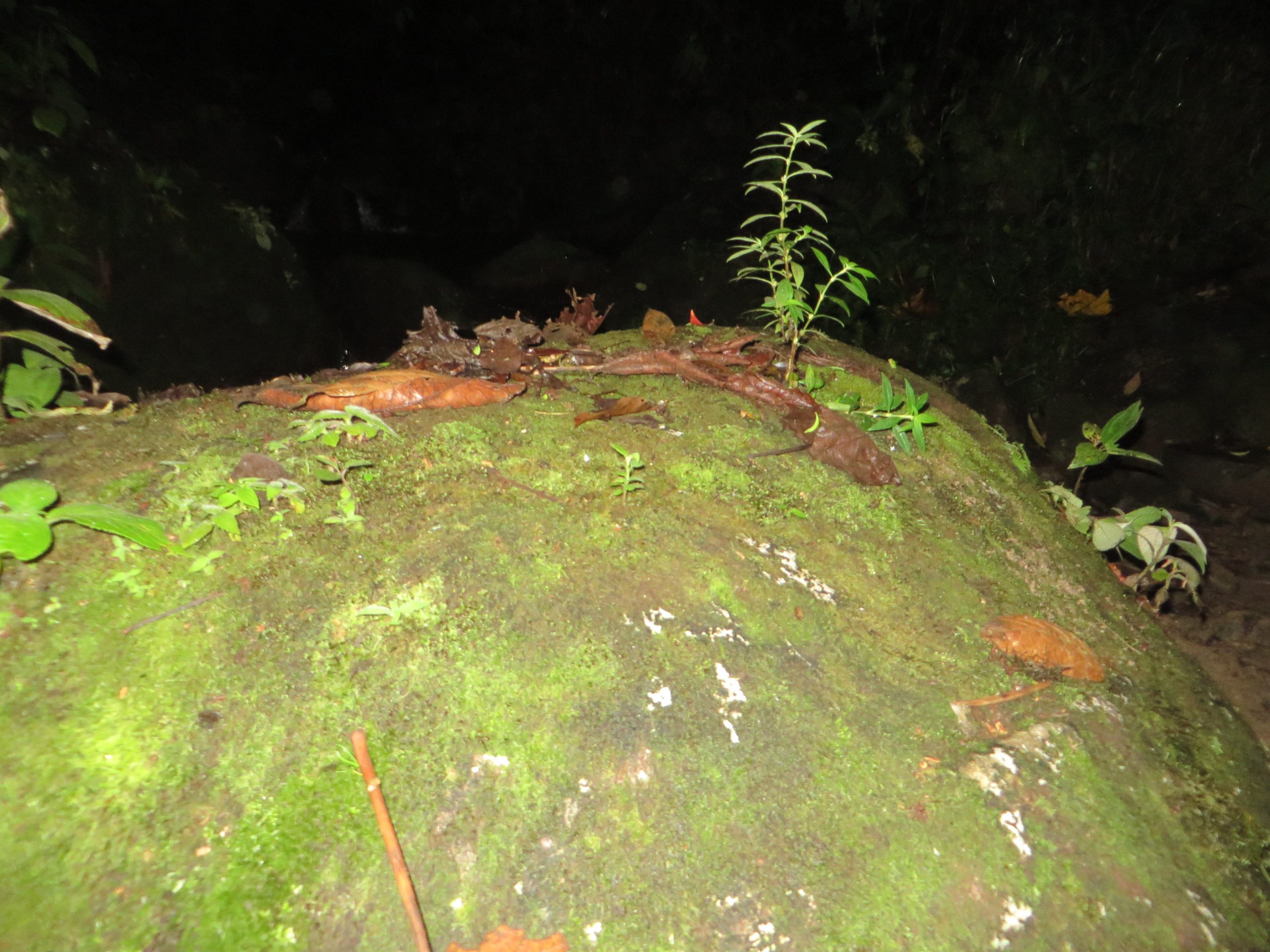
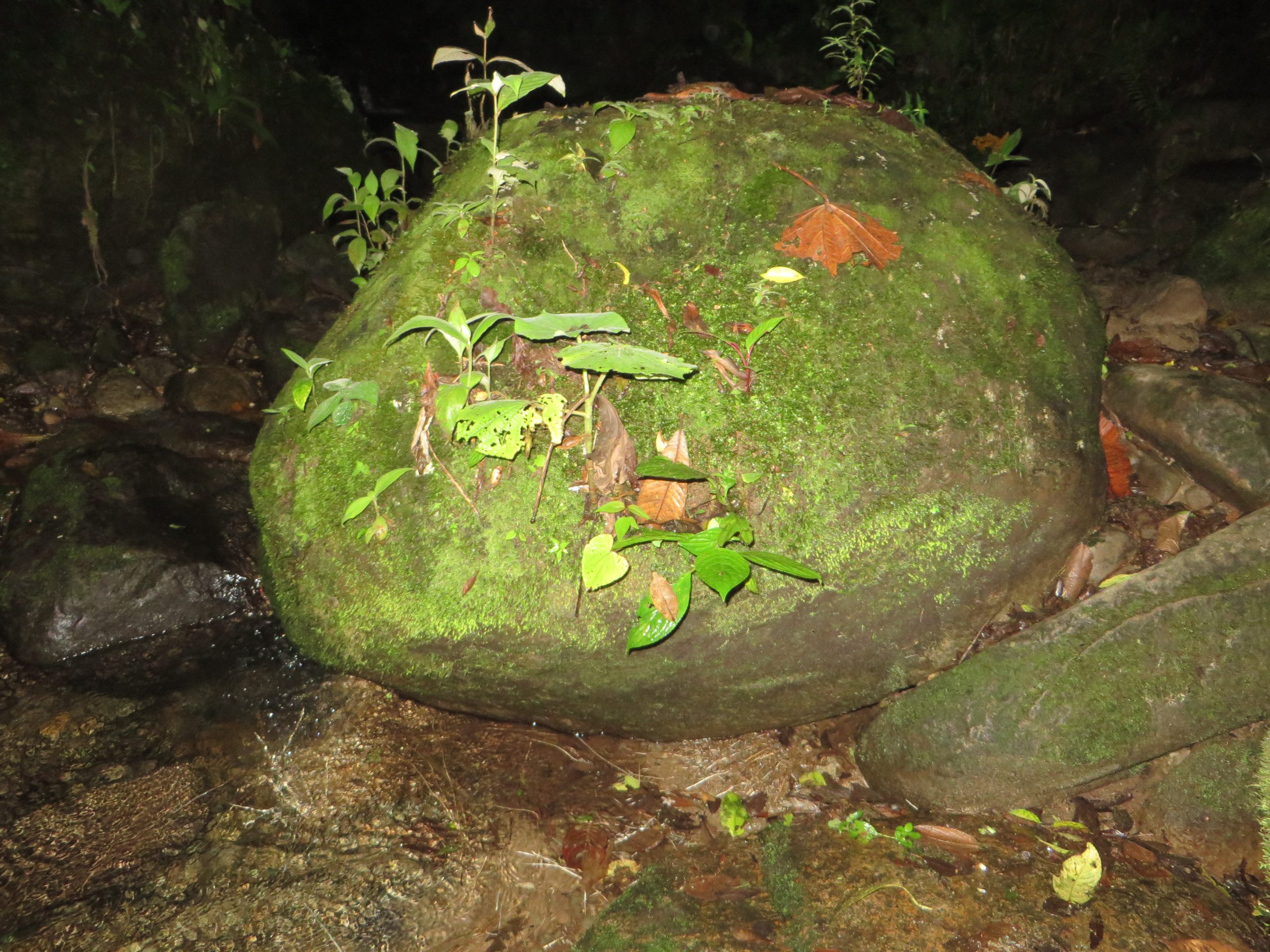
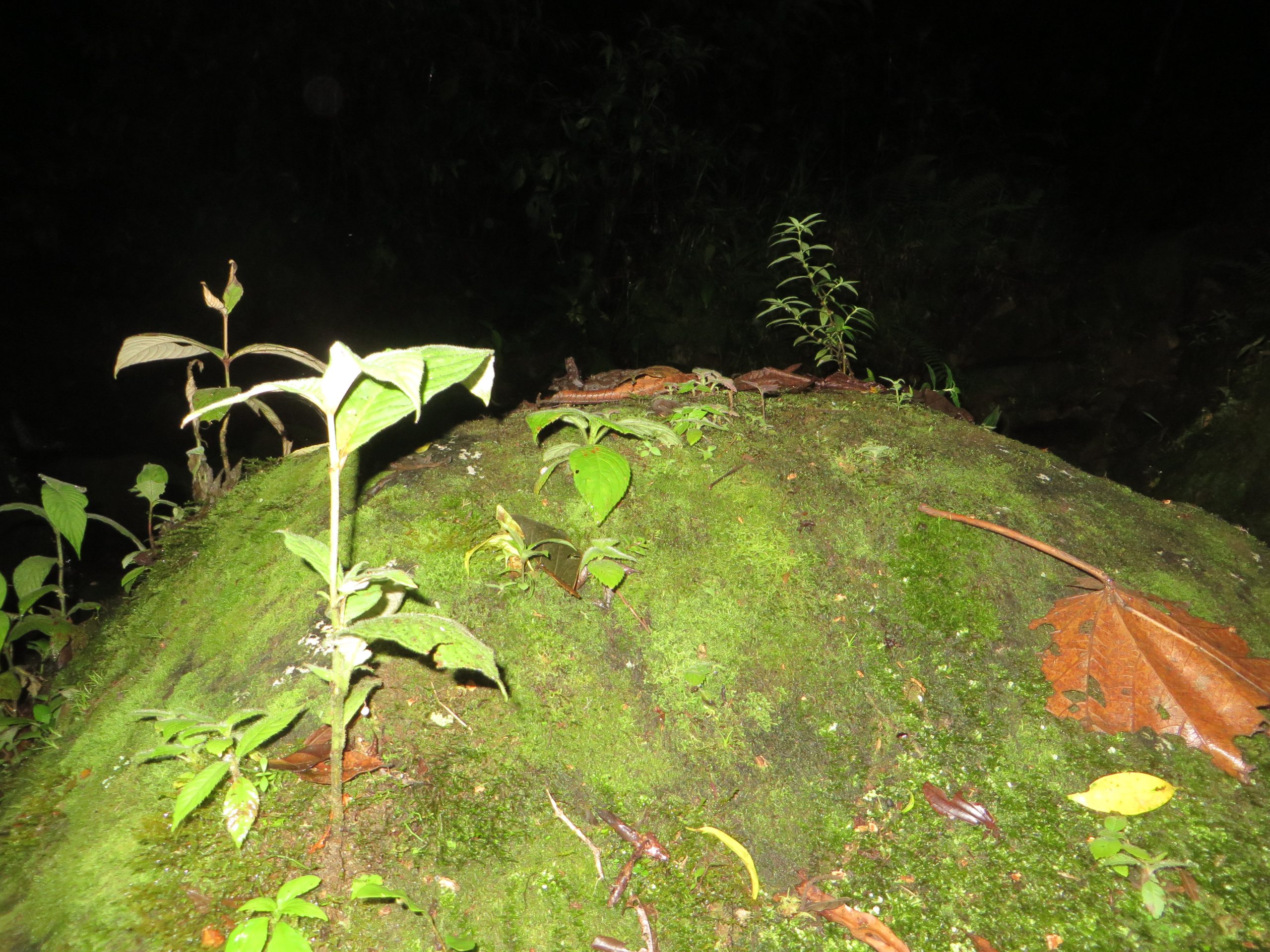
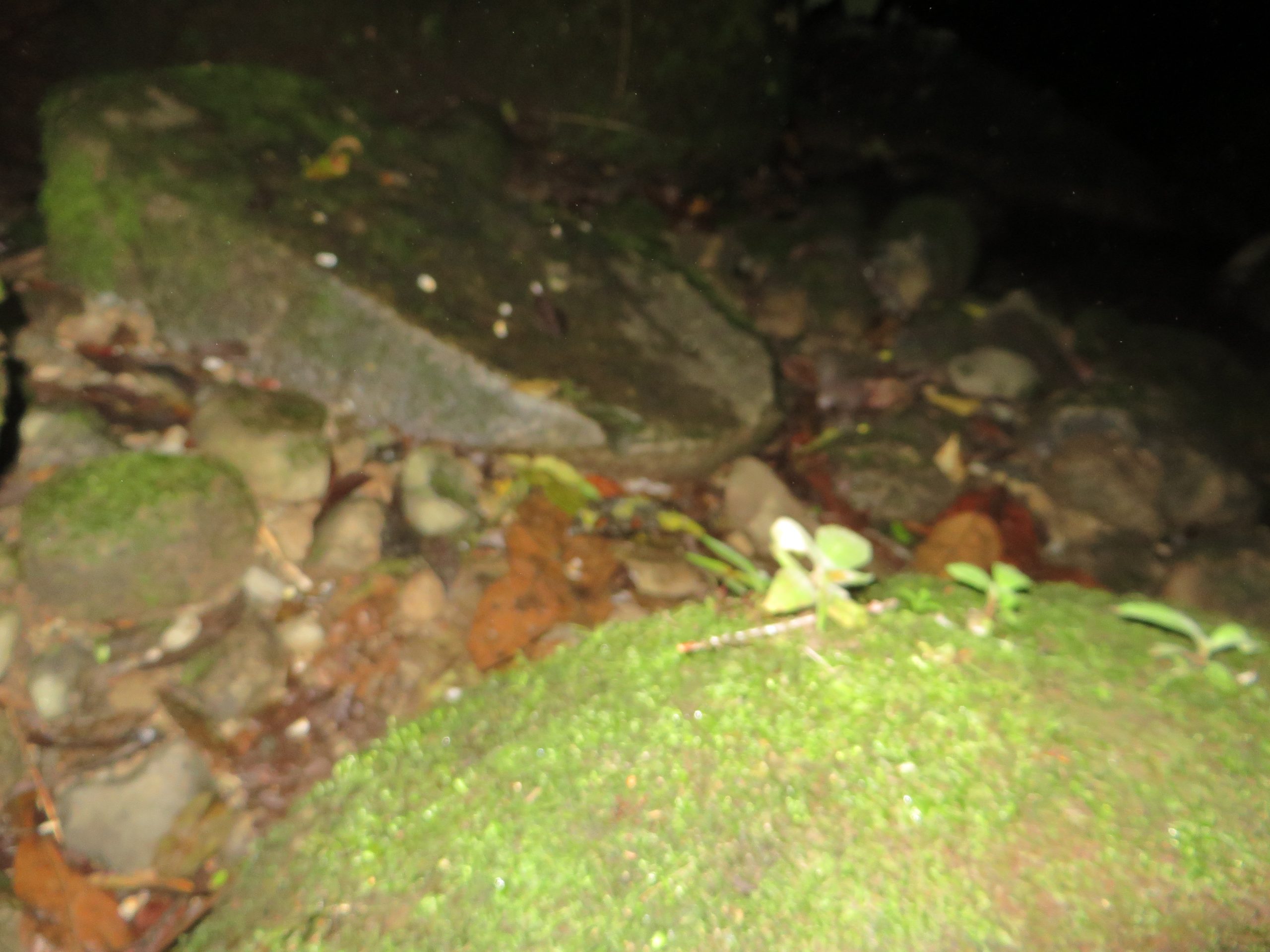
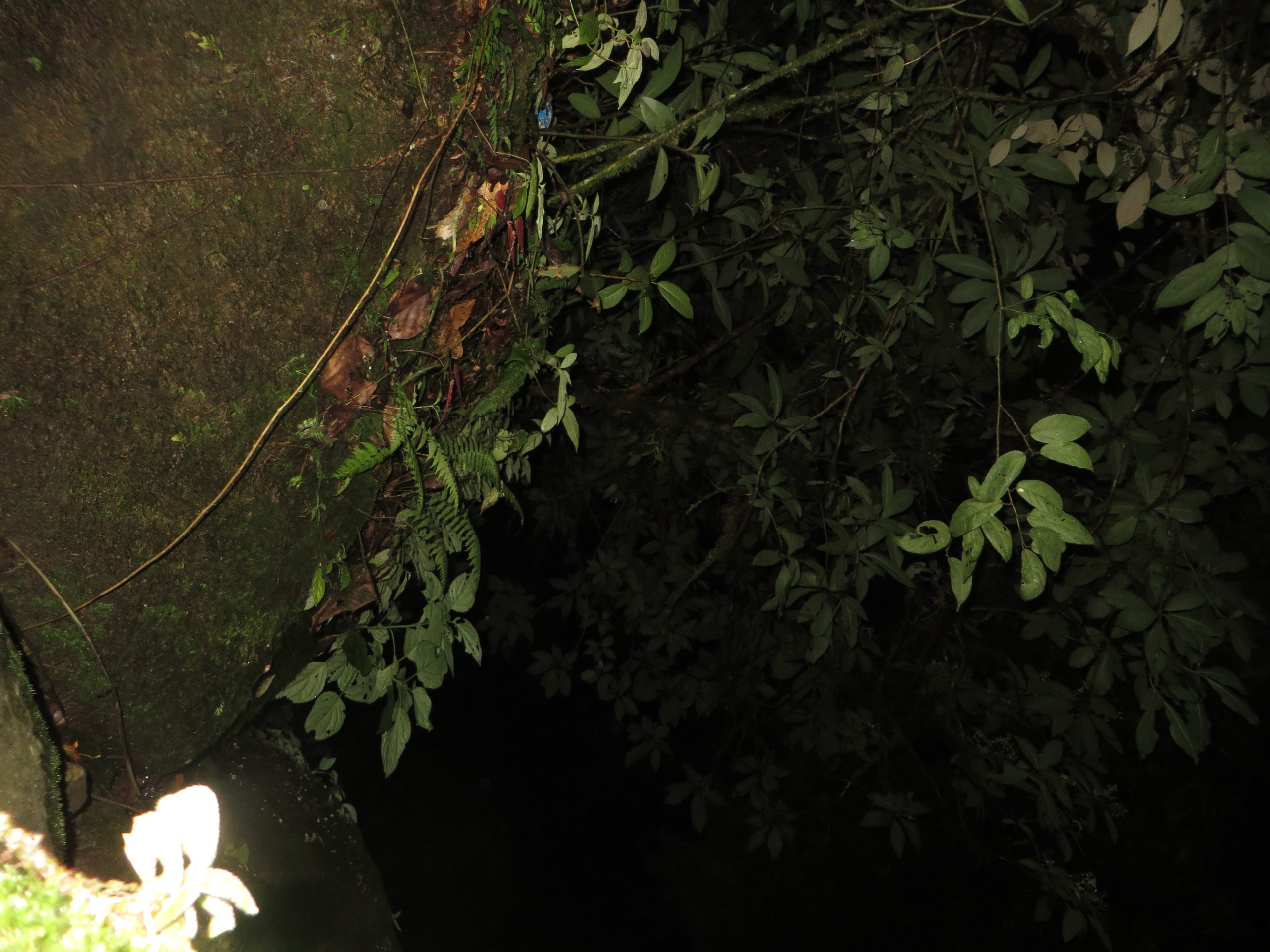
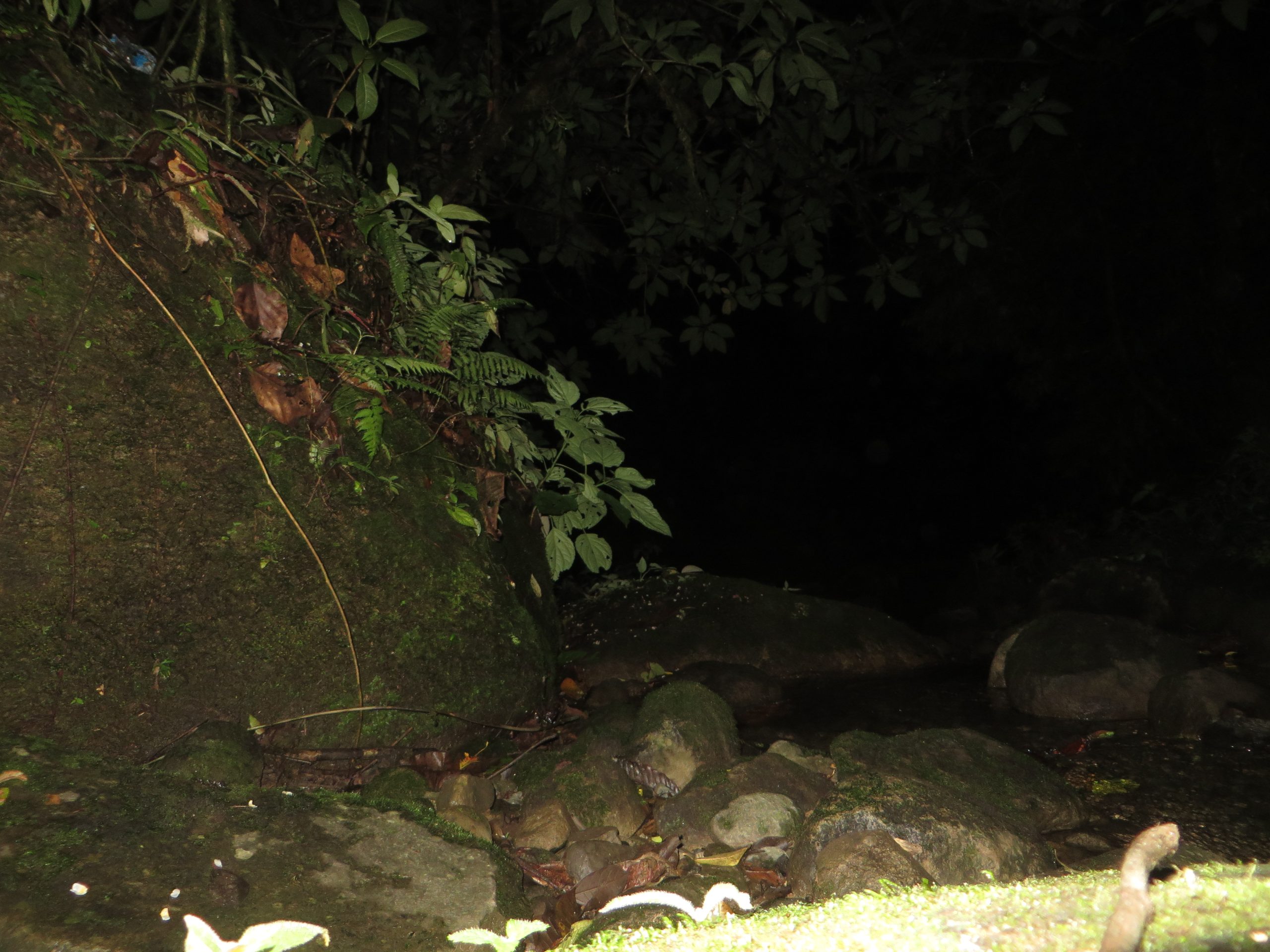

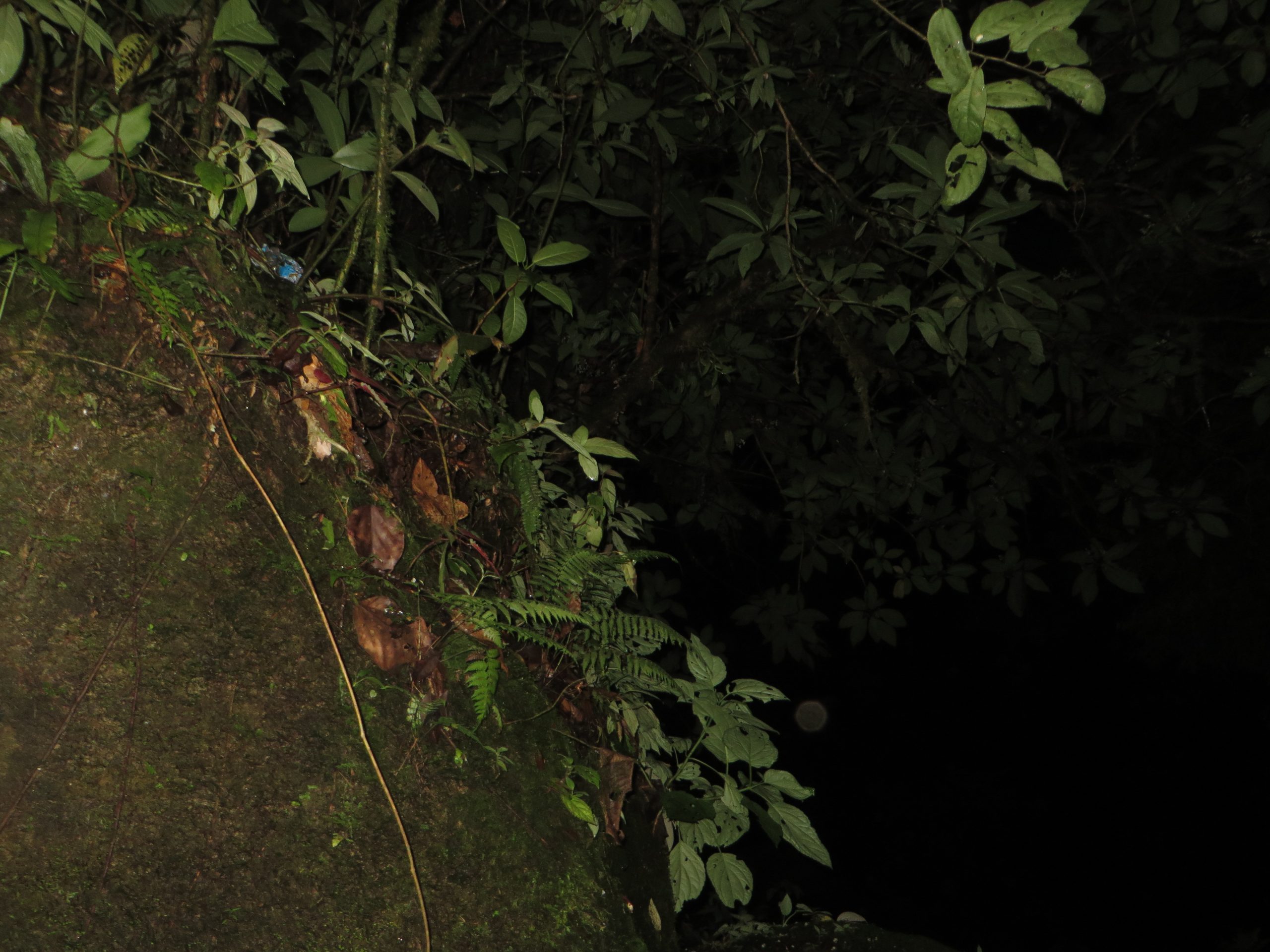
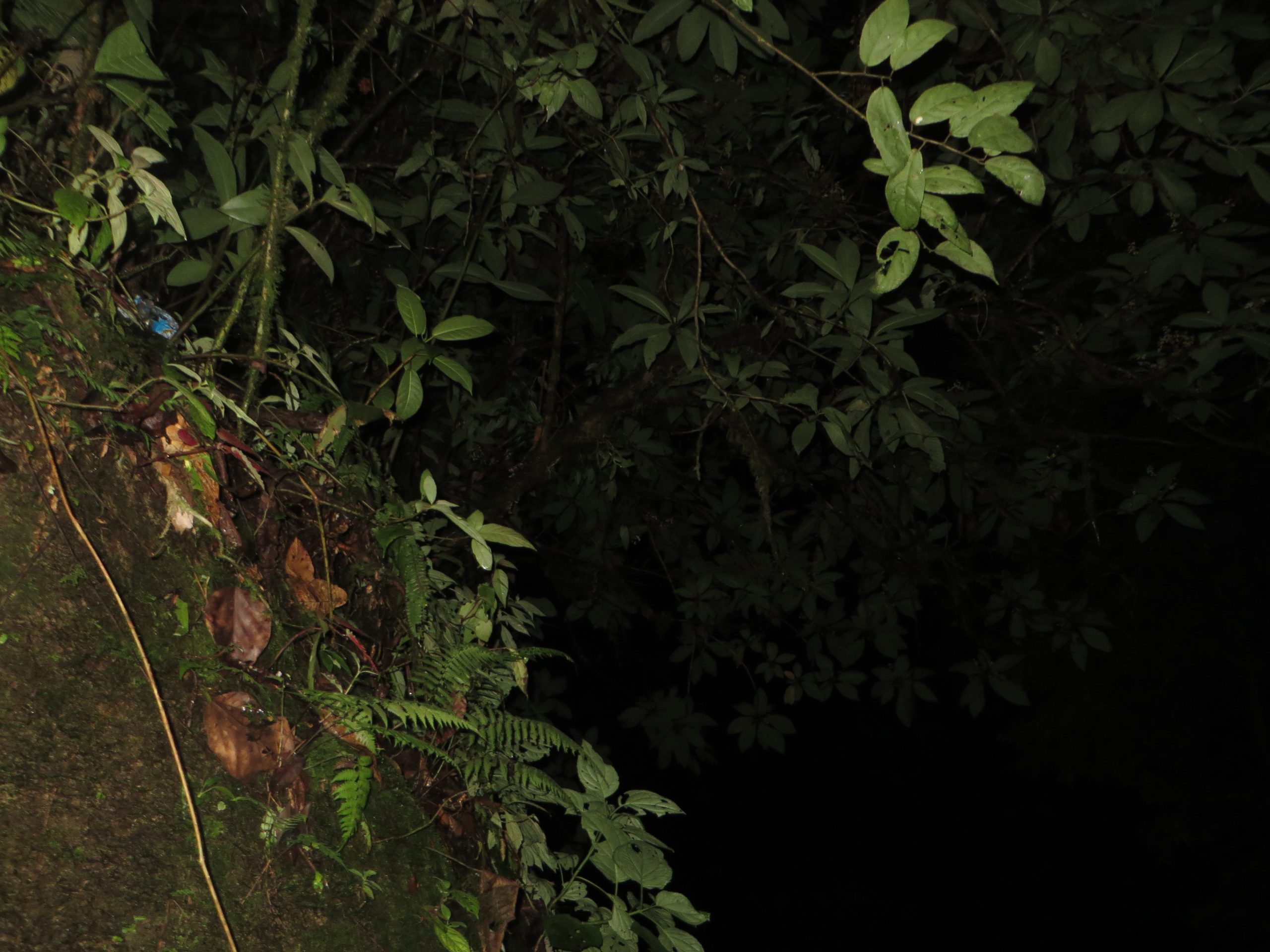
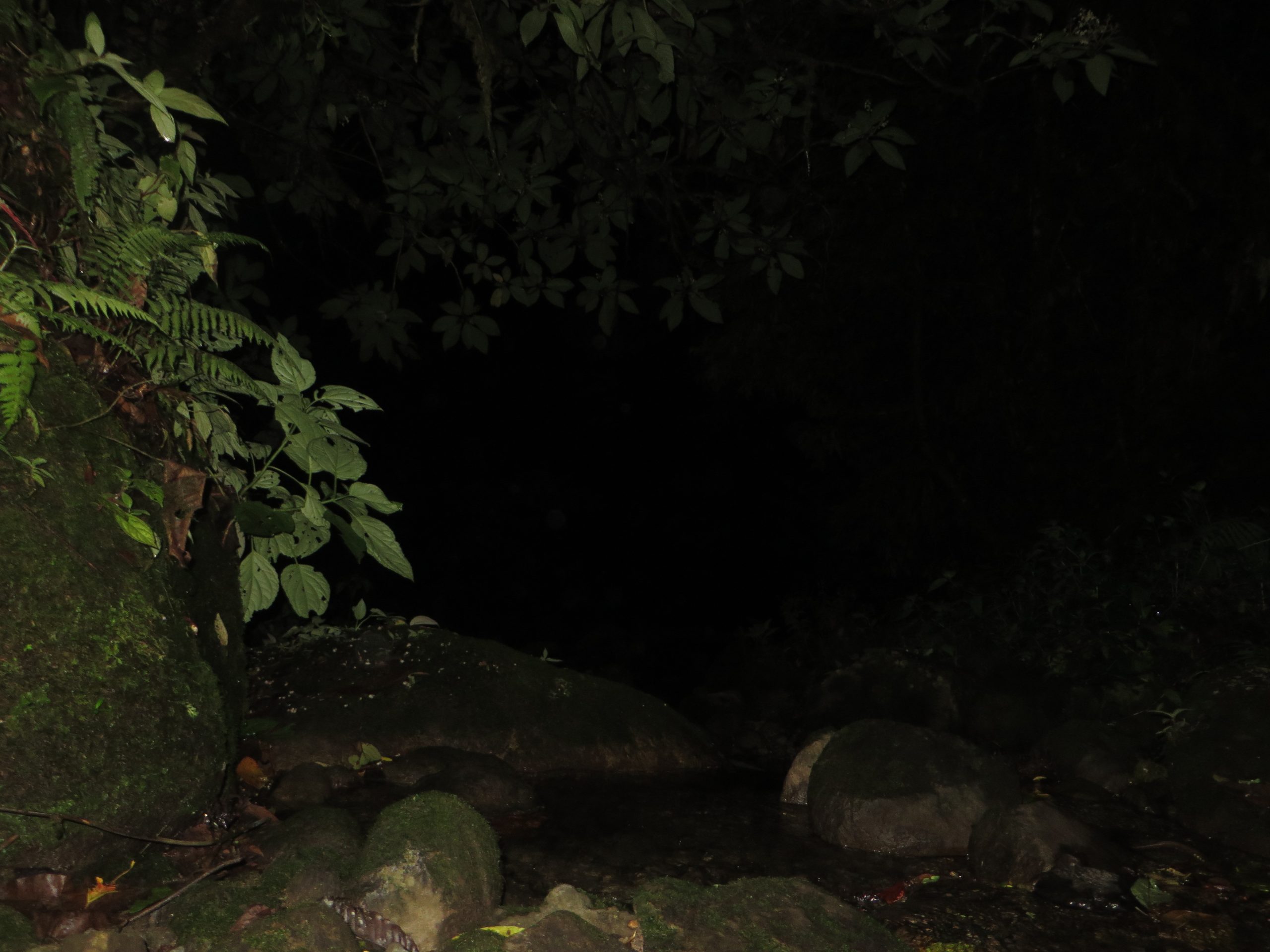
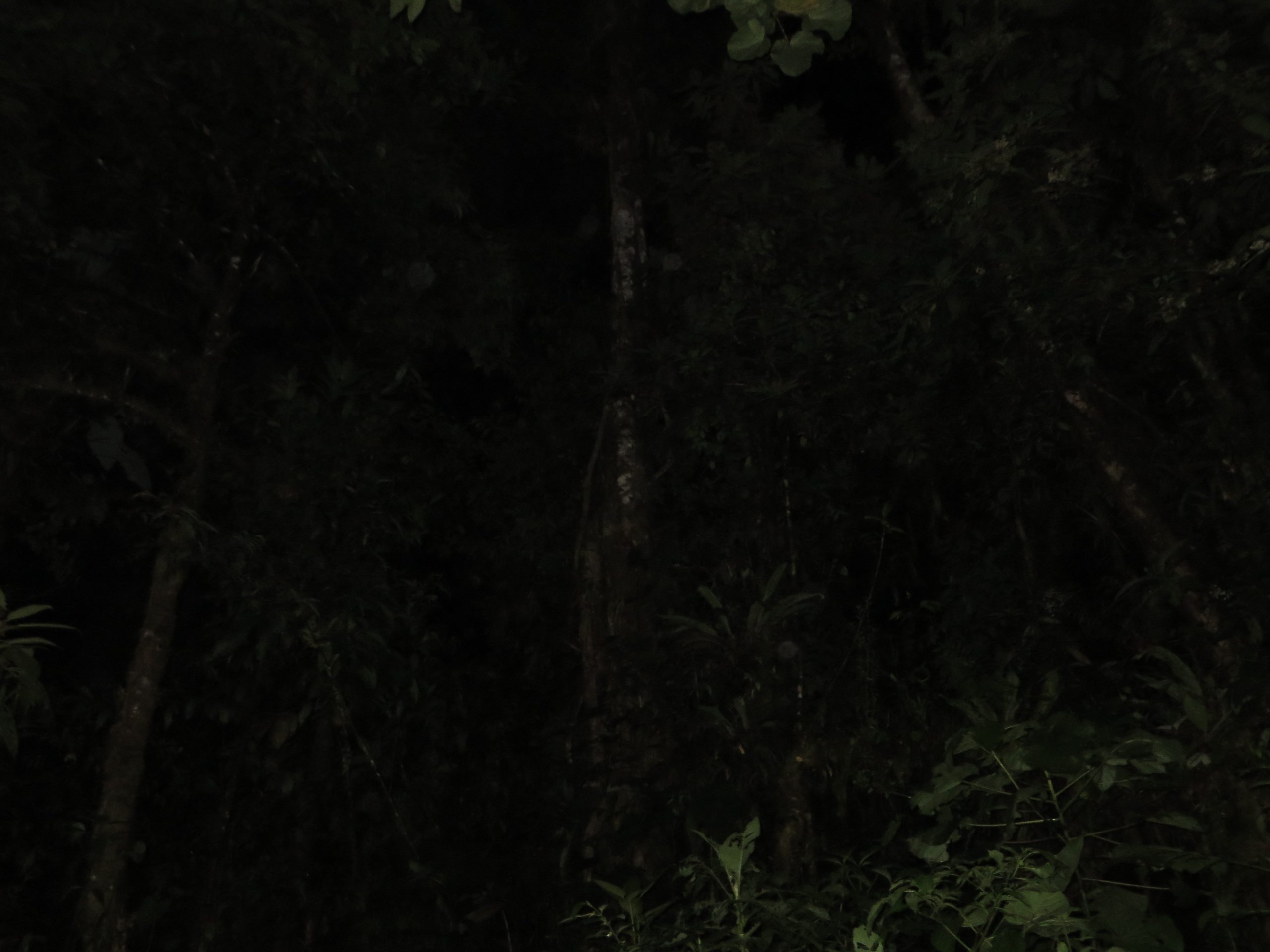
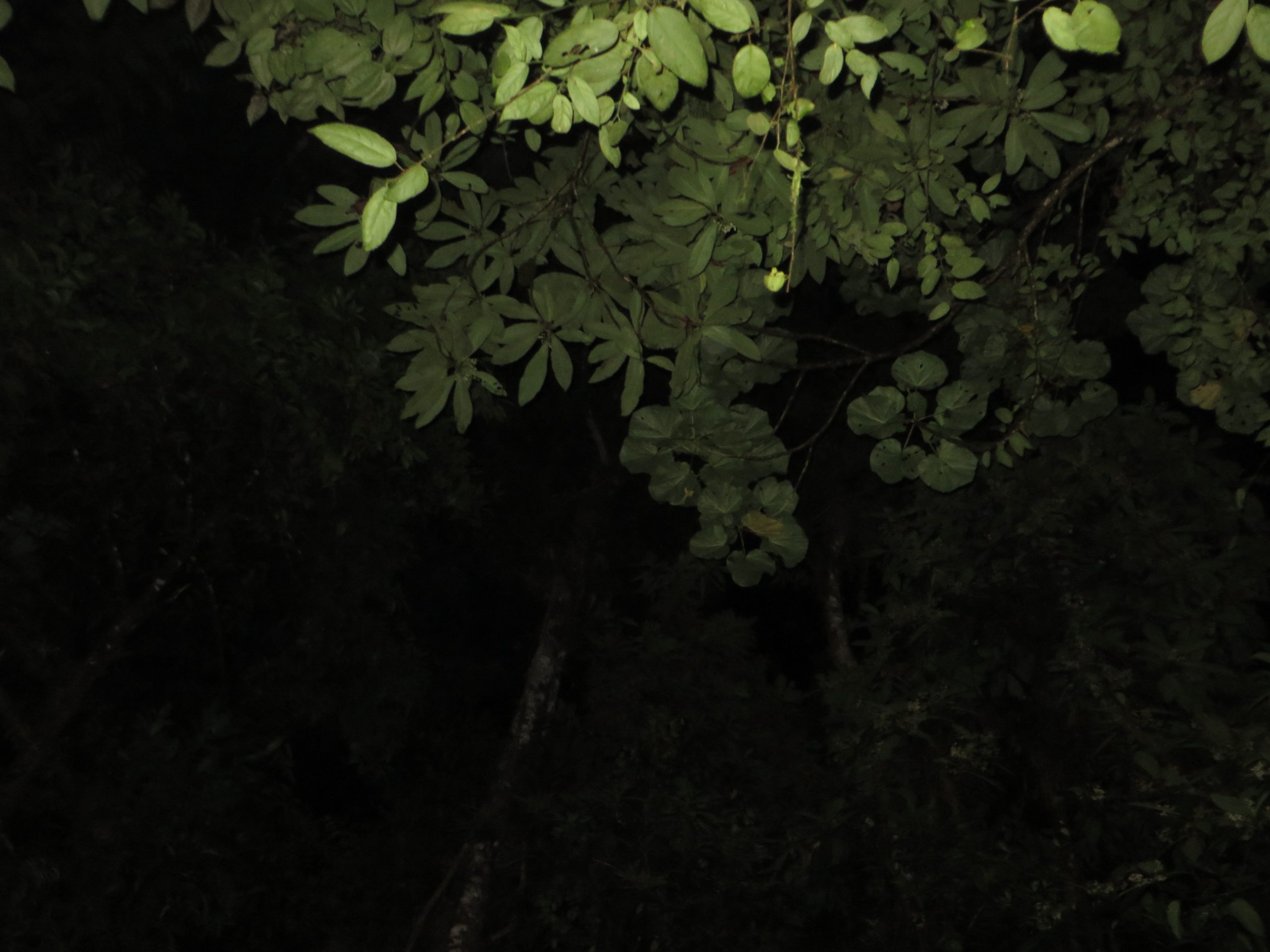

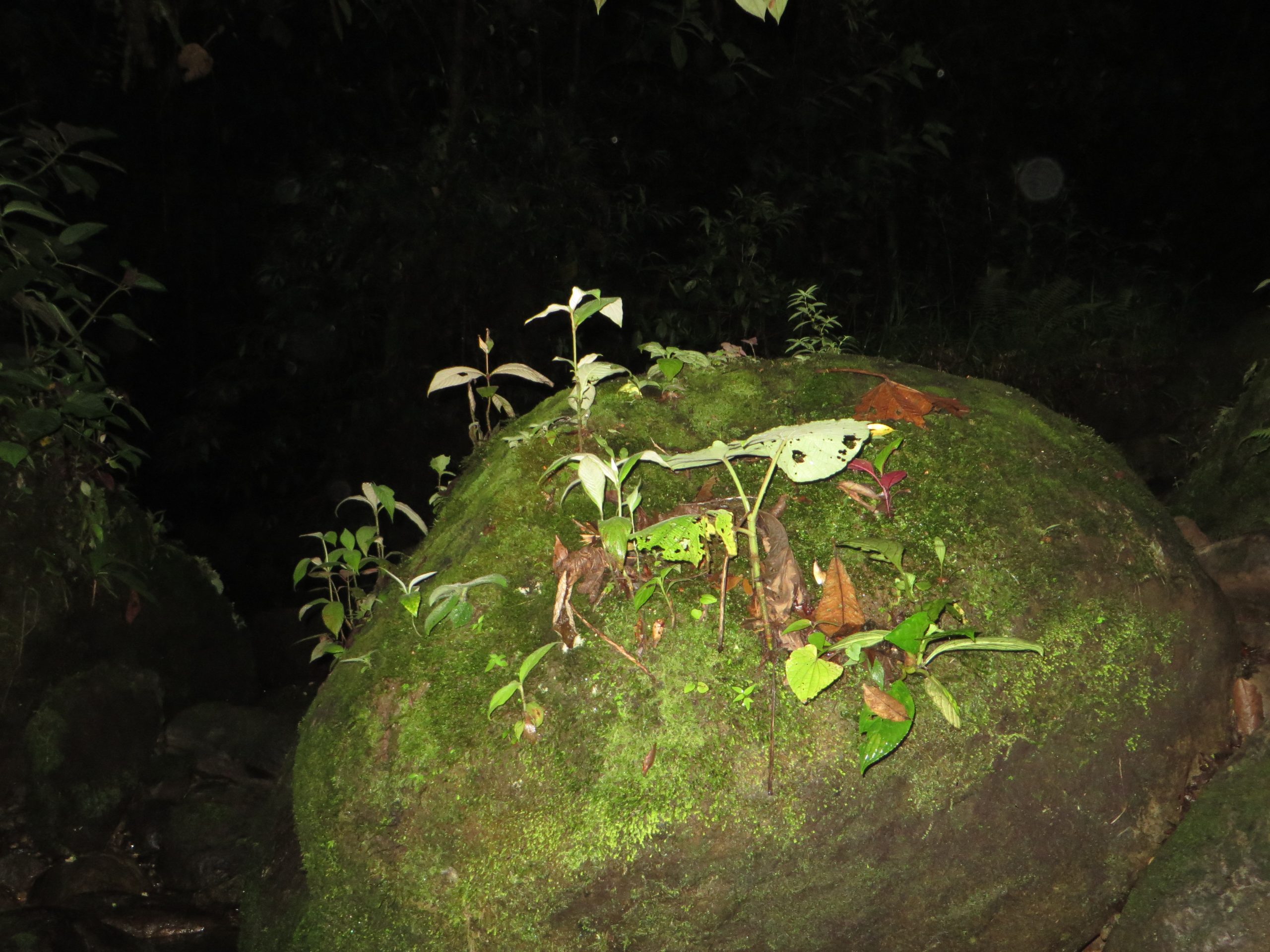
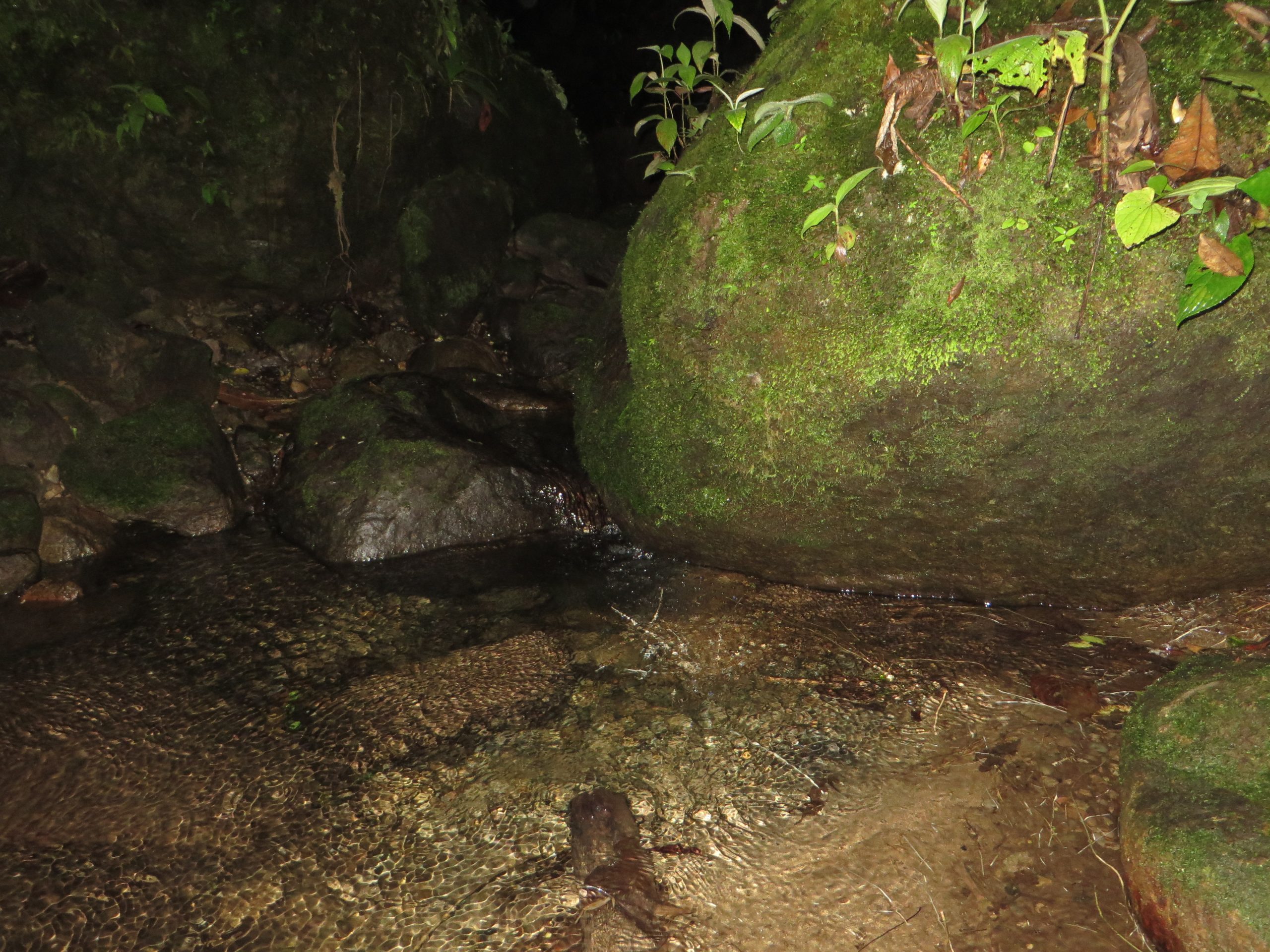

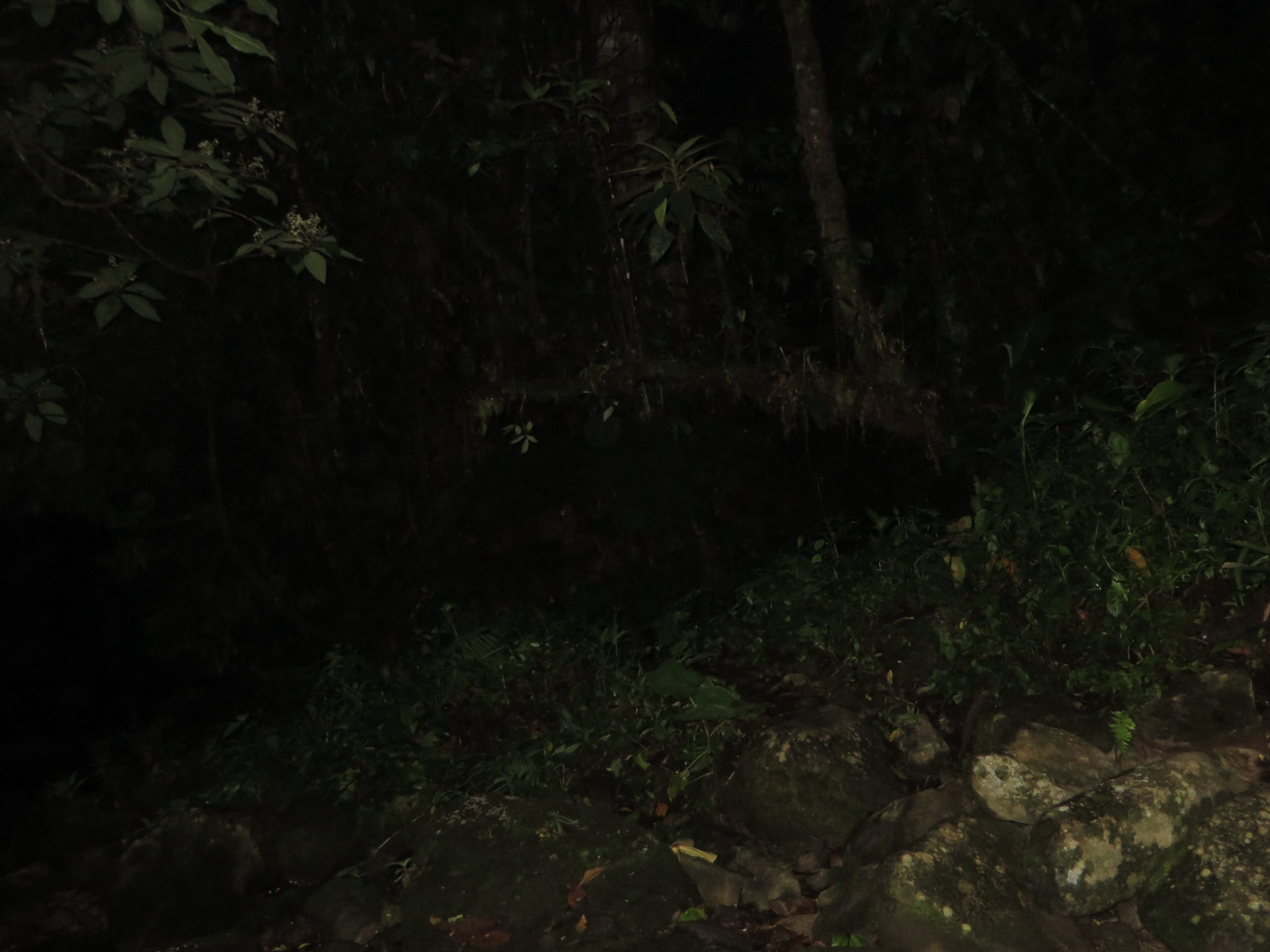
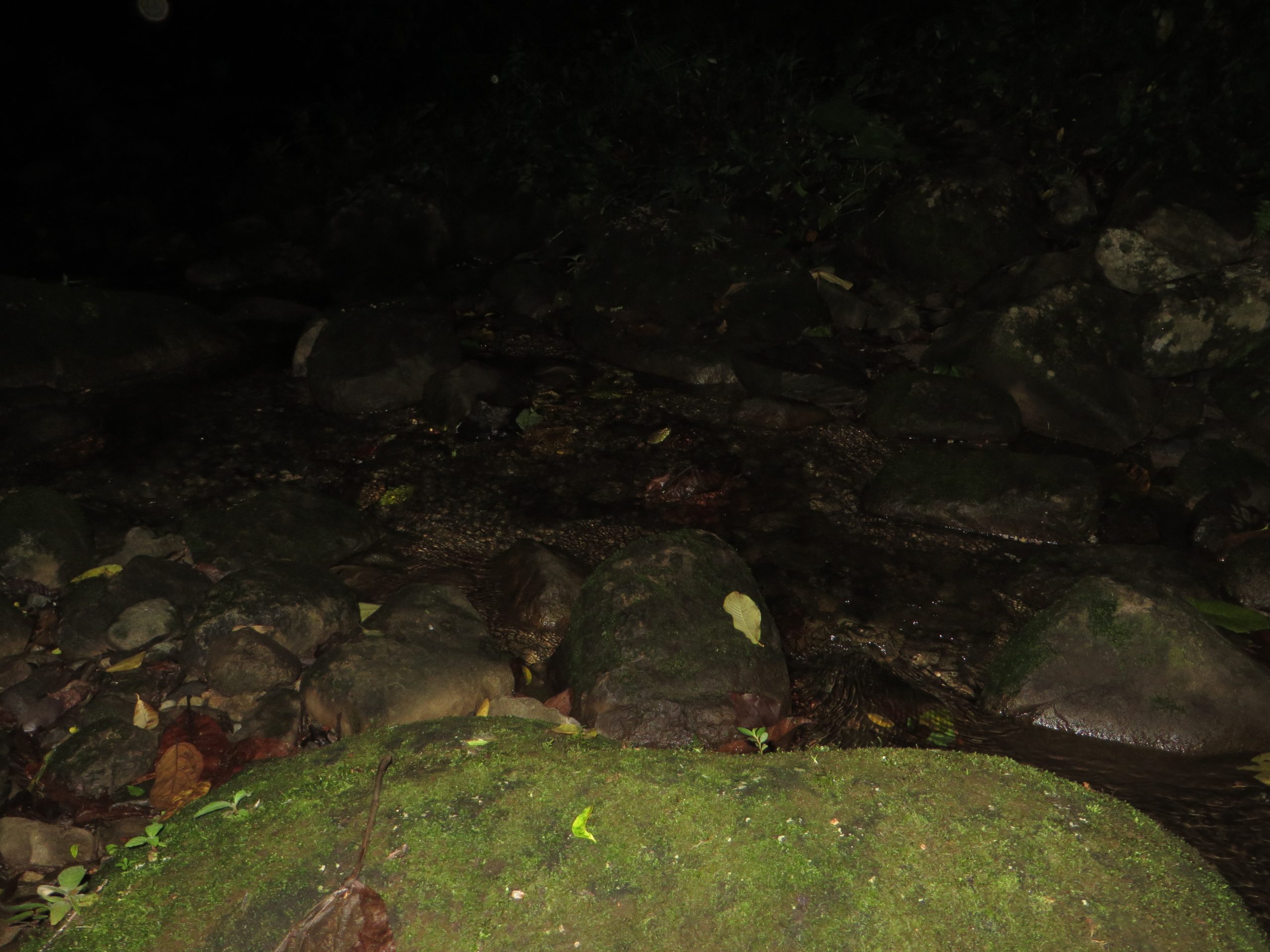
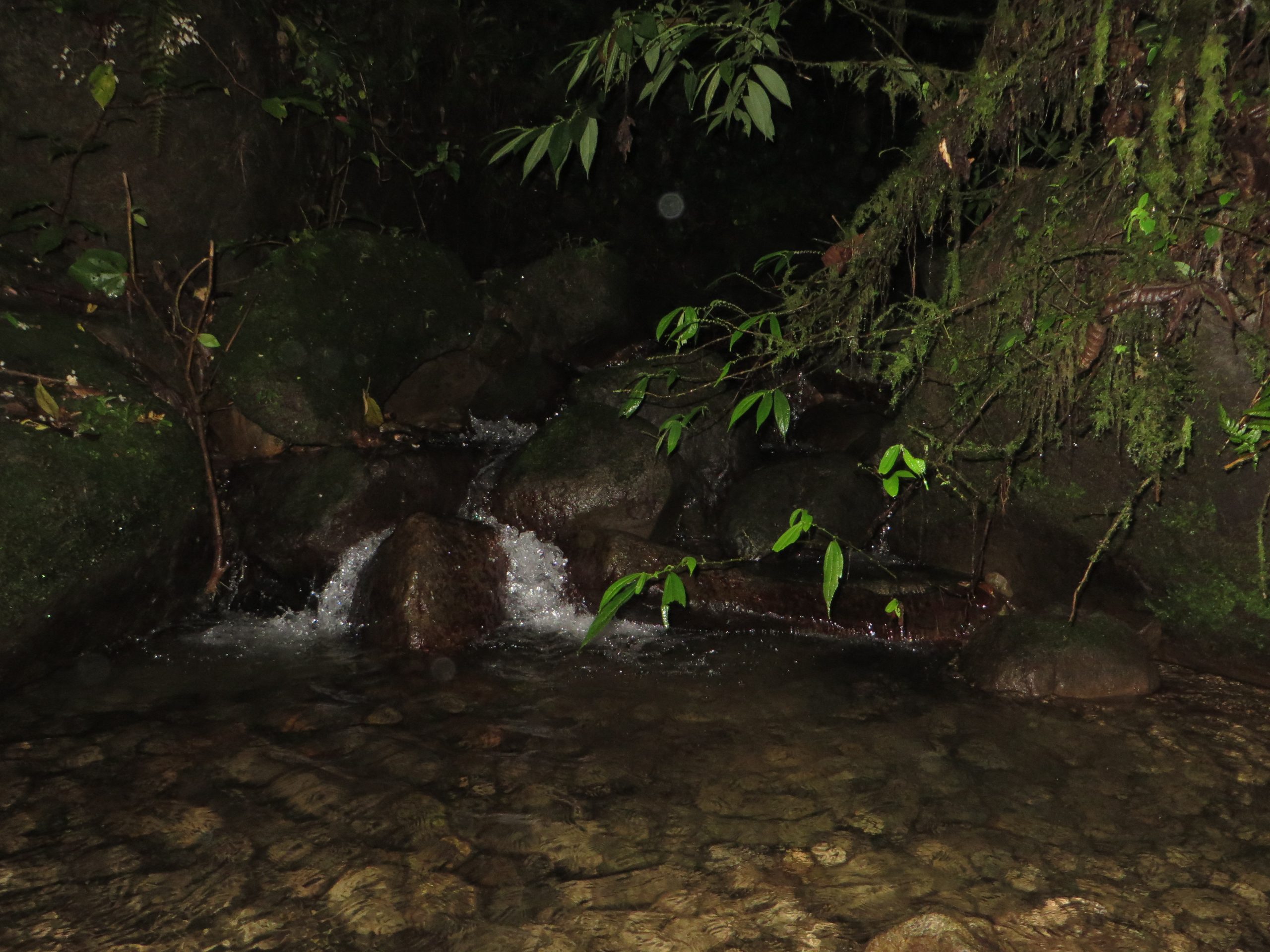
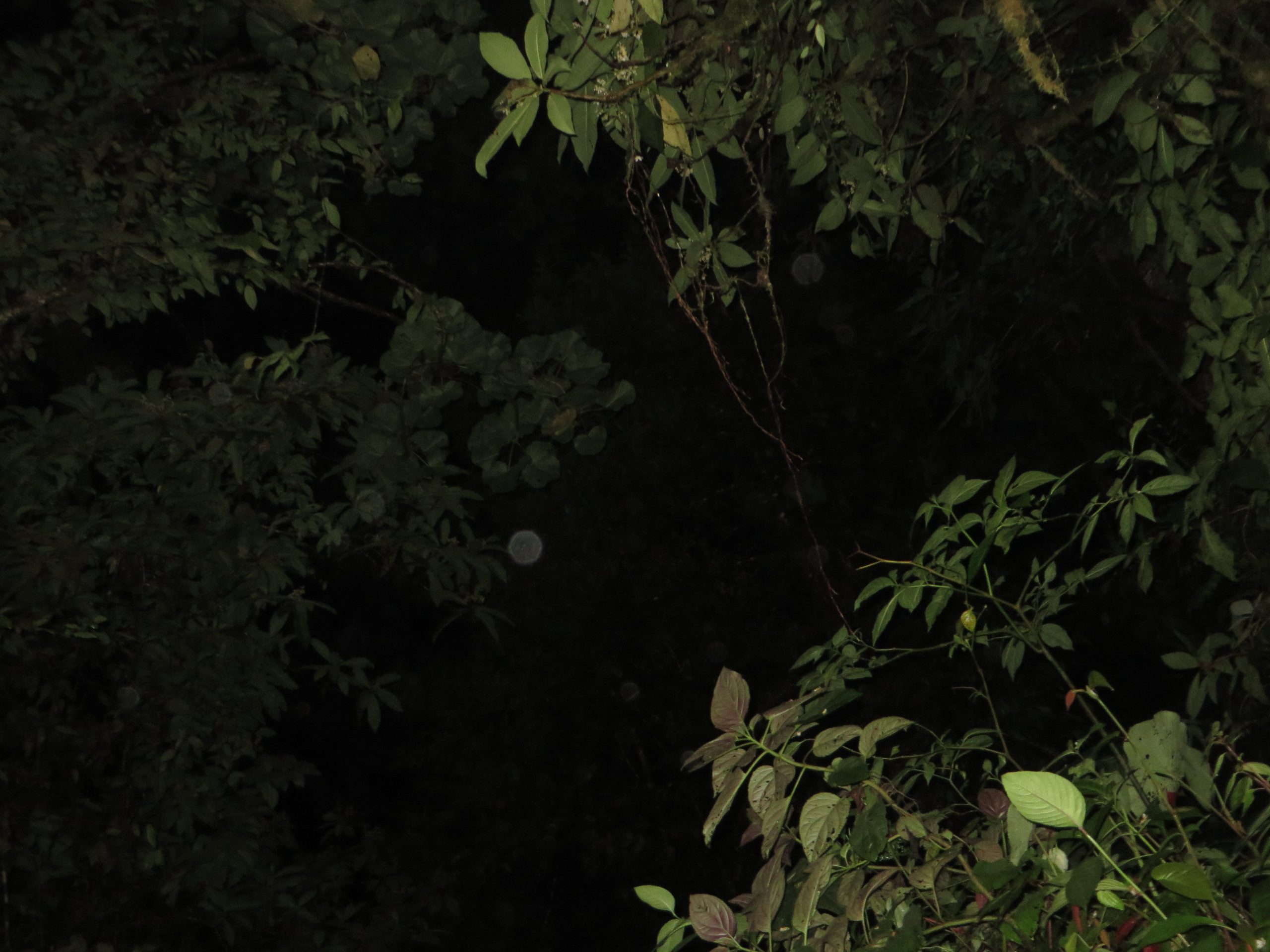
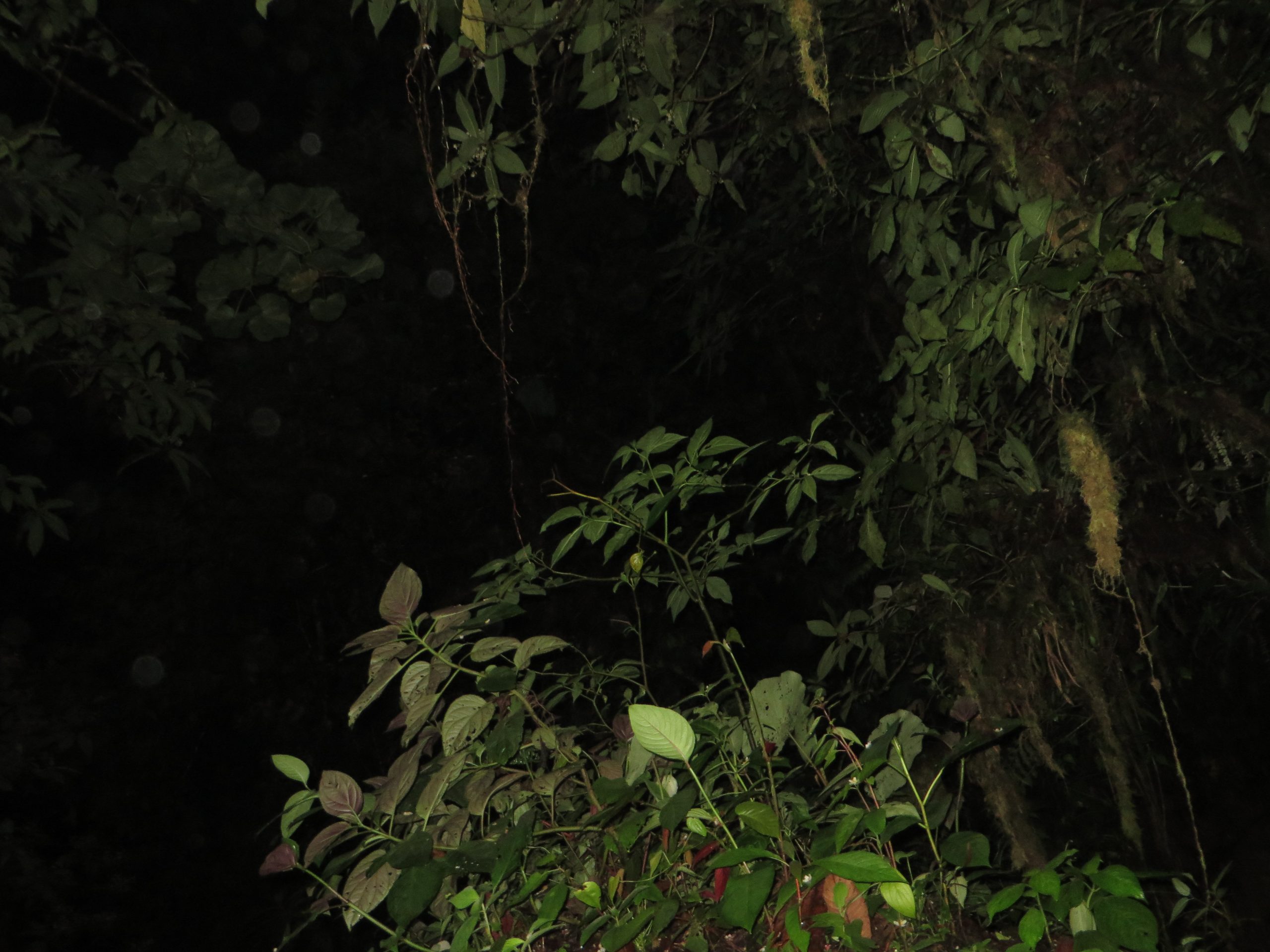
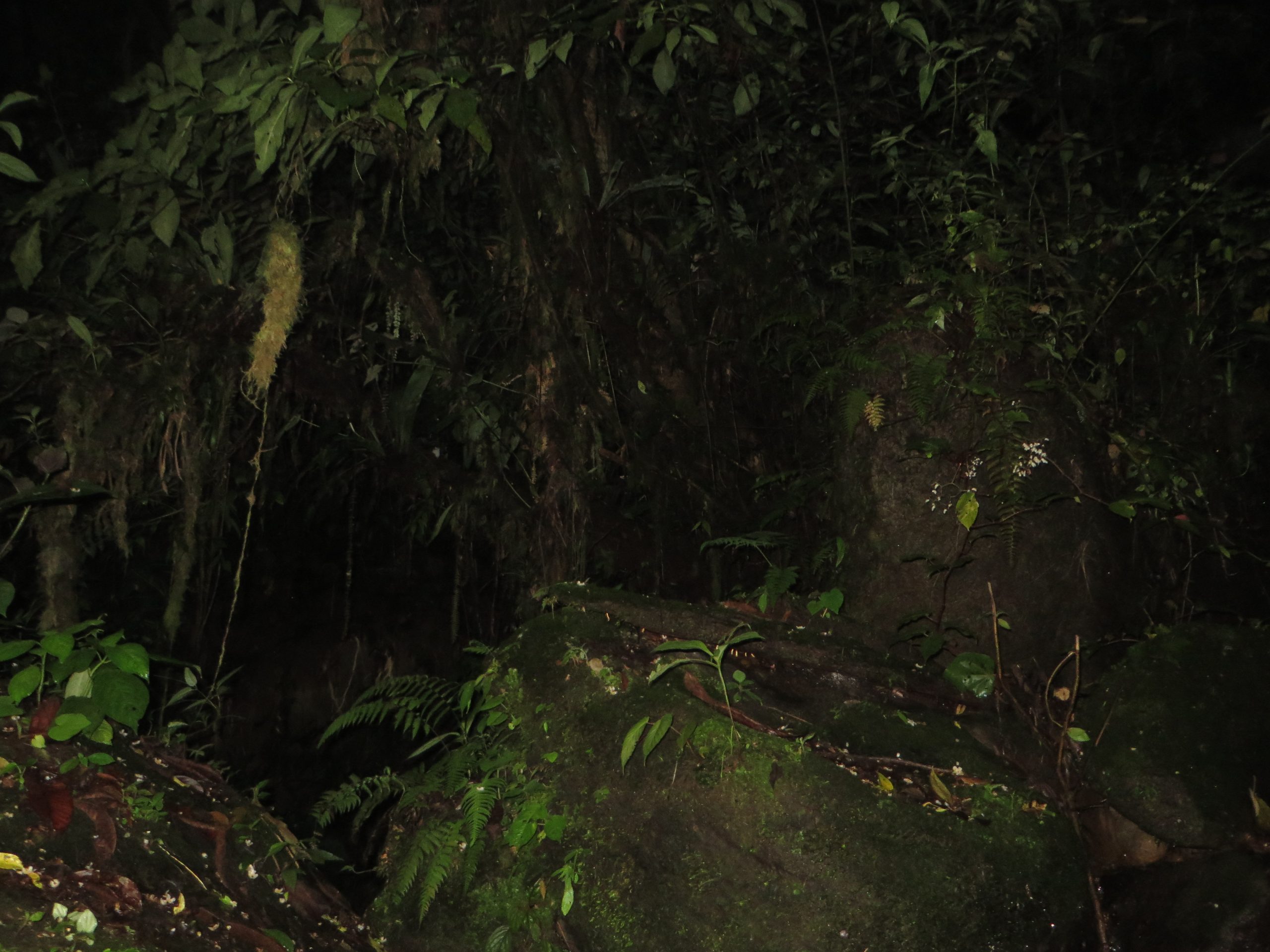
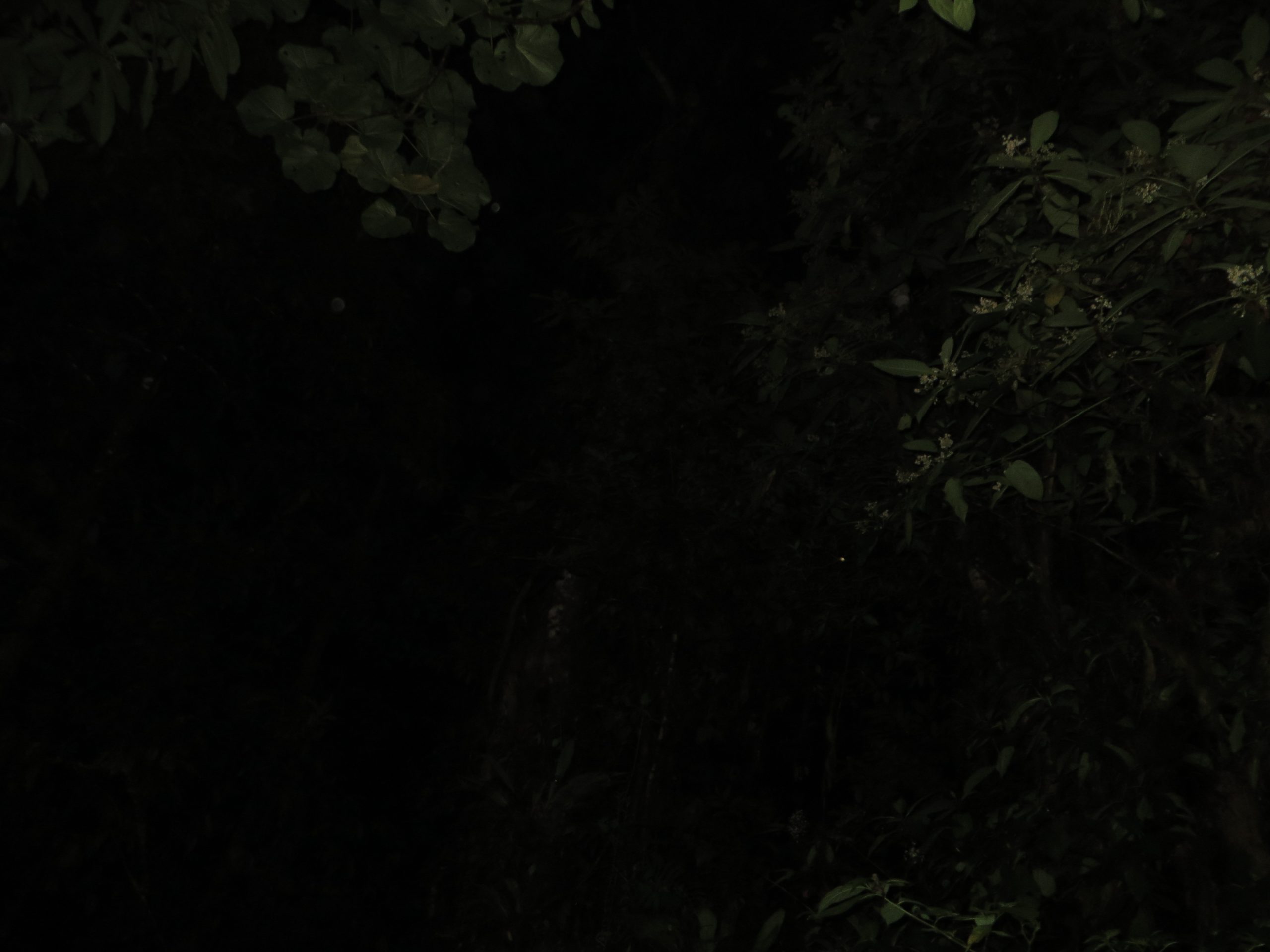

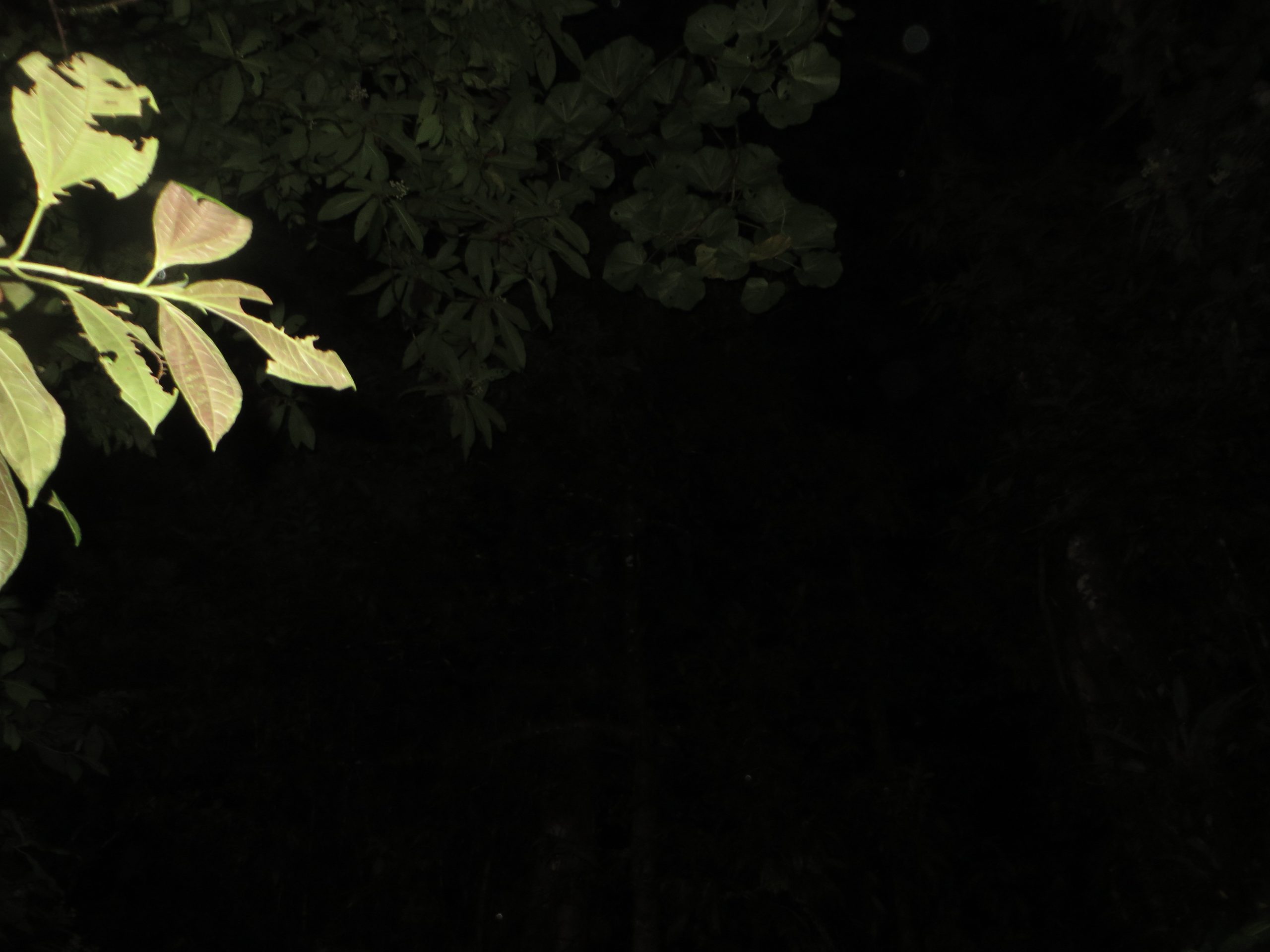
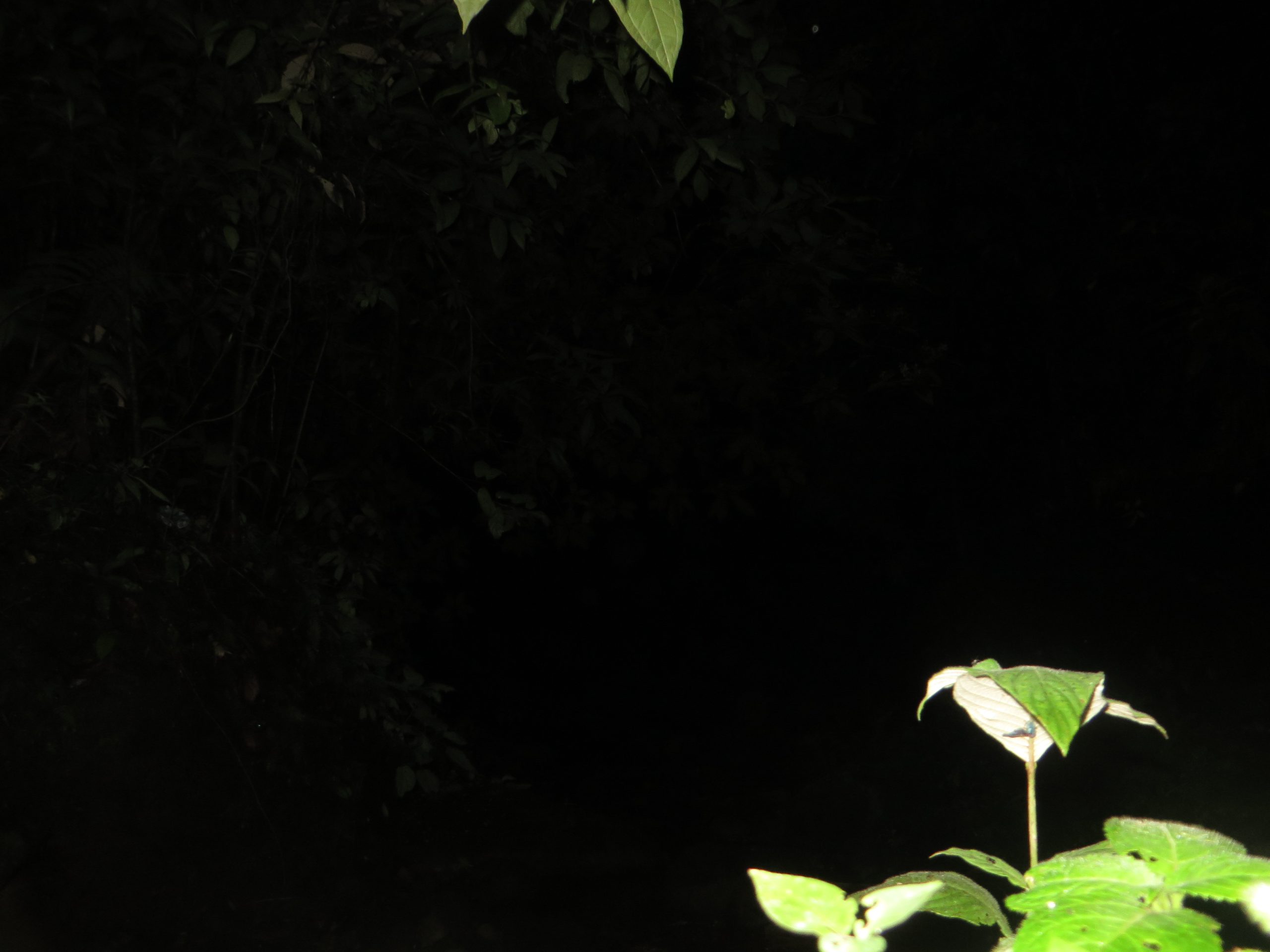
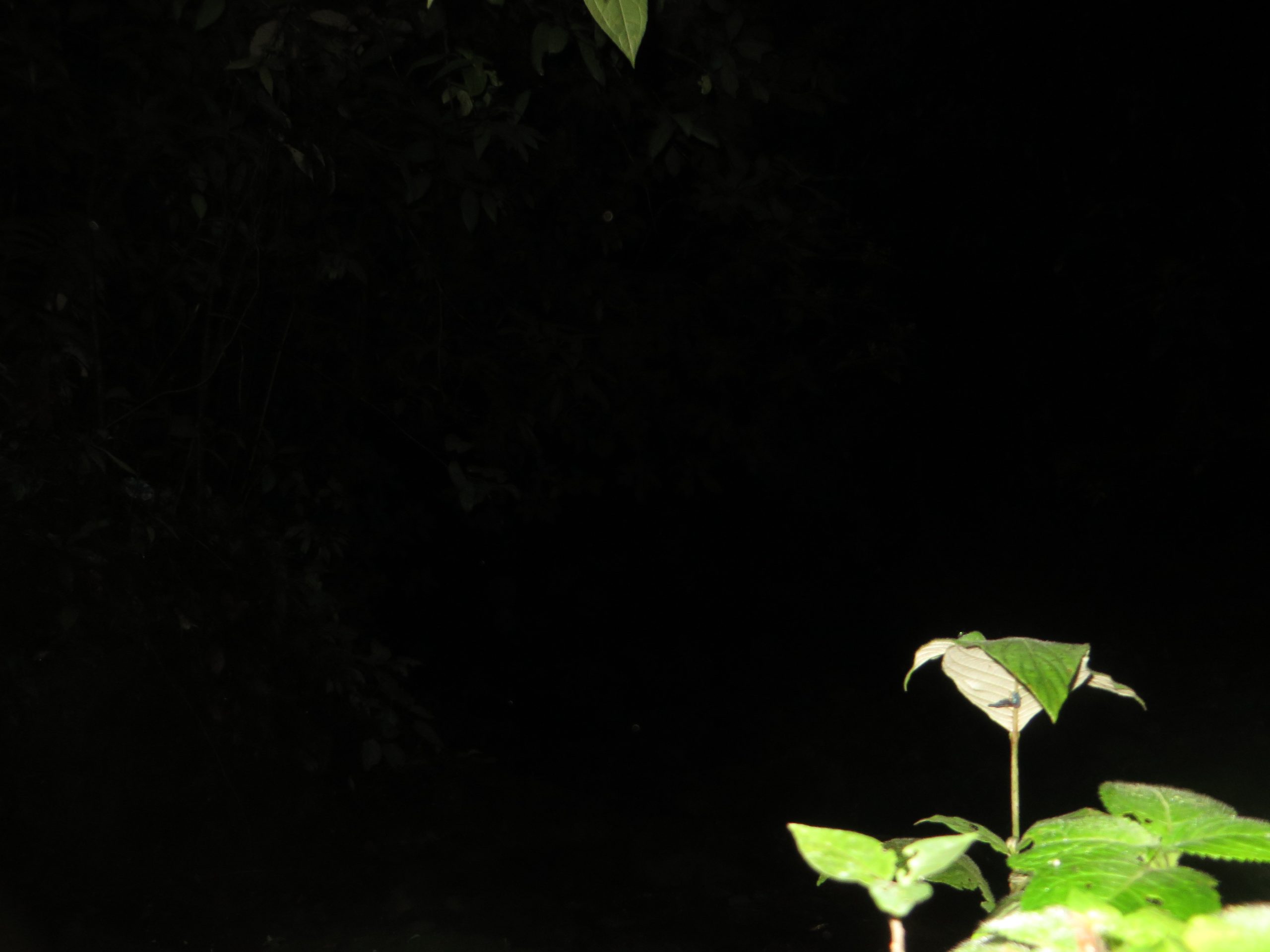
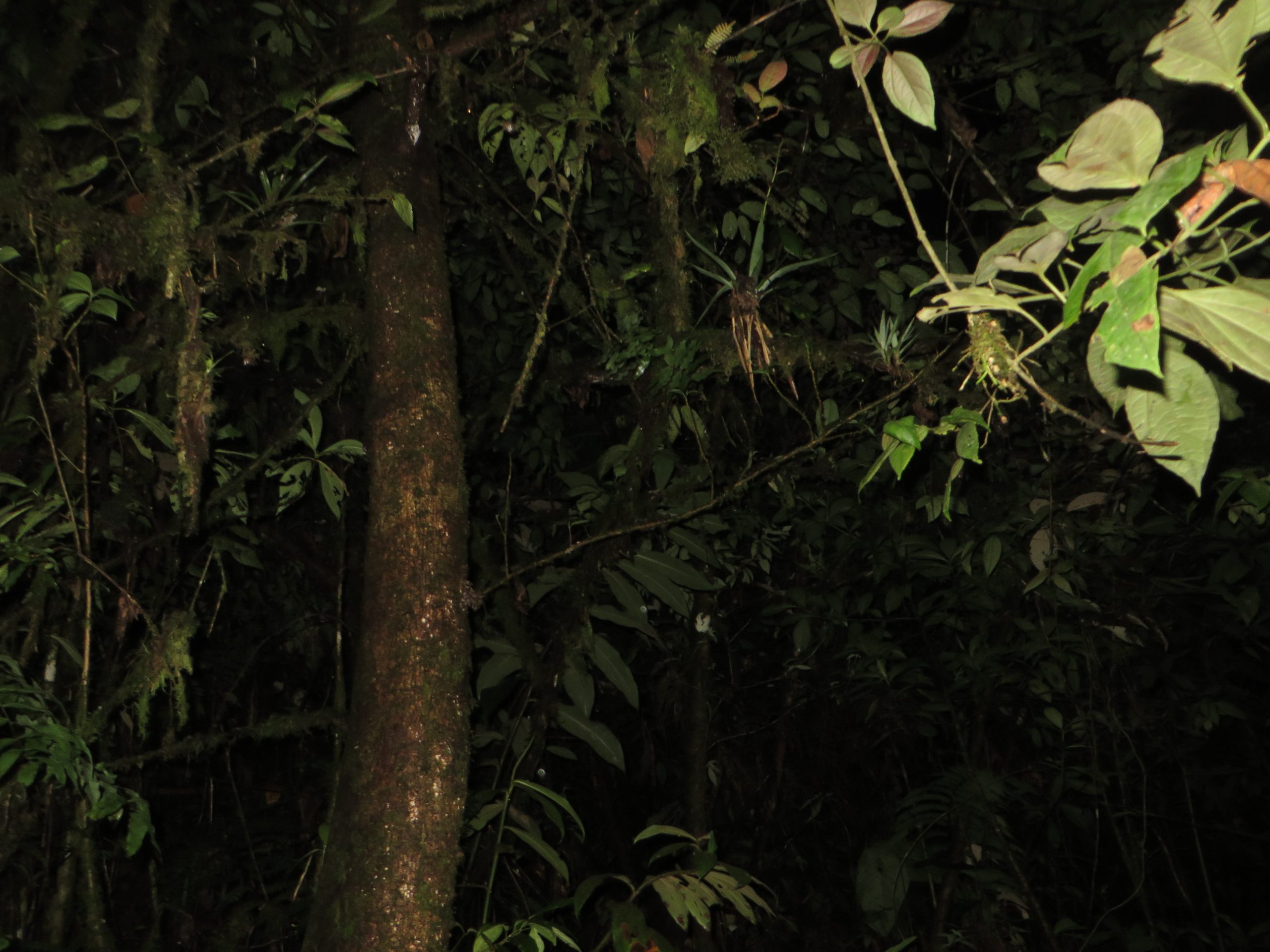
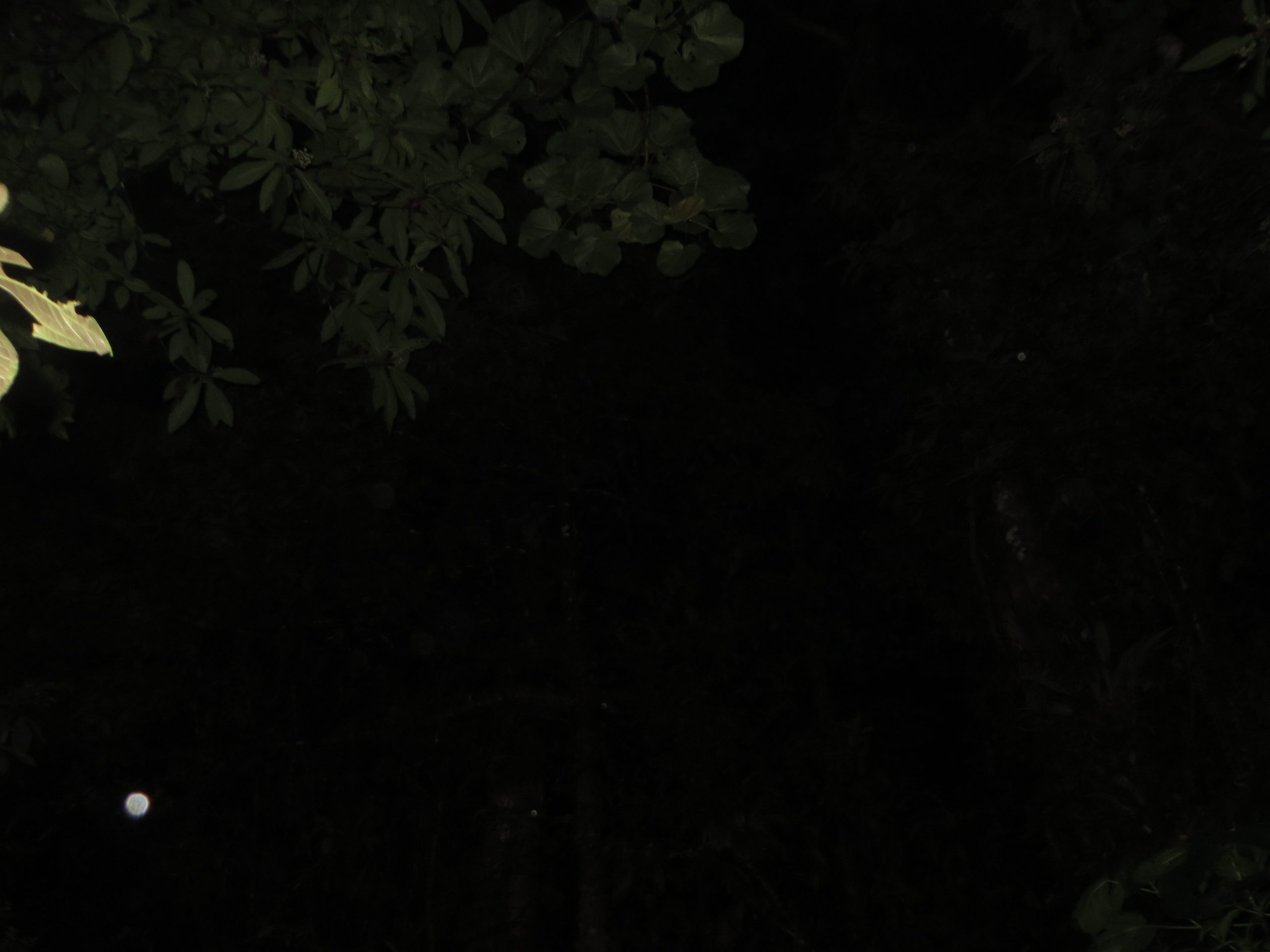

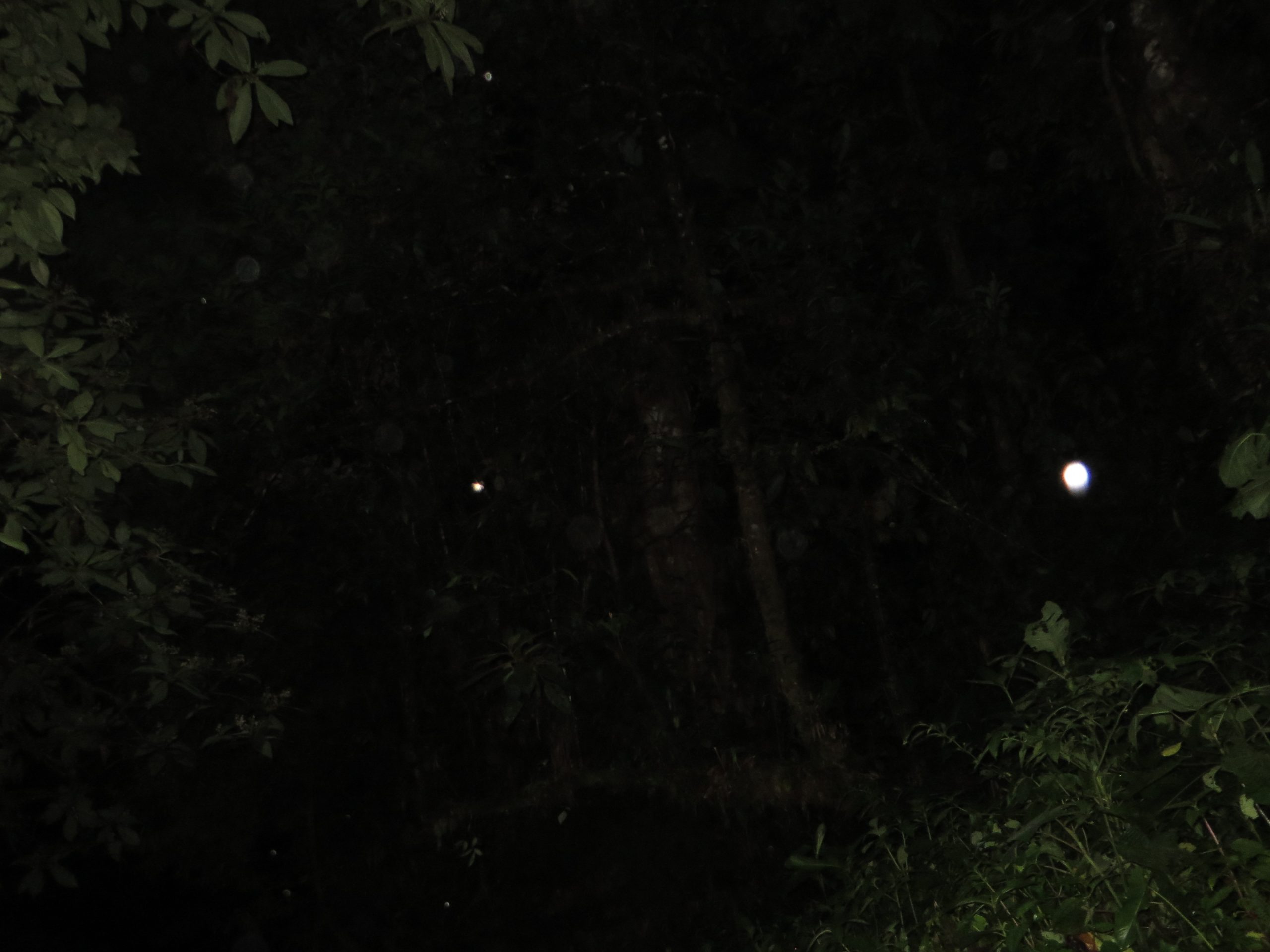
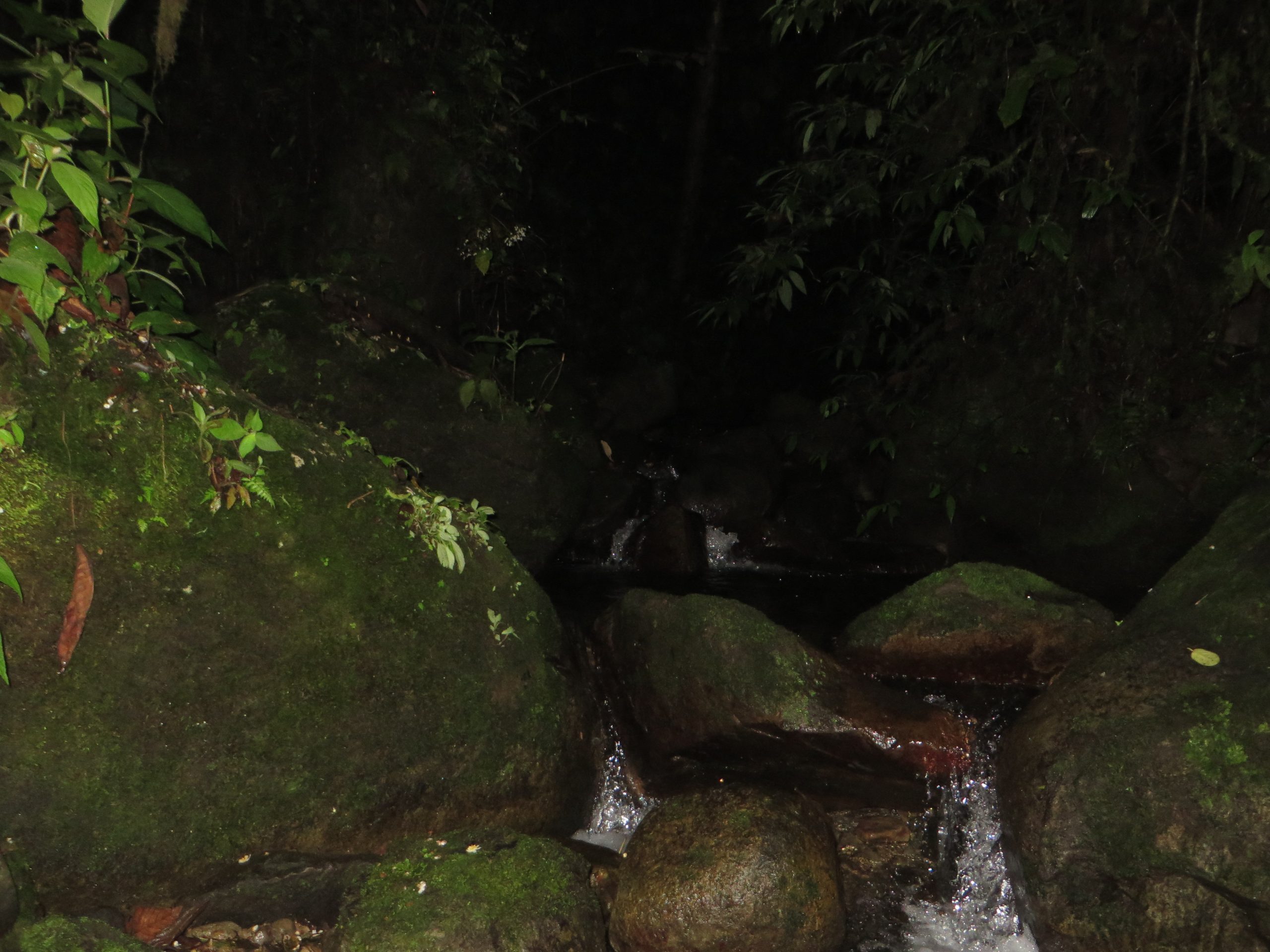
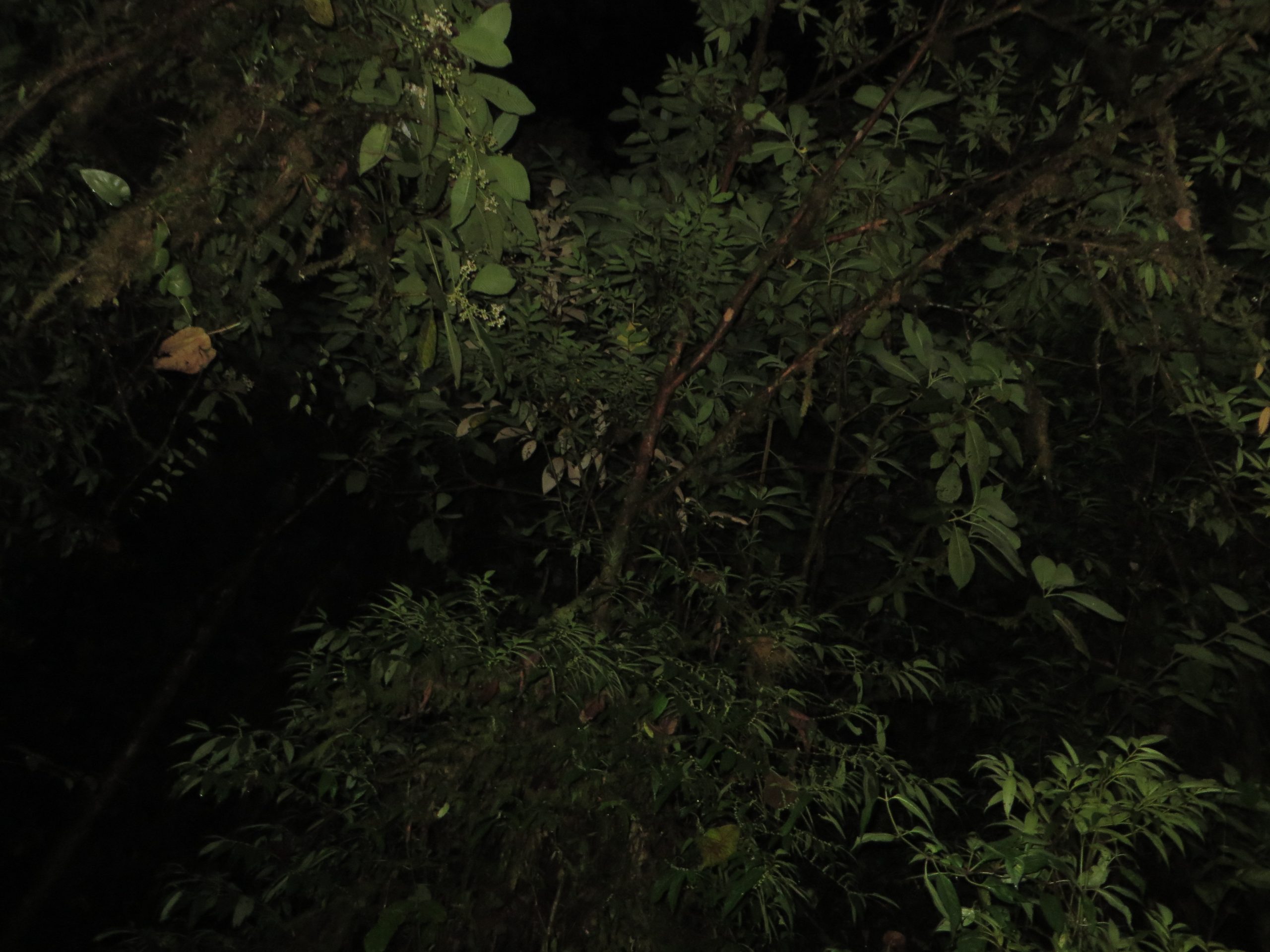
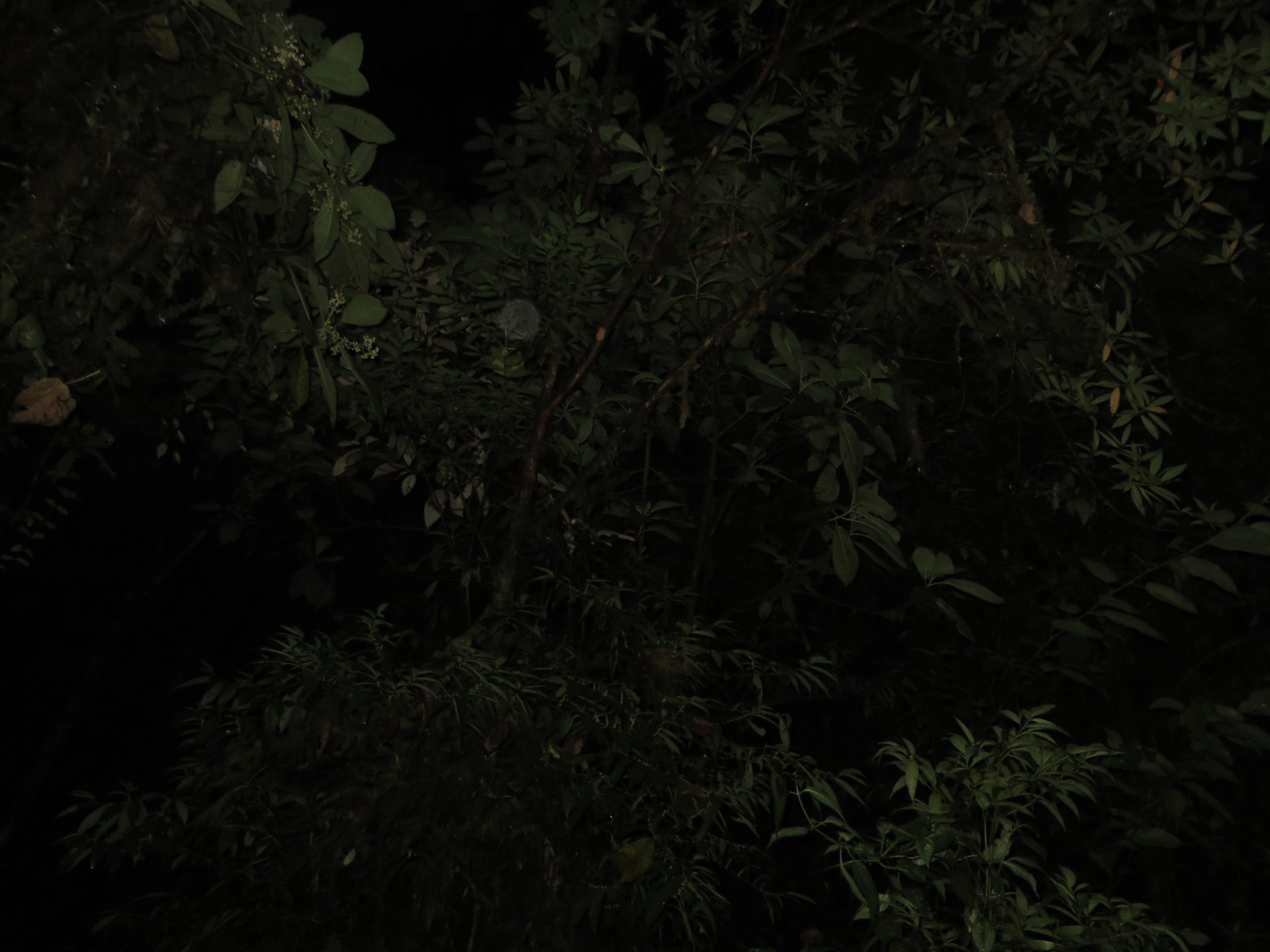
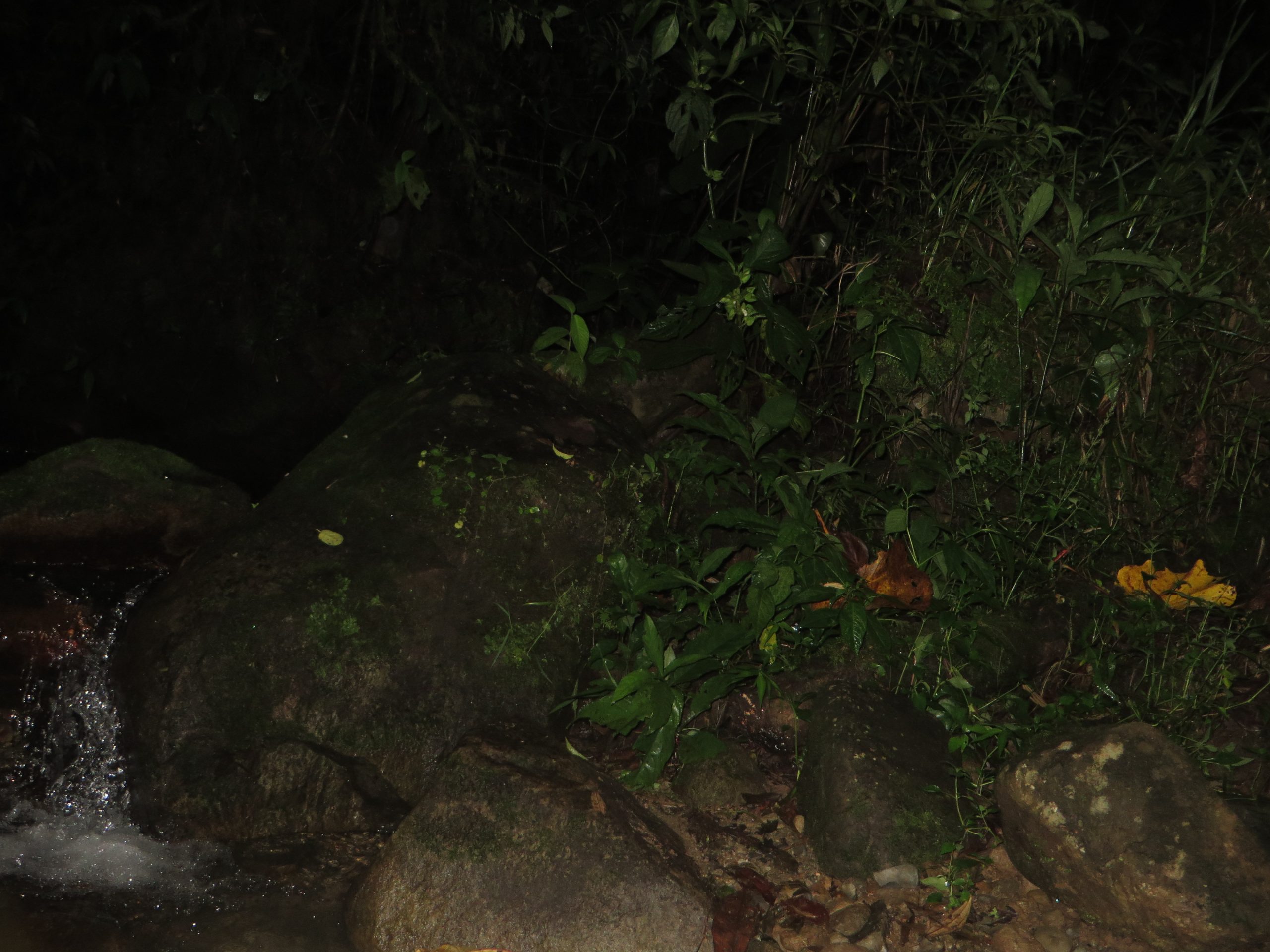
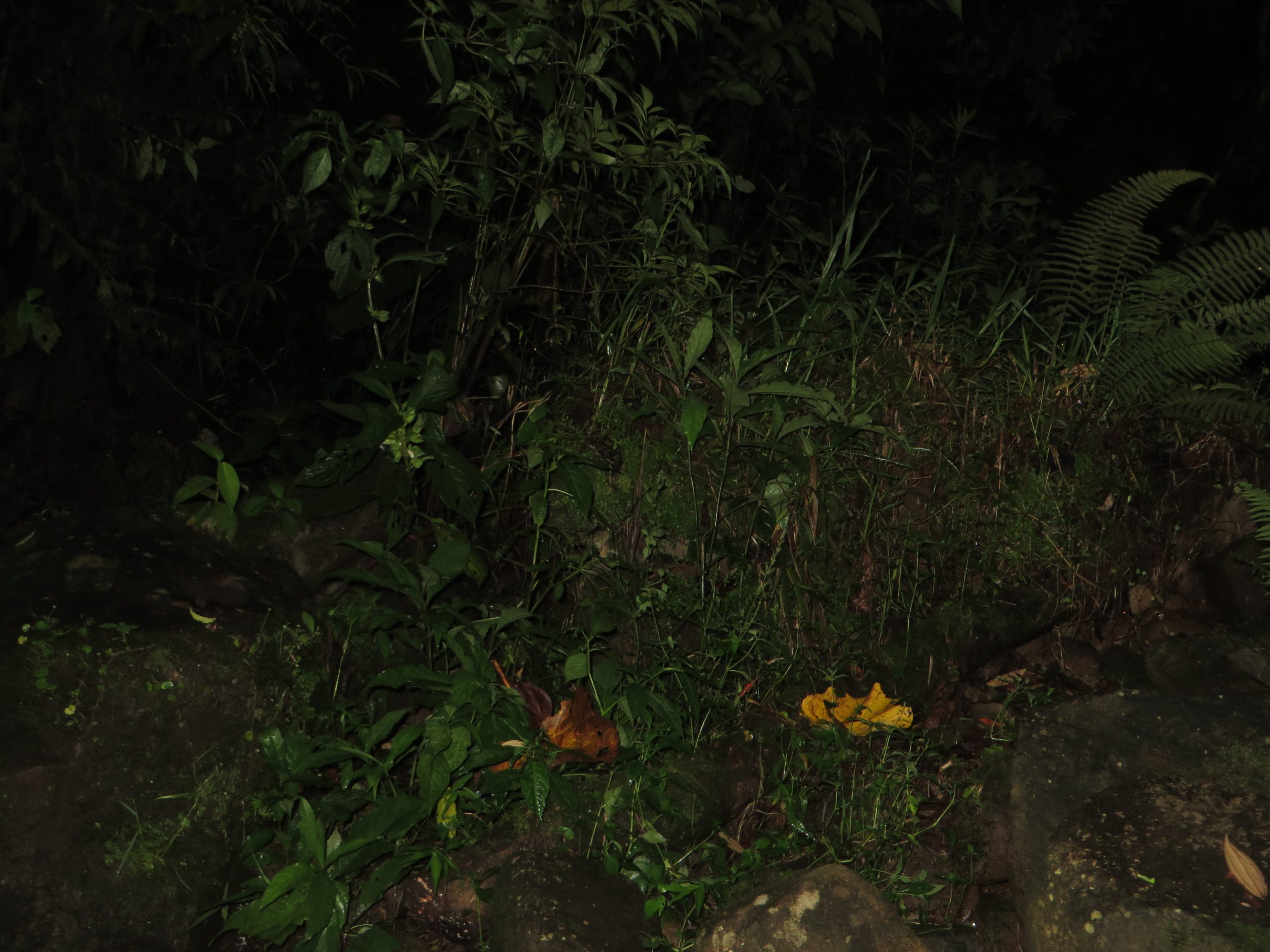
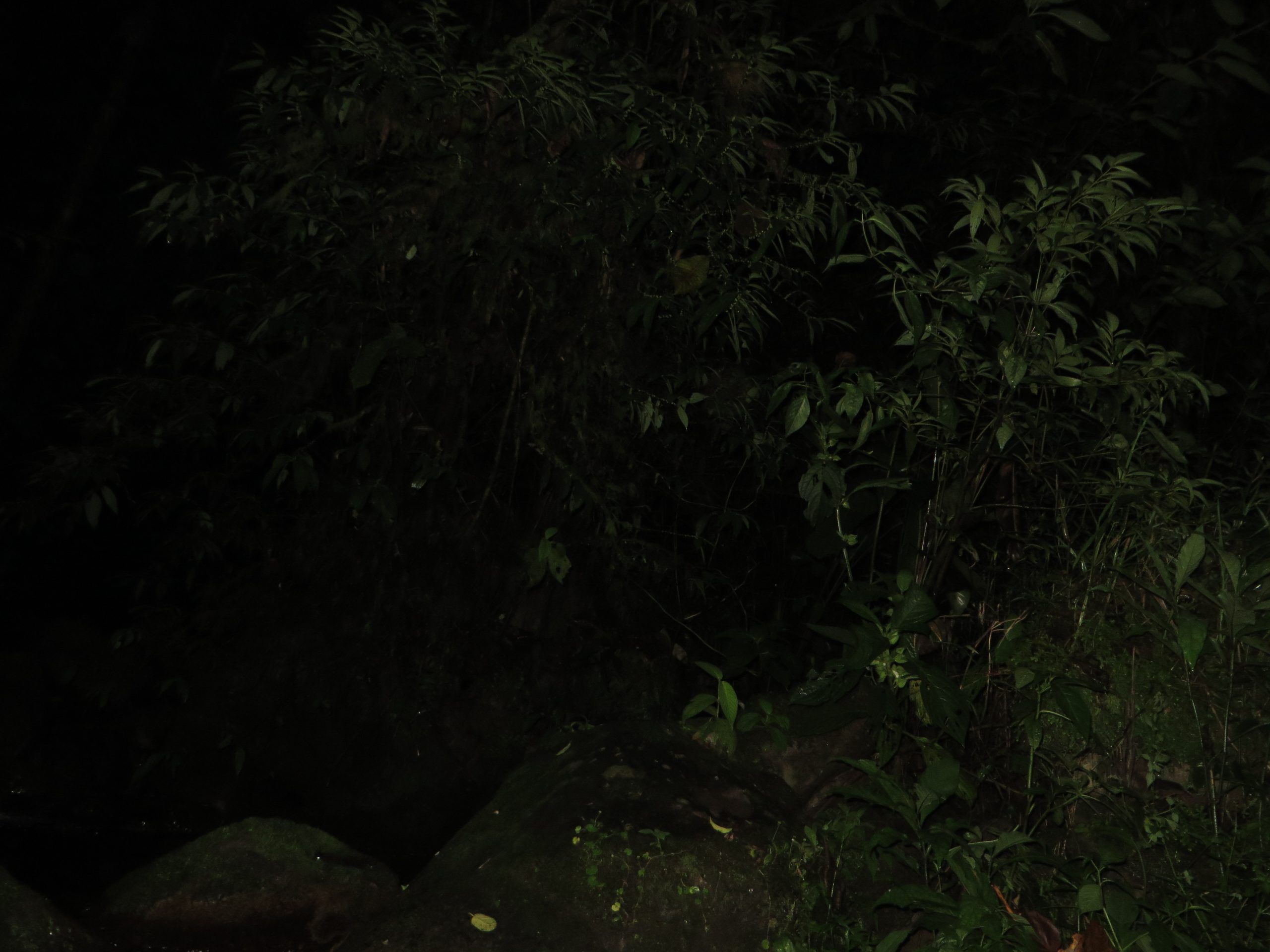
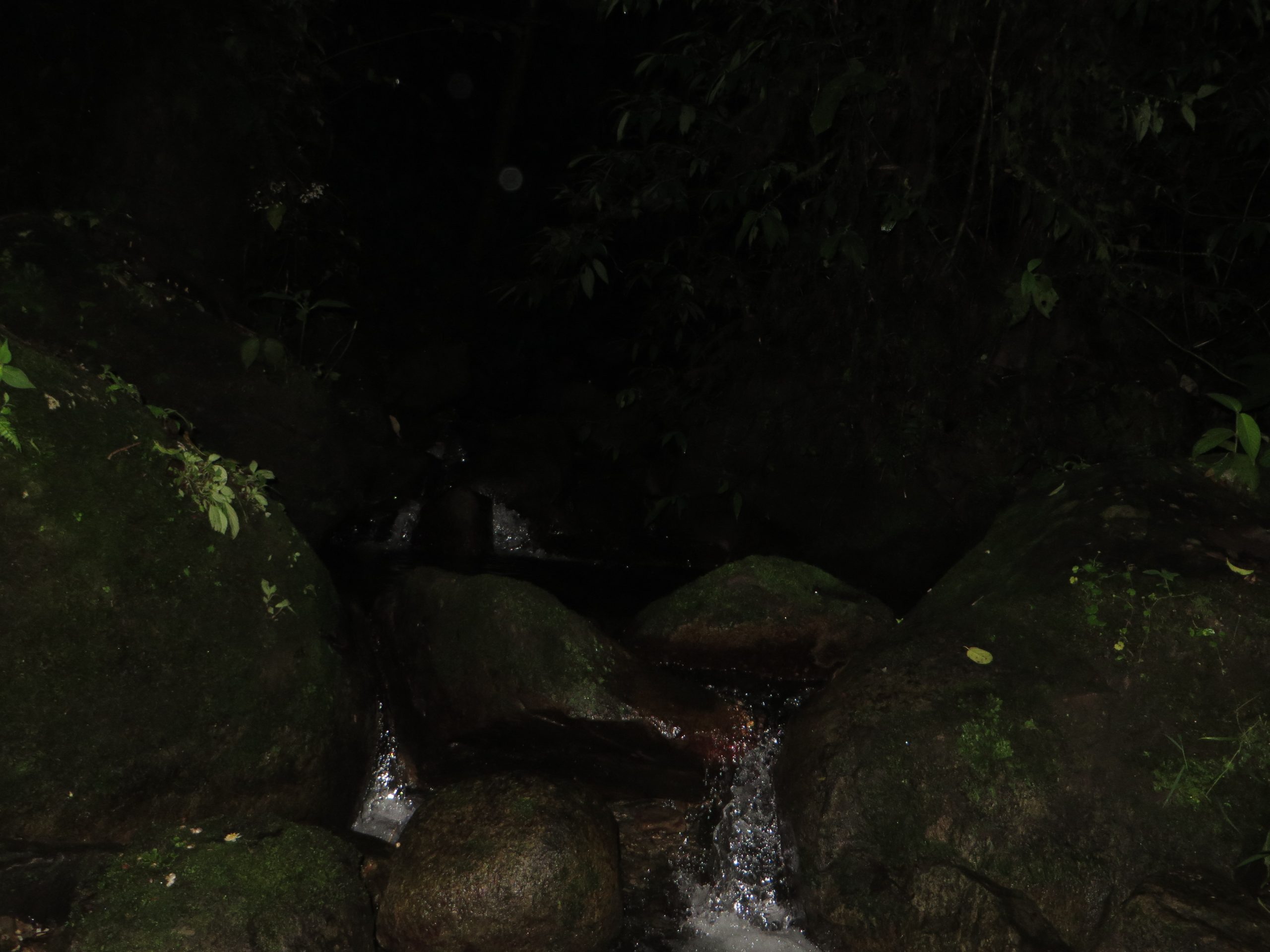
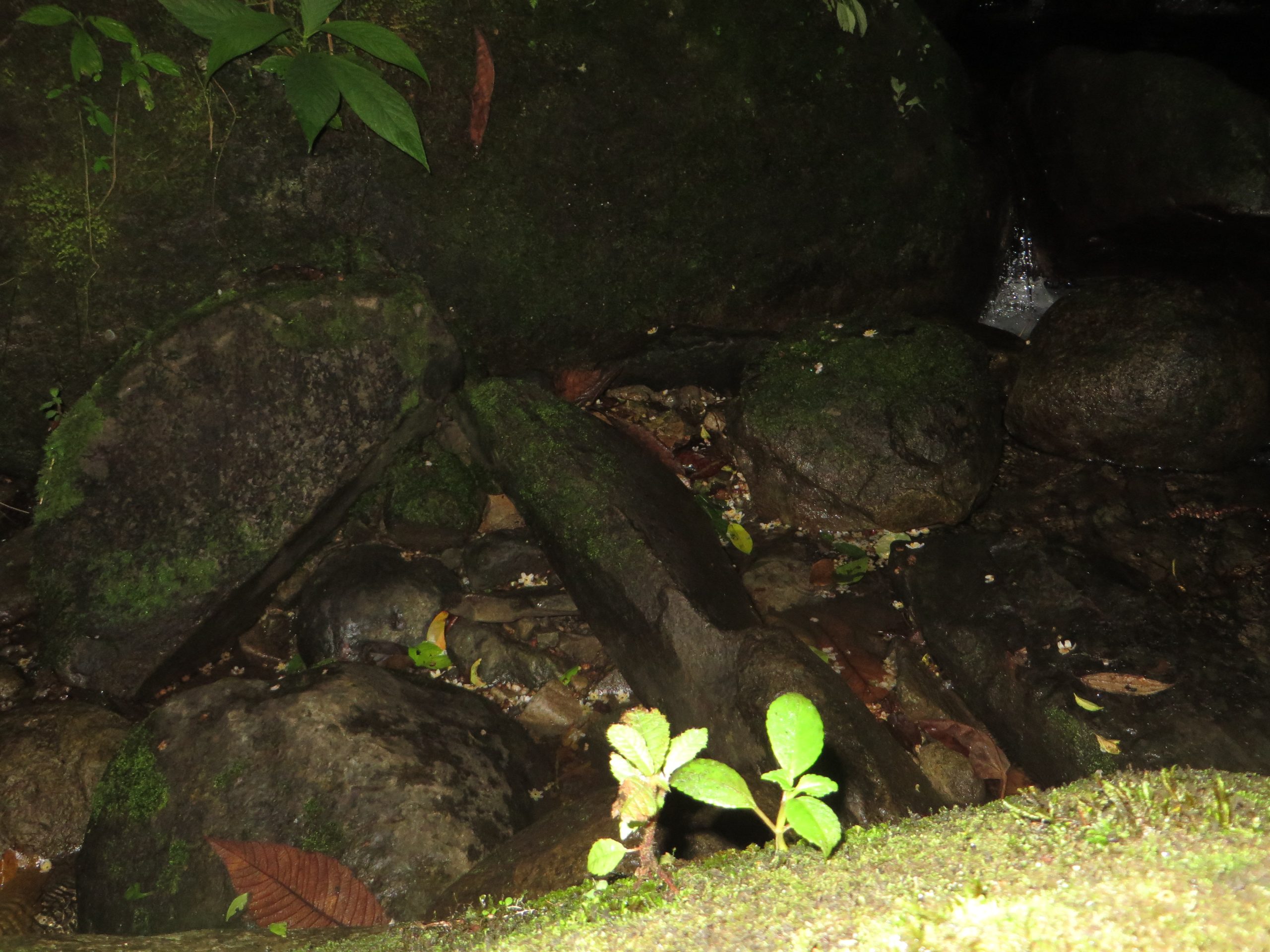
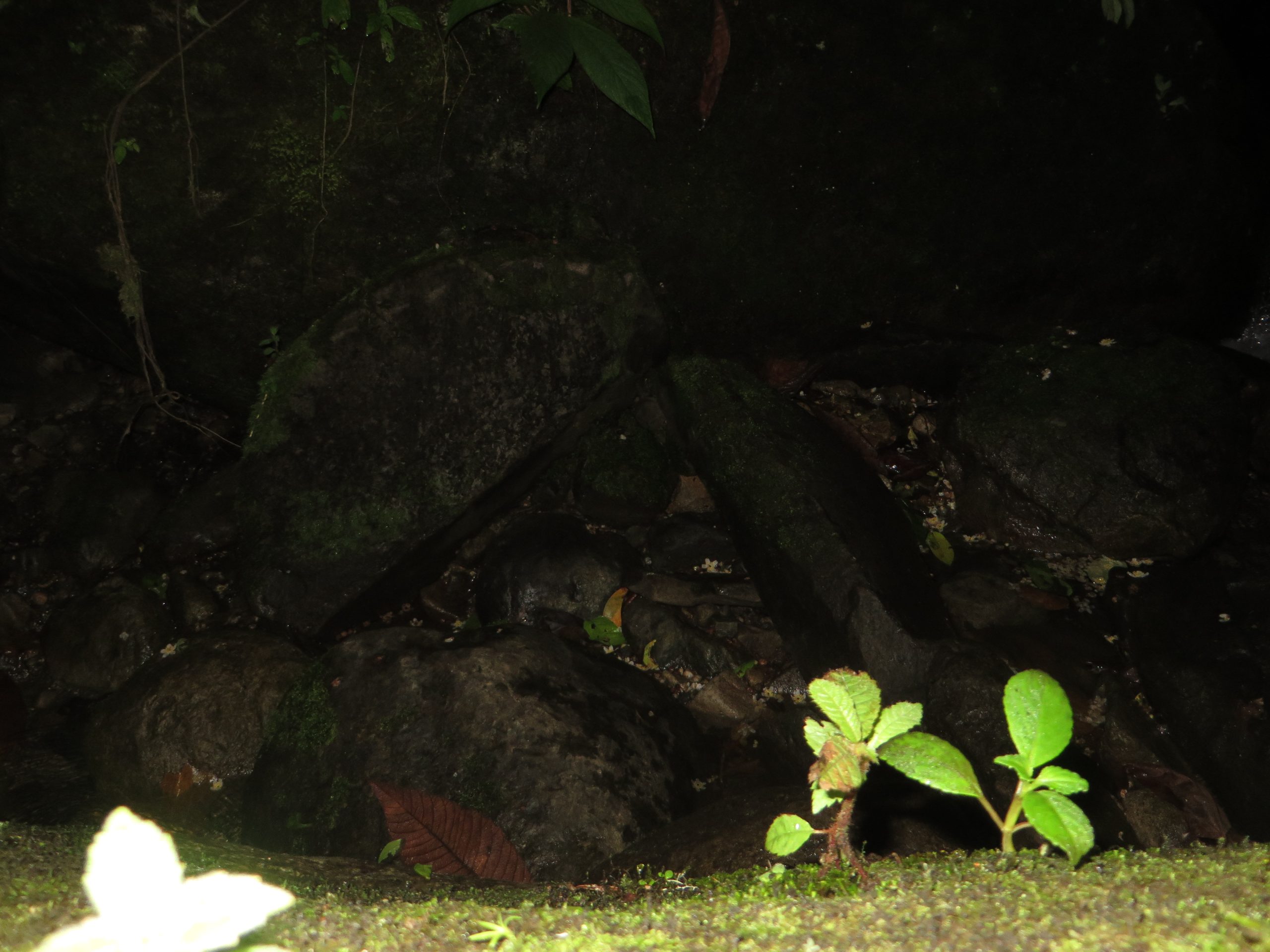
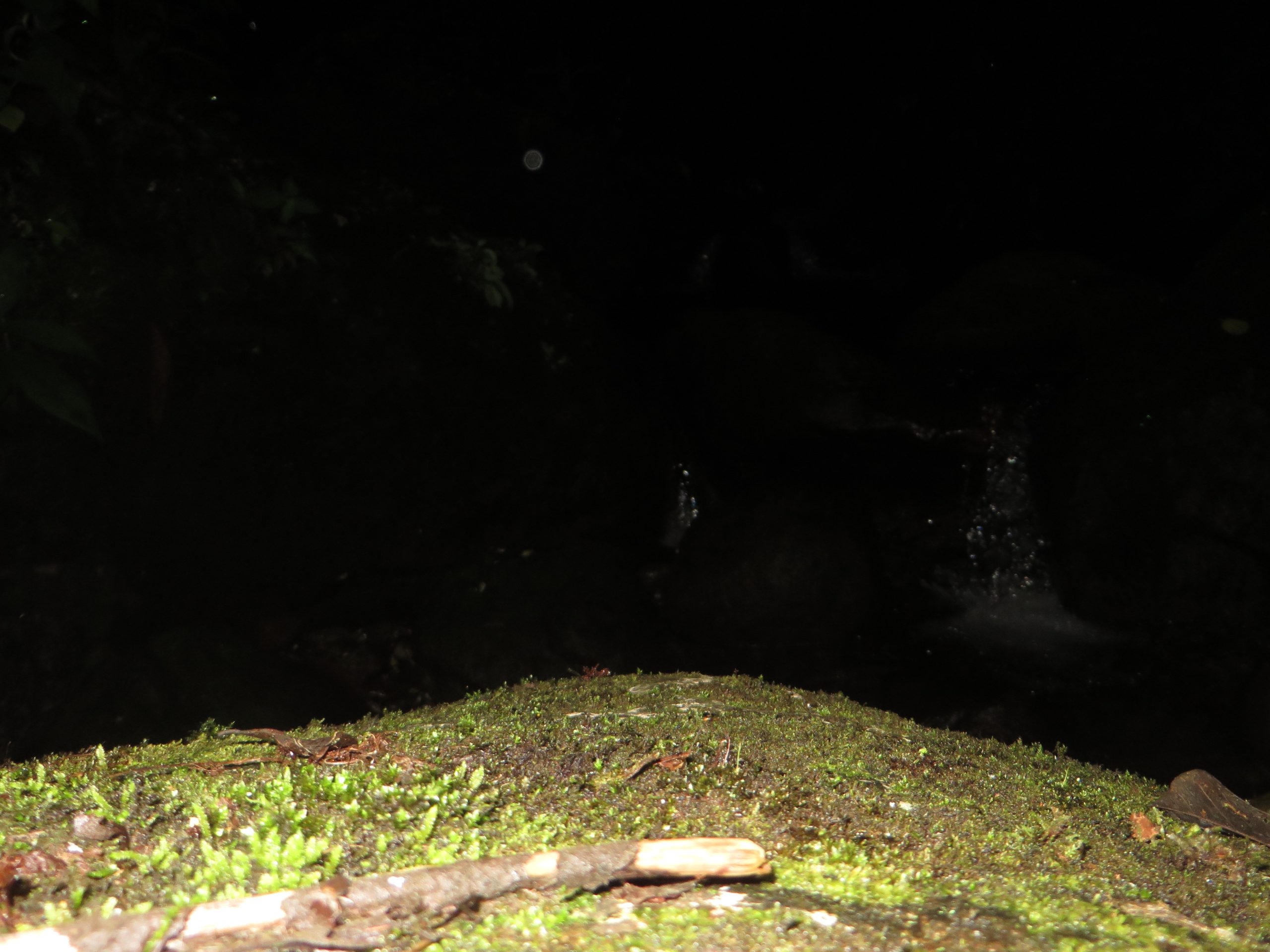

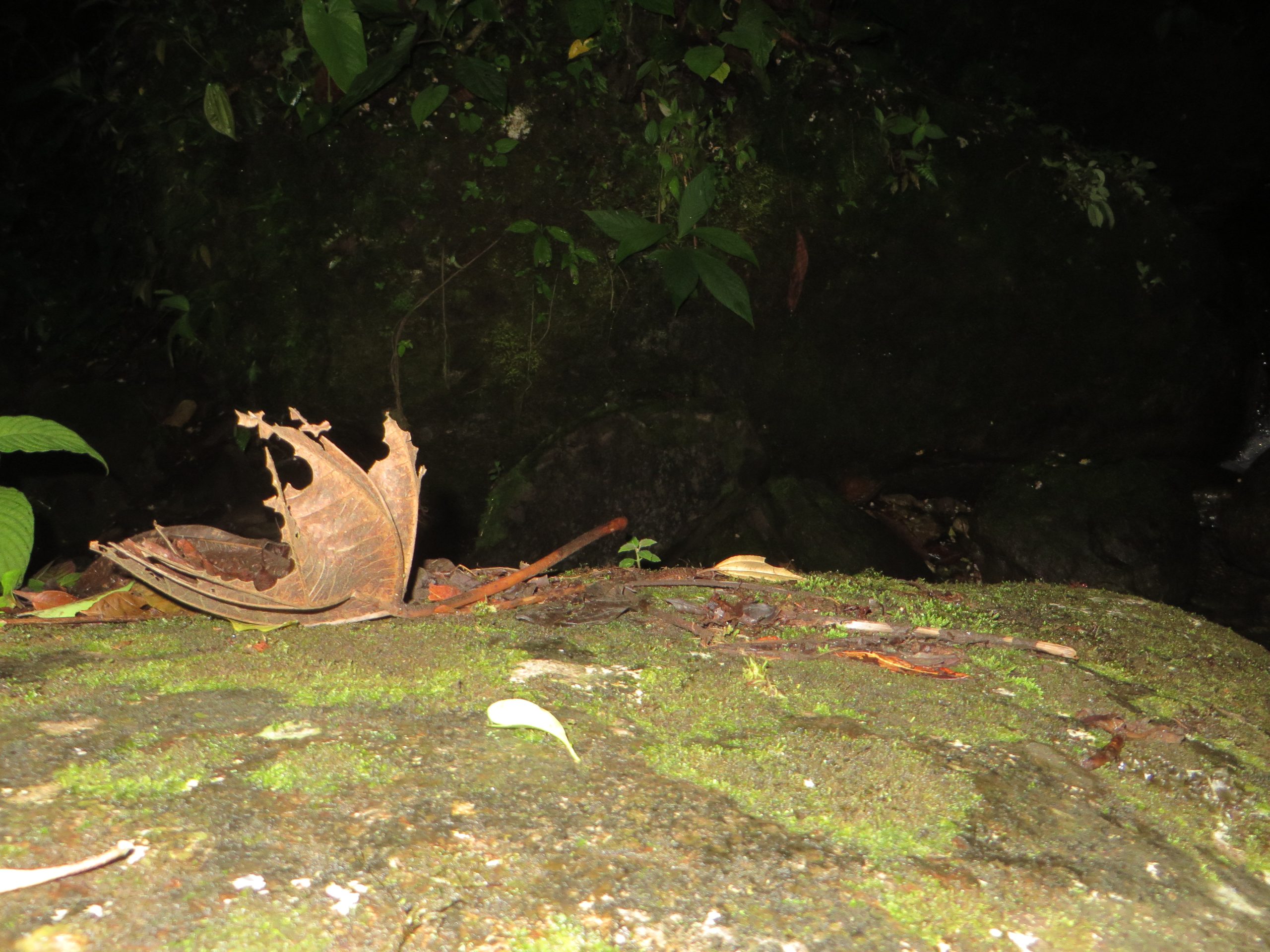
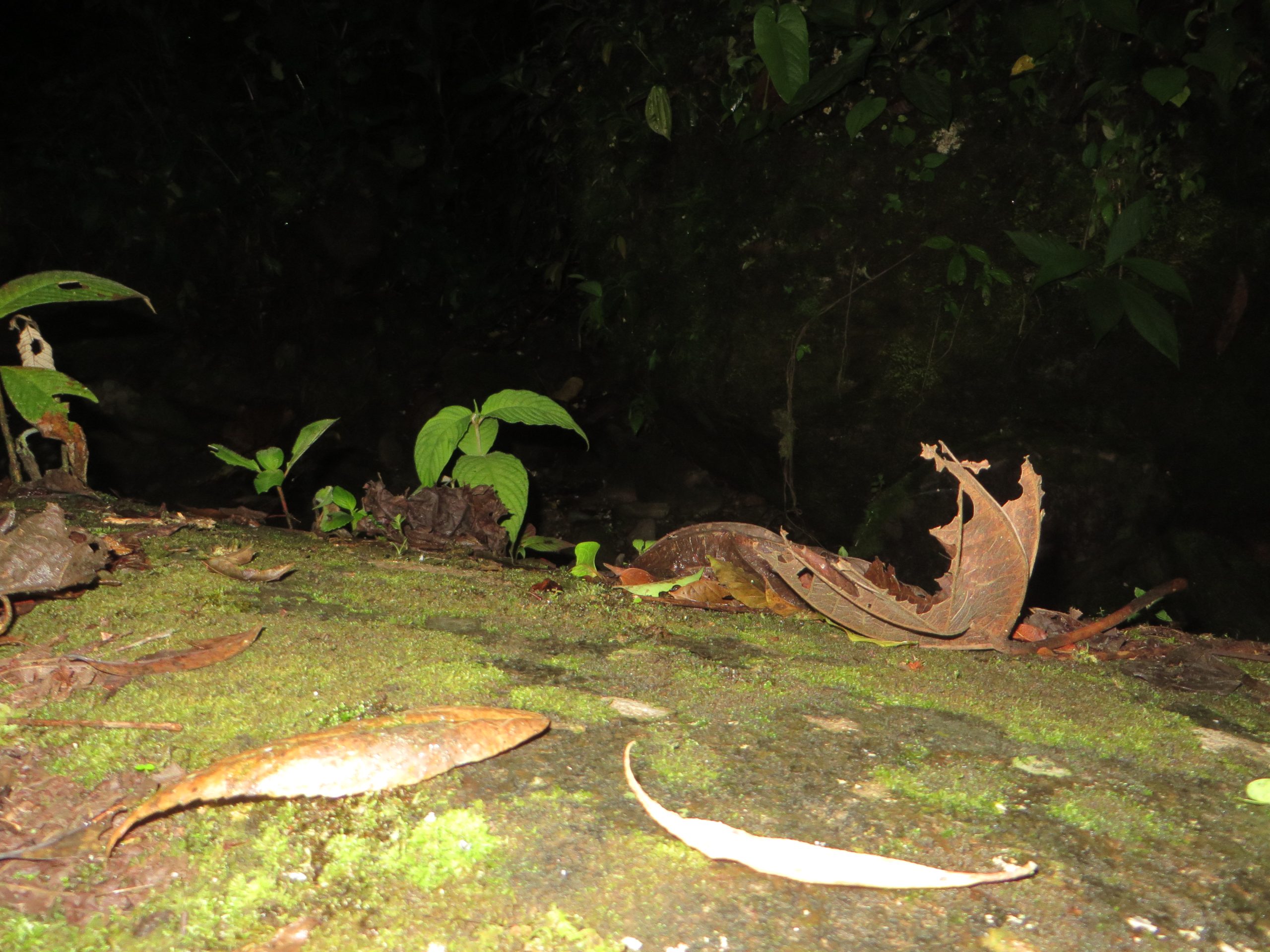
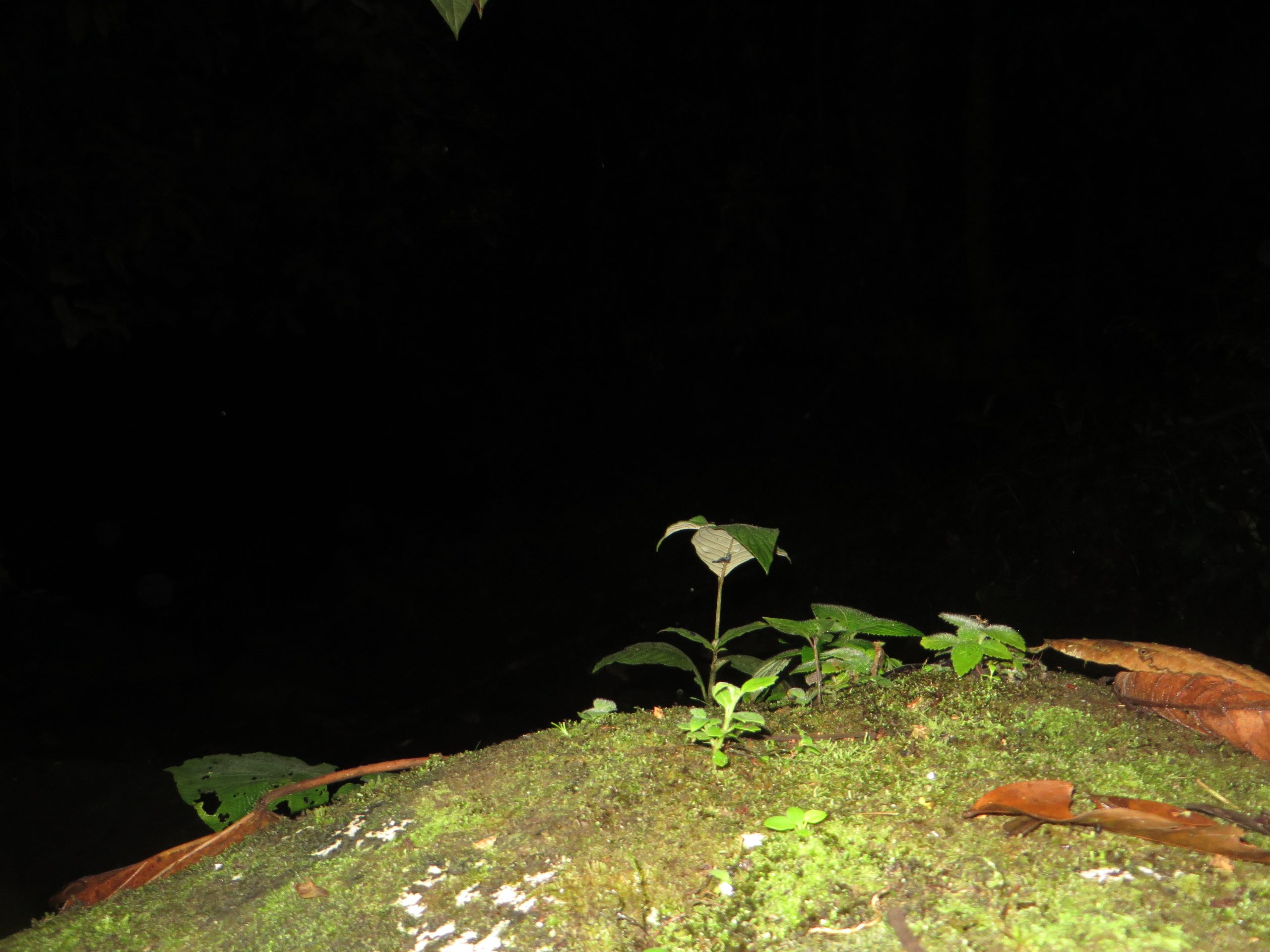
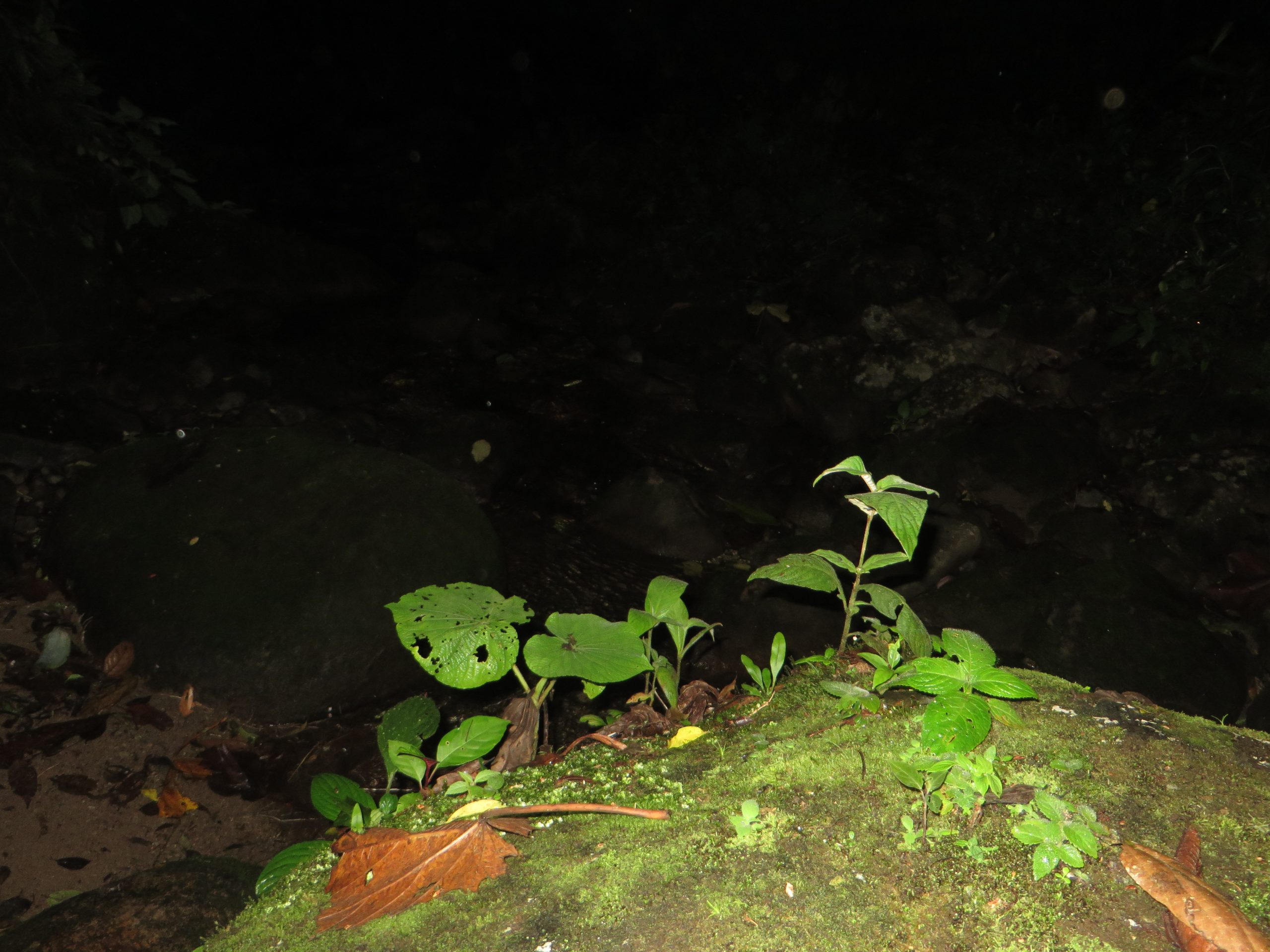

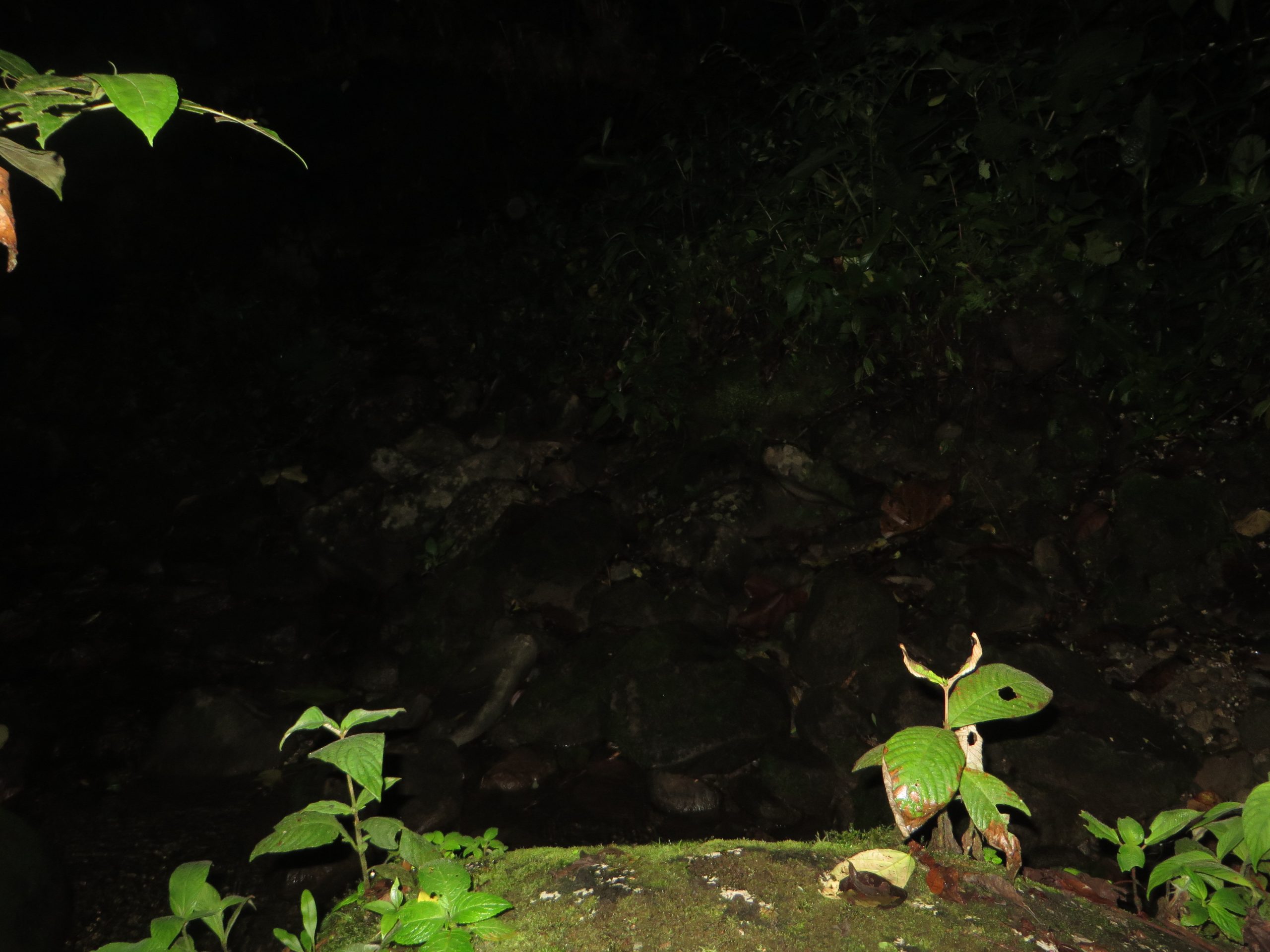
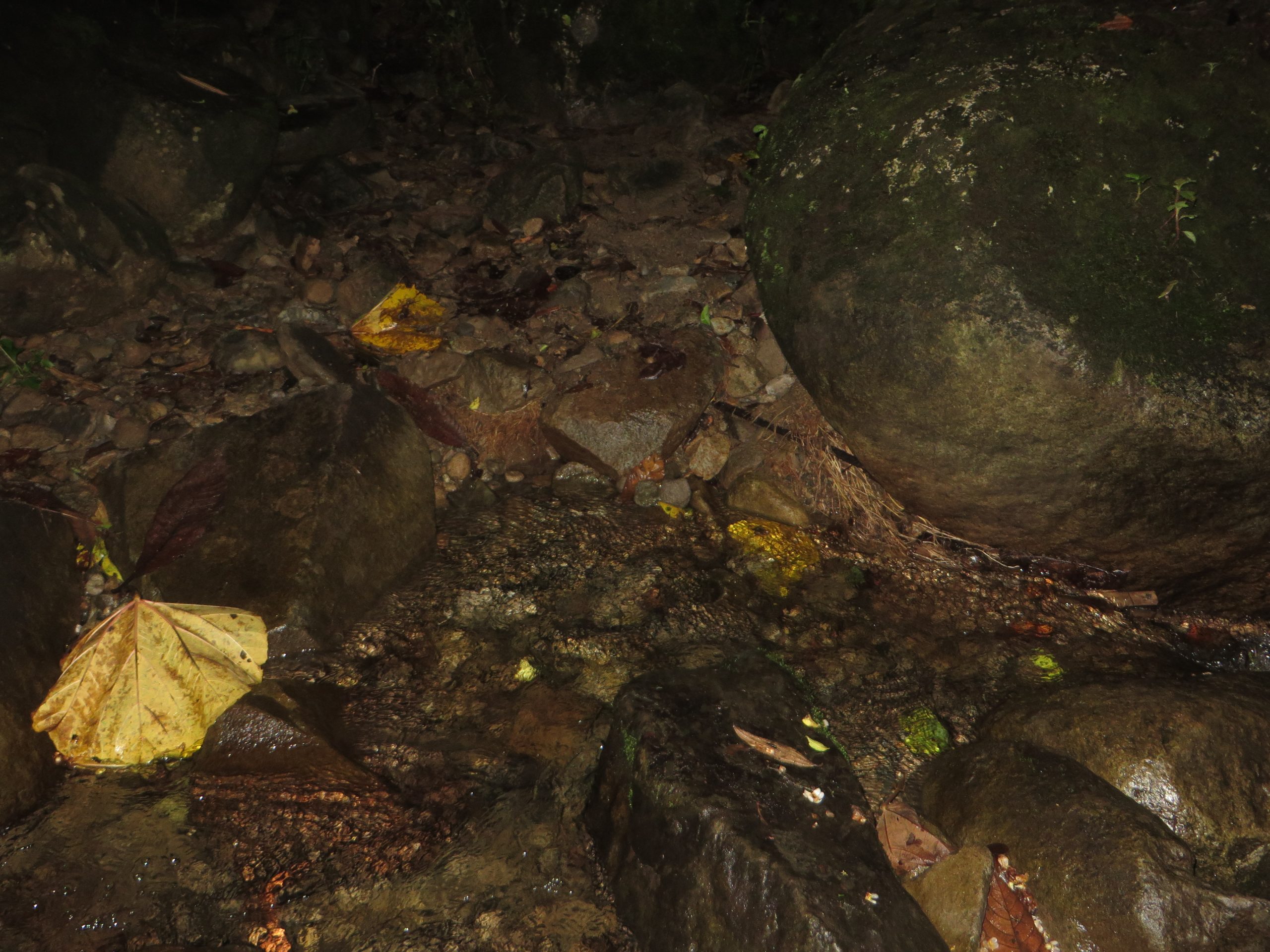
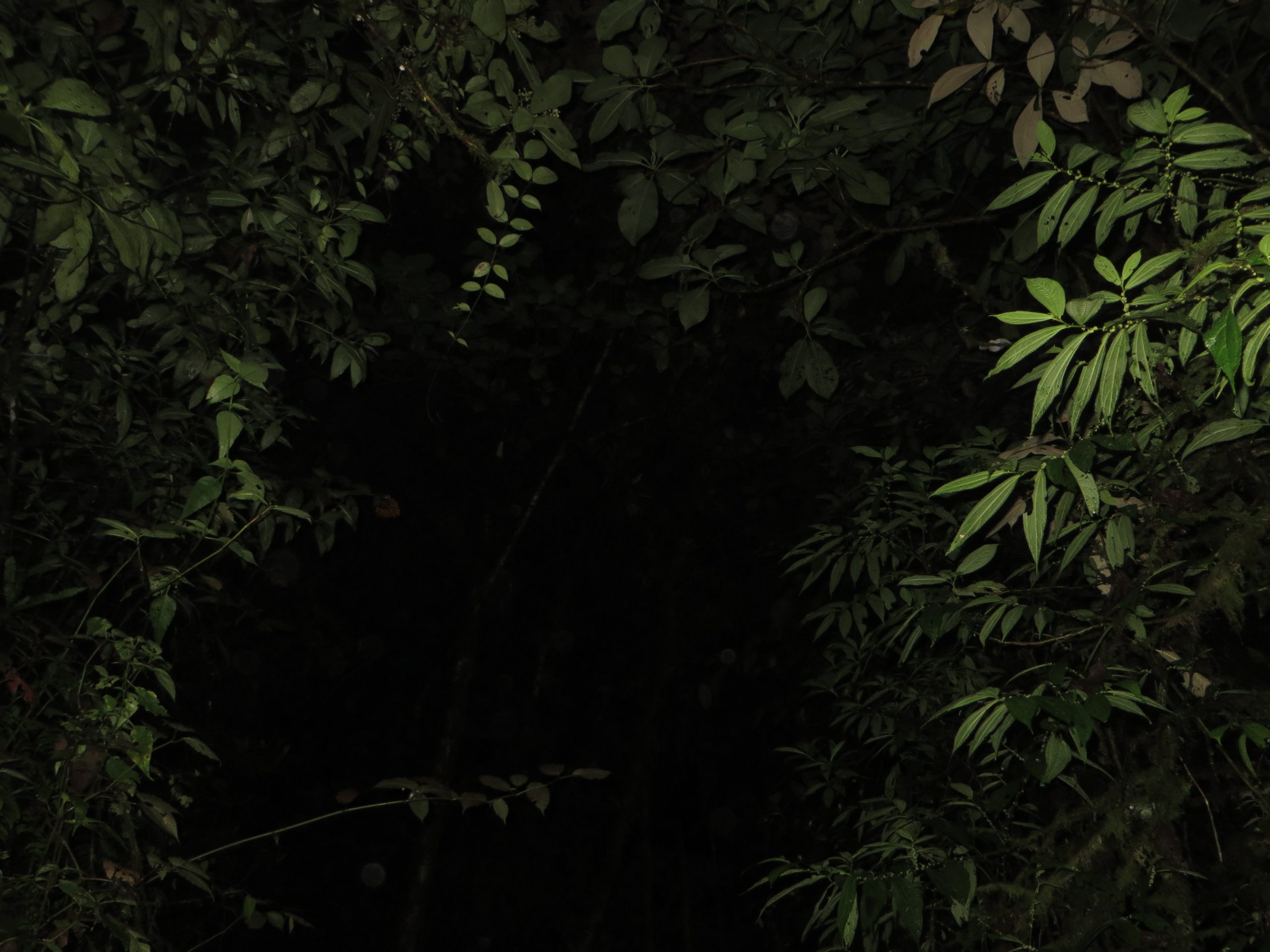
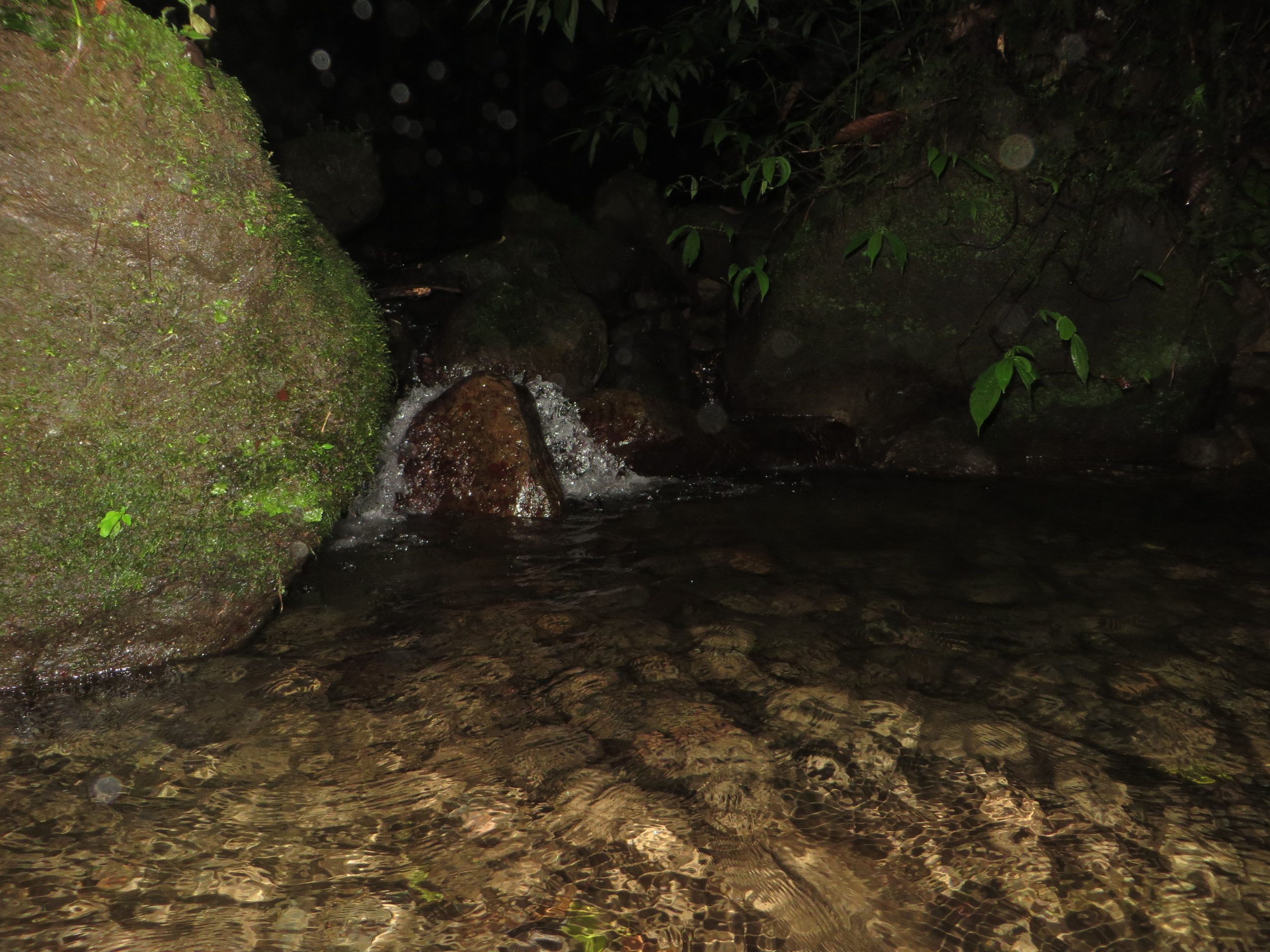
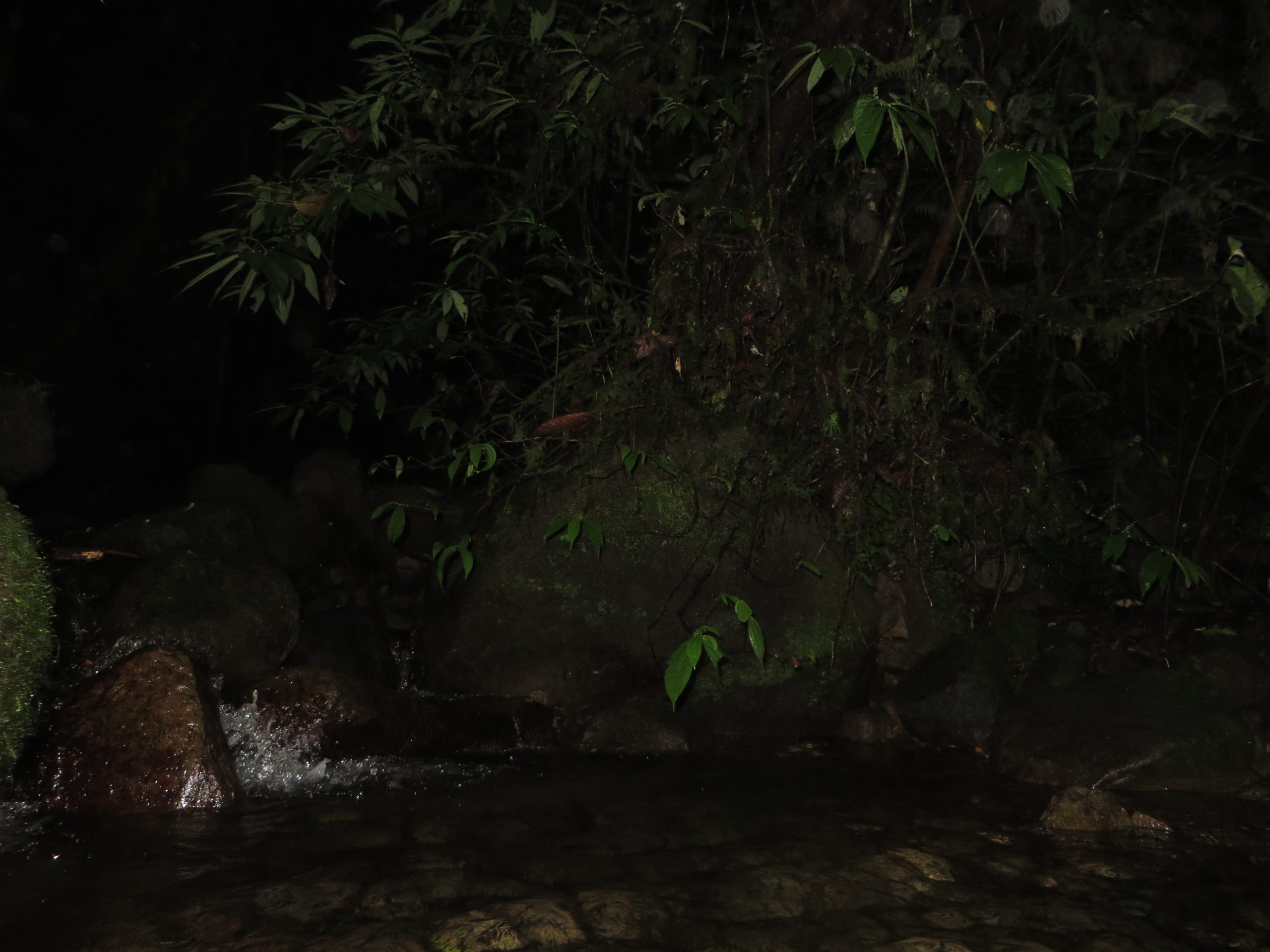
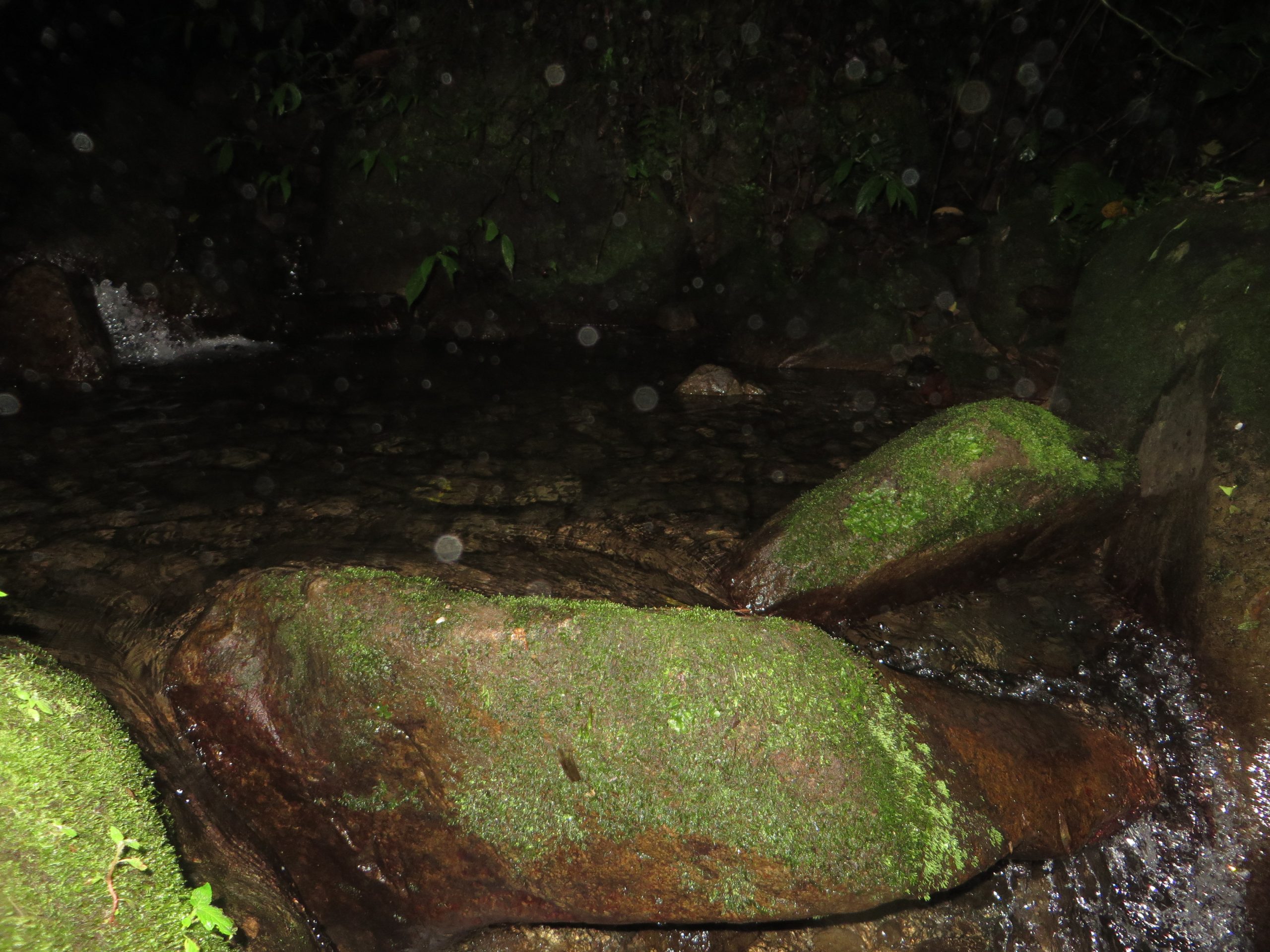
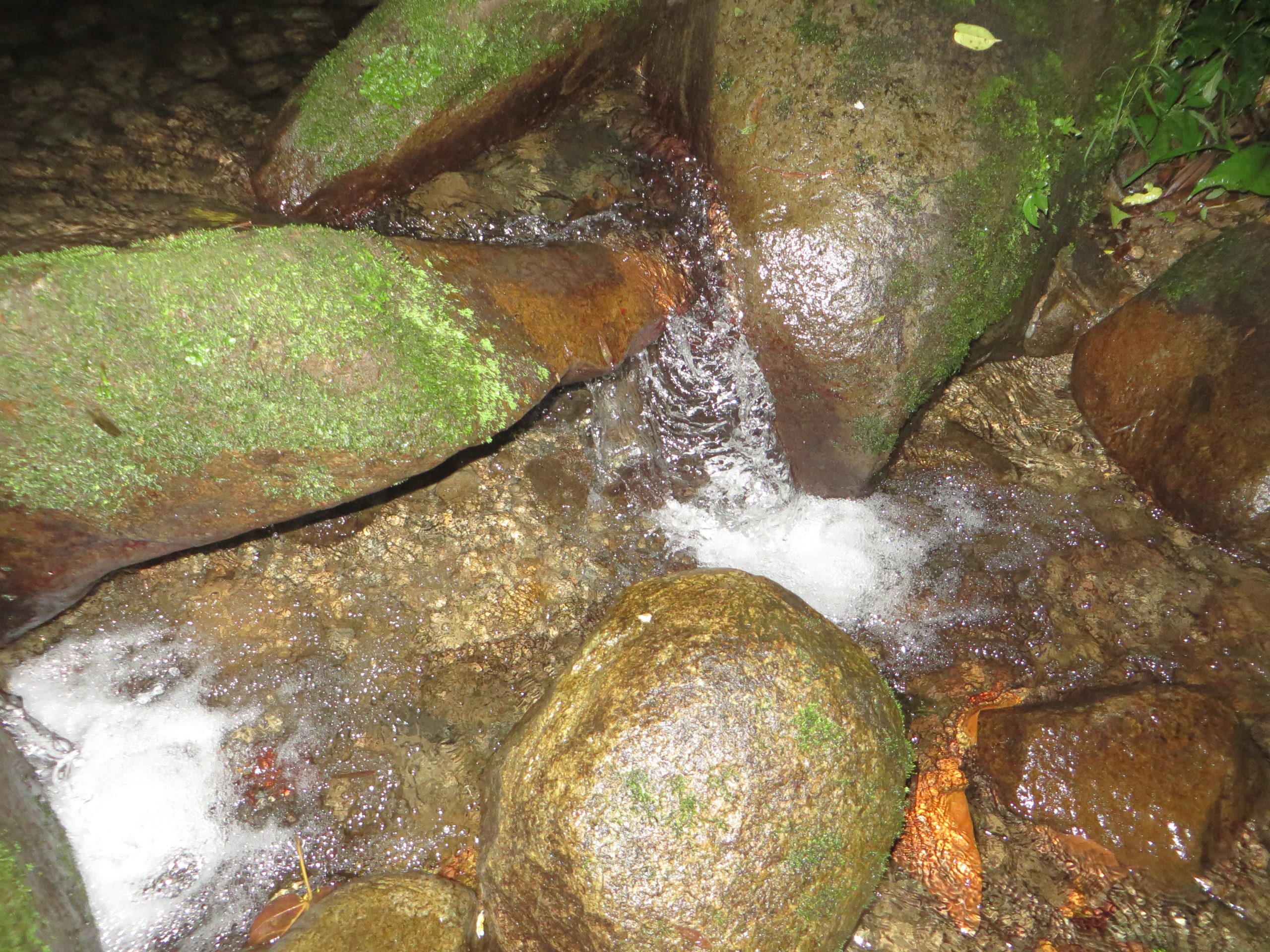
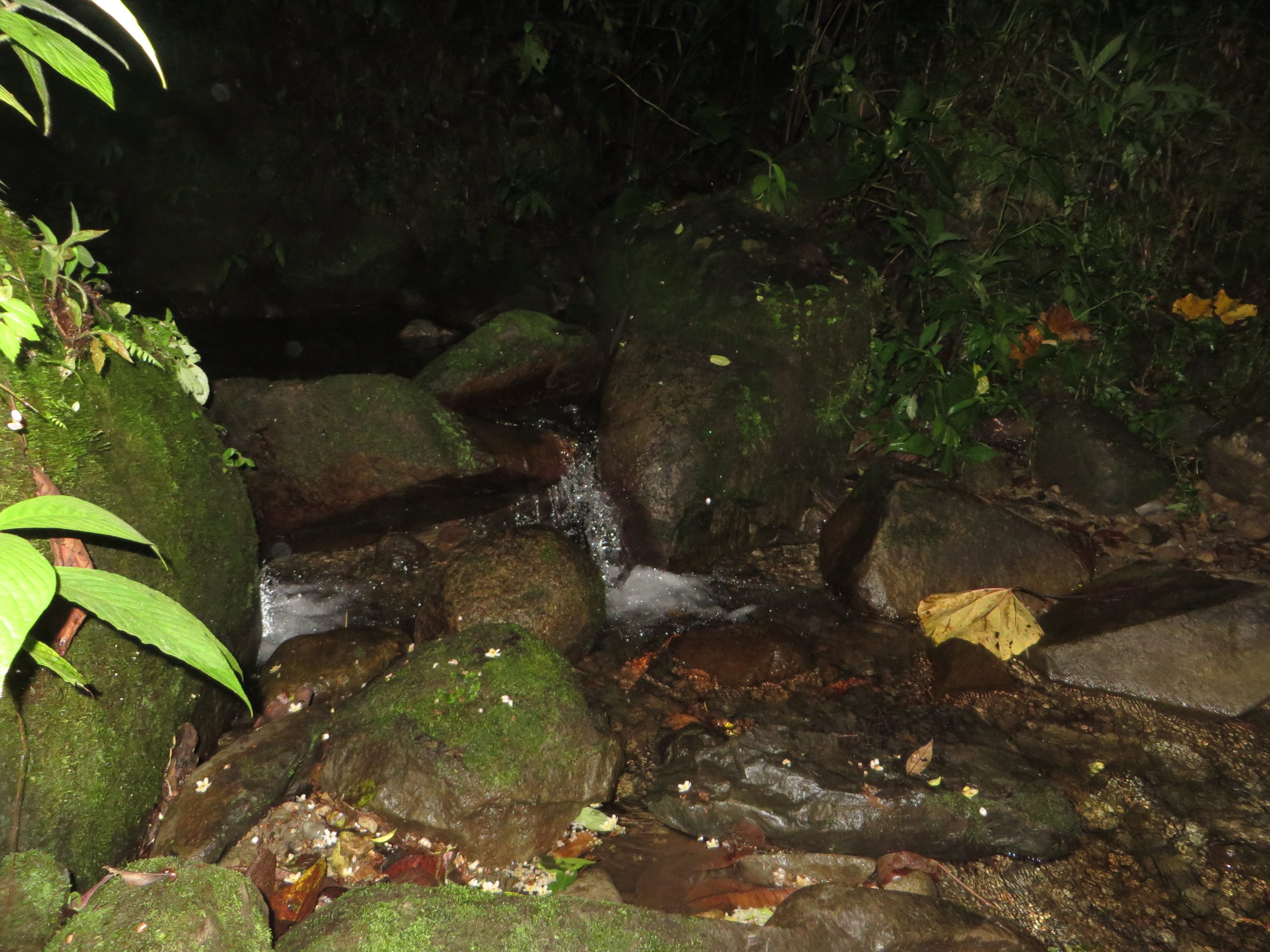

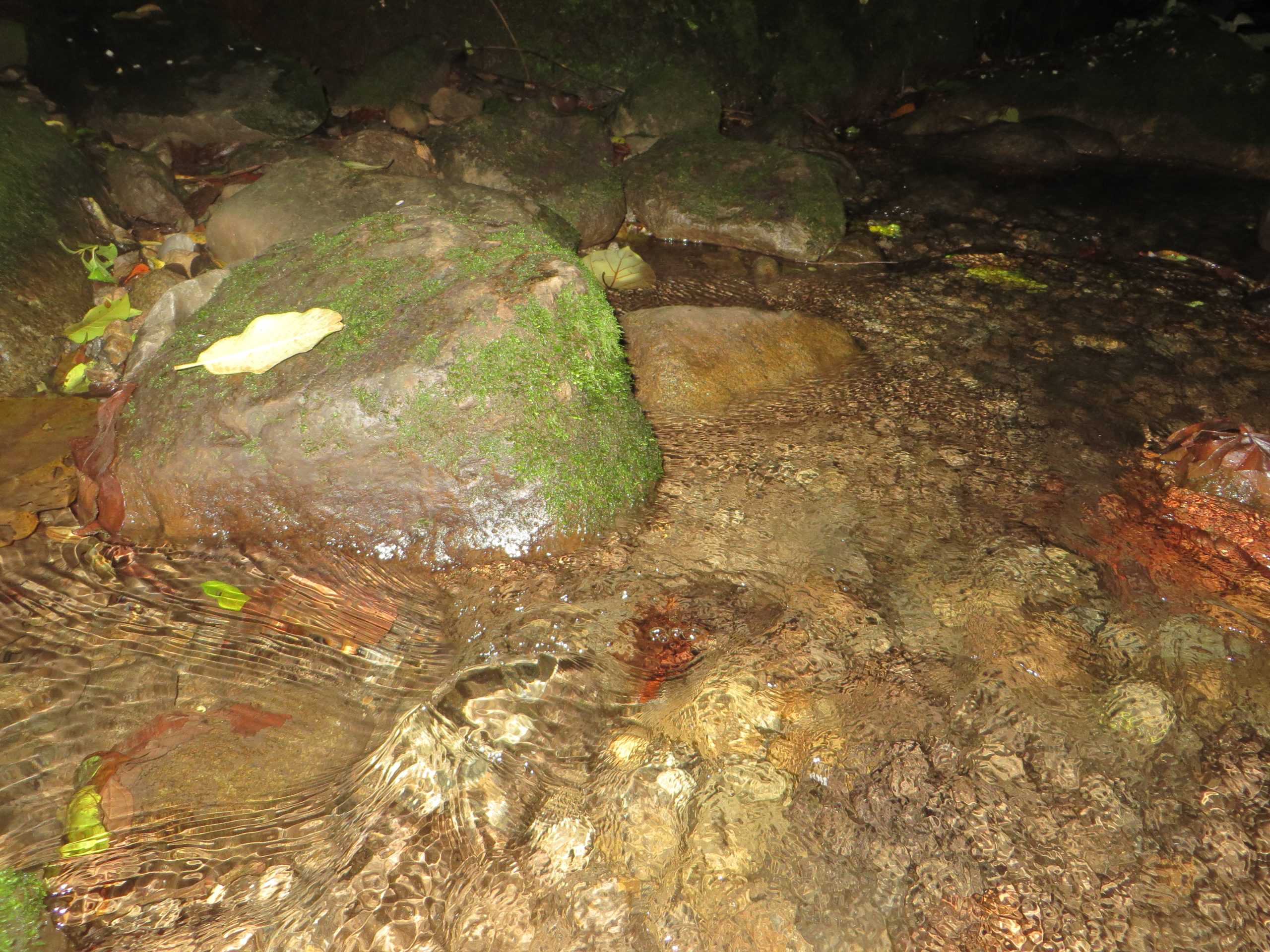
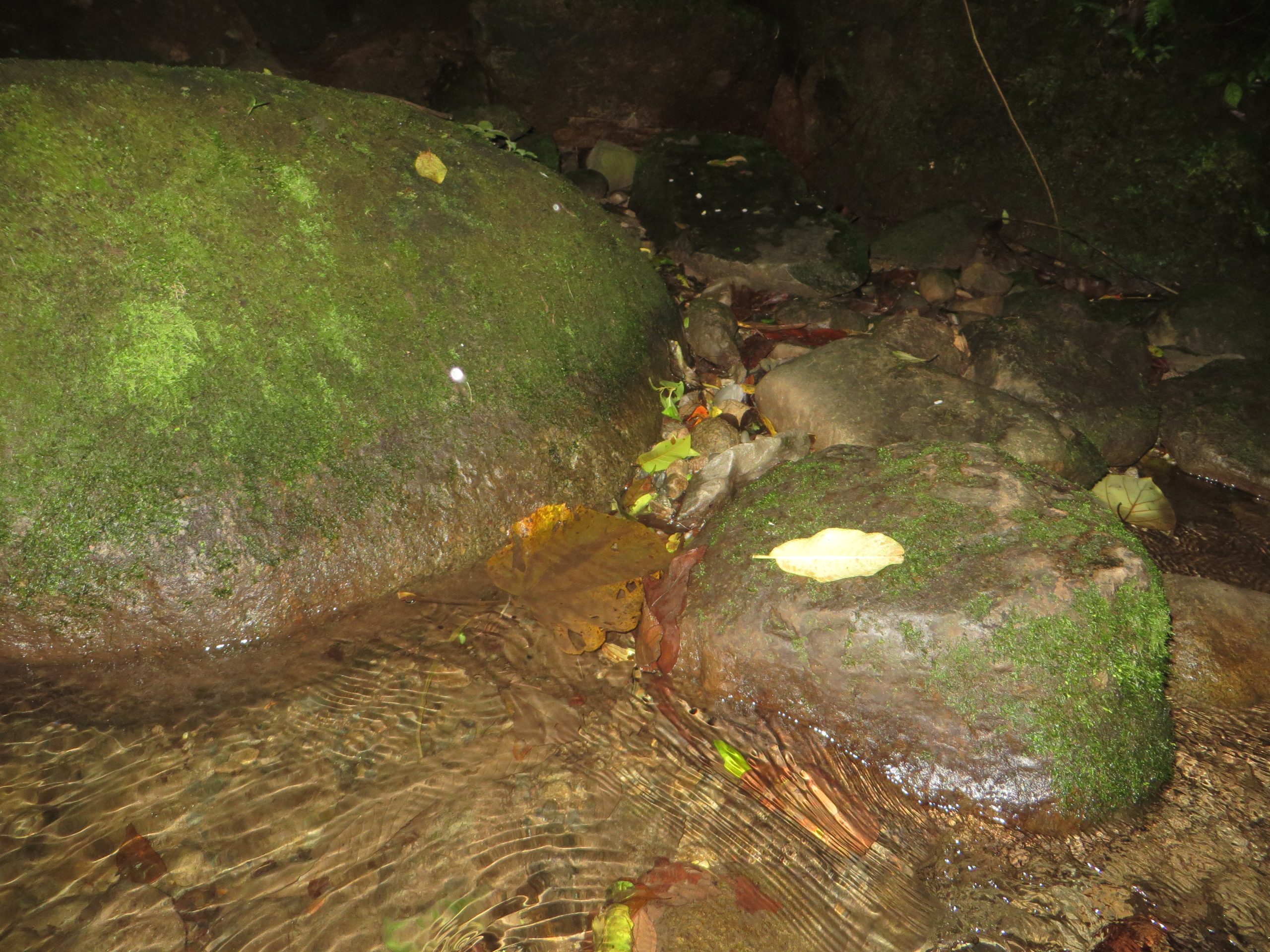
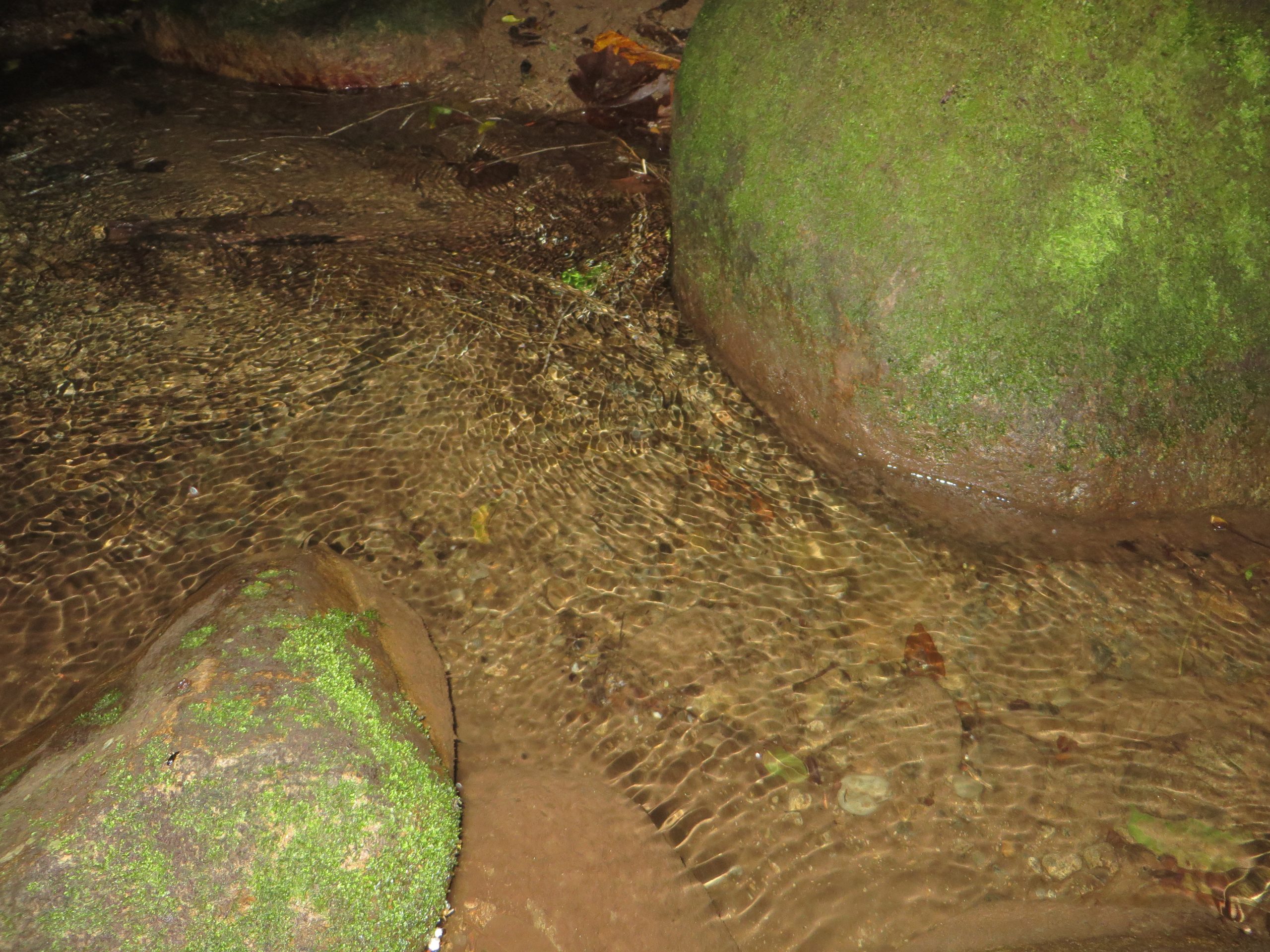

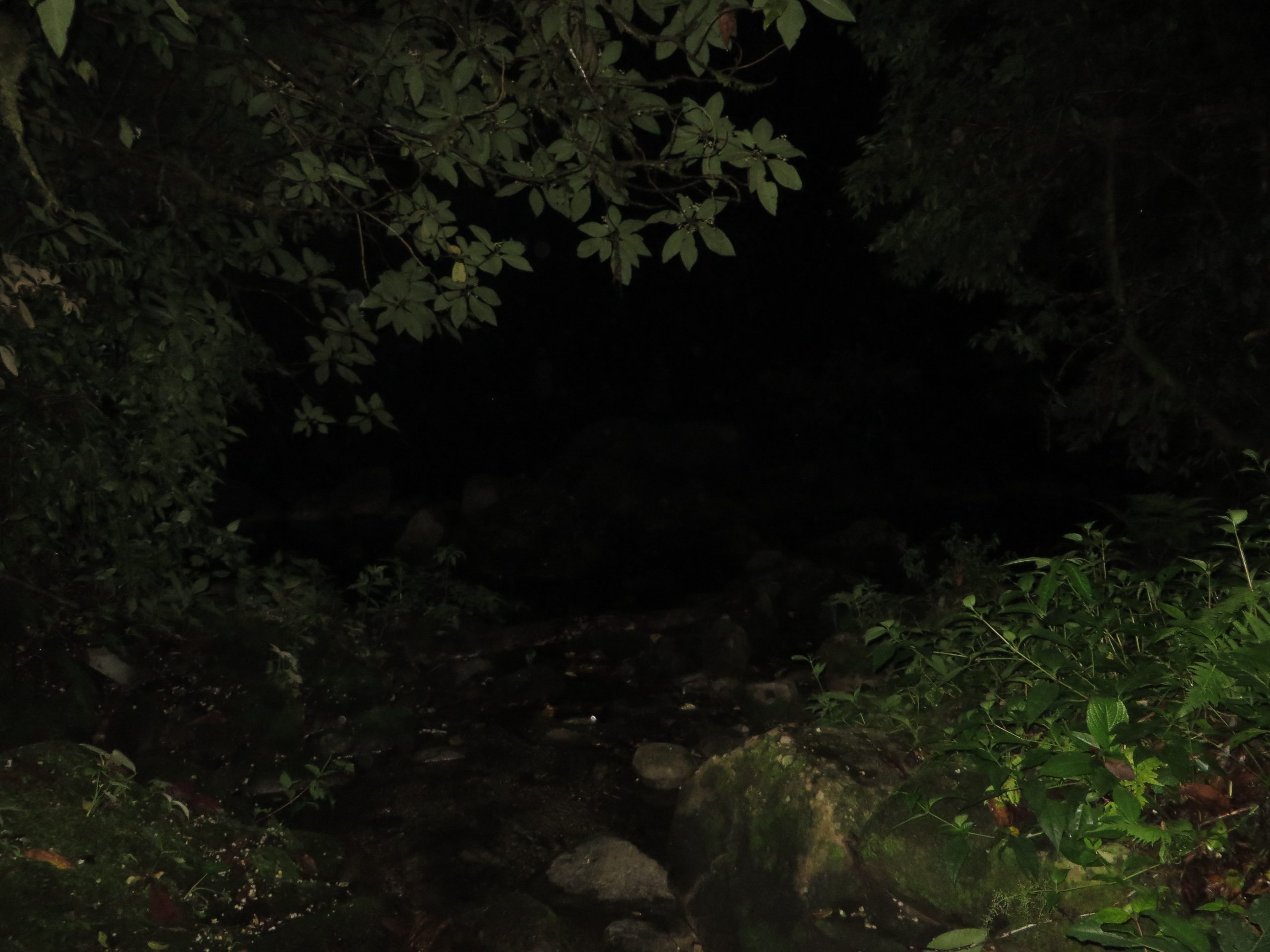
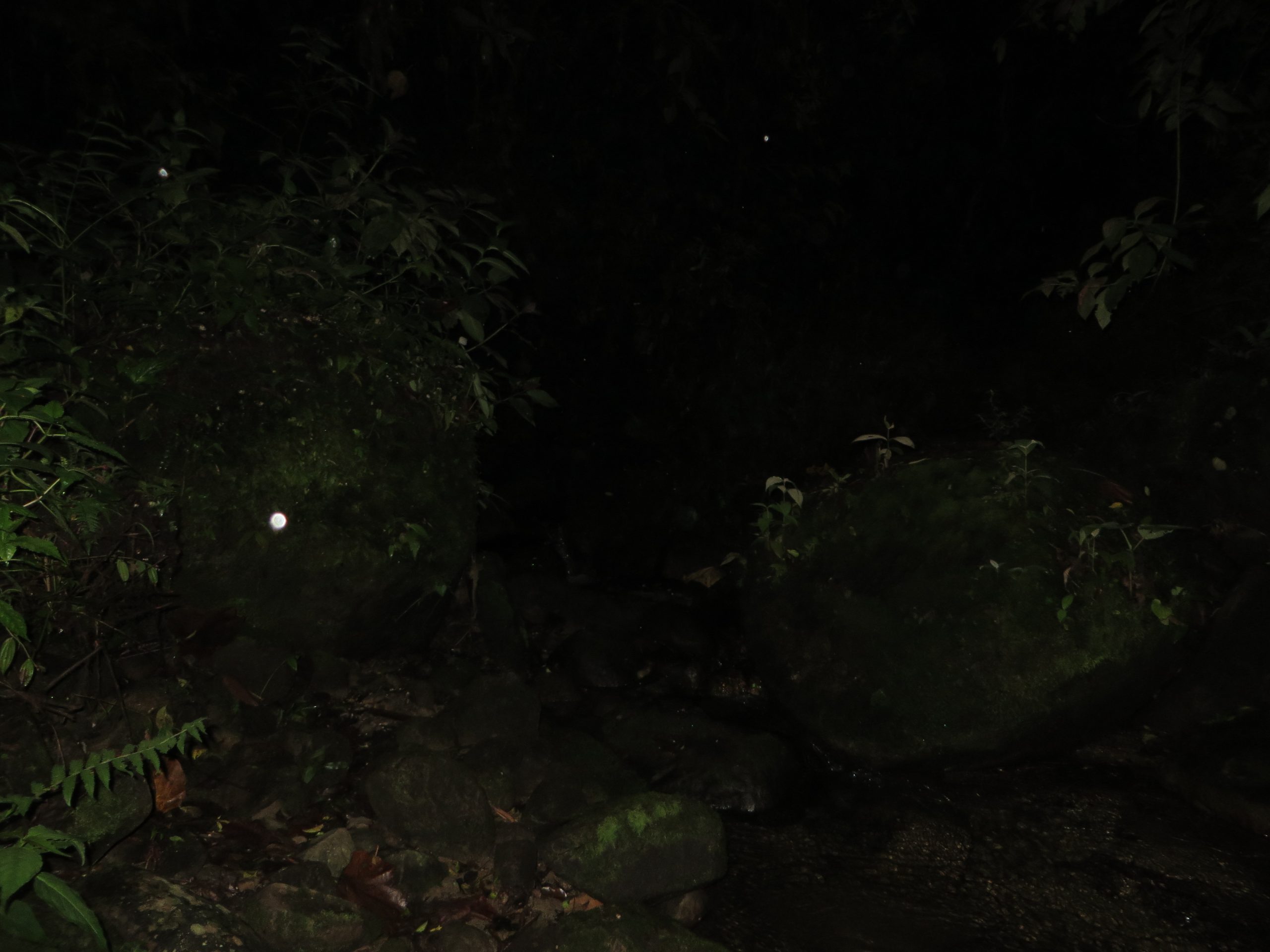
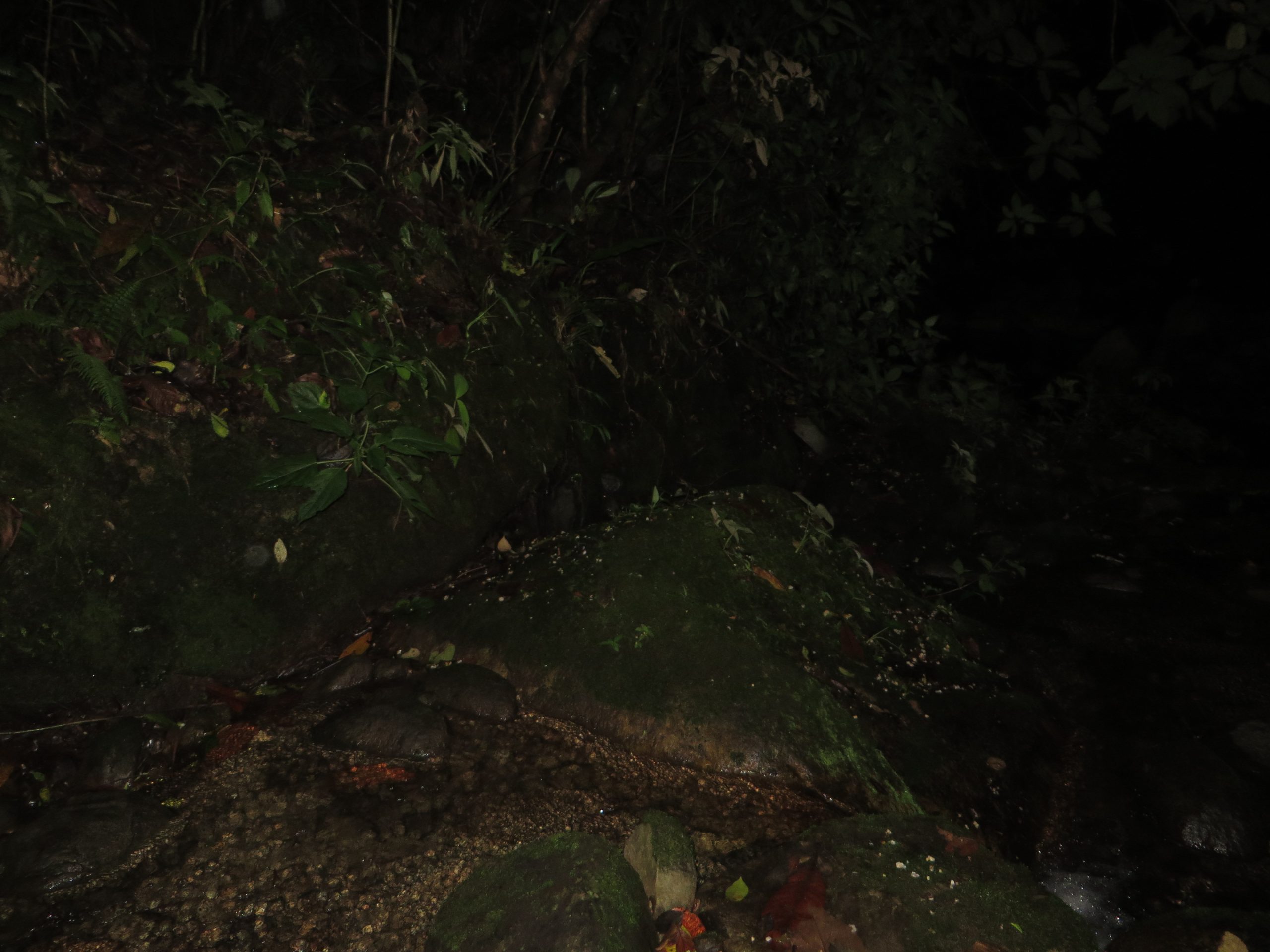

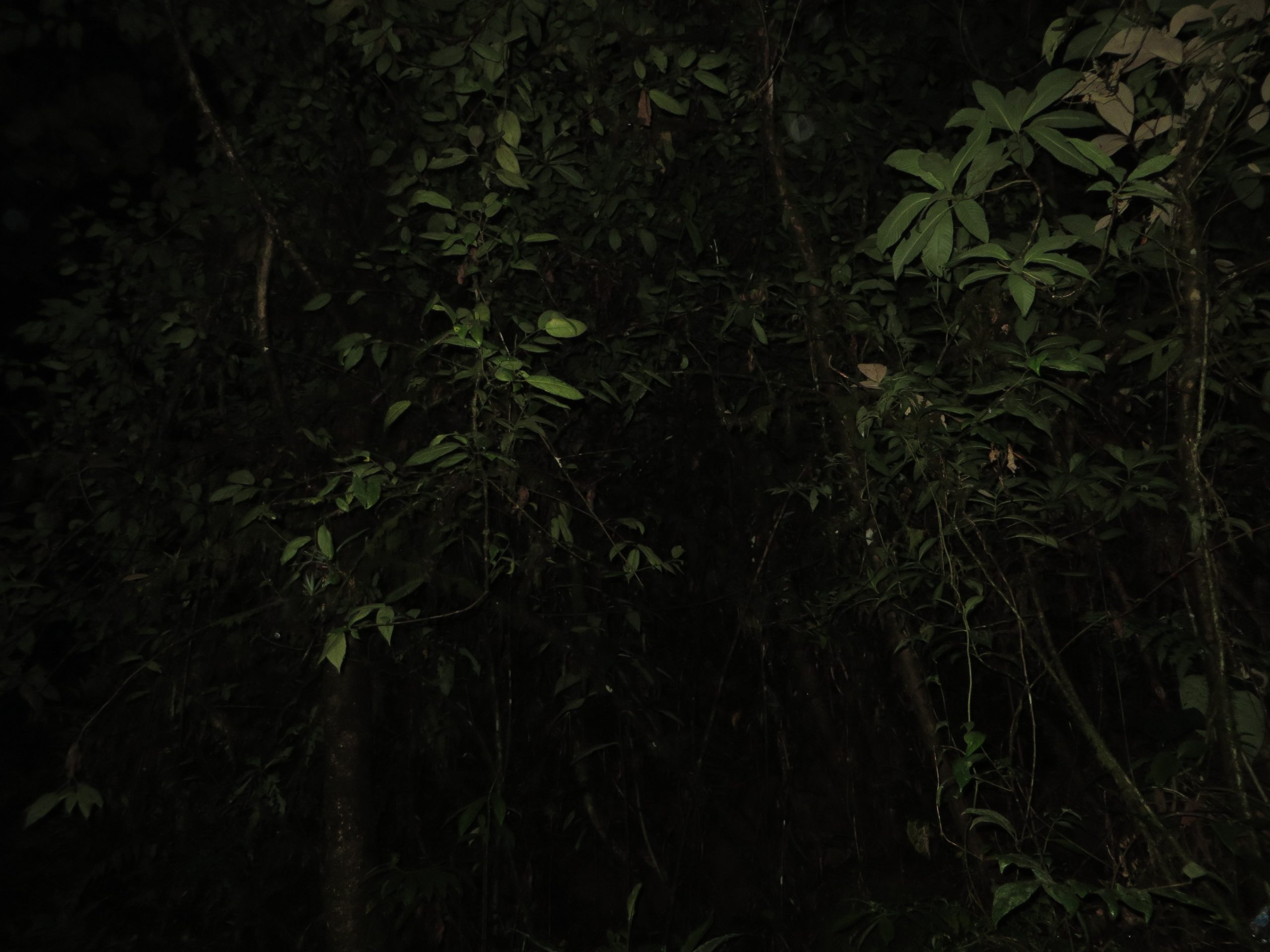

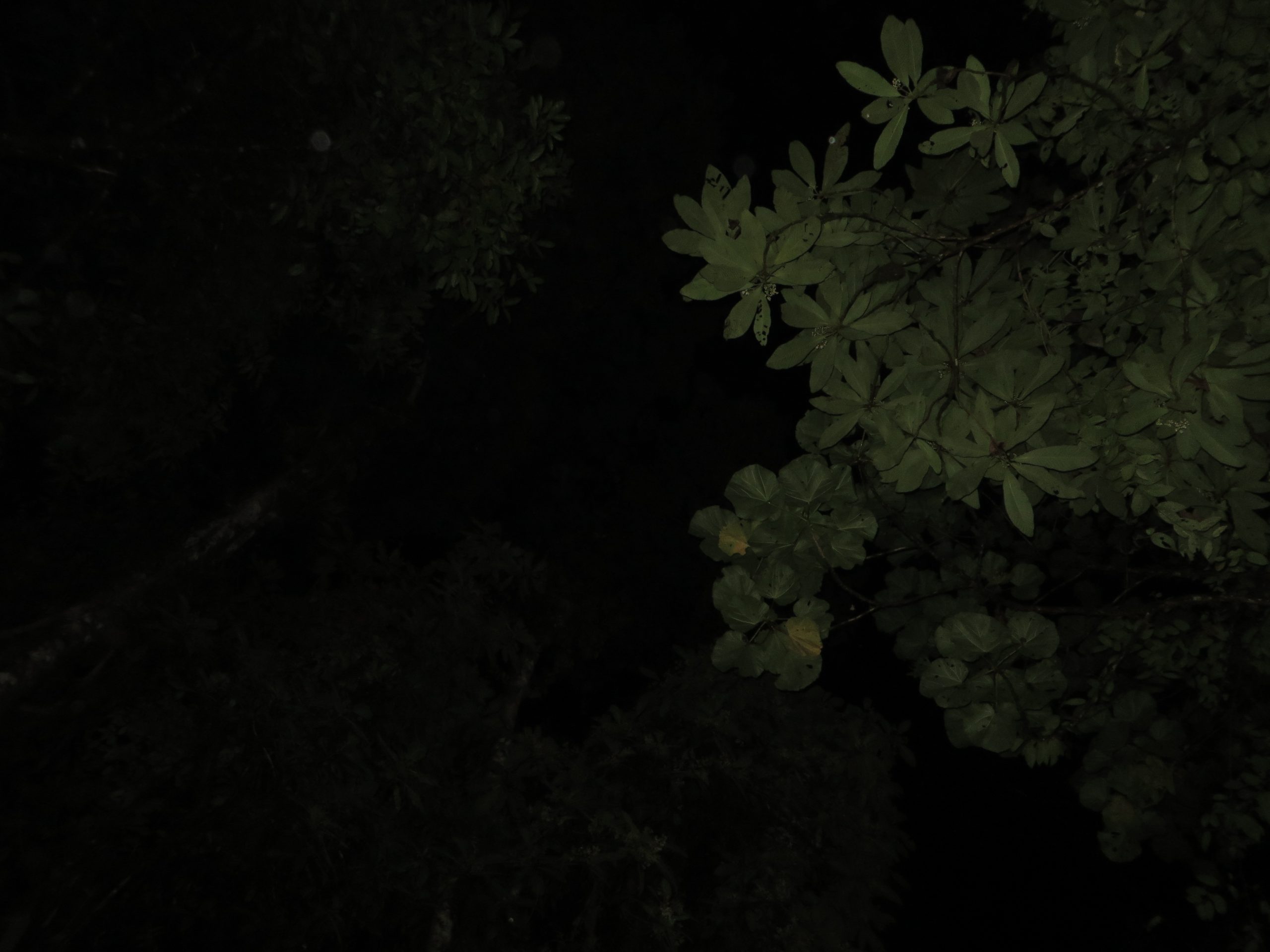
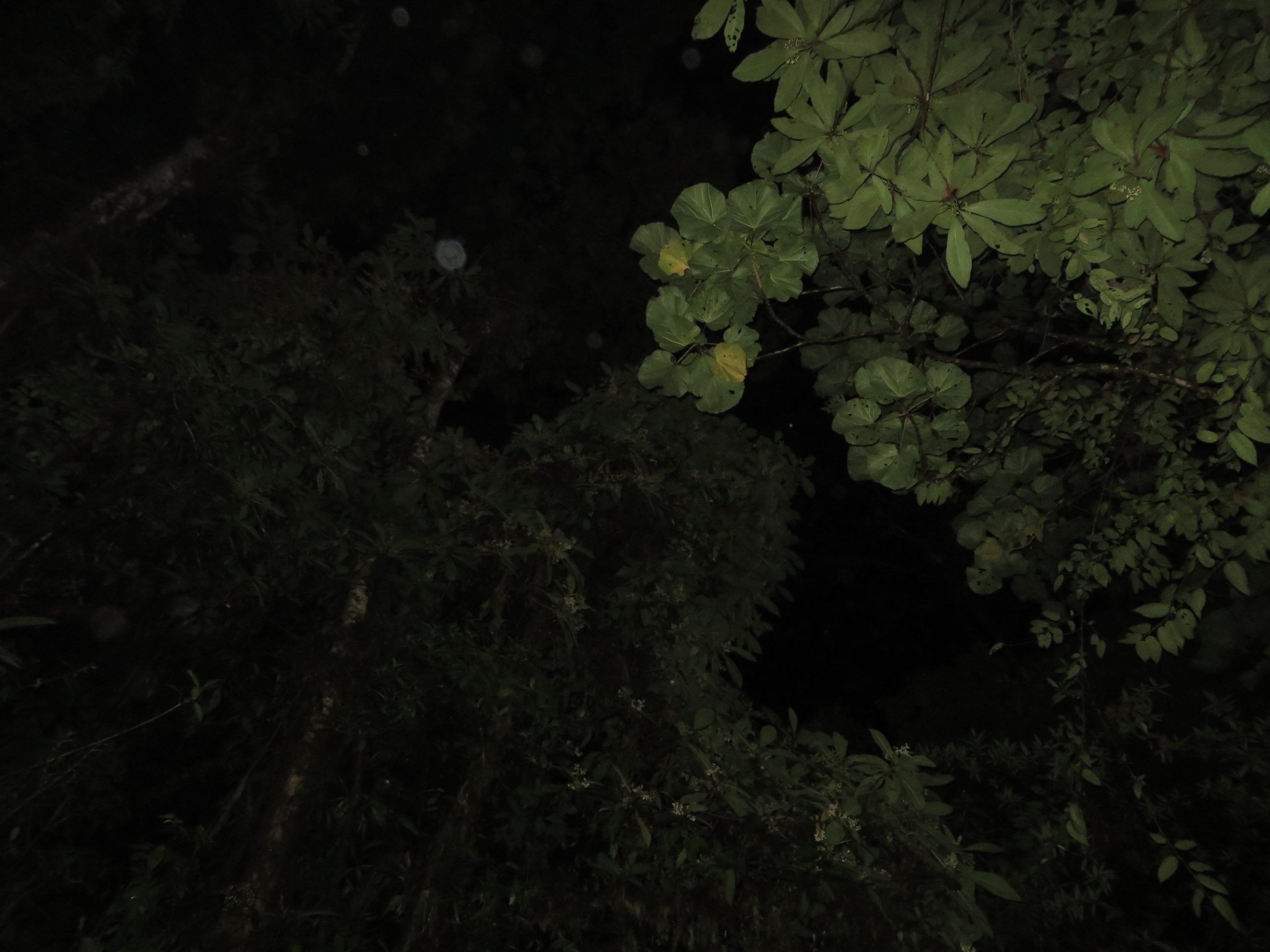
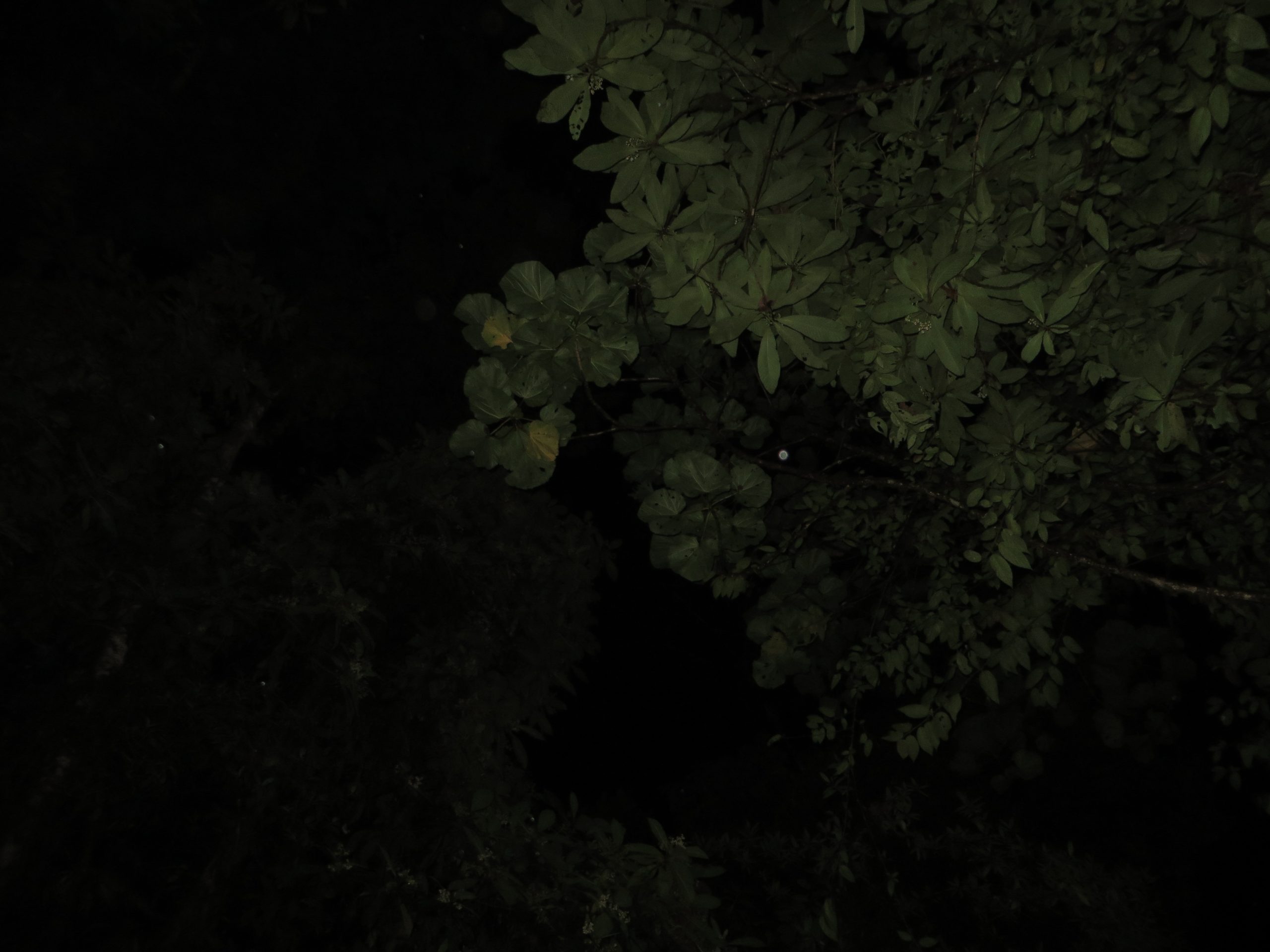
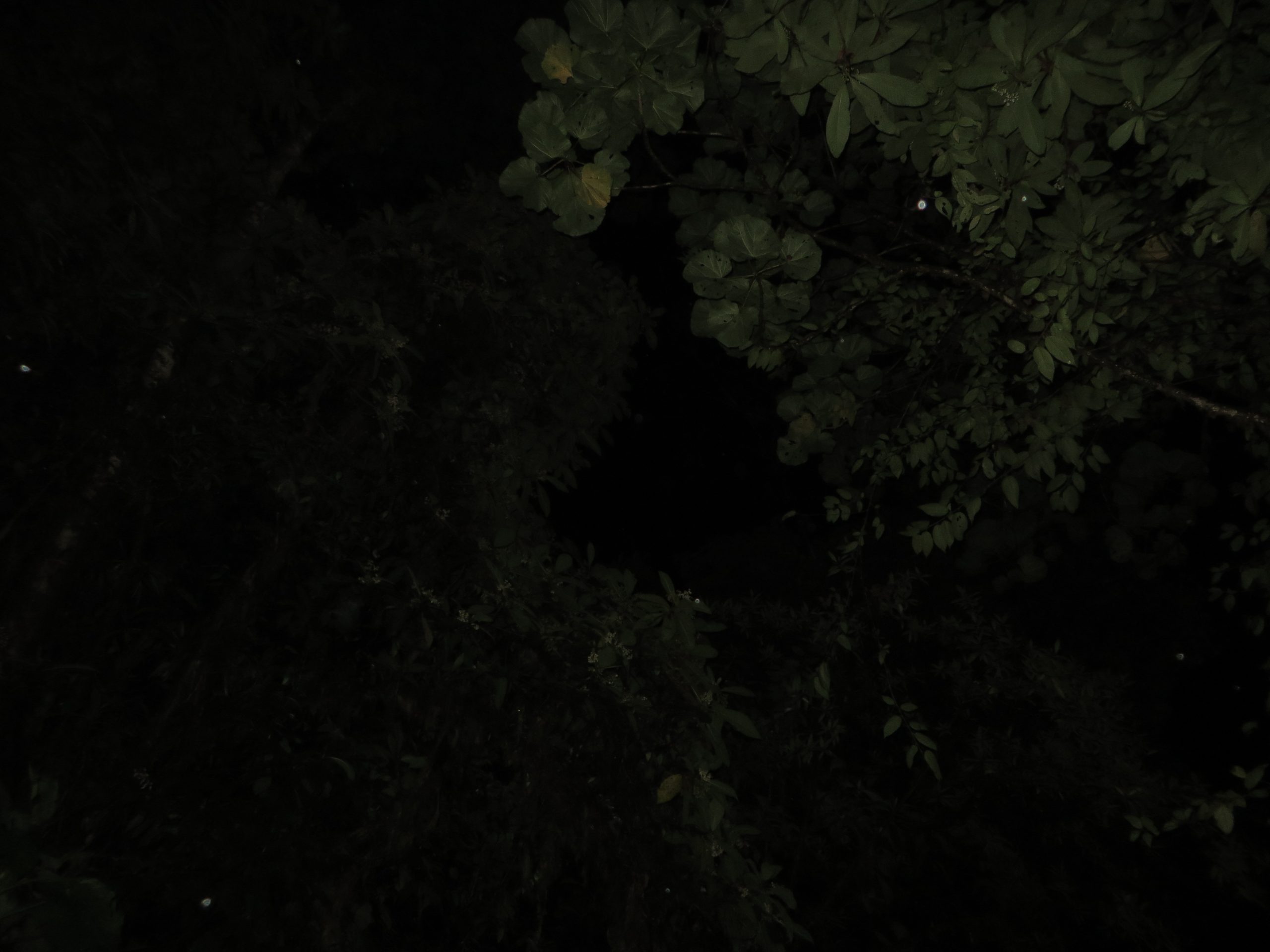
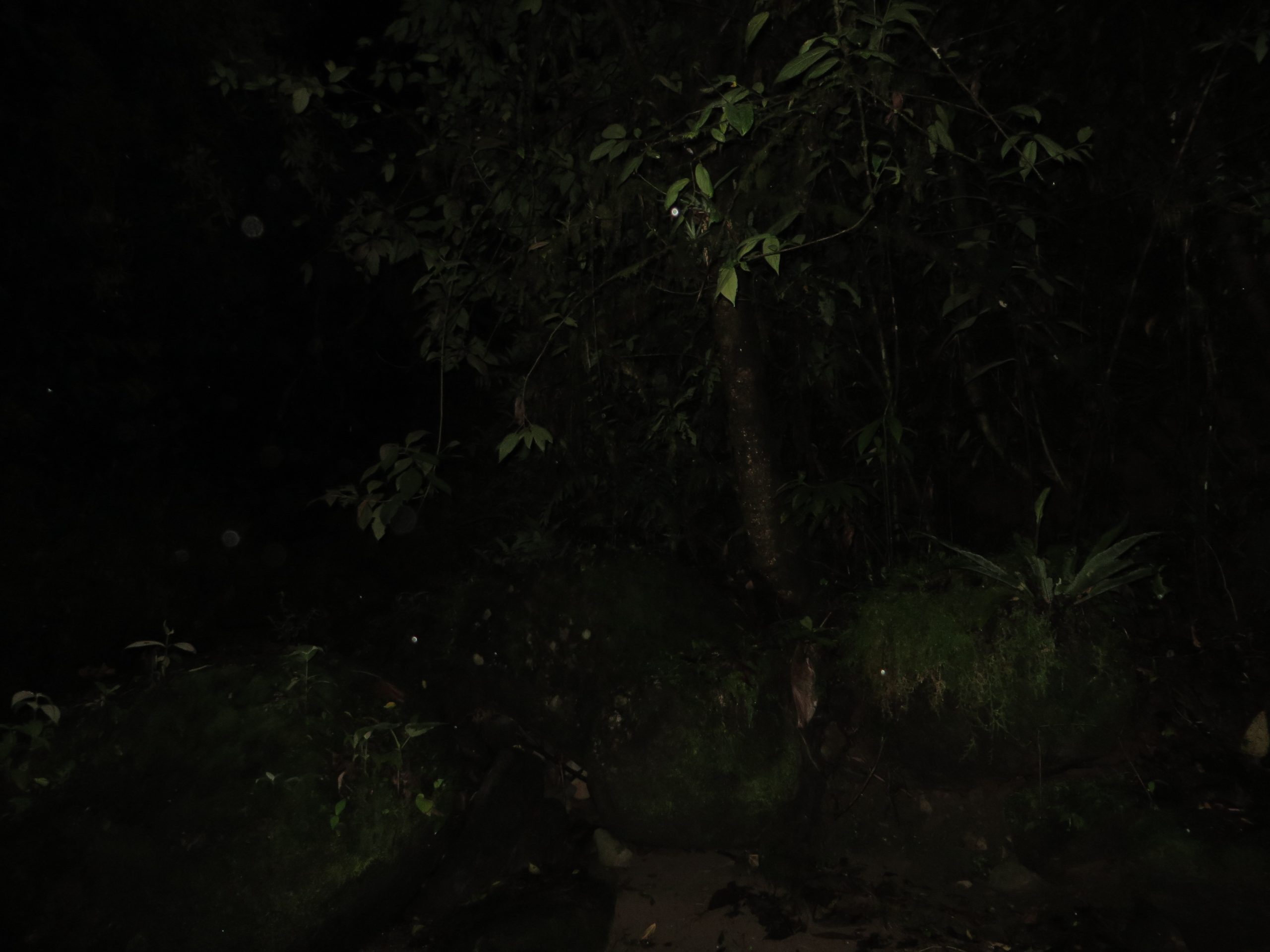
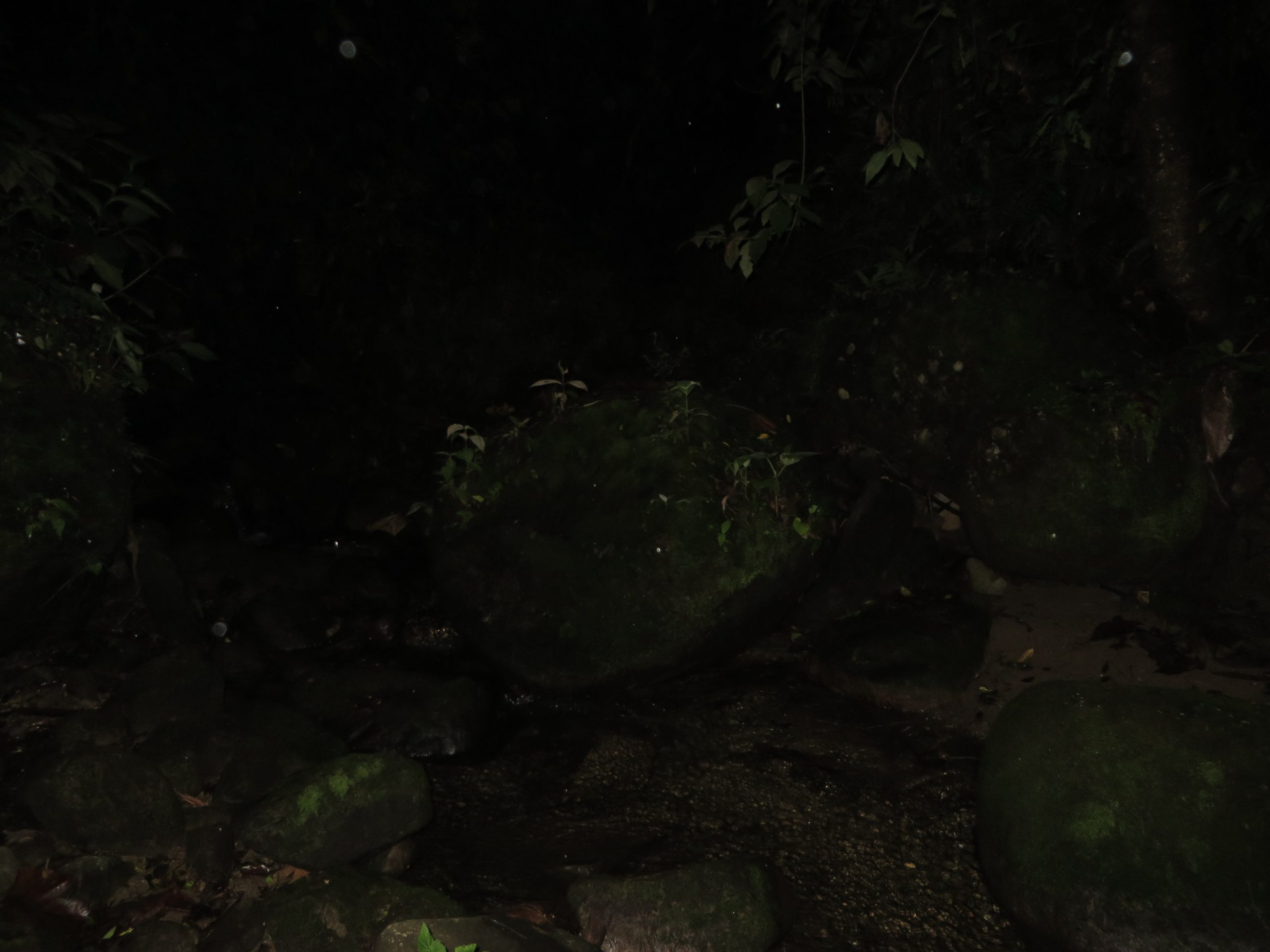
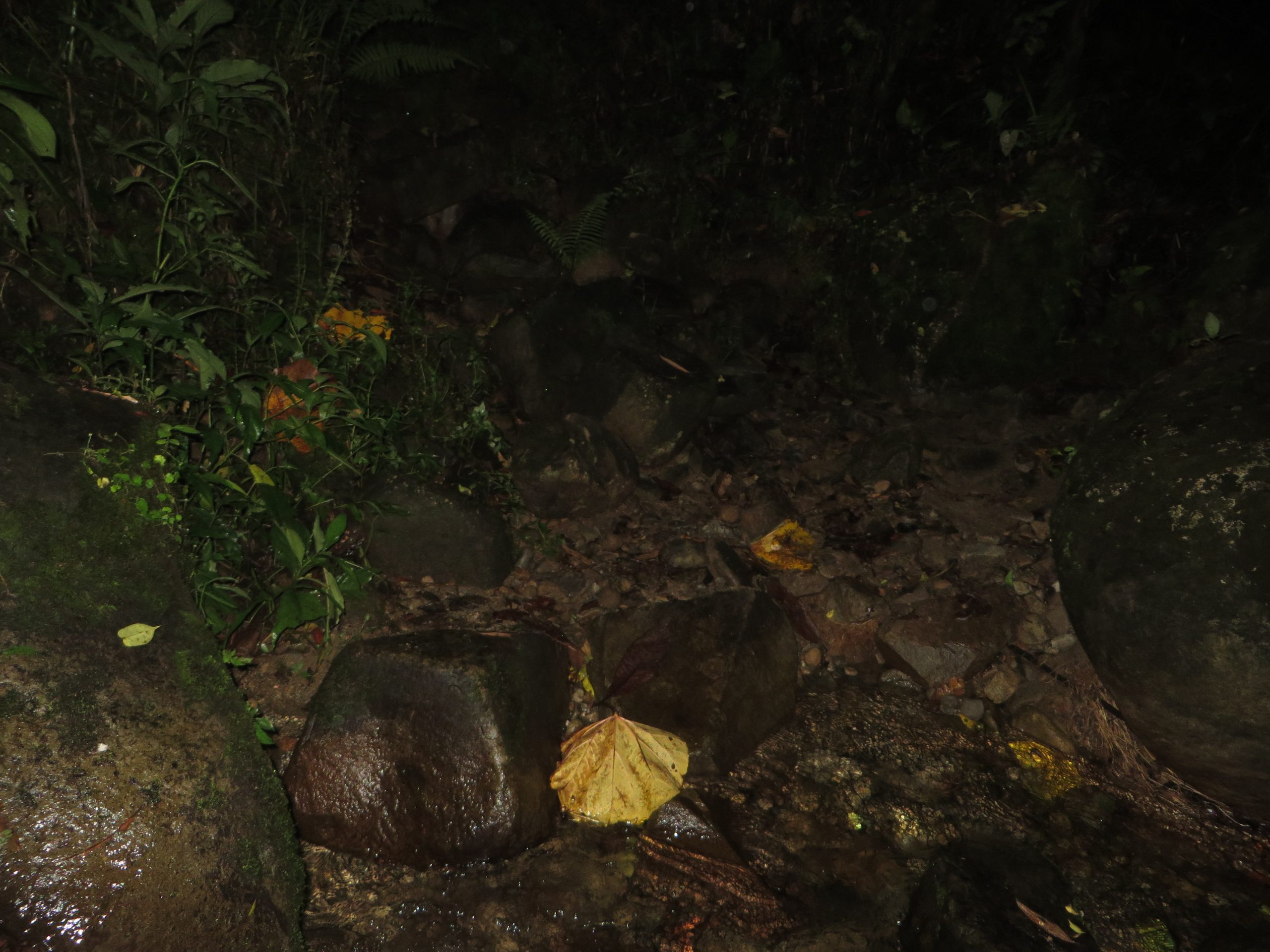
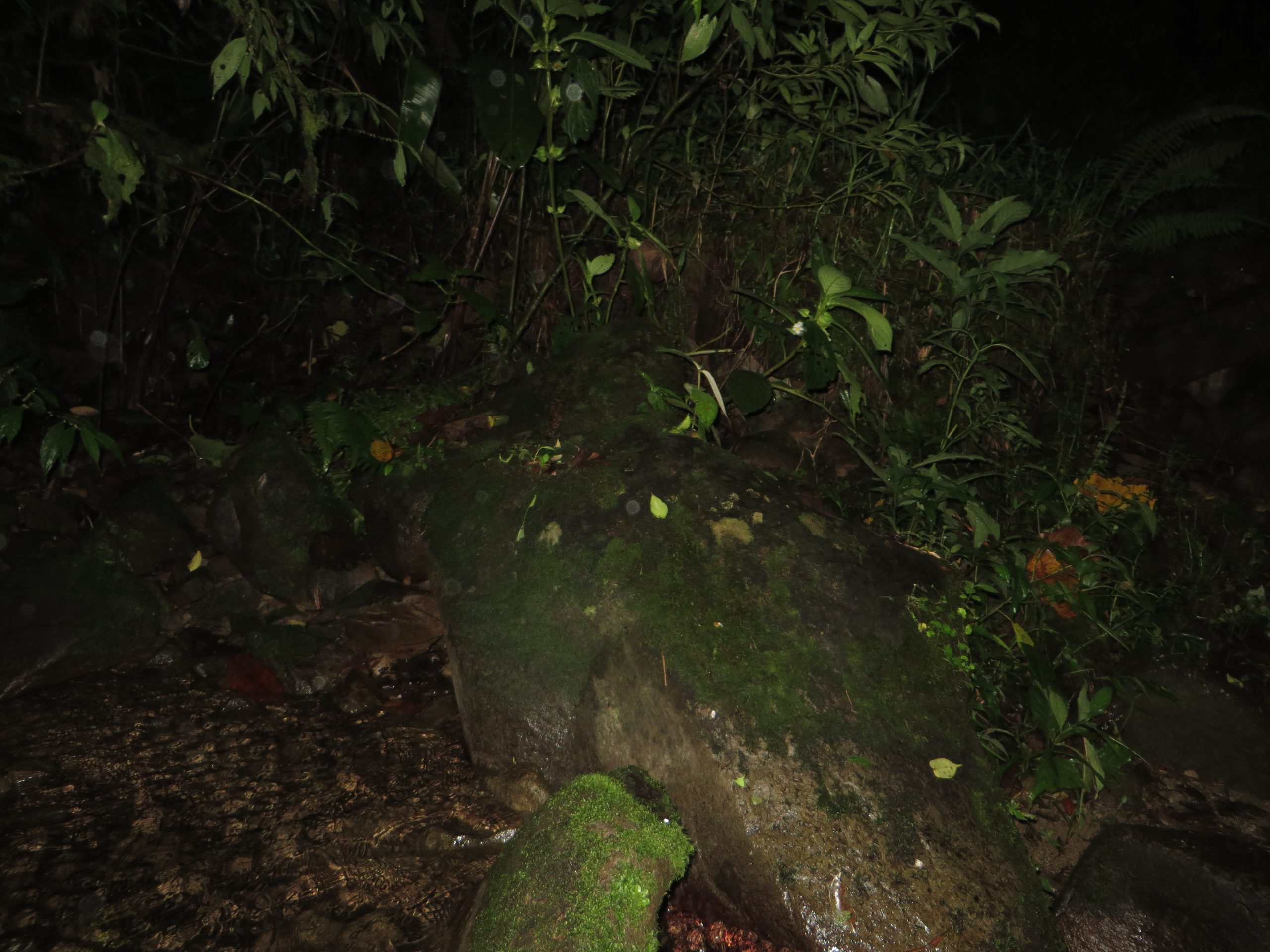

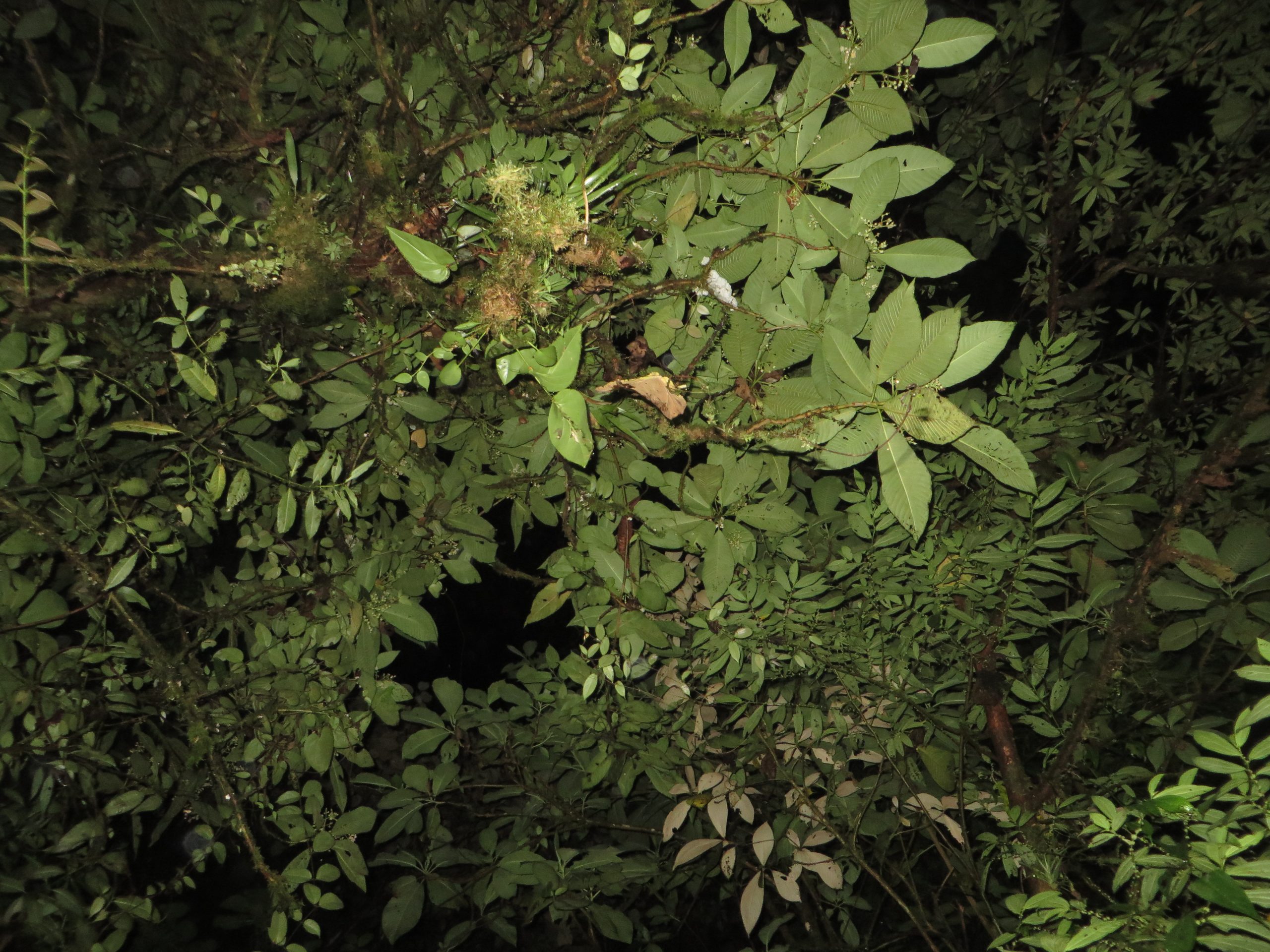
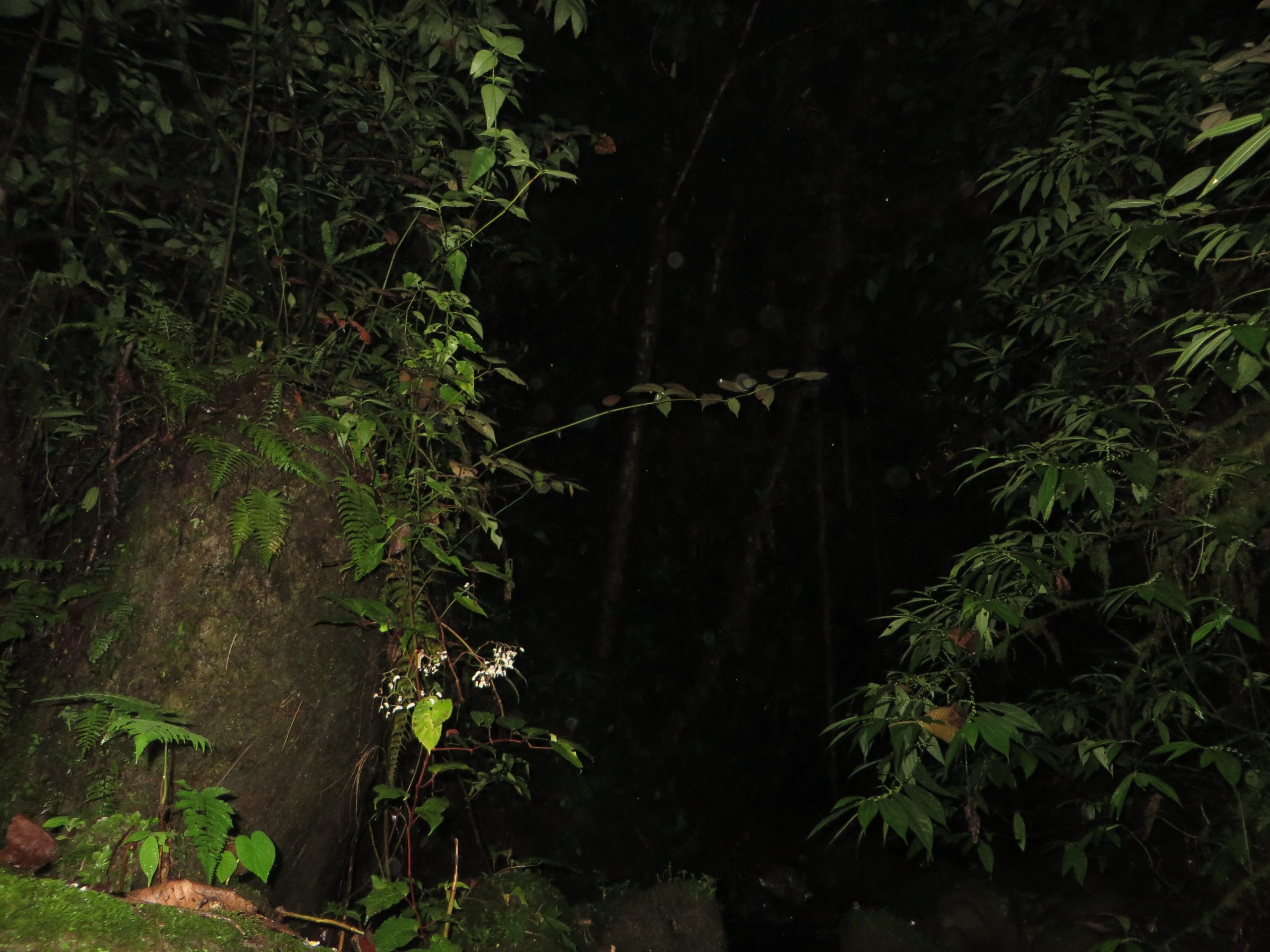

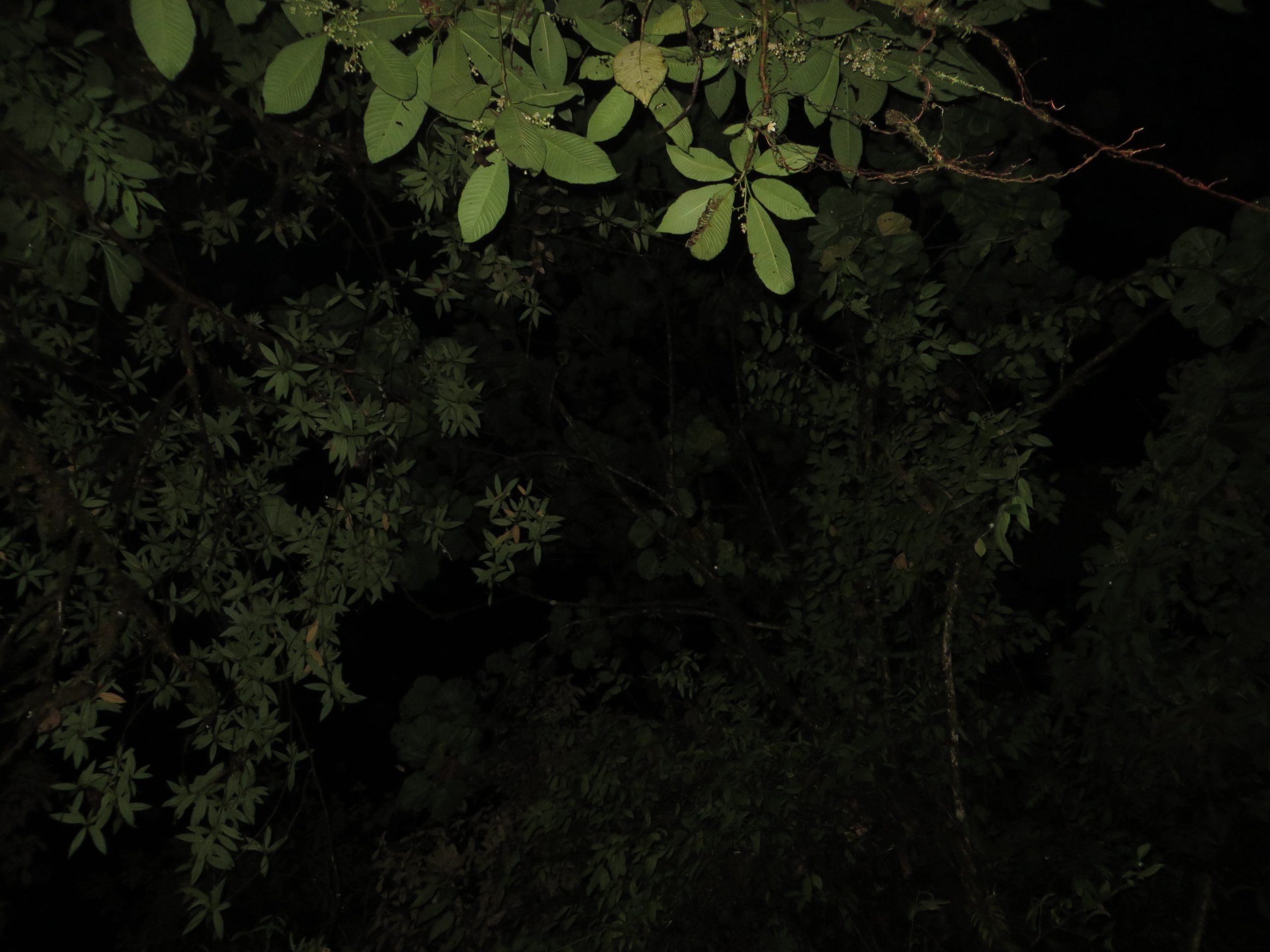

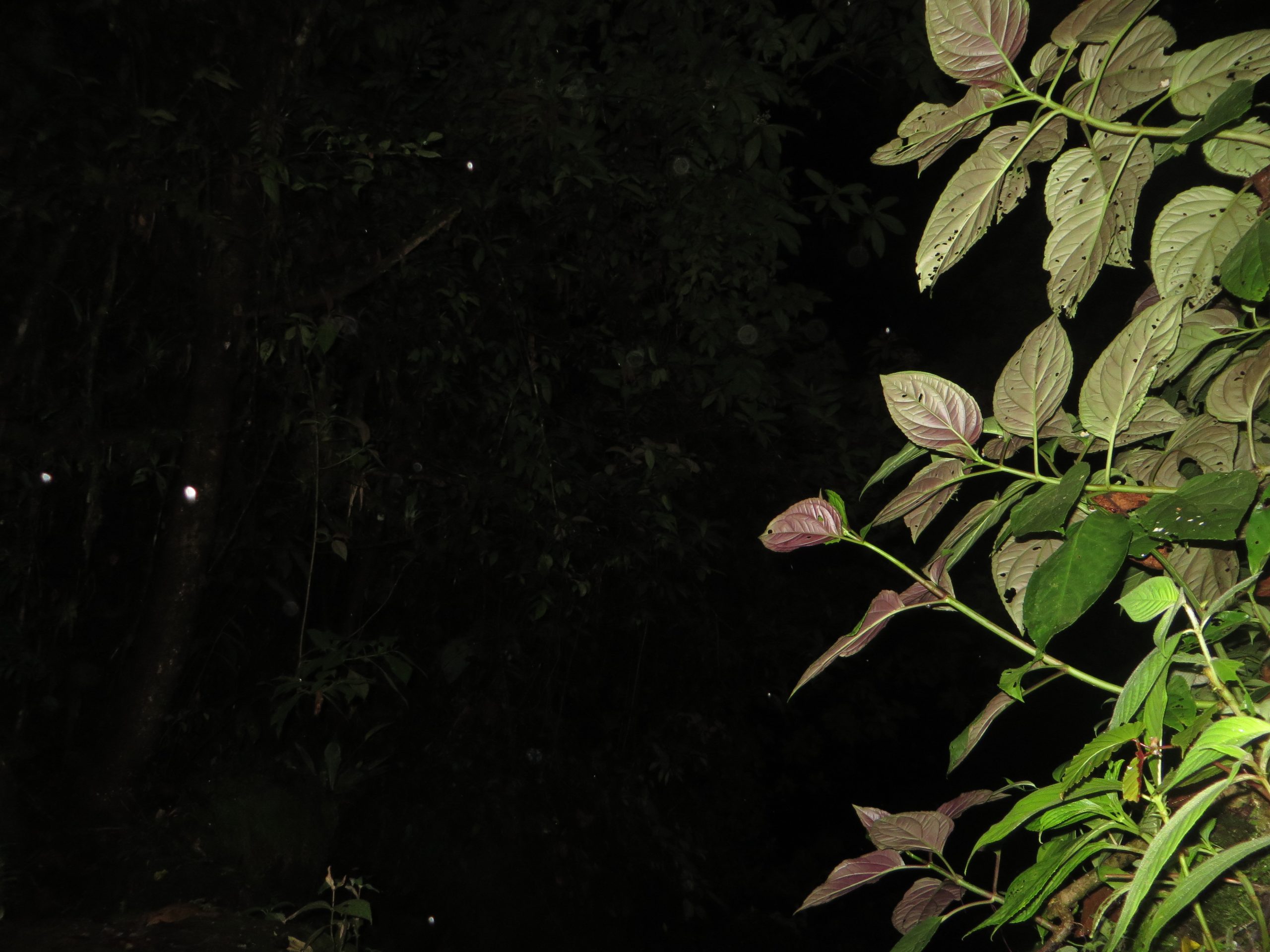
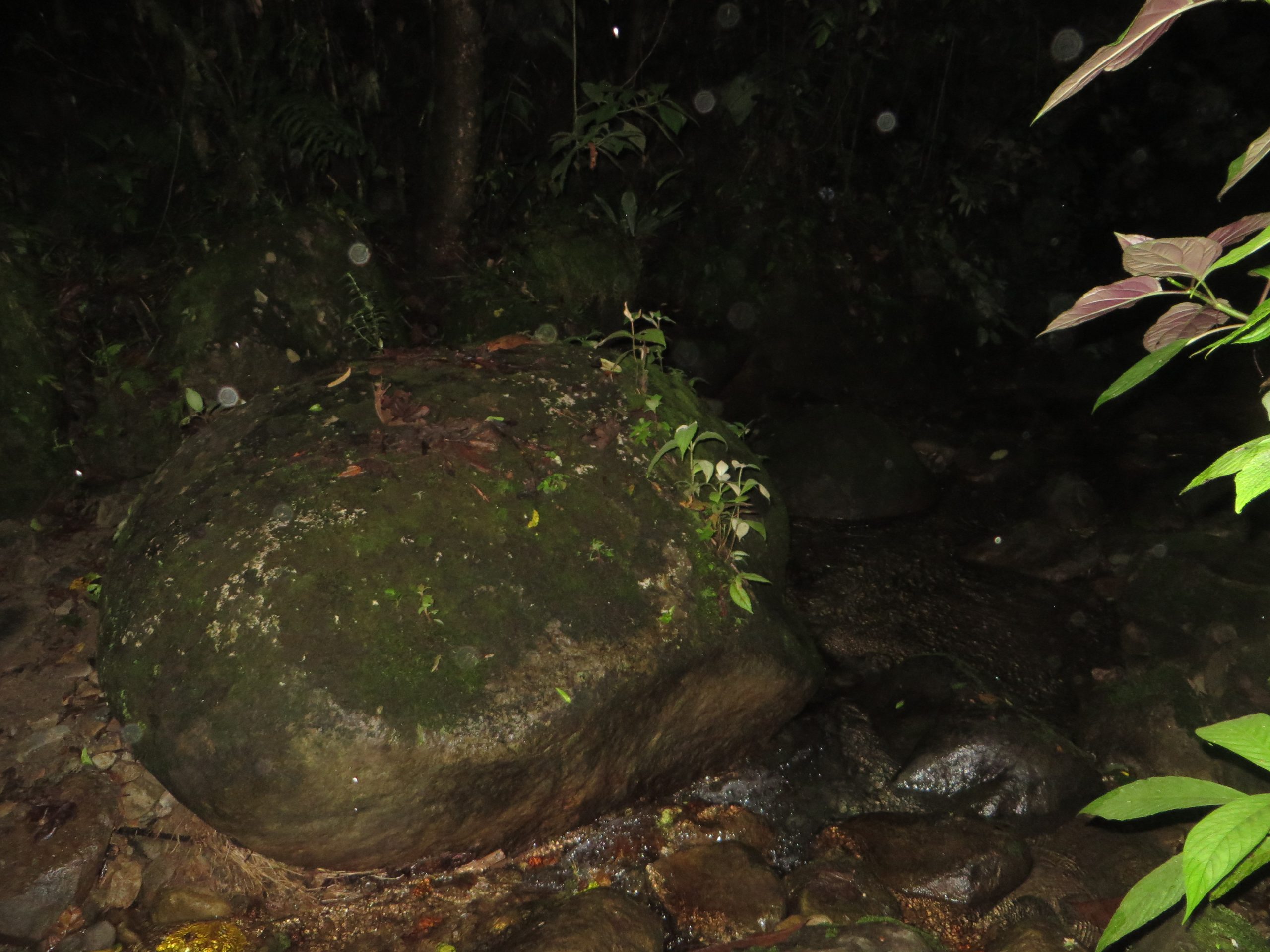

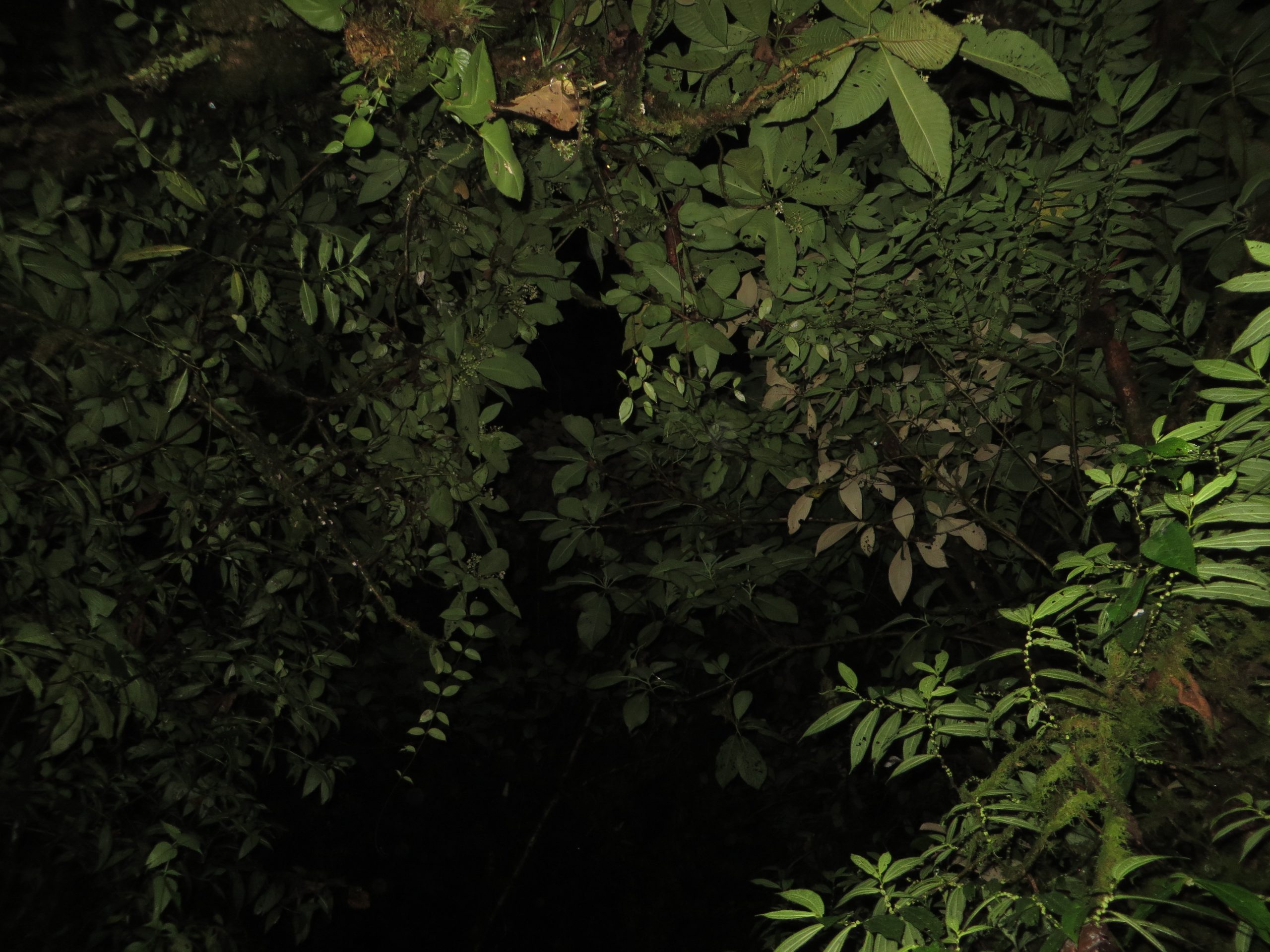

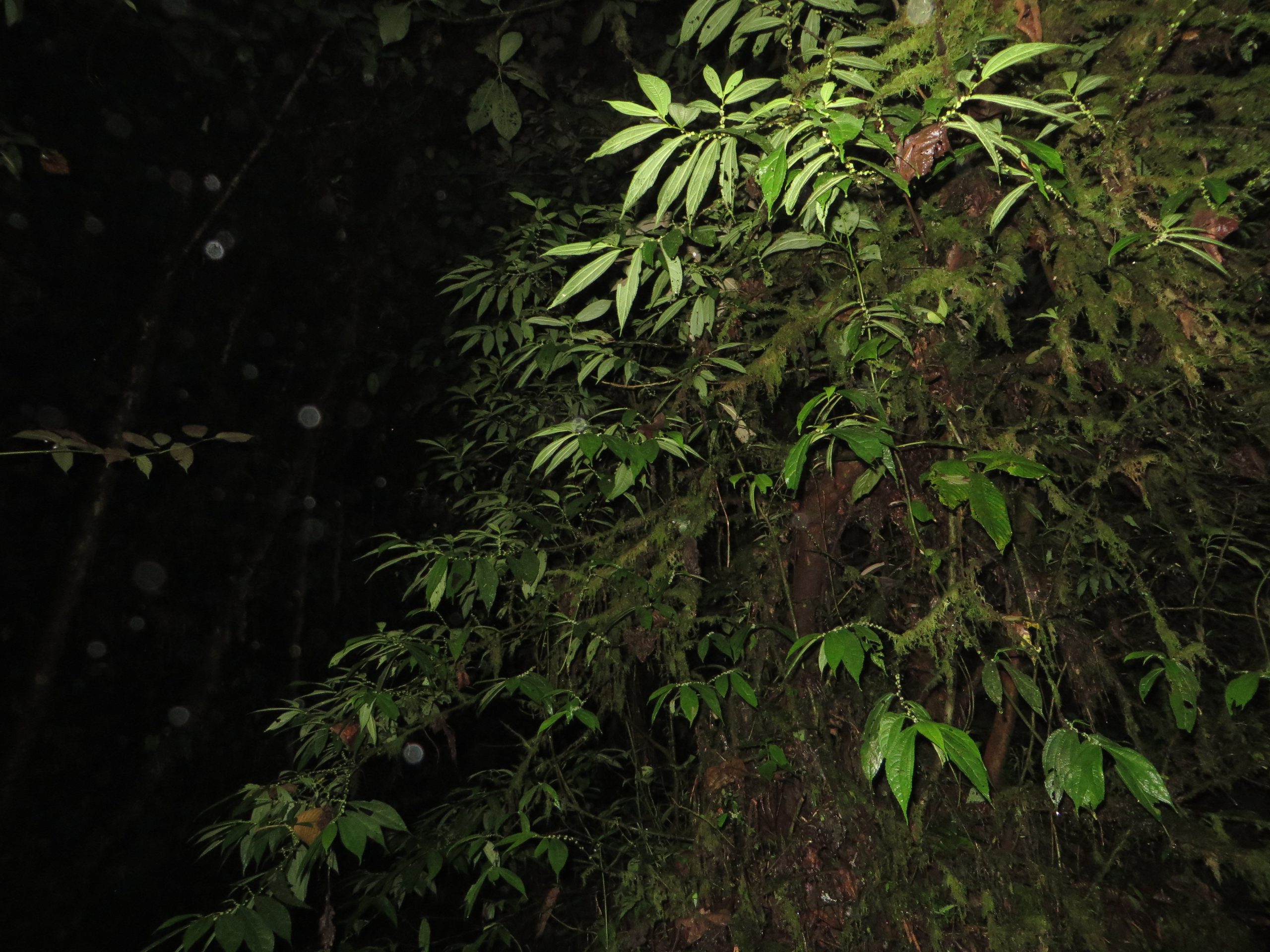
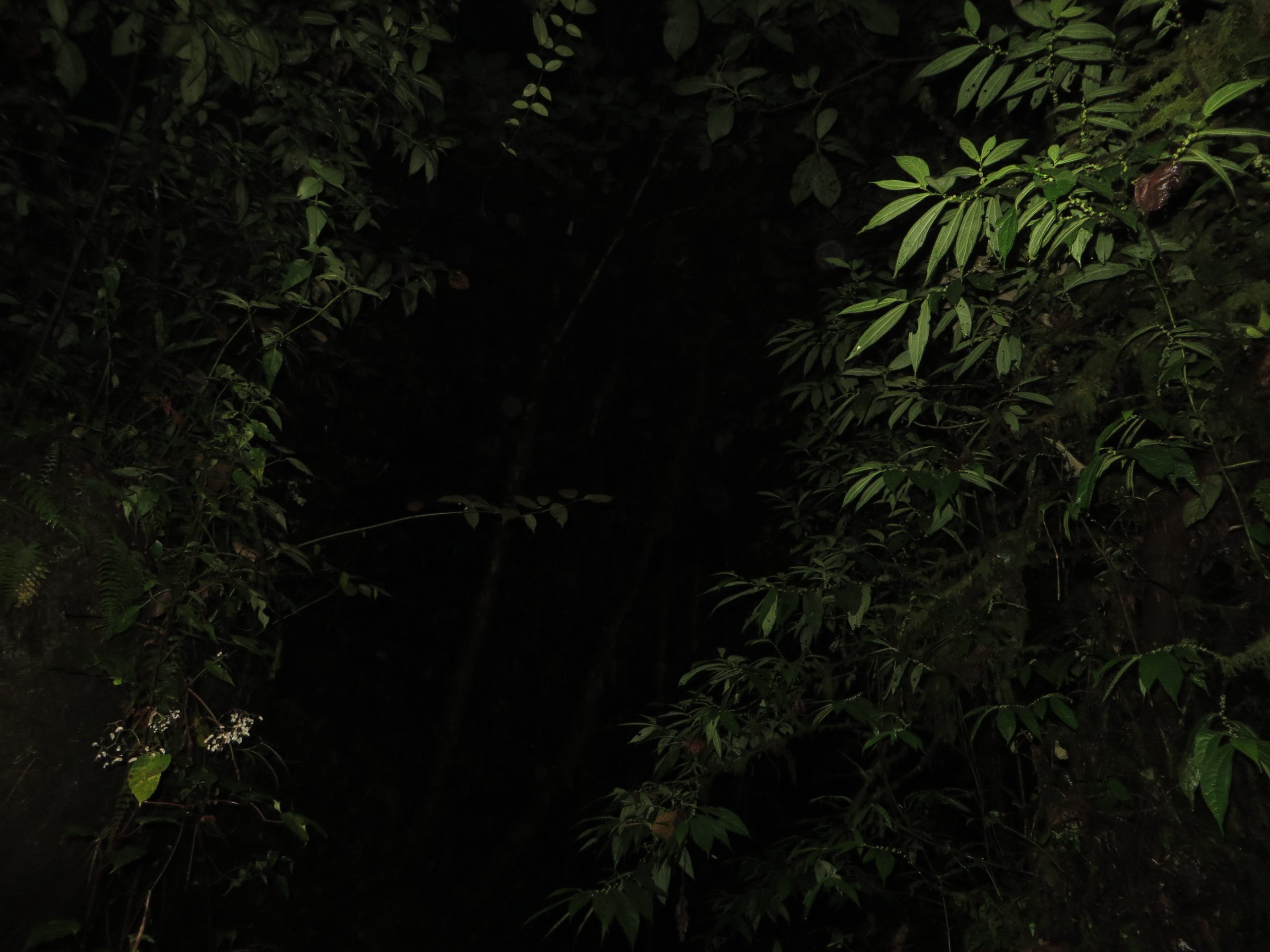

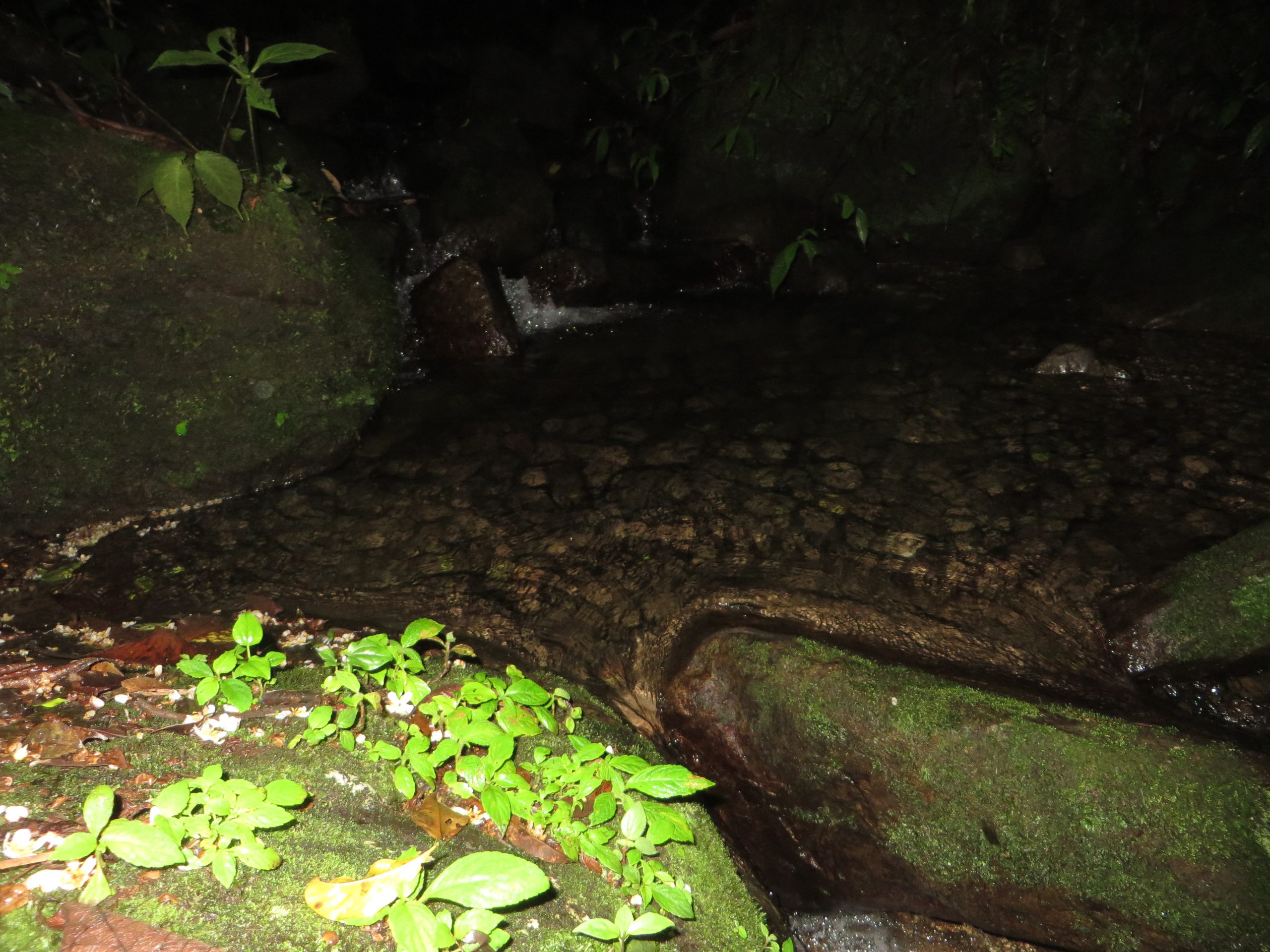
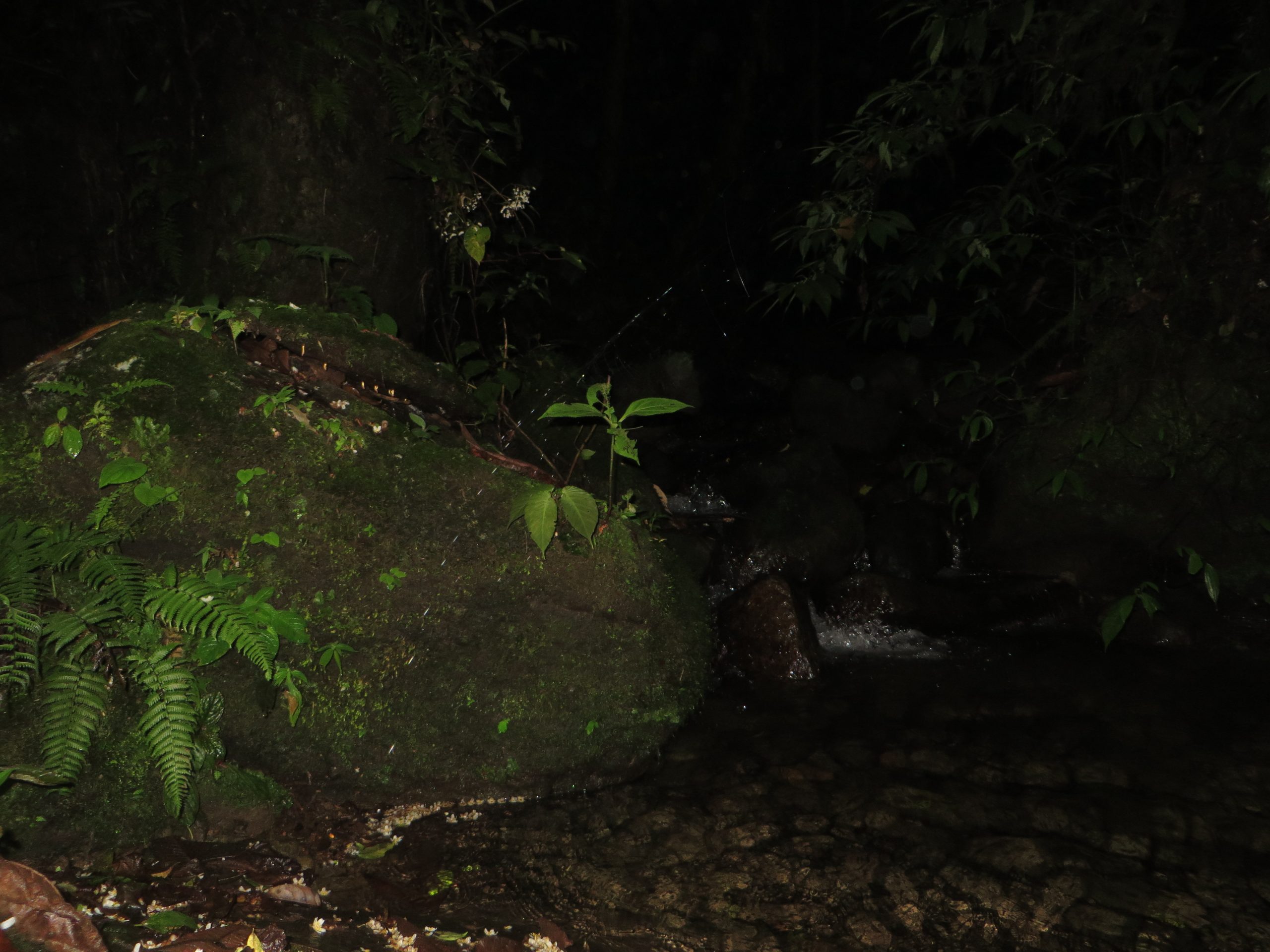
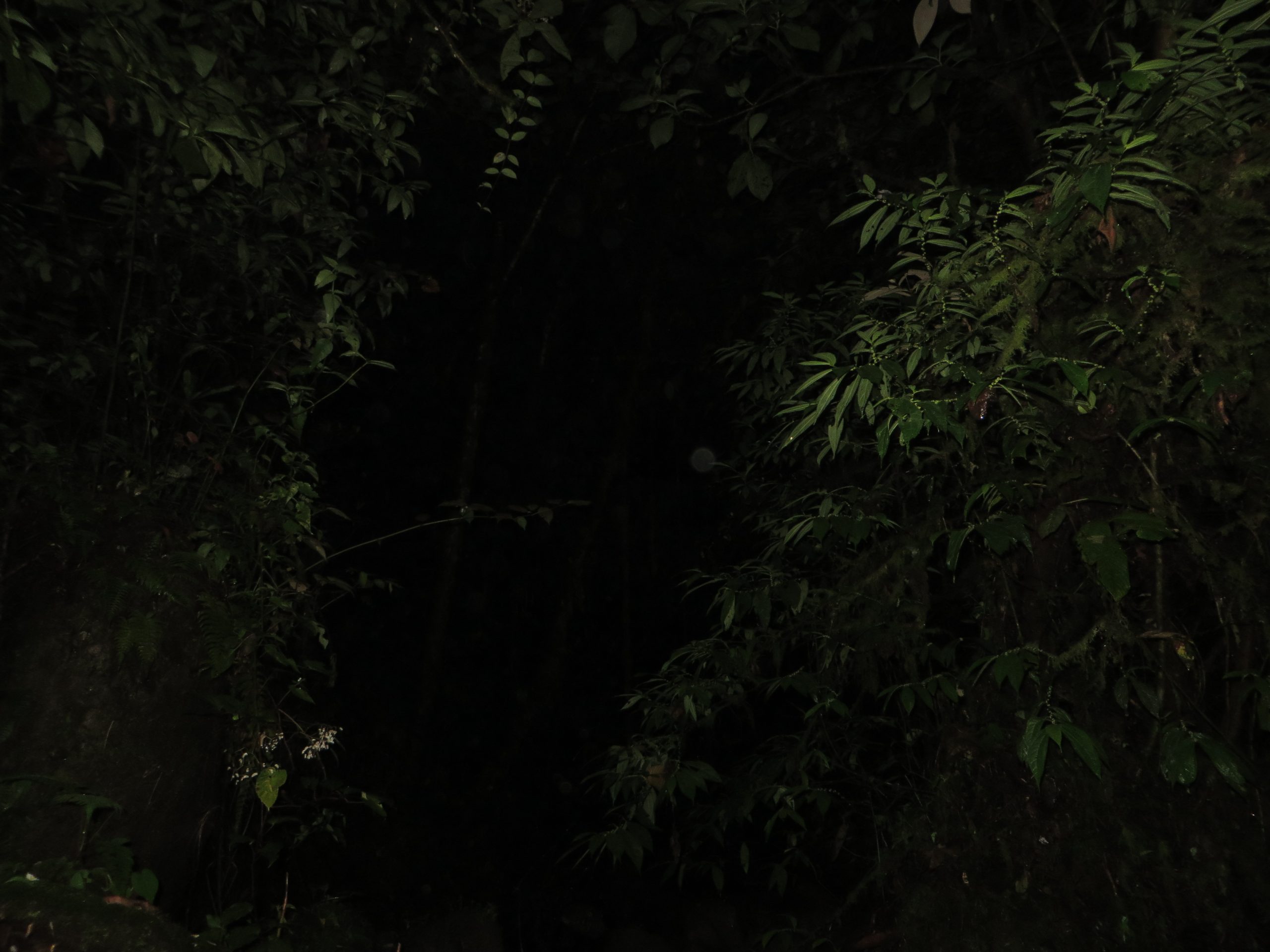

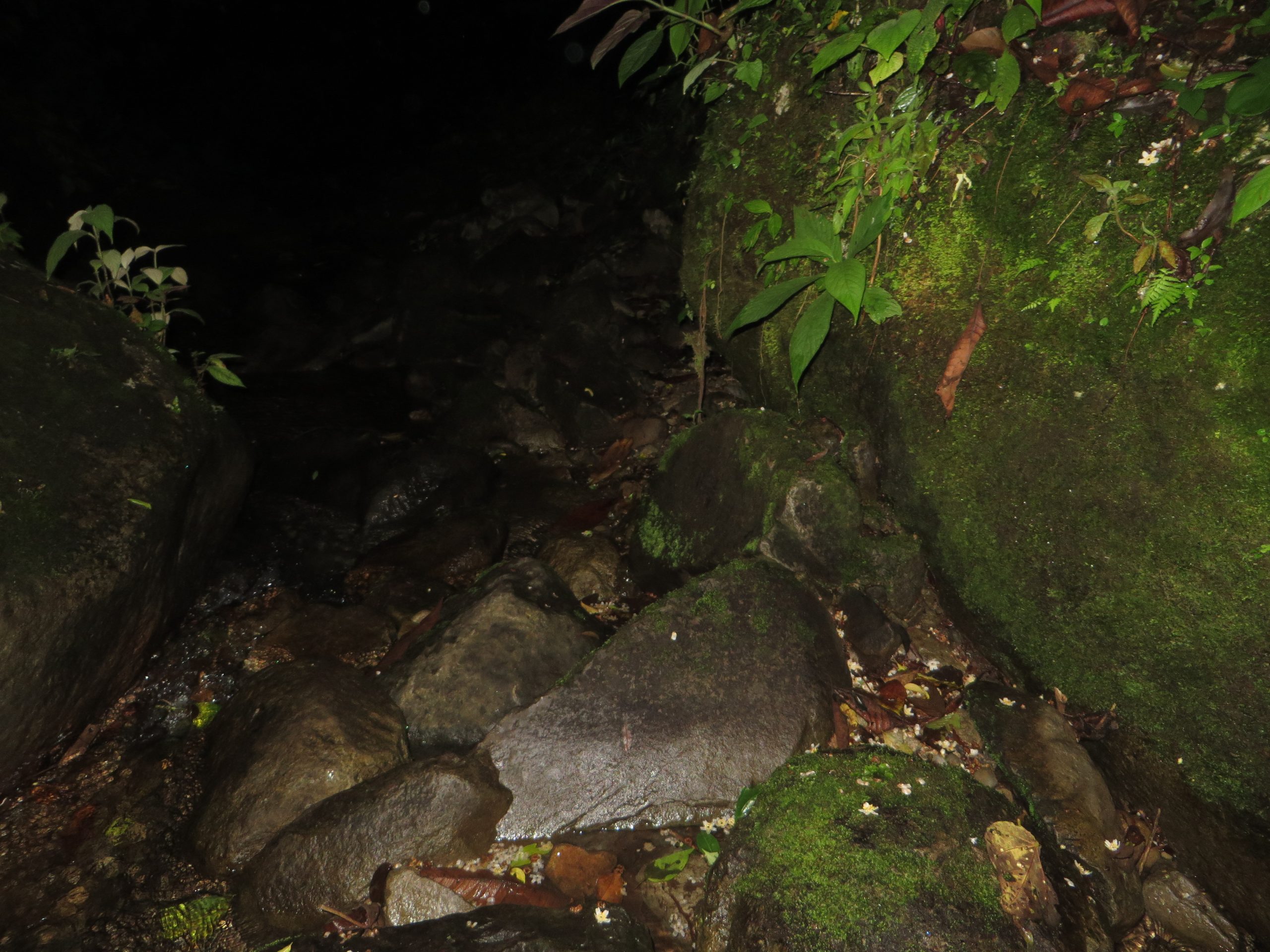
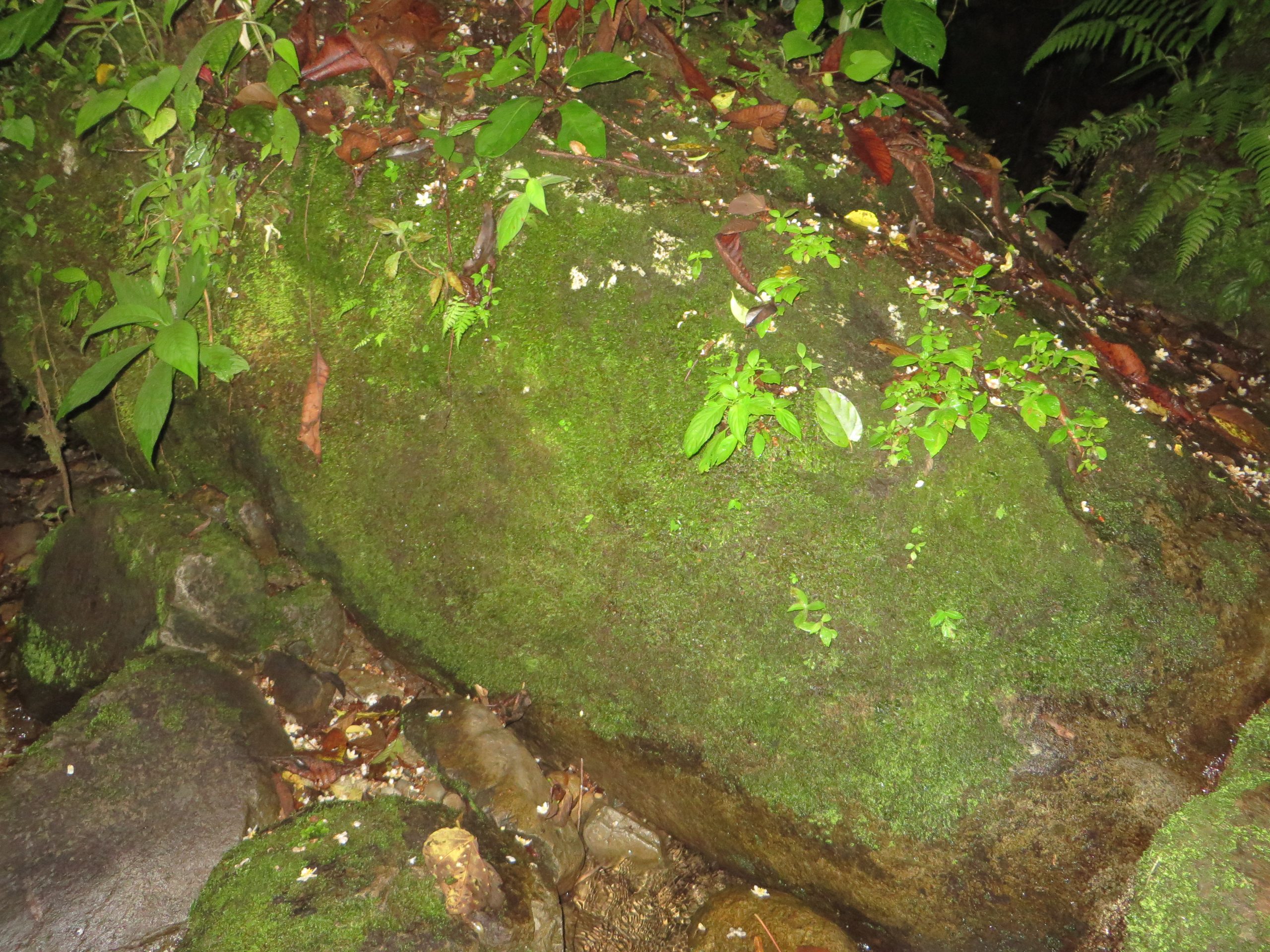

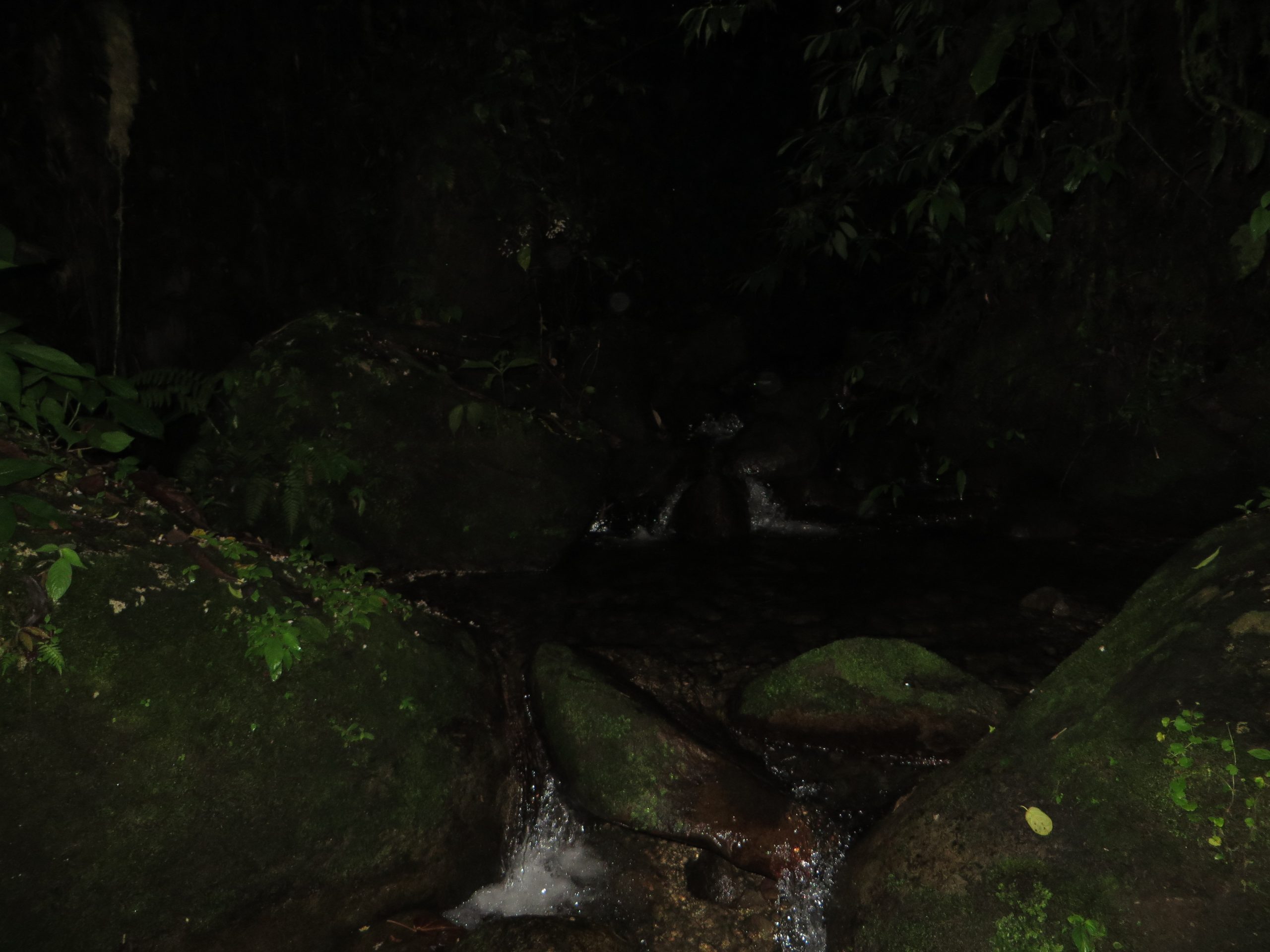
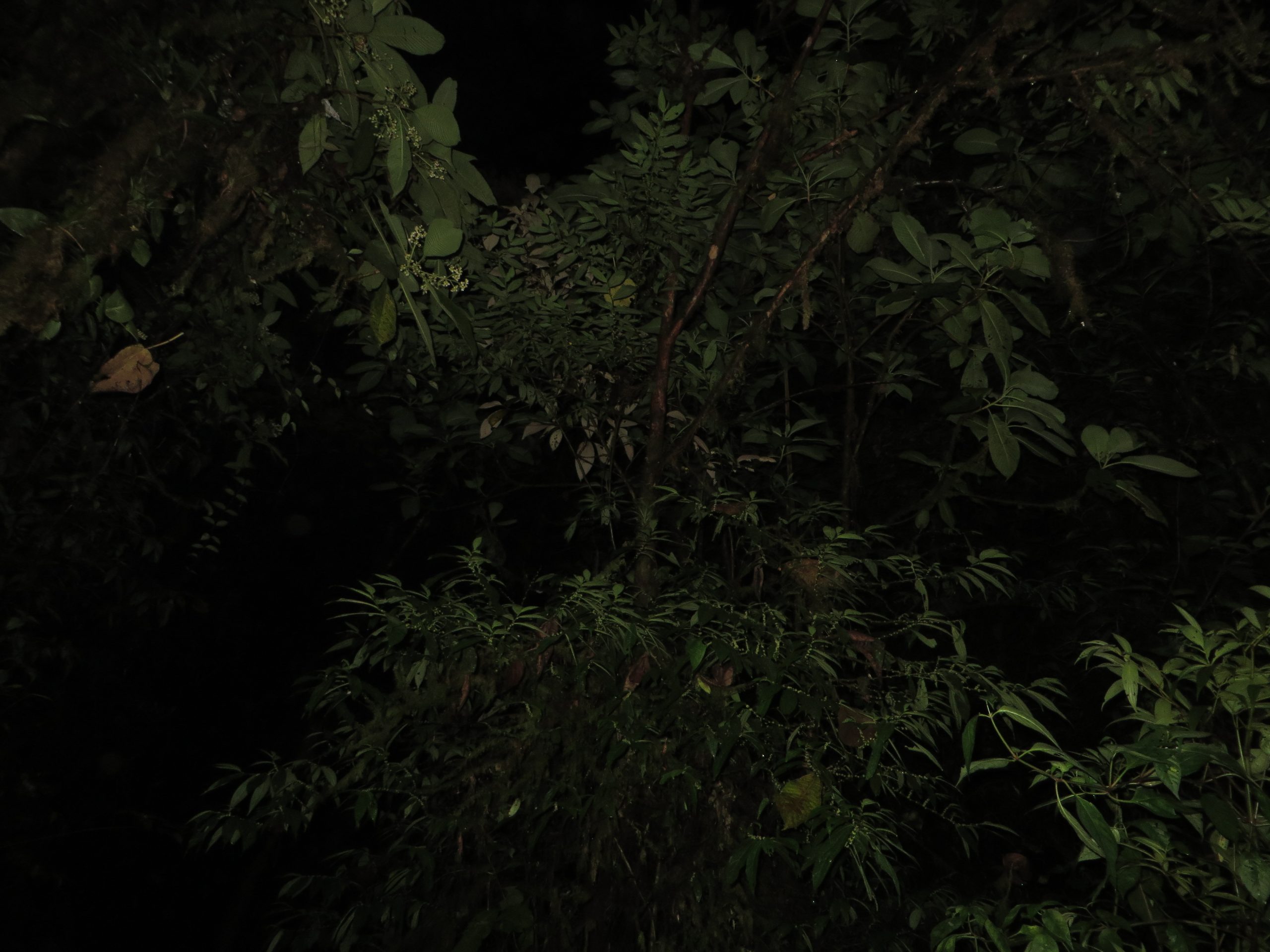
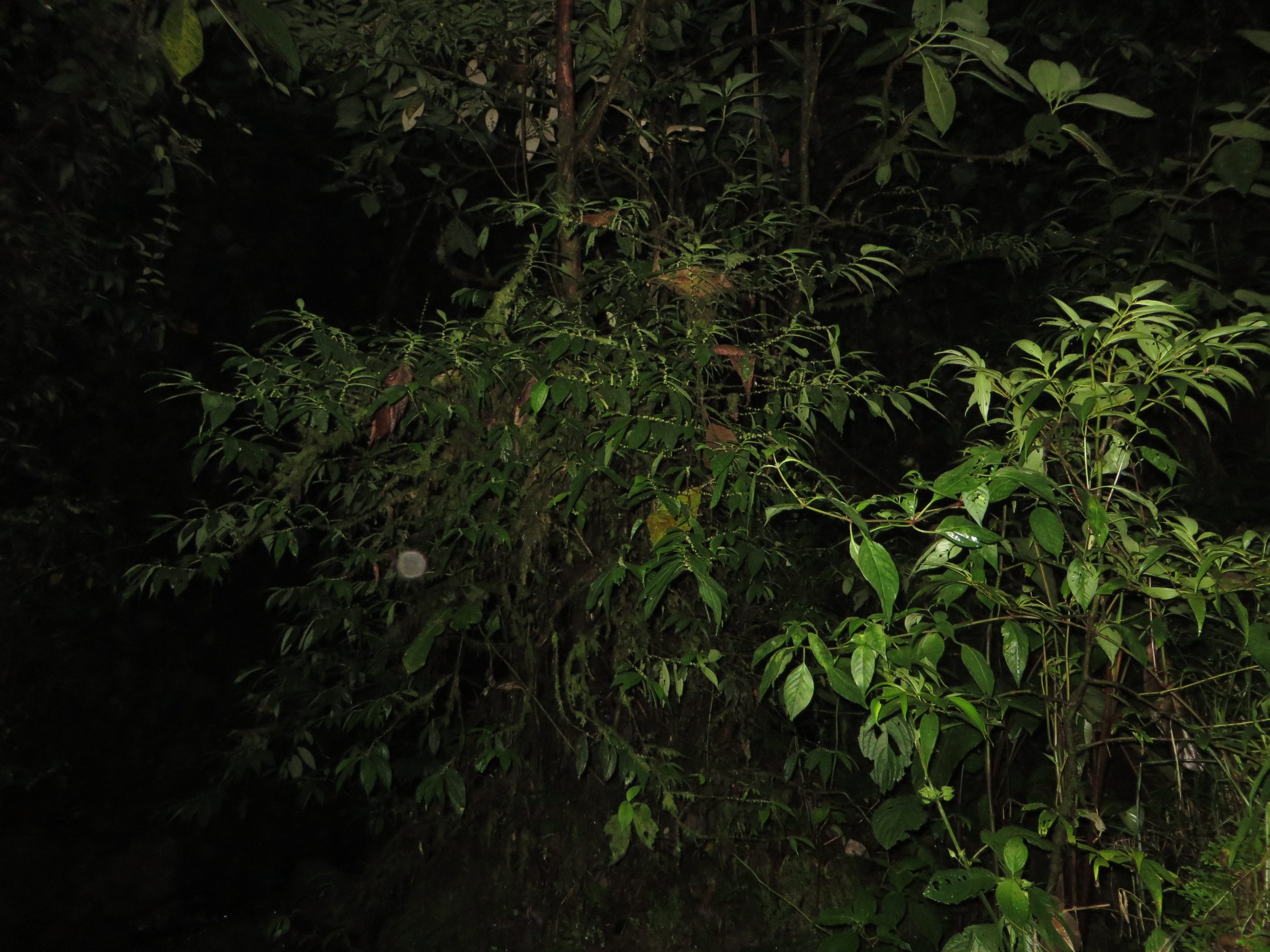
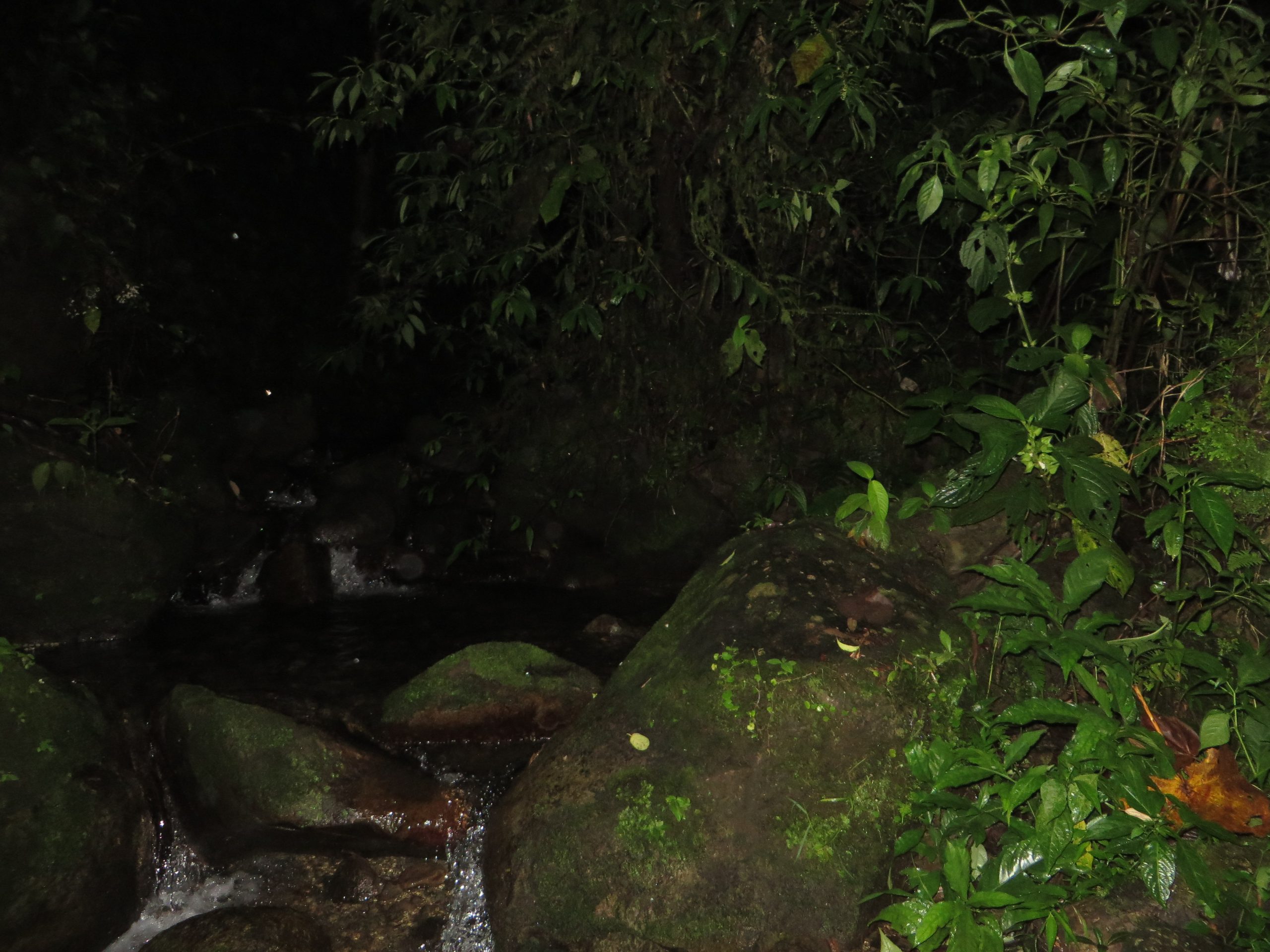
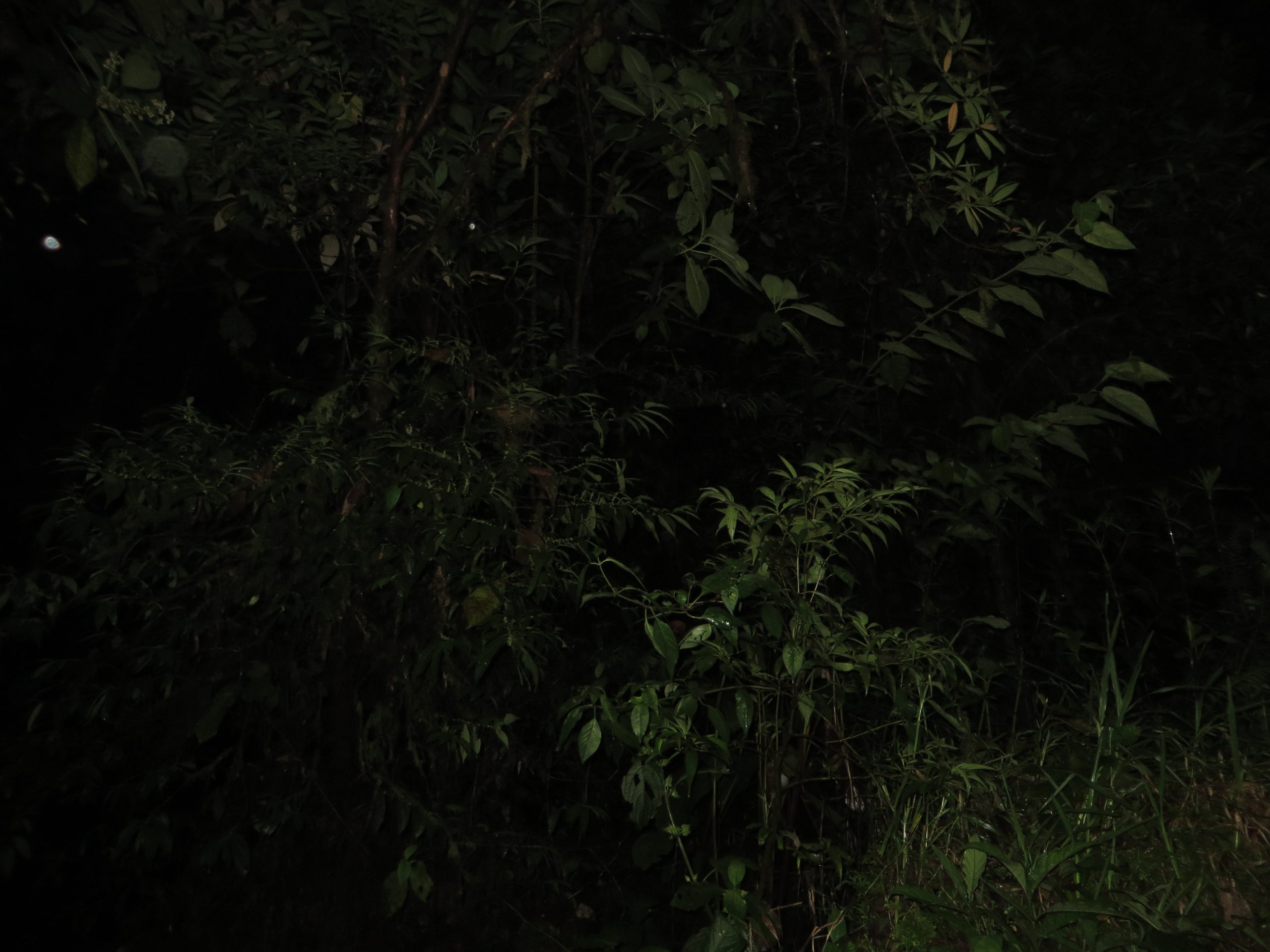
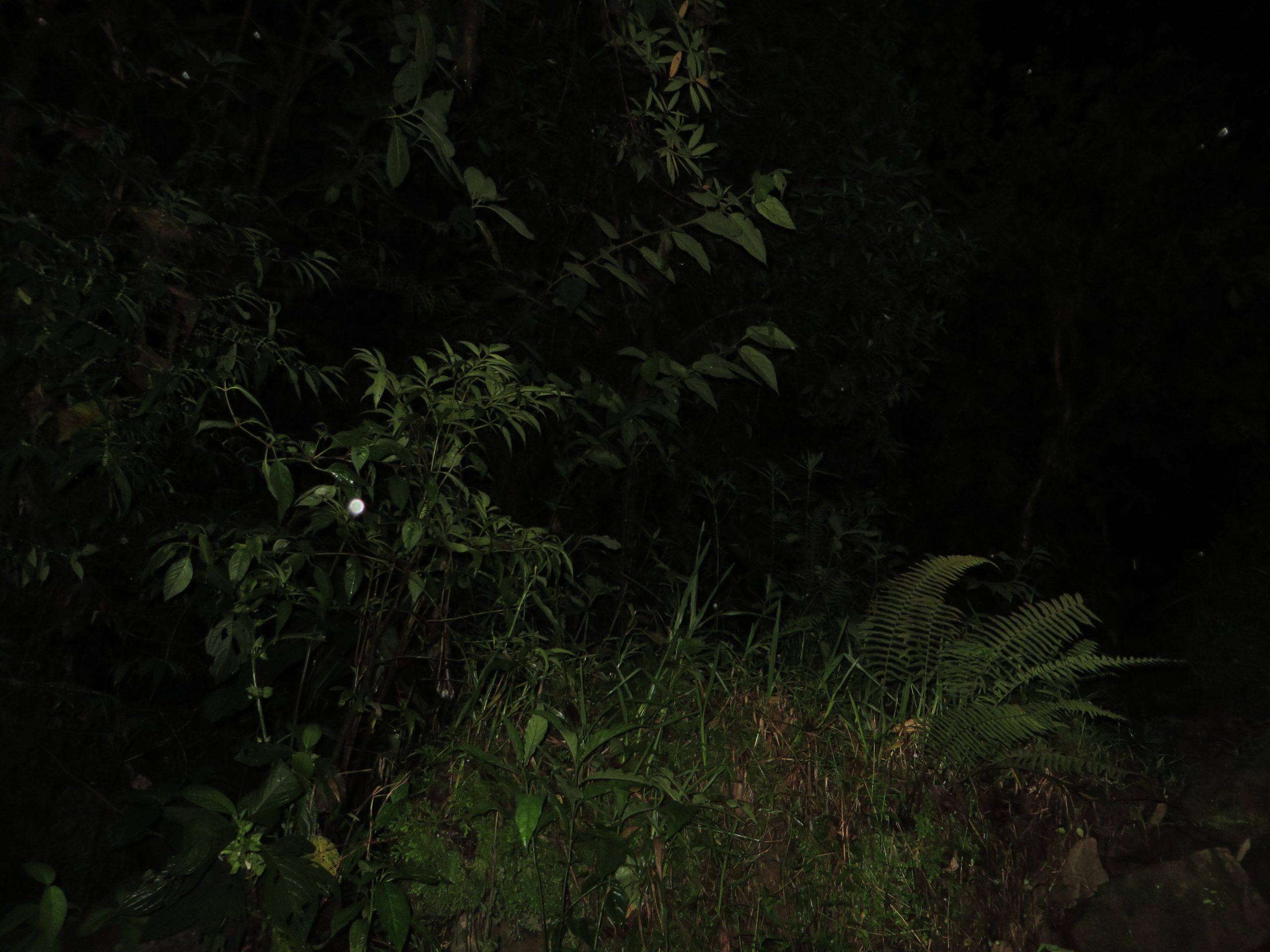
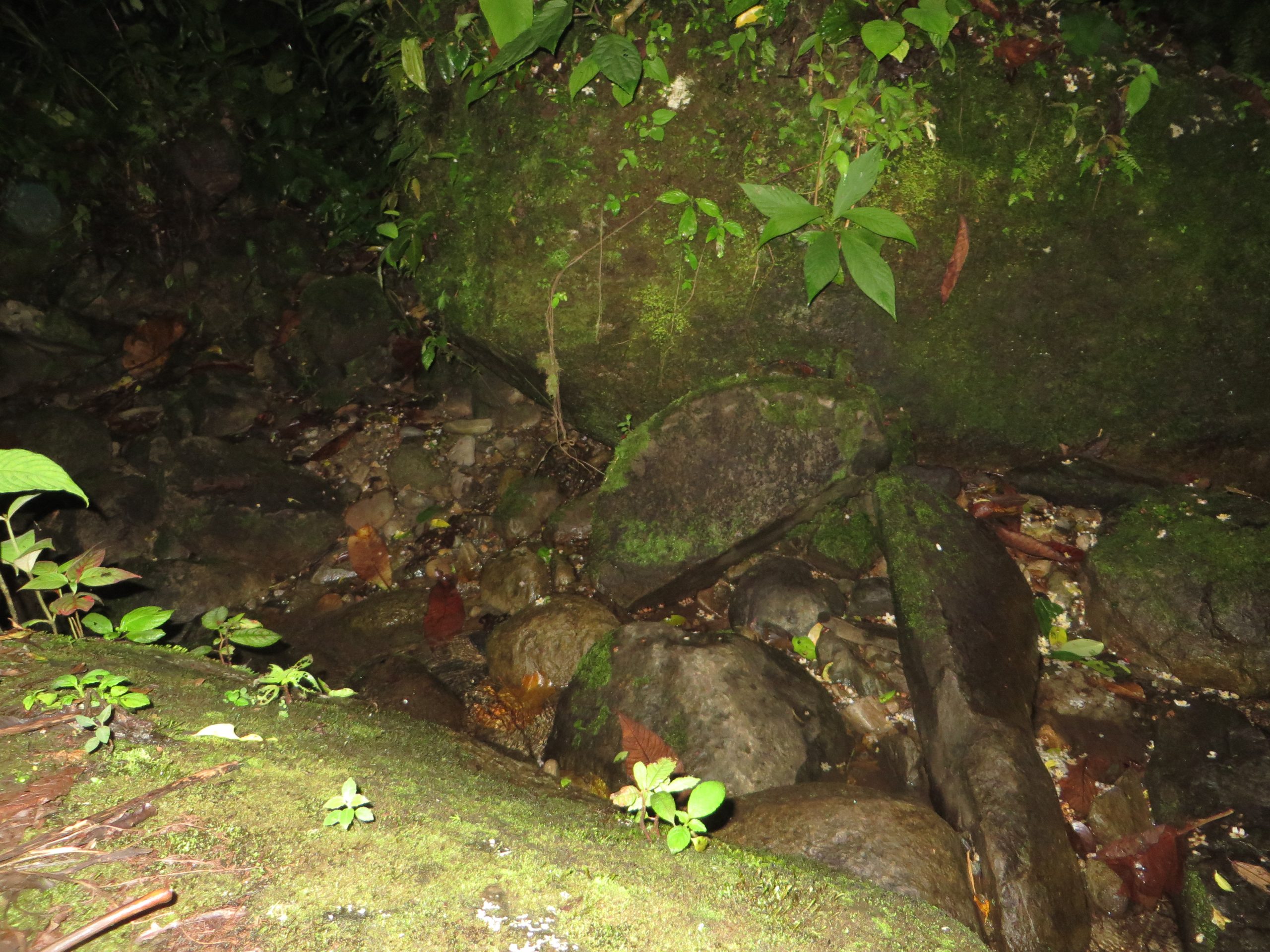
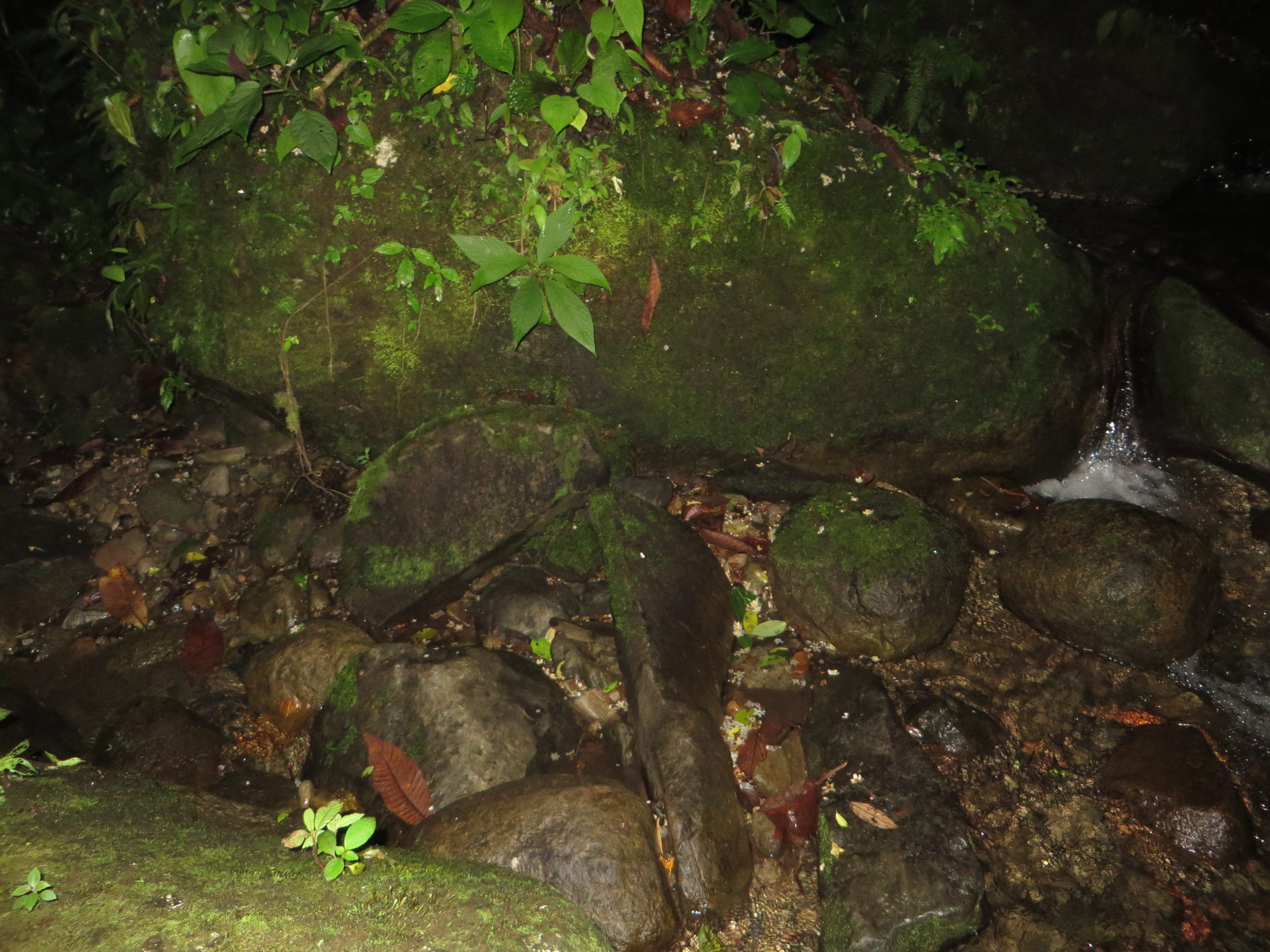
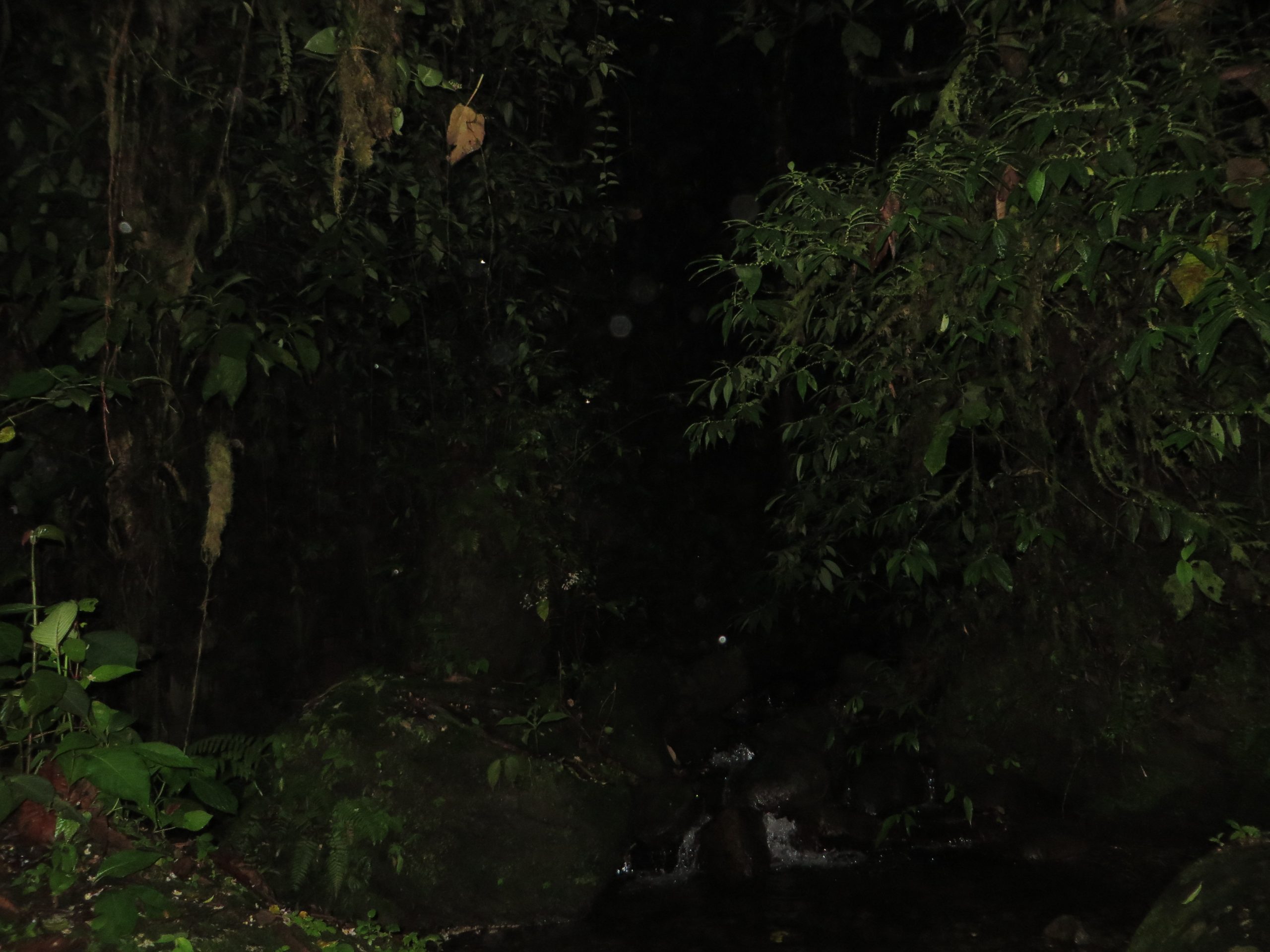
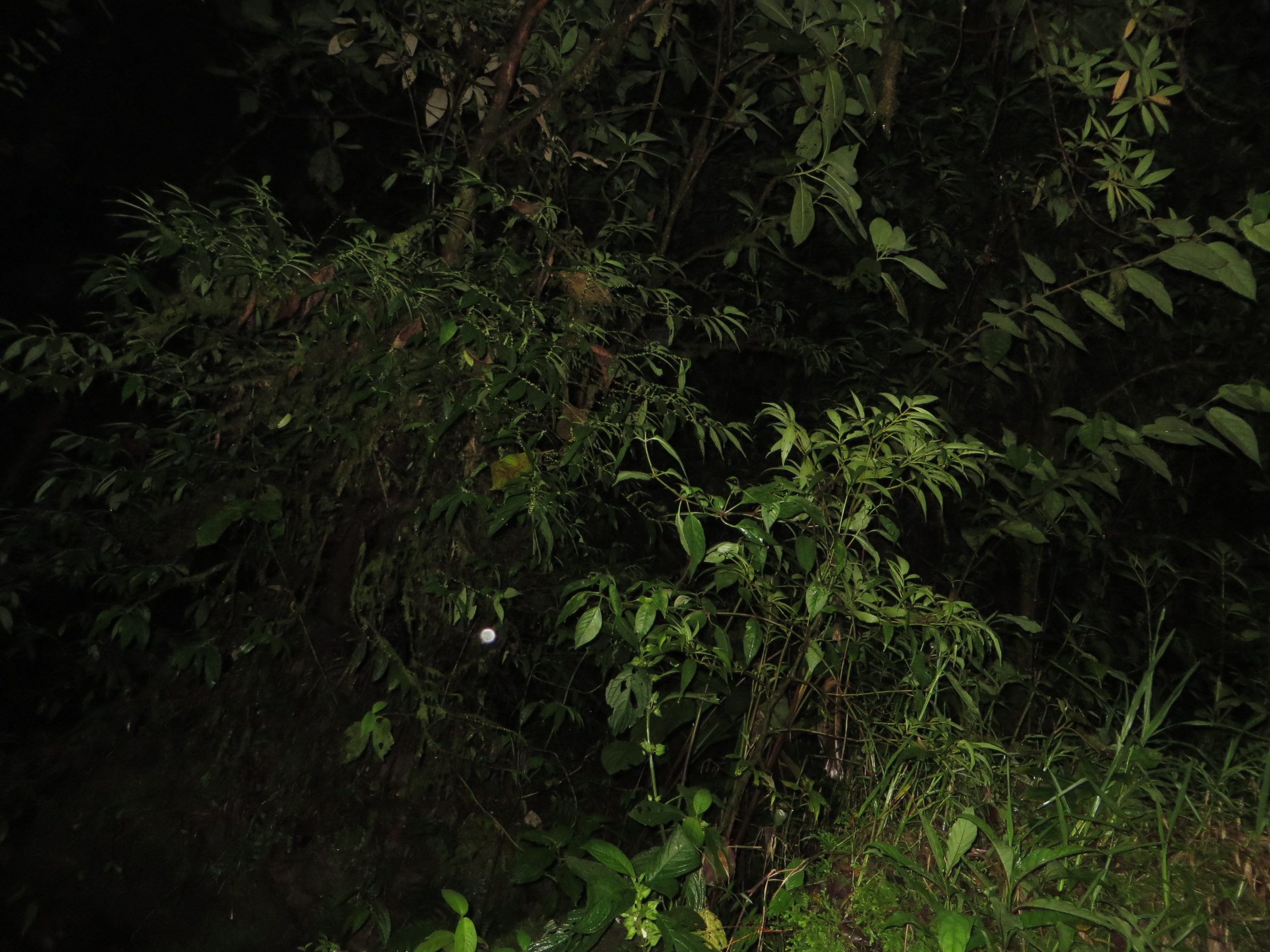
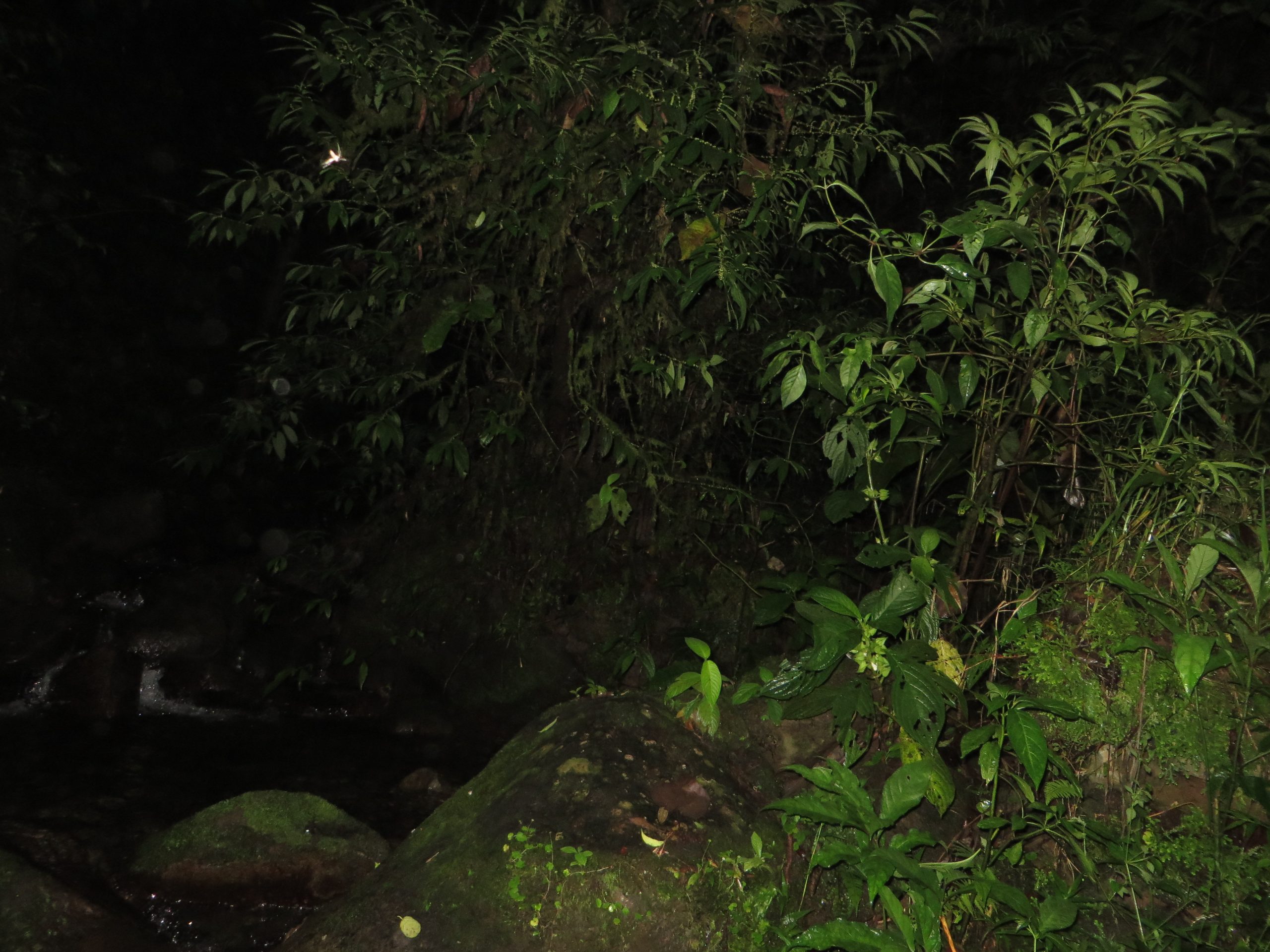
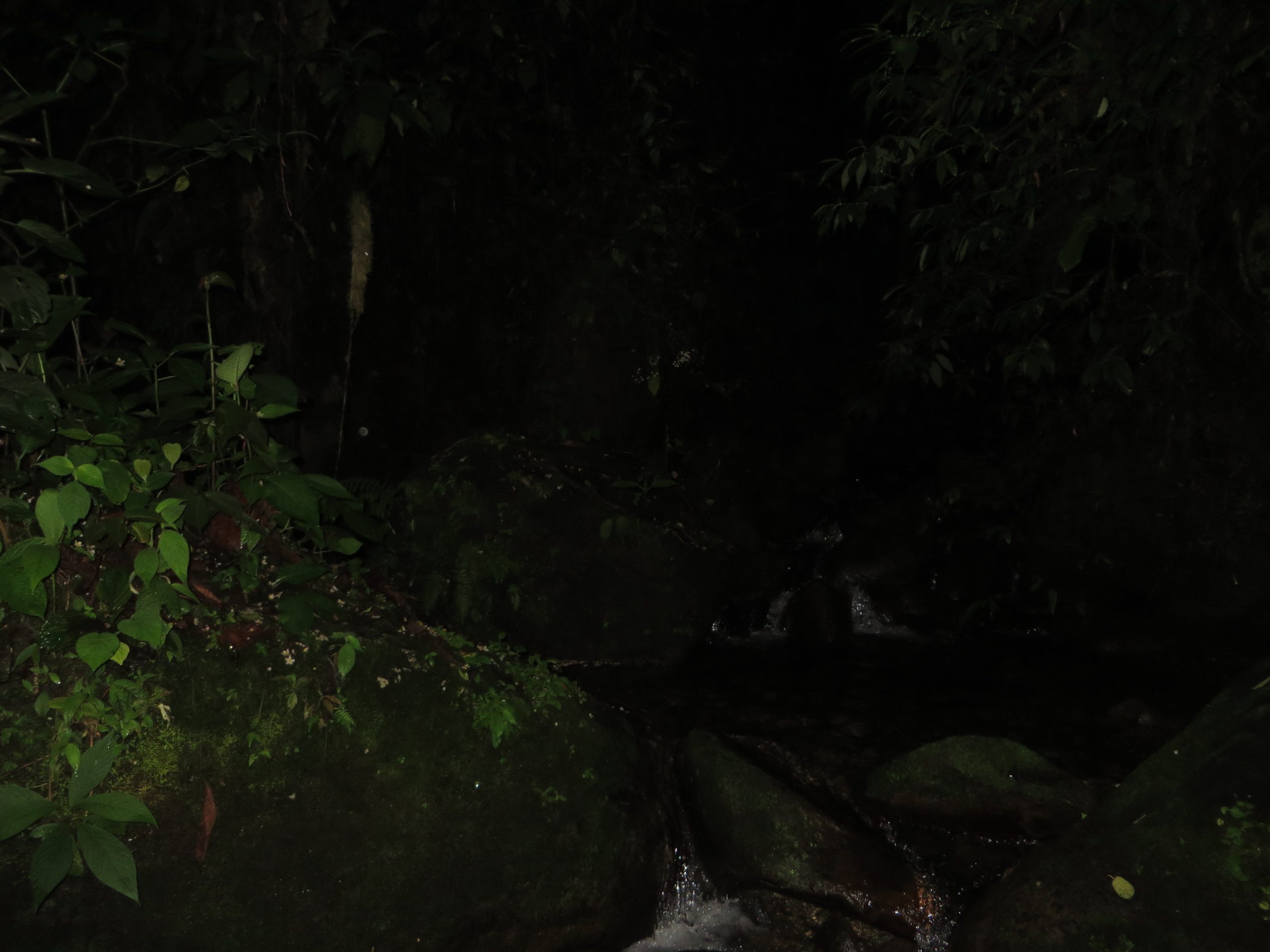

Photos of the Same Location During The Day
The following photos were taken by Romain at the same location, during the daytime. Seeing the same day-time photos as our night-time photos is beneficial to illustrate how different things look from the daytime to the nighttime. It’s very difficult to identify the same rocks and boulders when comparing photos.
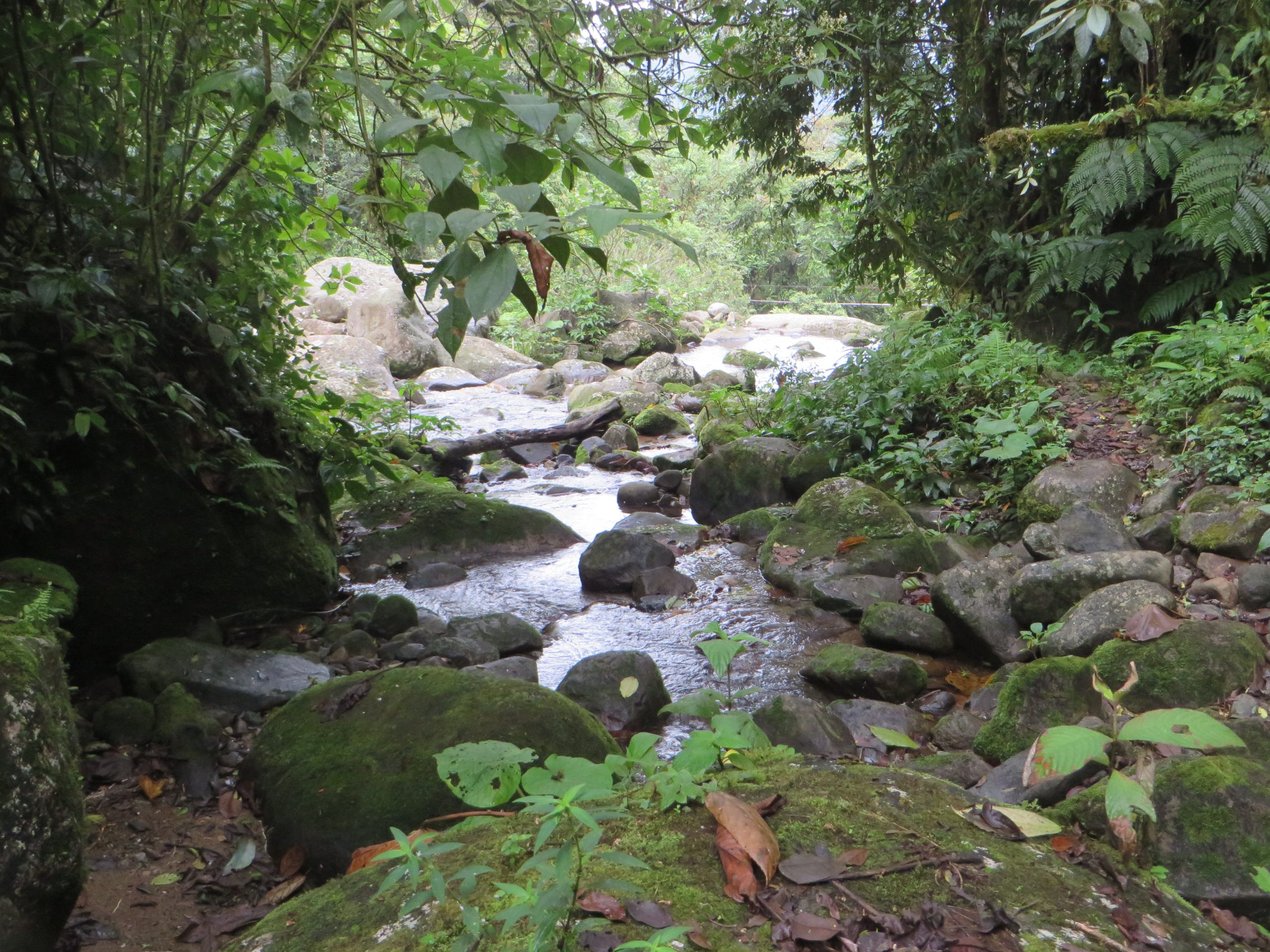
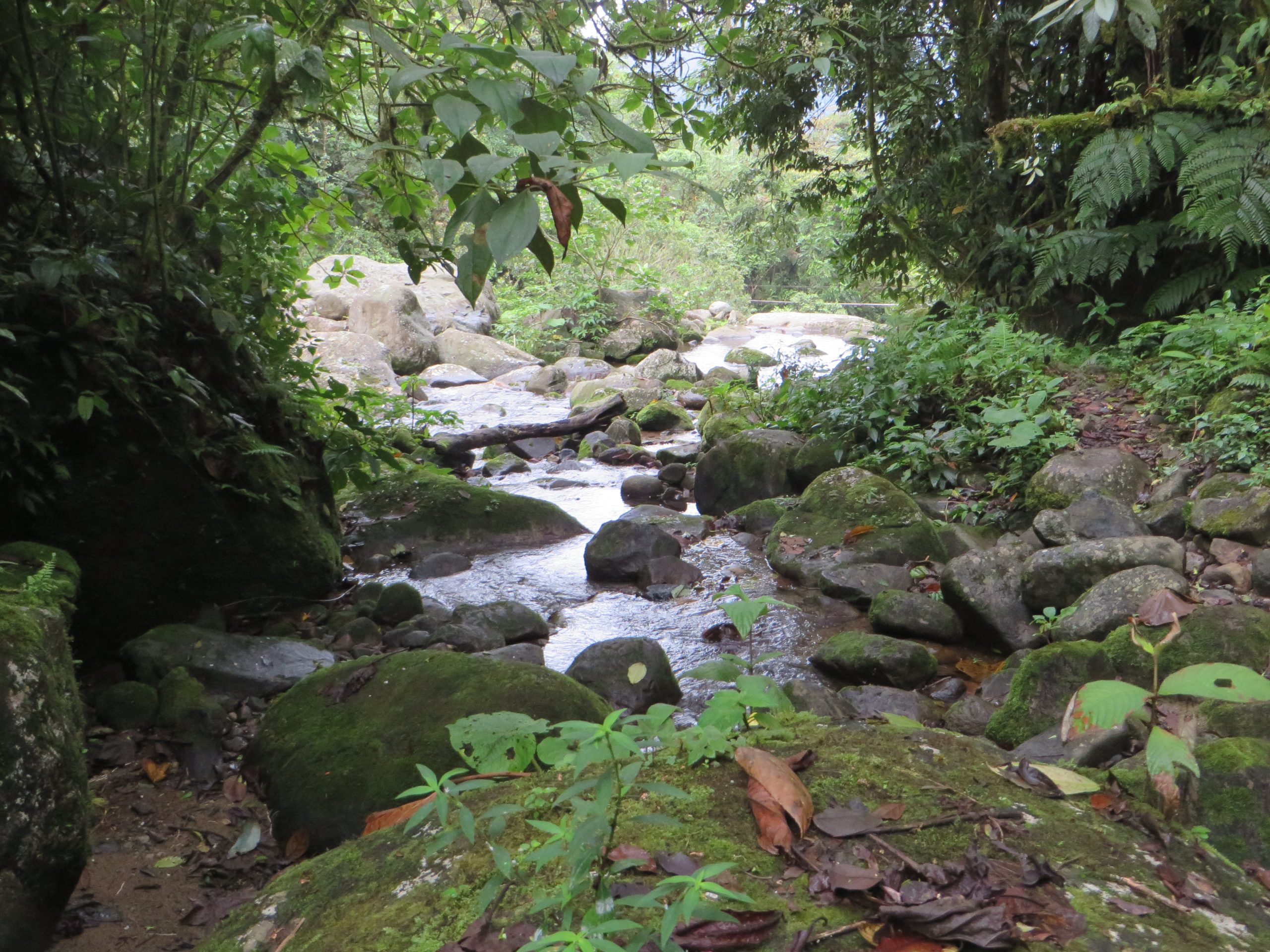
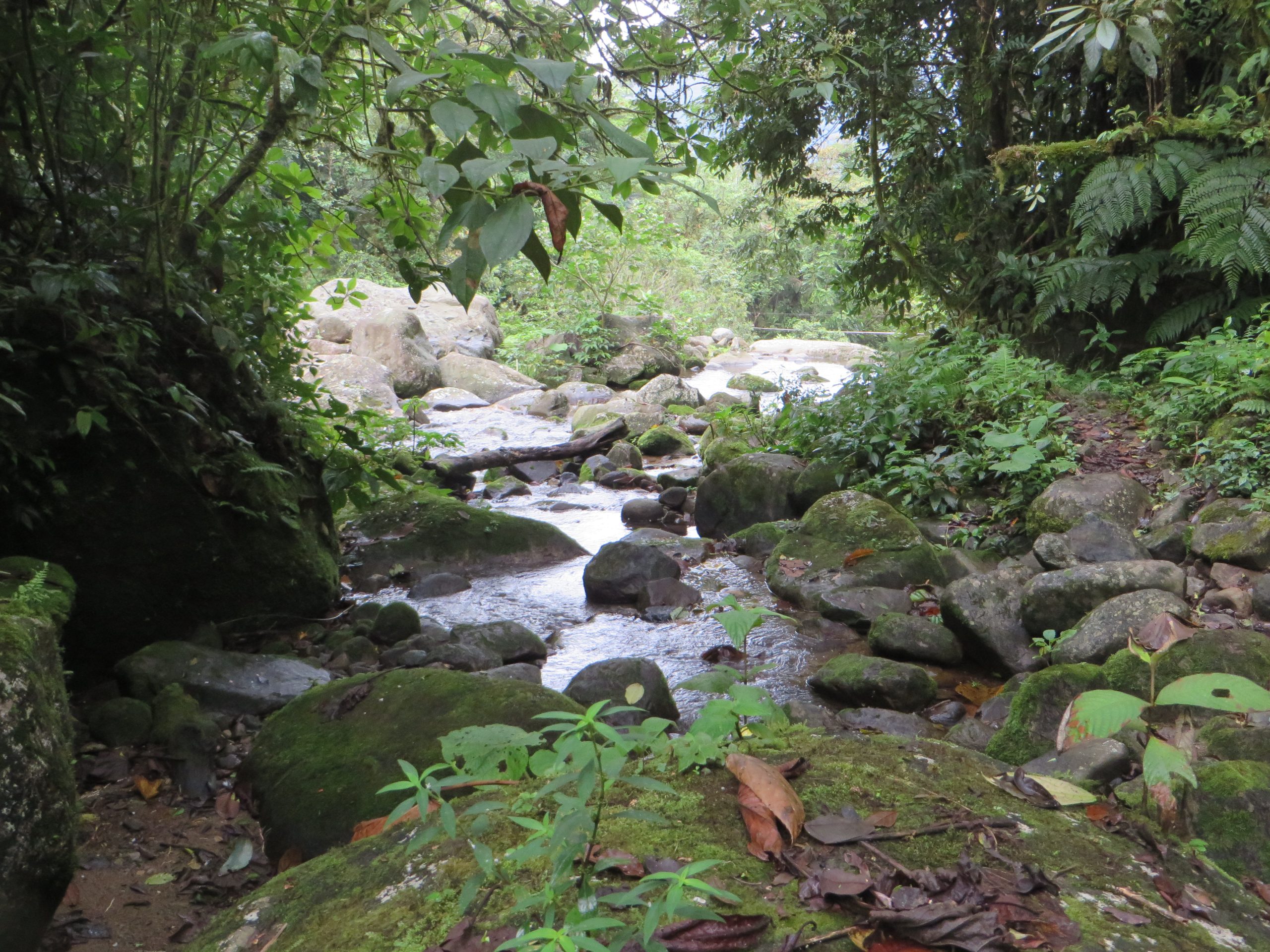
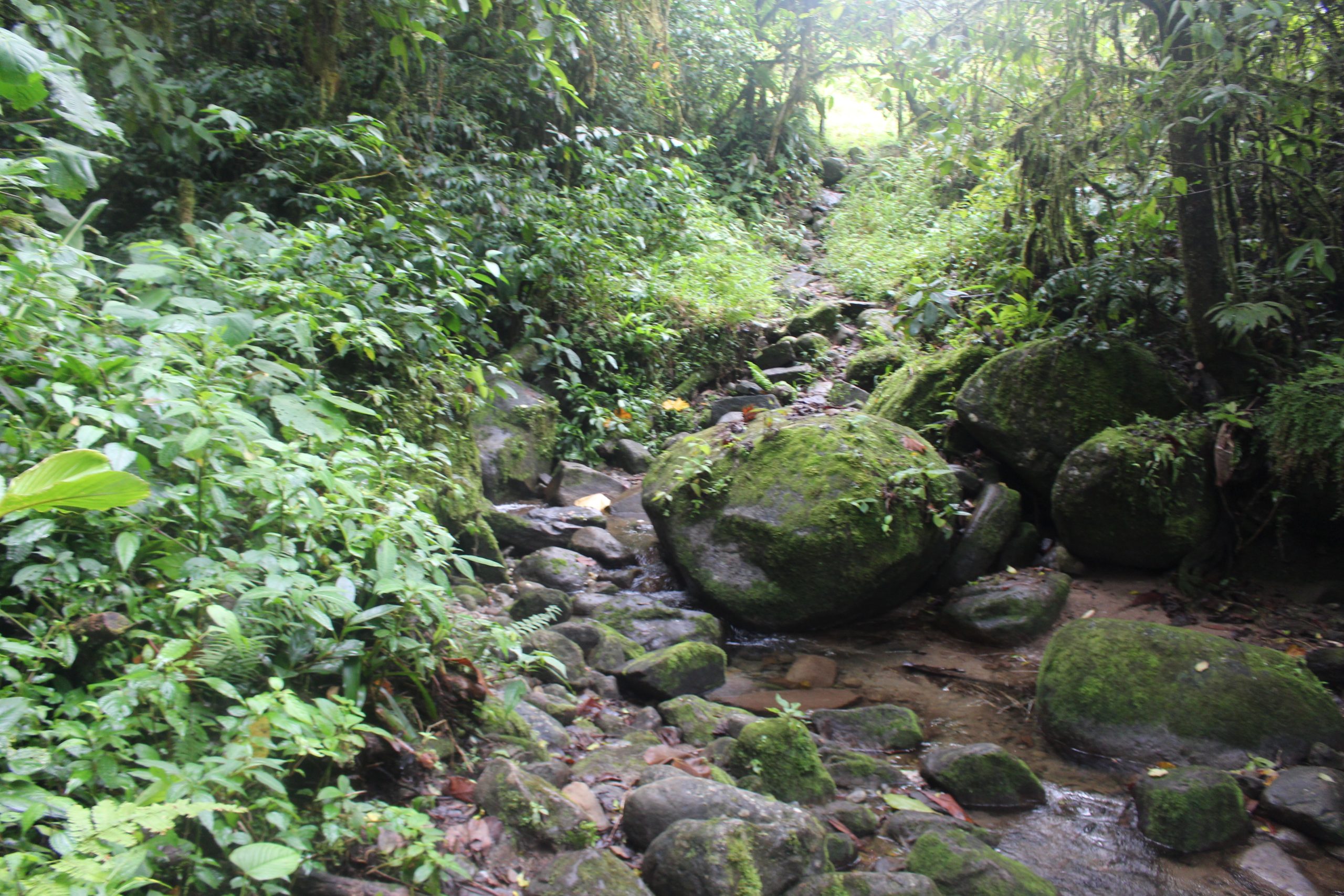
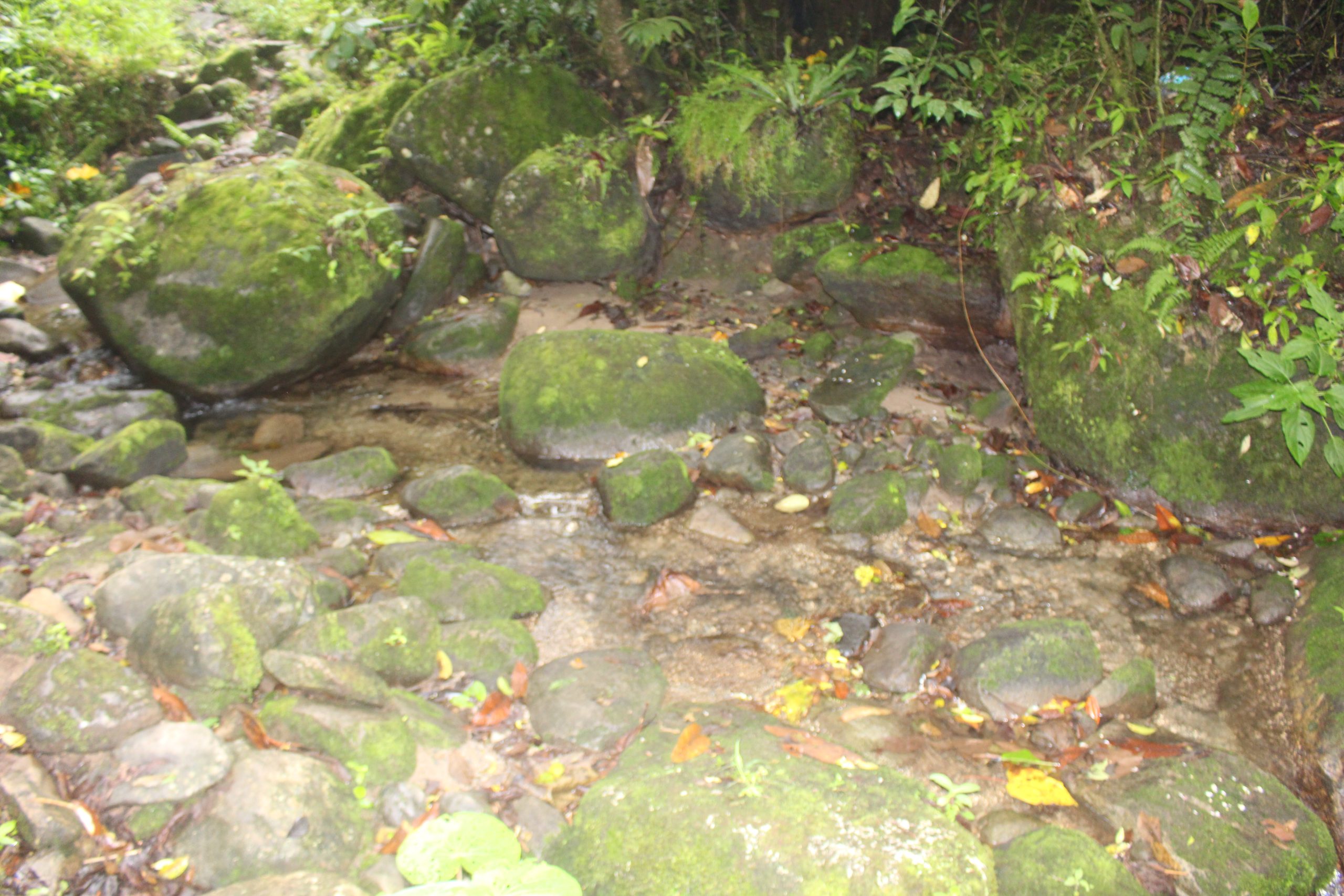
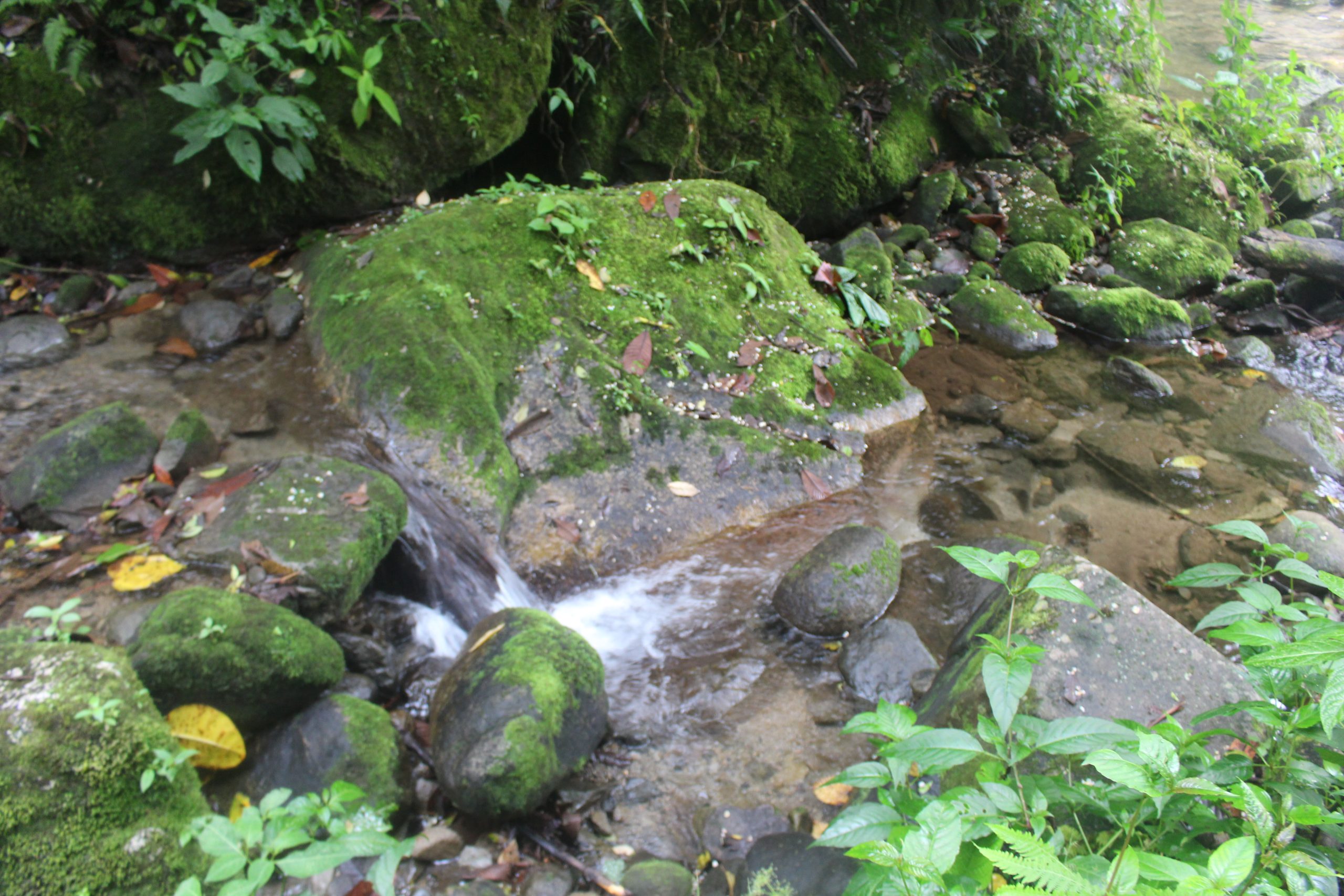


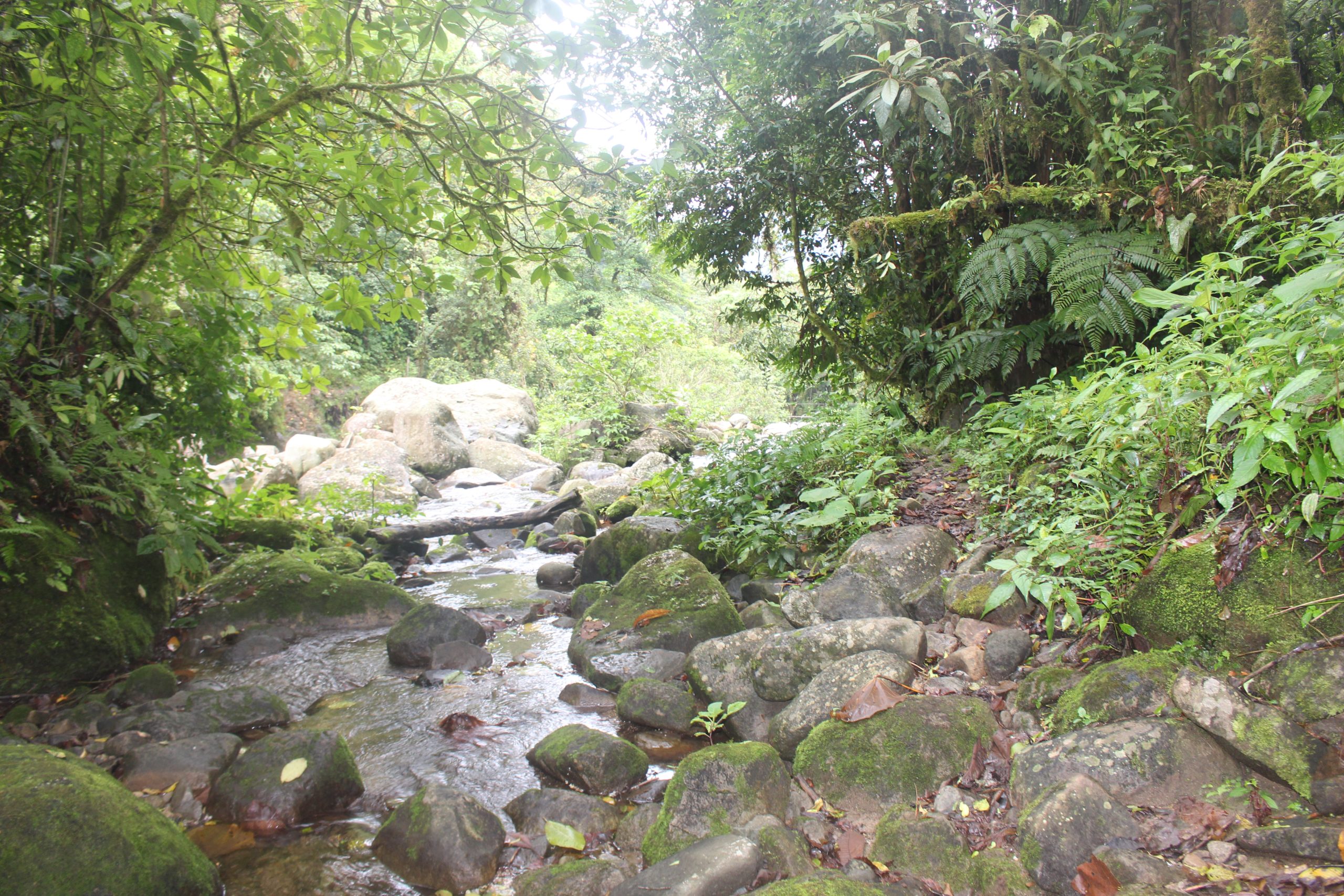
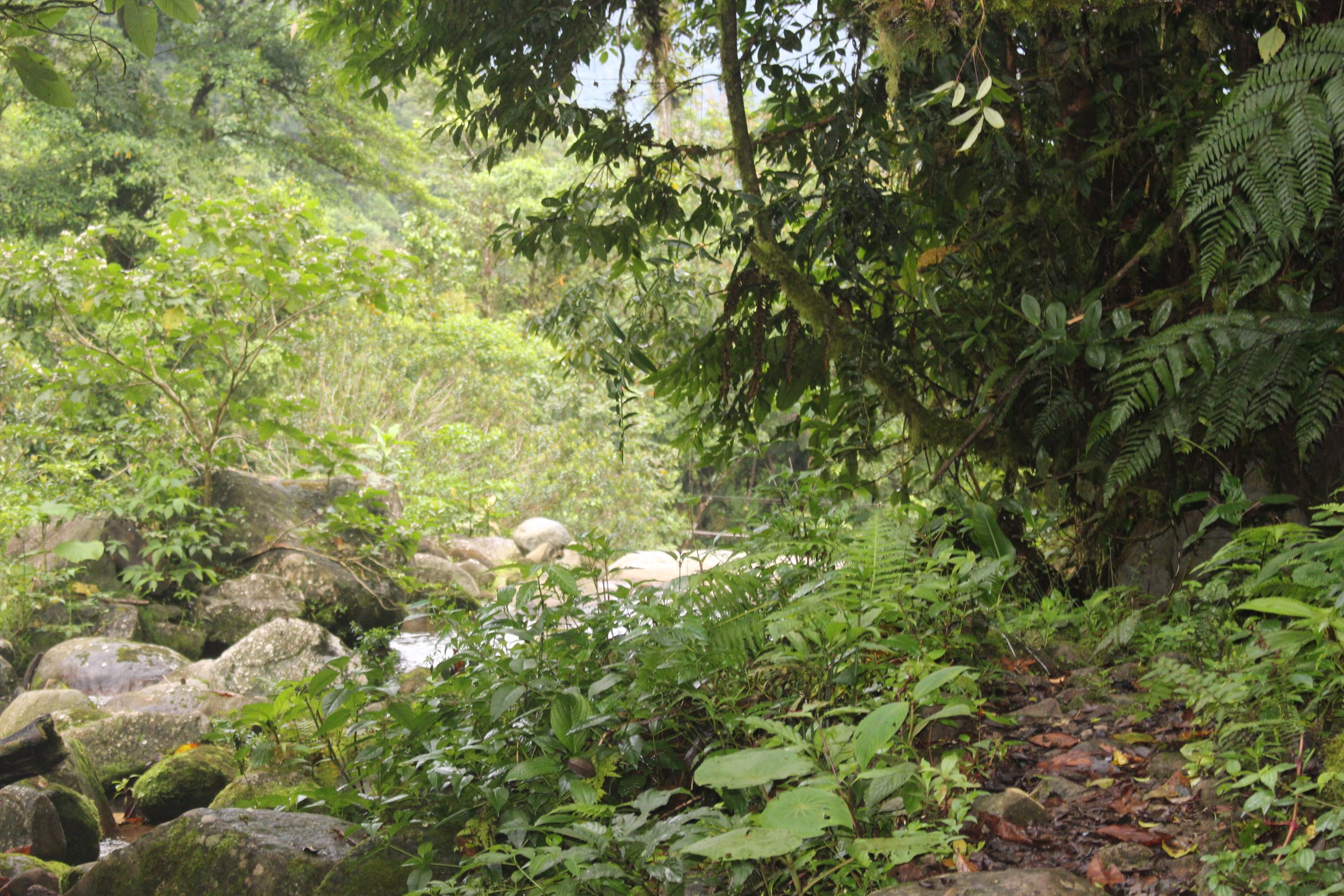
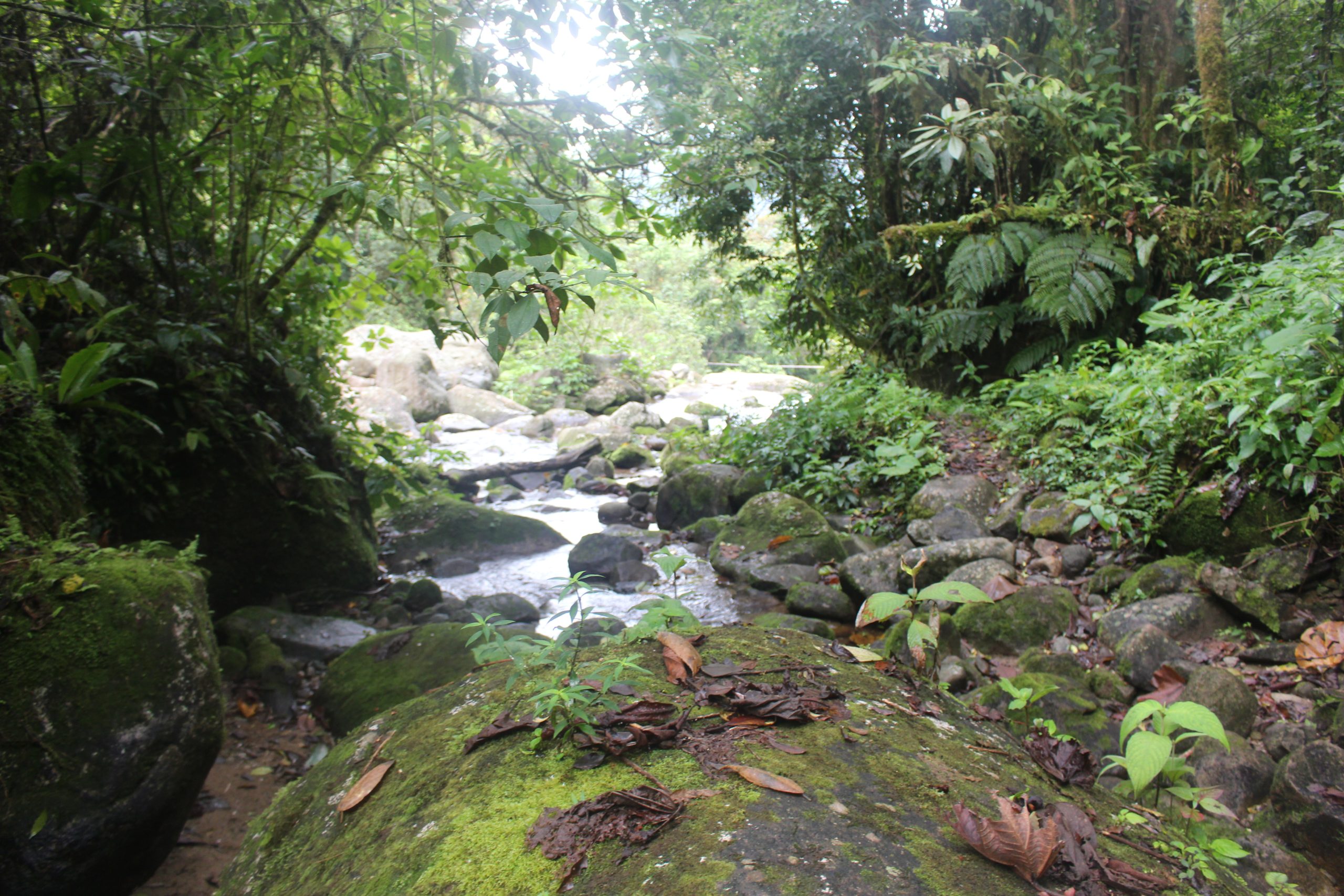
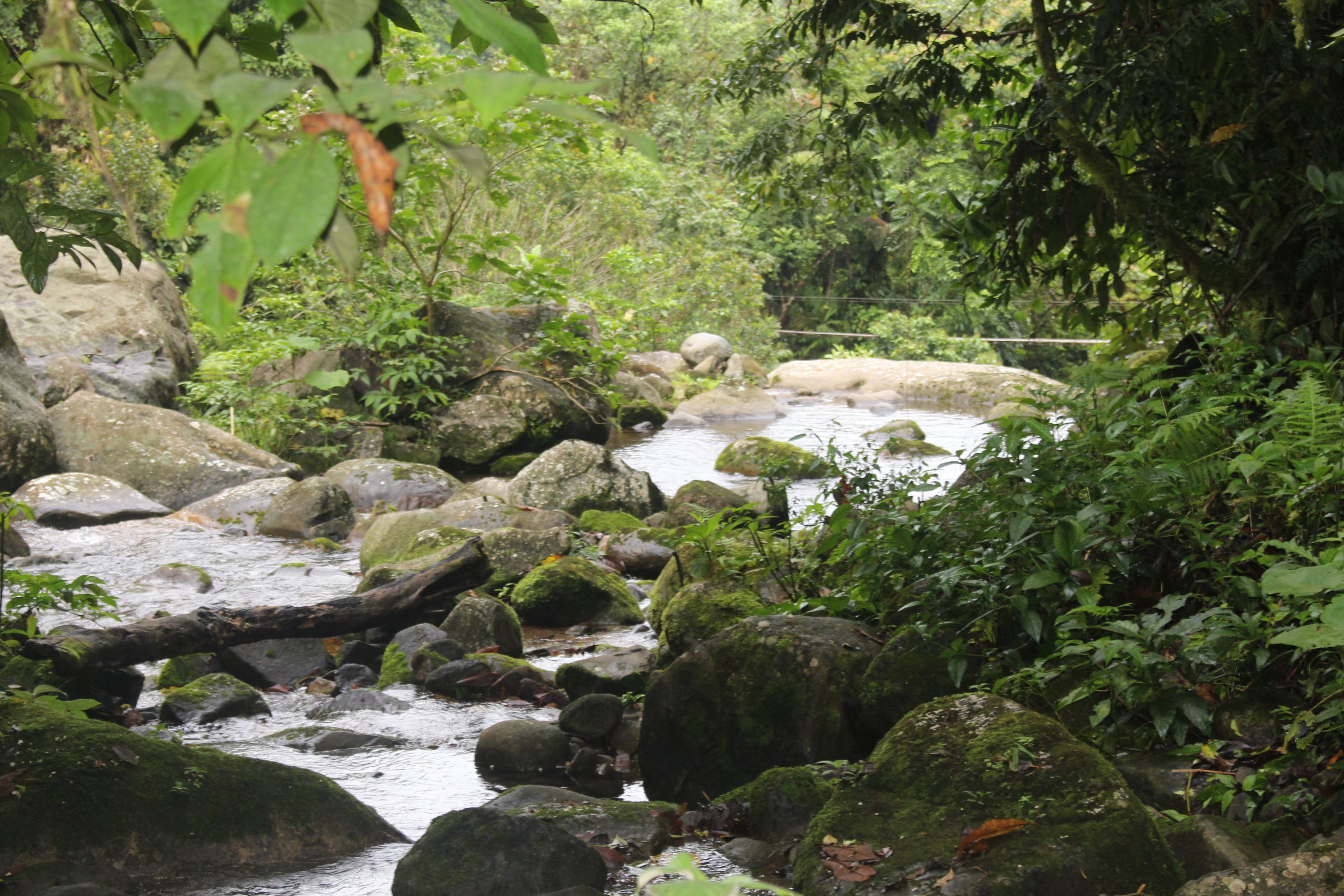
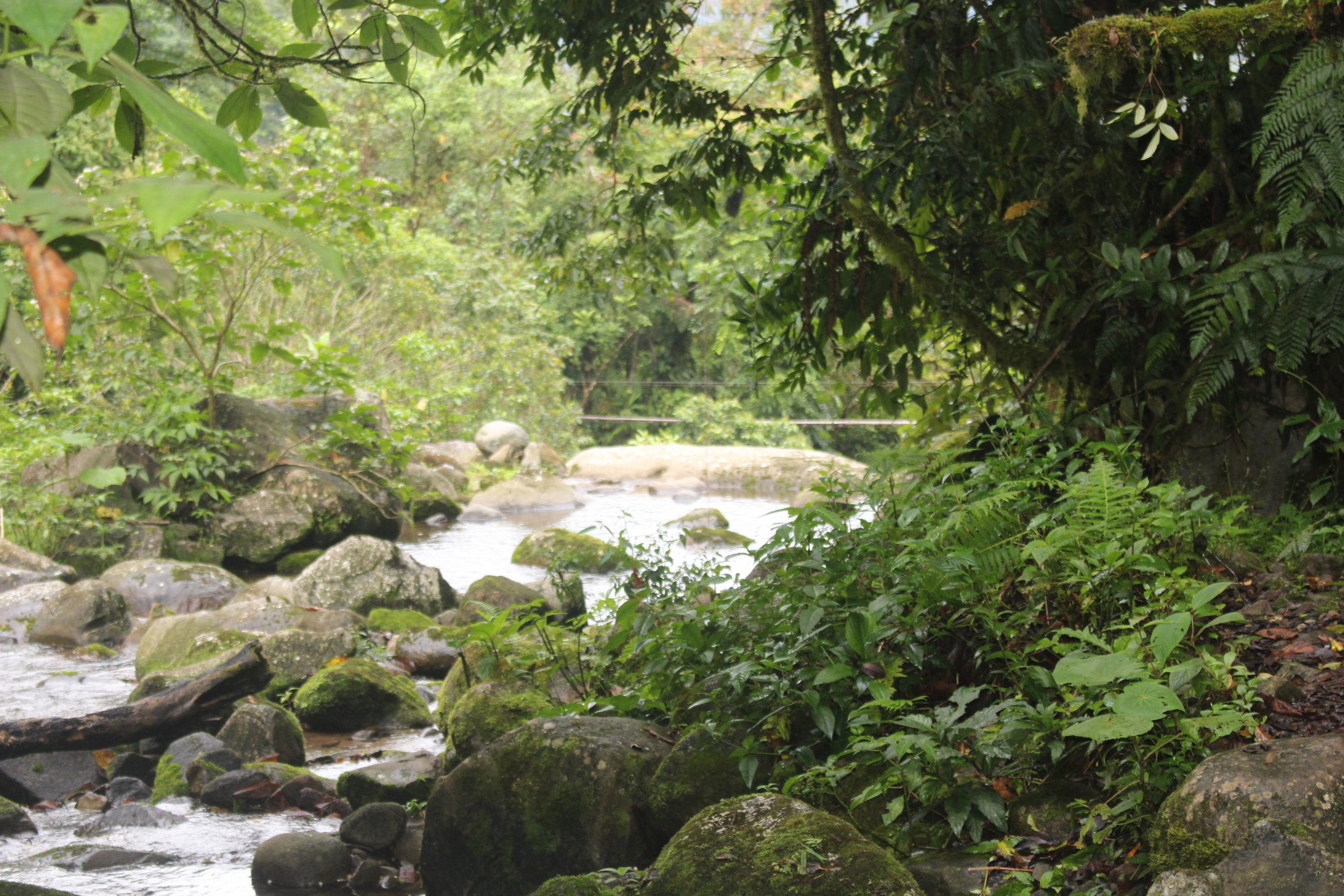
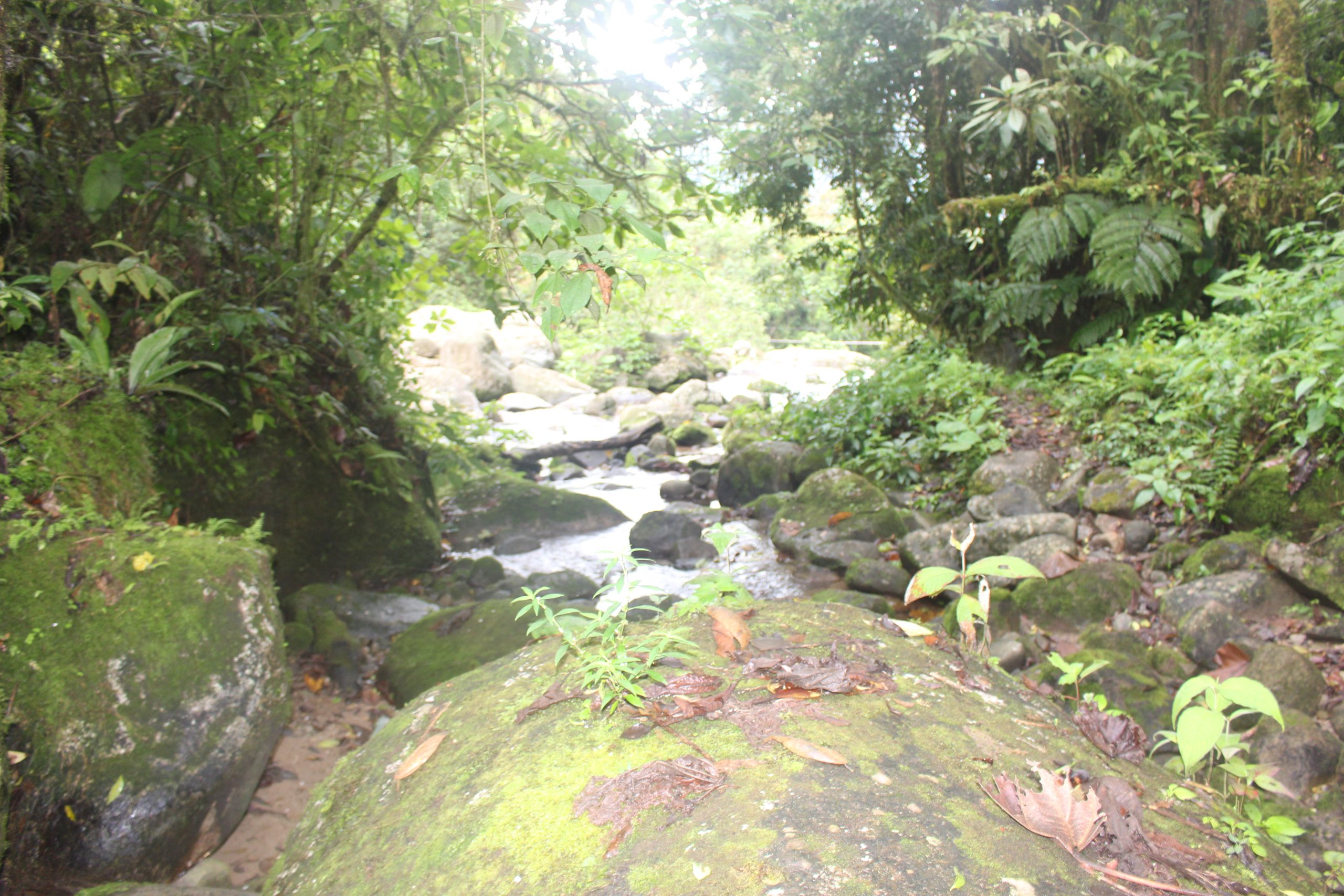
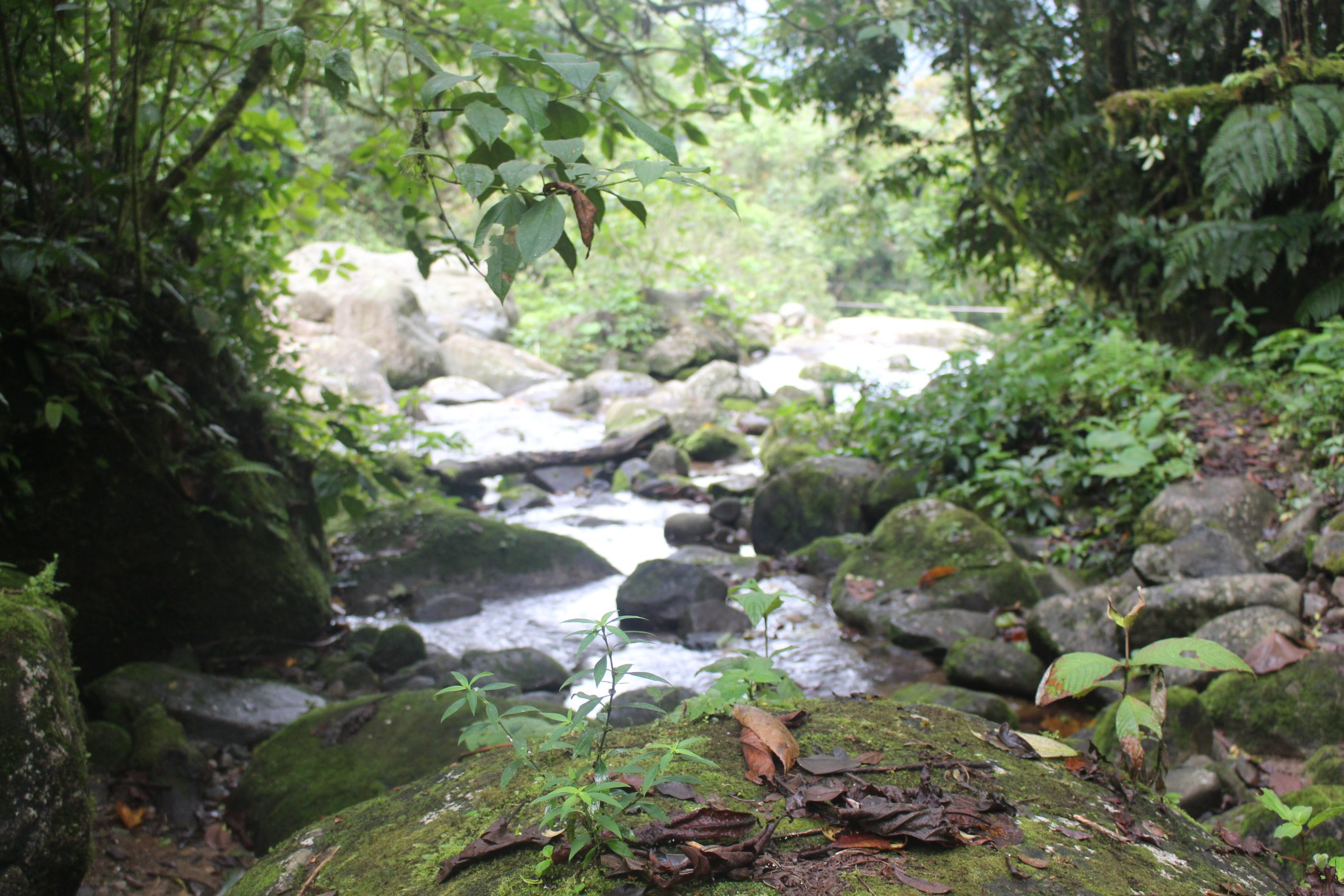
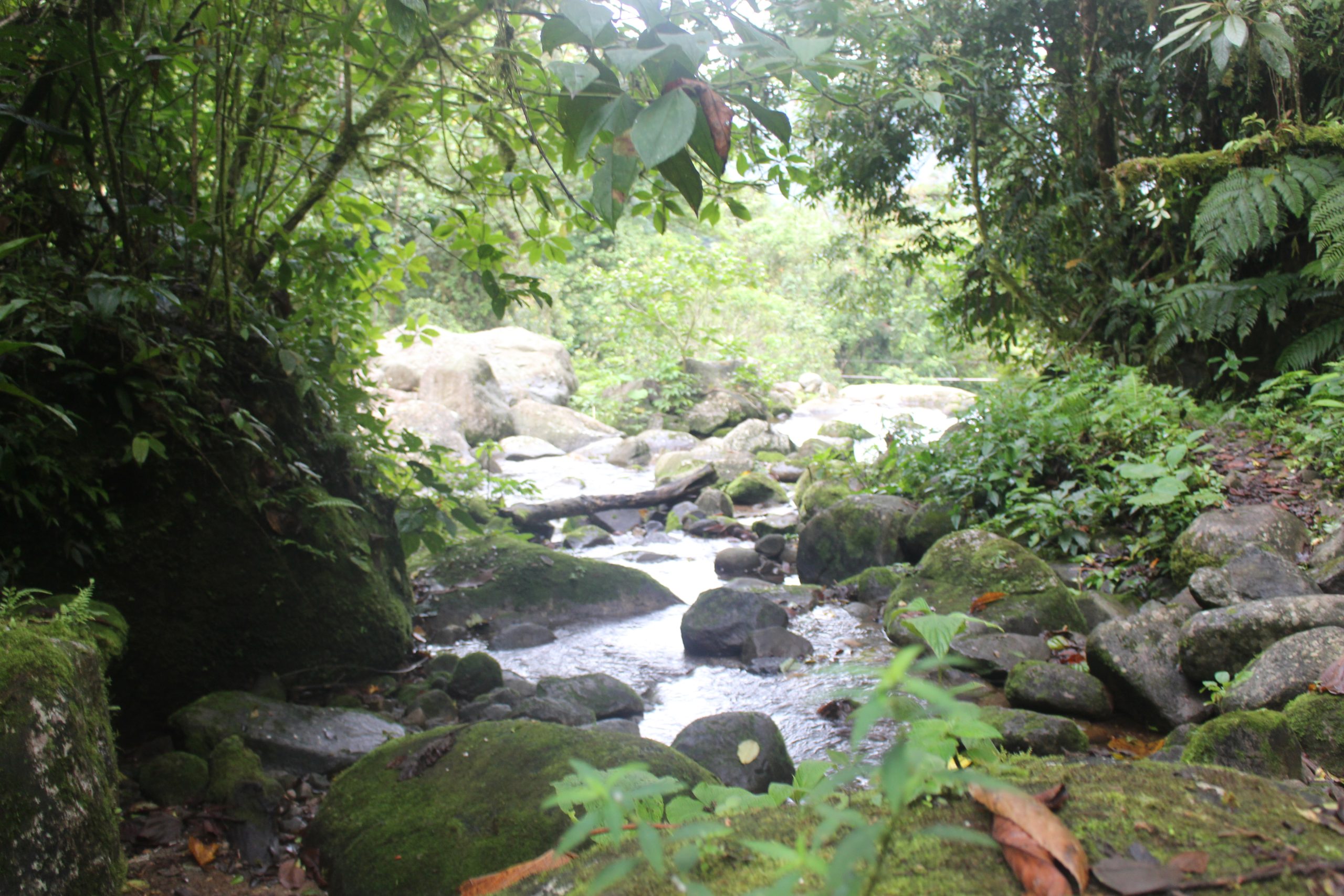

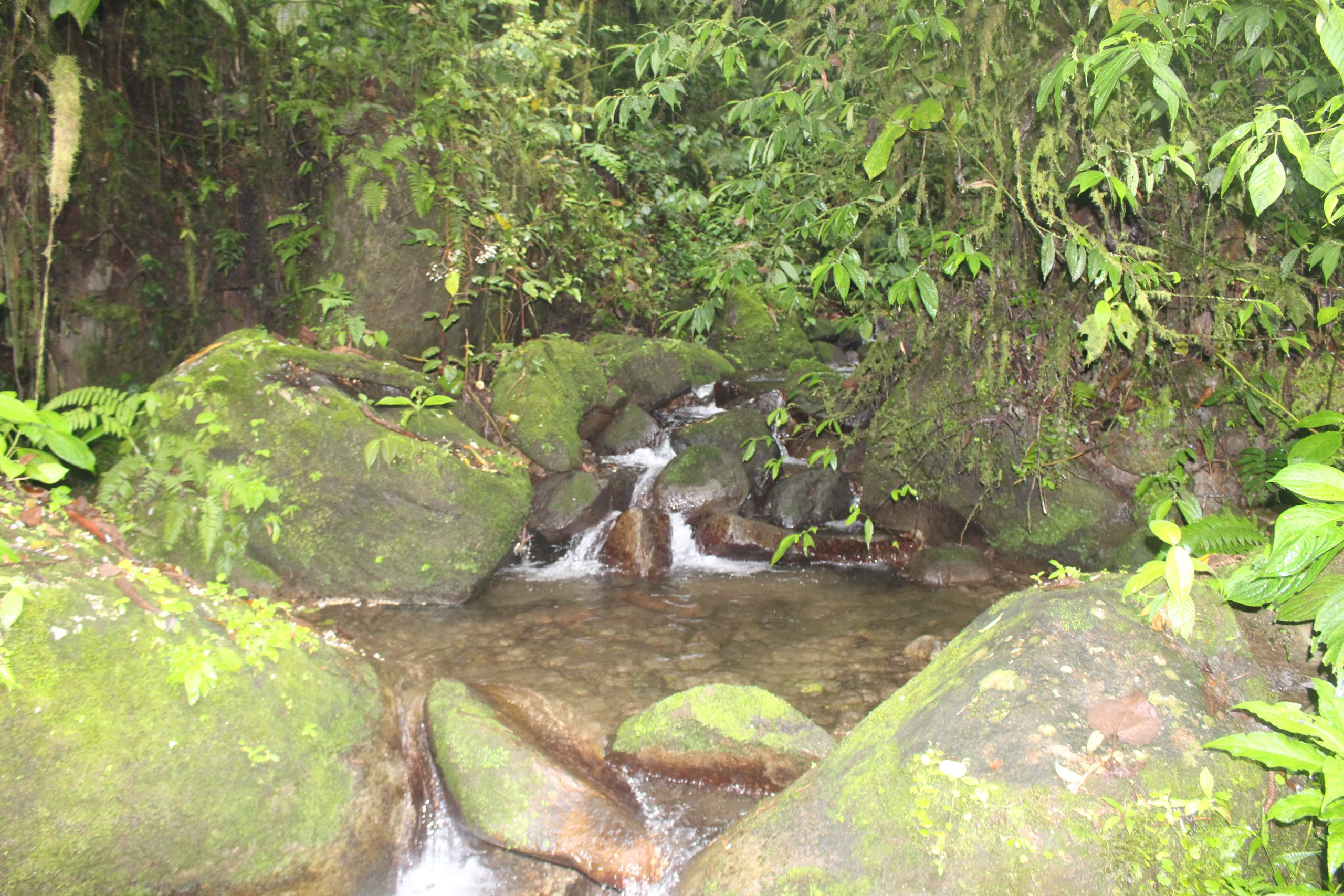
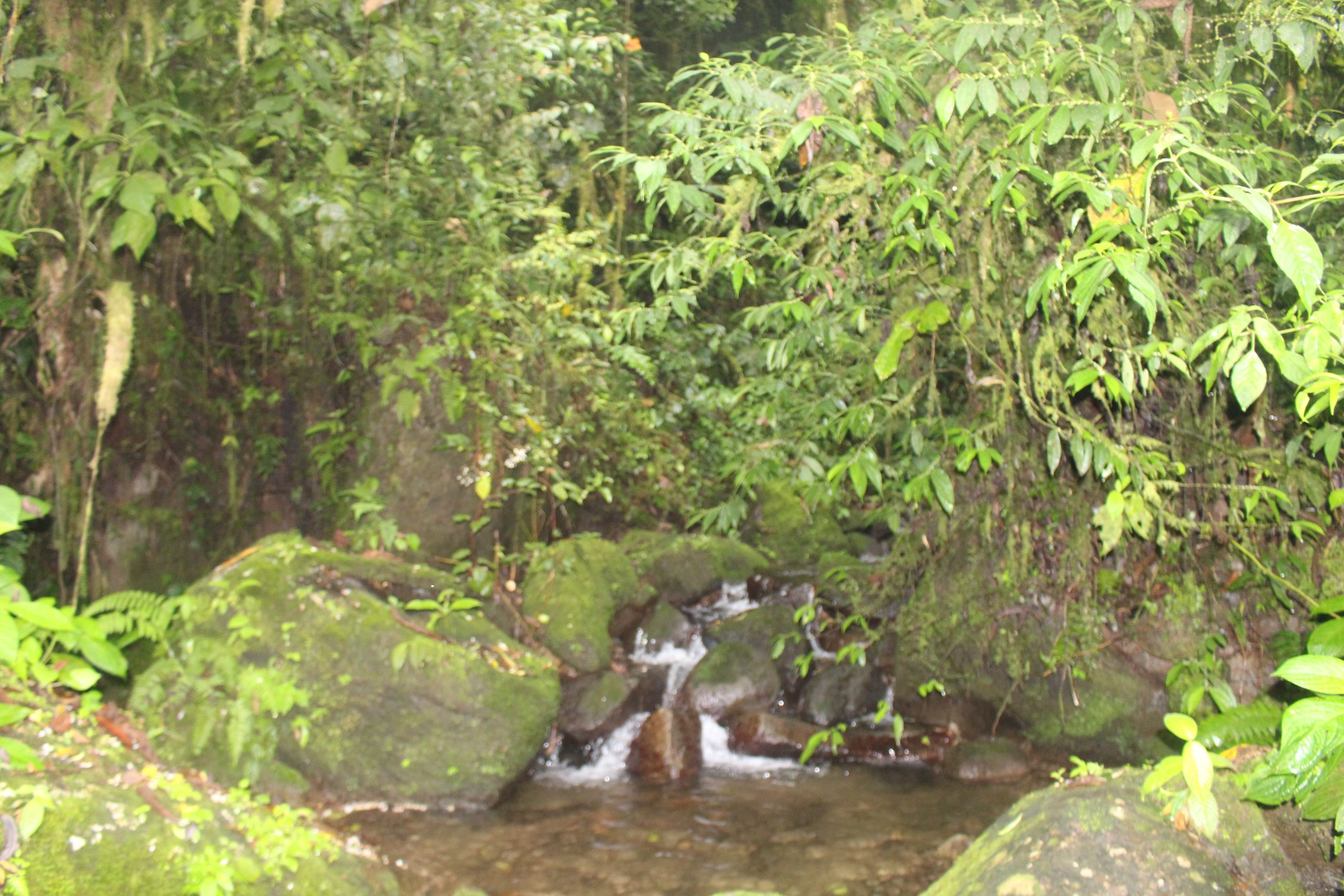

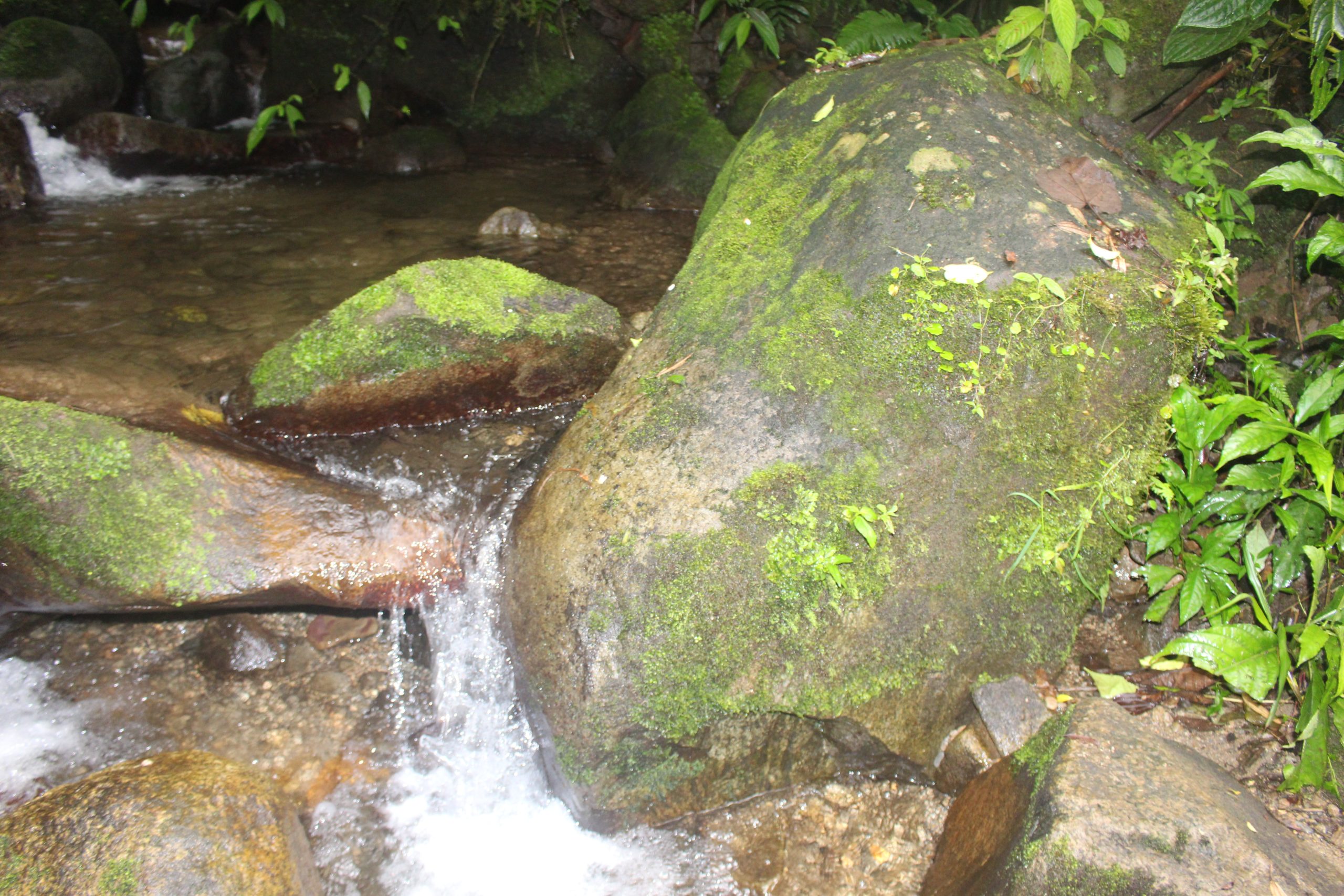

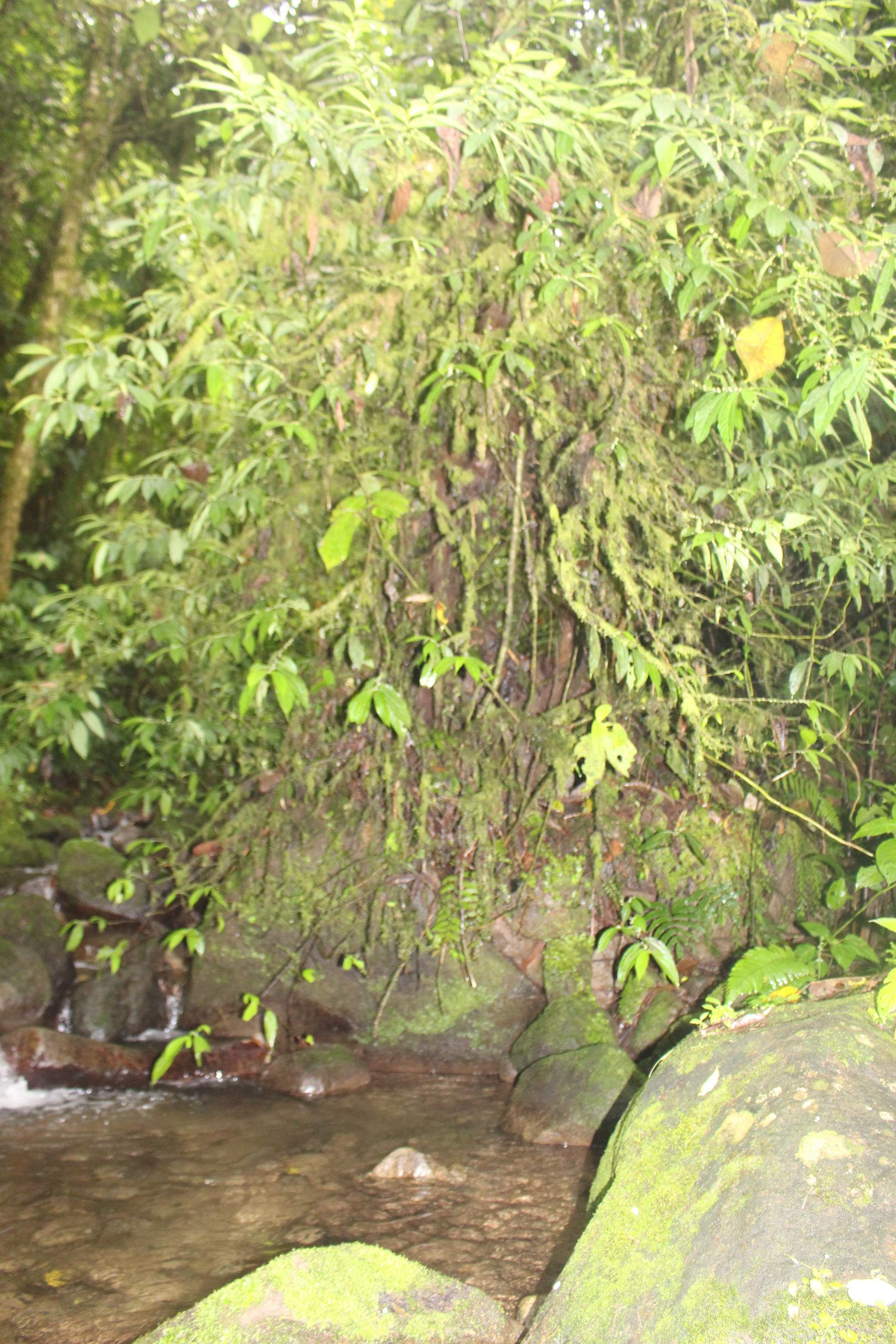
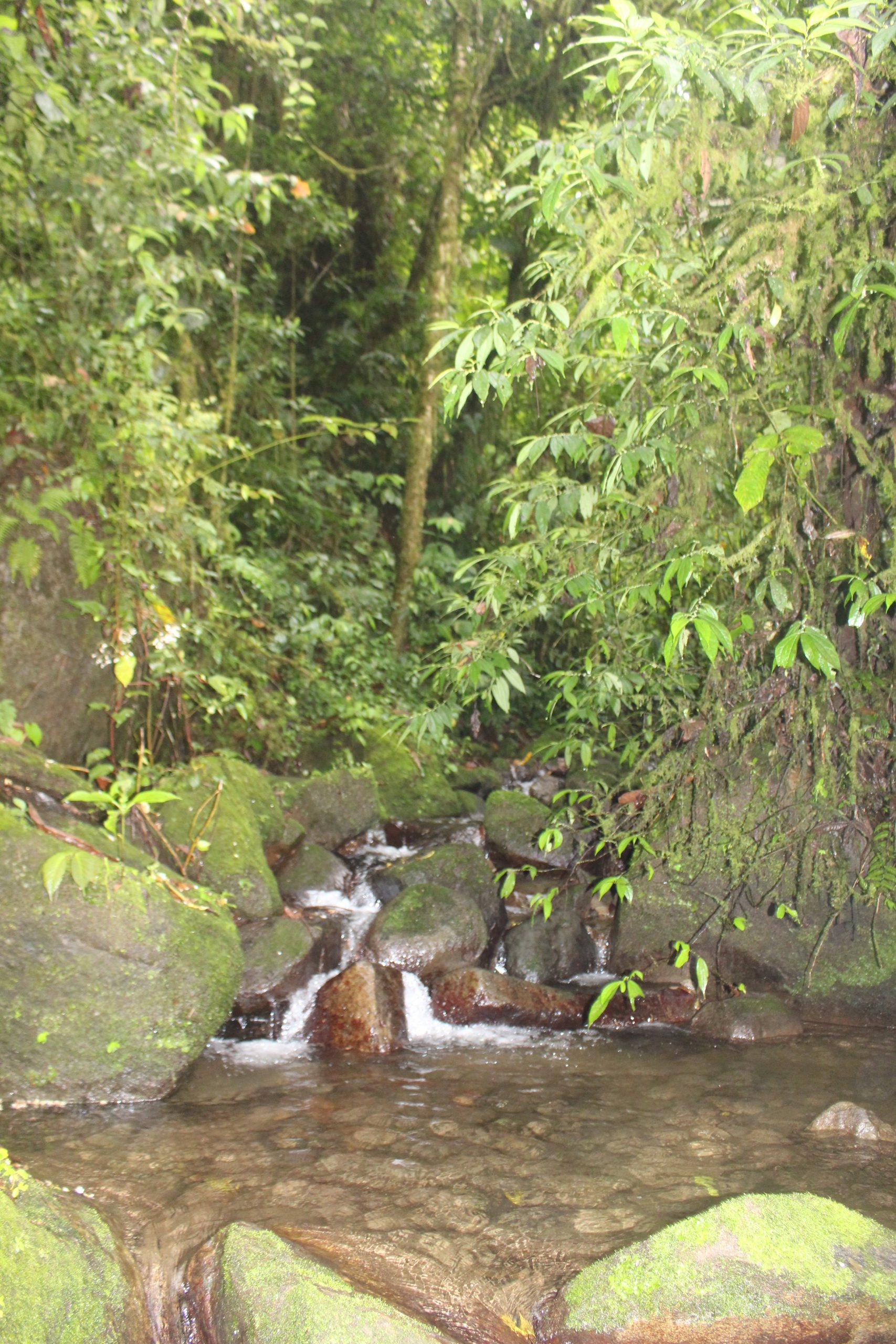
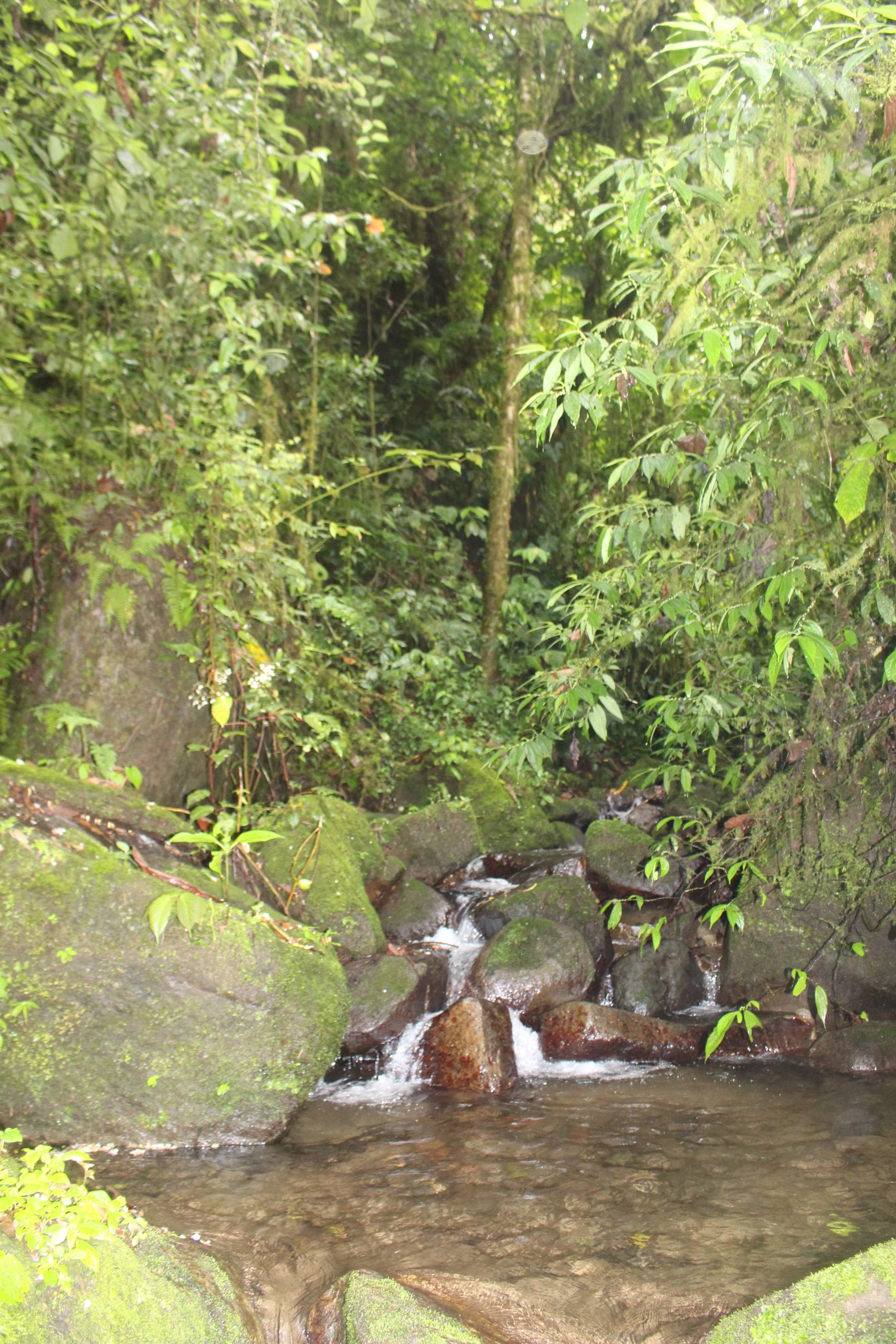
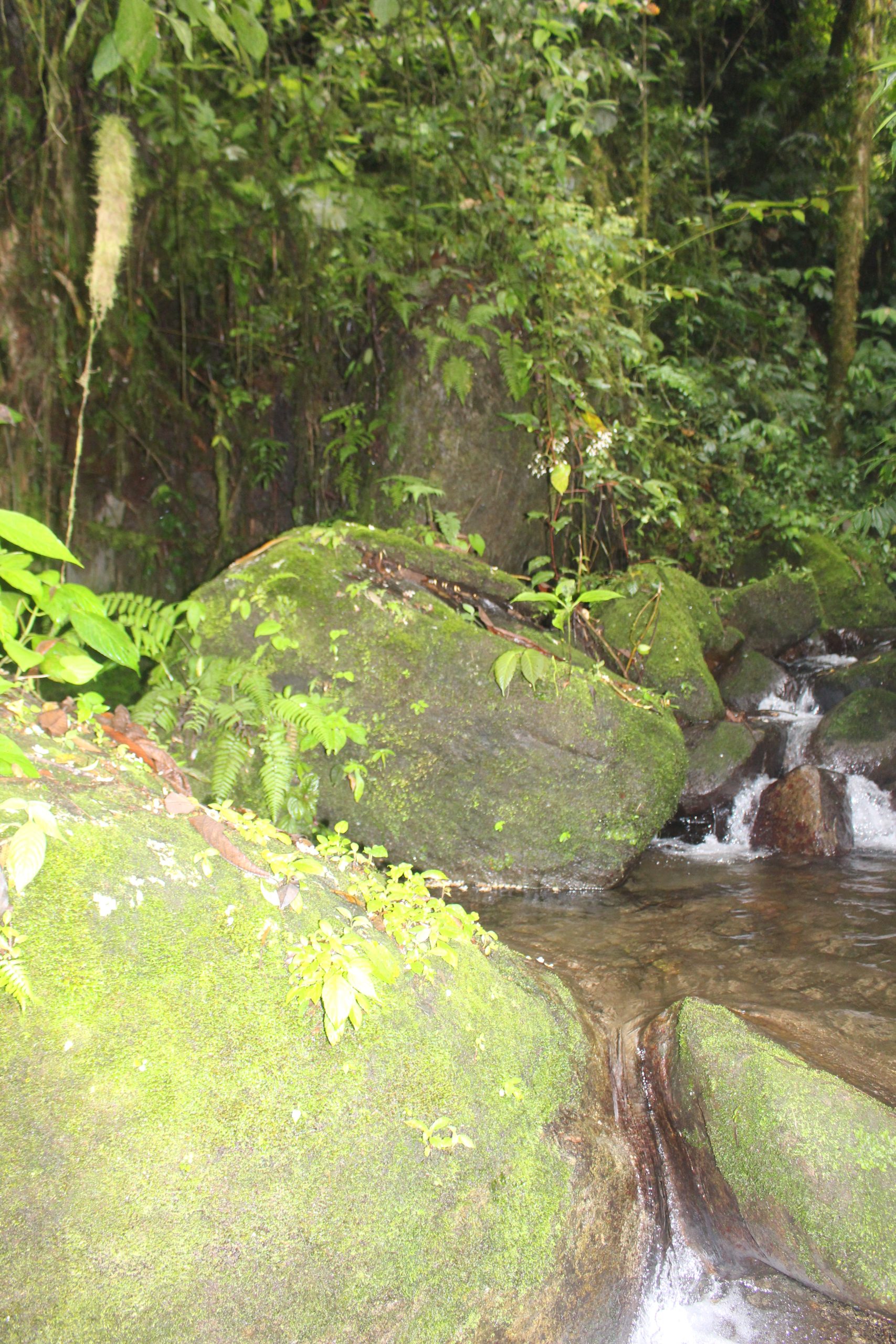
Camera Usability Notes
The camera was easy to use and it was relatively quick to navigate the camera features, including in the dark of night. The buttons and navigation tools are easy to use, although changes to the camera’s settings are rarely needed. During both expeditions, we had been using the camera for the few days that lead up to taking these night-photos, so we were accustomed to using it, similar to how Kris Kremers and Lisanne Froon would have been accustomed to use their camera.
Using the flash was beneficial in seeing objects in the distance. Although it was a rather fast flash, it still lit up the entire area, which granted us the opportunity to see the trees and rocks surrounding me. From the light of the flash, we could easily see twenty meters away, perhaps more in some cases.
The pre-flash (indicator) light was also somewhat helpful, for a general sense of what’s immediately nearby. However, this light was rather weak and wouldn’t be helpful to see anything more than three meters away.
The LCD screen provided some light, although minimally. The LCD screen wouldn’t illuminate anything more than about 8 to 10 inches away. In a pinch, the LCD screen light could be used to illuminate the ground (when held closely) to see where we were stepping, although that would be rather inconvenient.
The camera was not difficult to grip, nor was slippery in the humid conditions.
Even during moist and human conditions, the camera functioned as expected. Even when the battery died earlier in the daytime, during the first expedition, we were still able to re-power the camera on briefly to snap a couple more photos before the battery died again.
Photo Comparison Considerations
Comparing our night-photos with the night-photos taken by Kris and Lisanne, could provide some insights into understanding a handful of observations:
- The difference of the general clarity between the photo sets.
- The reflection of wet rocks.
- The effect of floating water droplets (orbs).
- The clarity of nearby objects and objects at a distance.
- The effect the flash had on objects at various distances.
- The moss and vegetation found on the rocks.
Upon comparing our night photos with the photos of Kris Kremers and Lisanne Froon, my immediate thought was that there was a lot more vegetation visible in our photos:
- In the boulders and rocks of Lisanne’s photos, the rocks appear much more clear of vegetation. Very little vegetation is found on the rocks immediately in front of them, whereas nearly all of the rocks in our photos had some form of plant-life growing.
- There were more bushes and small-scale plants immediately overhead in our photos. Therefore Kris and Lisanne’s photos must have been in a more widely-open area, with less vegetation, because the tall trees are more easily seen in their photos.
- Our photos appear to be more clear, with more detail and maybe a higher resolution, even though our camera setting matched the settings of the camera of Kris Kremers and Lisanne Froon. Comparing the vegetation in our photos with the vegetation in the official photos illustrates that our camera offered clearer photos, for reasons we do not know.
In the future we might do a deeper comparative analysis of the various sets of photos. There’s a host of opportunities of items we could compare, but we’re still deciding if it’s worthwhile to dig deeper here. For now, our goal is publishing these photos so that our followers have the opportunity to evaluate the photos, do their own comparisons and draw their own conclusion.
Please feel free to post your comments below, we’re always interested to see what our followers consider to be note-worthy.
Another Thank You (!)
As always, we appreciate the support of those that assisted us in funding our Expedition to Panama and the general community that has followed our work. This project has been an enormous task, especially through the pandemic and post-pandemic timelines.
Sometimes the disappearance case of Kris Kremers and Lisanne Froon can feel overwhelming, especially when we find ourselves with more questions than answers. However, we believe that more answers do exist and it’s possible for more light to be shed on the tragic loss of Kris and Lisanne.
We hope to bring more light to the case.

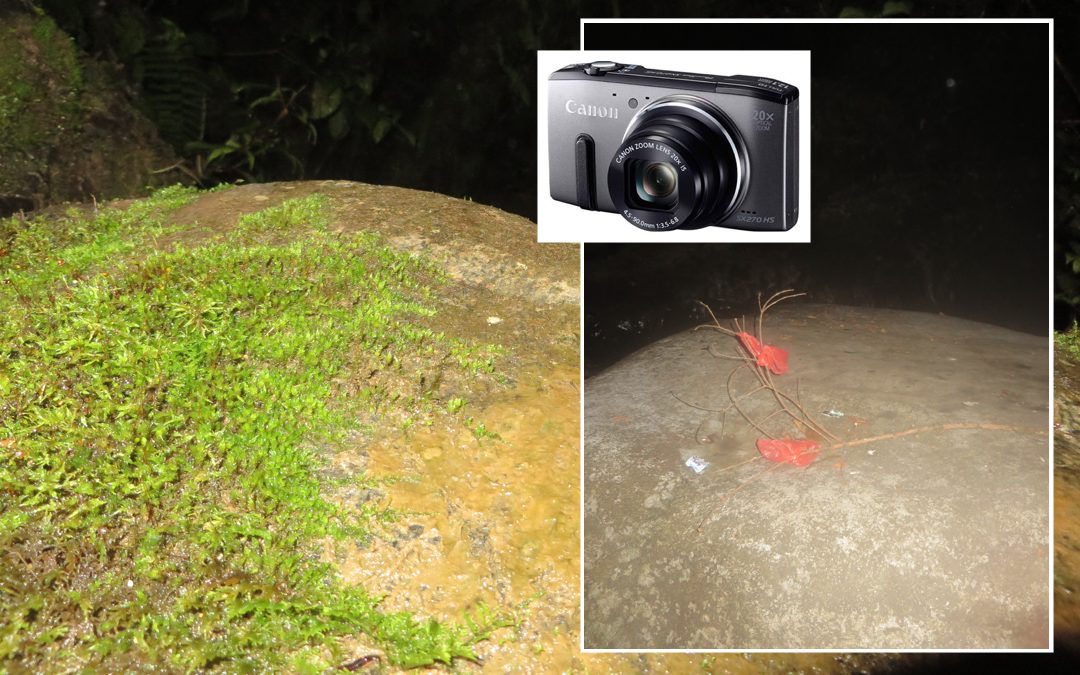

Hello, I am very interested in this case, I have read all the articles. Is there any progress in the case?
taking pickture in the rain would under expose the rest of the image and reduce the resolution with noise. the bright reflections of rain will decrease the exposure of the background when the meter compensates for the bright highlights closer to the flash. with the background (desired subject we want to see) being under exposed, there will be less contast as the background will only be using a limited part of the dynamic range range. in the girls photos wit close objects at edge of frame that app are out of focus, are all under exposed forthe infocus part of the frame. the near items out of focus can be over exposed.
I think the difference in the photo quality was very likely down to fog.
Because the close up photos like Kris’ hair and the SOS are clearer than the photos with objects at a distance.
And I doubt the girls would care about cleaning the lens if it had dew on it, assuming they were signalling with the flash, so the photos themselves would be irrelevant.
It would be very interesting to see some photos with this camera taken in various misty/foggy conditions.
I’m intrigued to come across individuals like yourself to continue to shed light to Kris and Lisanne. I remember coming across this case years ago and now upon revisiting this ongoing investigation I can only say, keep up the good work. Do not give up hope. Your Optimistic desires for seeking closure has inspired everyone, including myself, to stand up and preserve the truth, no matter the cost.
Until then, Til All Are One.
It’s curious, this absolute belief that these April 8th Photographs had to be taken somewhere along the river…
One of the many interesting things about Imperfectplan’s own photographs above is that they are taken on one of the small streams that eventually feed into the main river. So this night it is raining, just as it was on April 8th, and we have lots of photographs showing the stream, as the rain falls. In the April 8th Photographs there is not *one* photograph of a stream, or river. The rain is falling and this person taking the photographs has absolutely no interest in what the river is doing?
I have always felt that this location glimpsed in the April photographs very likely isn’t on the river, it’s somewhere more specific, and sheltered…
But what I’m really writing here for is to ask someone involved in taking the pictures above whether they were exposing the Camera to rain that night. I don’t believe the camera would cope well with exposure to the rain like this, and I don’t believe the camera used in April was being exposed to the rain either.
I think the resolution/detail differences are likely due to:
1. More humidity/more moisture when the girls took the pictures (I don’t know this for sure is the case)
2. Moving the camera around frantically rather than holding it in place to take a specific picture
3. Water damage/dirty lens
I agree it would be interesting to intentionally drop the camera in water and then take photos after it dries out. There would be residue on the lens, causing blurriness
Con respecto a la diferencia en la claridad de las fotos con respecto a las de las chicas ¿podra ser que con el uso haya un desgaste en la lente y el flash? ¿Hay posibilidad de saber desde qué año se comenzaron a fabricar ese modelo de cámaras? También podría ser la serie de fabricación, suele pasar que son del mismo modelo pero con materiales diferentes, por diferentes proveedores de materiales etc. Yo compararía el número de serie de las dos cámaras usadas para la muestra, para saber si son fabricadas en tiempo cercano. Creo que sería imposible conseguir el serial de la cámara de Lisanne.
Hola, soy seguidor de Romain, me gusta mucho sus videos del pianista. Sobre las imágenes de rocas con musgos y comparándolas con las fotos de Kris y Lisanne, ¿es posible que en alguna época del año, sea más seco y no se formen musgos? ¿y la vegetación más escasa?
Some thoughts I haven’t seen discussed:
1) The night photos and these reproduction attempts suggest the location was not in a narrow drainage but where the river channel is wider, more rocky, and with some steep walls and large boulders.
2) If K&L were looking for a secret waterfall, they could have walked down one of the “rivers” (streams) and then sustained injuries that made it impossible to ascend, or they were unable to find the trail again when they backtracked (e.g. returned up a fork in the stream not the way they descended). In a panic, they might have called the emergency number at that point.
3) Another angle is they were chased and went down one of the streams to get away. Maybe trying to avoid or hide from the gang whose present or prior actions (e.g. at the swimming hole) made it clear to them that these locals were dangerous to be around in such an isolated location (e.g. they had asked to join K&L on the hike but were rebuffed, so what were they doing there if not following the girls????). From this possibility could spring all of the subsequent weirdness of this tragedy.
4) Critically, many observers point out how brutal it would be getting lost in the forest/jungle. Exactly. Which is why they never would have gone offtrail into the woods but would have felt a bit more secure following a streambed. The thinner vegetation would make snakes, spiders etc. less of a threat. But of course there would be other hazards (wetter/shadier = colder). Less likely to be found if they got lost. Risk from slips and falls on rocks causing serious injuries. Flash floods during heavy rain. Less chance for cell reception.
5) The last point could explain timing of emergency calls and signal checks: during the day (“business hours”) and earlier than later. One or both girls might have braved a brief climb up the stream bank through the woods to reach higher ground. They would have more likely done this in the mornings when they had more energy and definitely during daylight as no way they were willing to be away from the rocky unvegetated ground after dark. Implicit in this is that the river or stream was deep in a ravine not on the flatter terrain. This would make hearing their screams harder and also for them to hear searchers, who possibly avoided the ravine bottoms as unlikely locations for the girls to have gone (a serious error in logic also repeated by local guides but perhaps on purpose).
6) K&L may have been acutely aware of phone battery life explaining to some extent why phones off when not checking signal. It also suggests some hope of being found: a drive for survival that trumped the emotional pull to use the phones and camera to leave final messages for friends and family. Especially after the first phone was drained.
7) Kris might not have died around April 5 but may have laid incapacitated, at the location of the night photos, some time before April 8 (fall, snake bite, exhaustion, illness from drinking bad water?). Explains why incorrect PIN and also reduced frequency of contact attempts. Lisanne didn’t want to leave the side of her friend; Kris may still have been breathing but unresponsive. Lisanne constructs crude SOS and a signaling device knowing they are not going further.
8) Then around 1am on April 8, Lisanne may have noticed Kris — who was propped up against a rock right next to her (the ground was too wet and cold to lie flat) — was no longer warm to the touch. She suddenly realizes her friend has passed and goes into a hysterical state. She releases all the emotions and fears at once, grabbing the camera and taking flash photos in a desperate attempt to signal somebody, anybody, until the camera battery goes dead.
9) At some point Lisanne either perishes at the same spot (and possibly gets washed away by rising current) or continues downstream.
10) After official search is called off, either locals or members of the gang from whom the girls might have run (and therefore who have reason to obfuscate what happened) find the body of Kris at the location of the night photos. Perhaps with the help of guide F, who may also have ulterior motives besides wanting to protect family and reputation of community, they dismember the body at a local shack placing the parts into bags. An indigenous local man cleans up the scene and helps dispose of the body which is treated with a chemical to accelerate decomposition prior to burial (possibly under the mango tree at a gang member’s house).
11) Gang/locals continue to search for Lisanne, which is now made much more difficult due to the rains. They eventually find her body, and the backpack, possibly in early June. They plug the memory card of the camera into a computer and delete photo 509 as it is incriminating. They do realize charging or turning on either phone would leave a track so they roll the dice that neither girl recorded or wrote any text referring to their interactions with the gang. Just in case, they concoct a story with plausible deniability, but this requires everybody to have a consistent story, timeline, etc. This is predicated on a decision to stage the find of the backpack and body parts in order to force a conclusion of “lost tourists” to the investigations. This a change to how they originally wanted to handle the affair when they disposed of Kris’ body. I point out that the disposal of Kris makes them seem guilty of having directly killed her and by extension Lisanne, so keeping the cover story intact is way more important than it might seem at first glance. In any case the change in plan may have been due to having had more time to think it over, seeing that the camera only had the one incriminating photo which they could permanently delete, and their ability to more or less get all of the stories aligned. Still, the narrative could be viewed as highly incompetent given that the bones and backpack have raised way more questions and suspicions compared to a complete disappearance with nothing ever turning up. It suggests more a bad calculation than some evil psychotic plan.
12) Backpack left by river where locals are bound to eventually find it (especially workers sent to the specific area). Body parts scattered nearby enough that it is plausible they could be found eventually as well. Important that night photo location not be identified as it was probably not very far from Mirador but impossibly far from find location.
13) One gang associate killed early on because he is talking about K&L which could bring unwanted attention on their involvement which in turn could expose other criminal activity.
14) Second gang associate tries to leverage the situation by directly implicating gang members and is killed.
15) Taxi driver offed after deviating from story … he had seen gang heading up to the trail on April 1 right after the girls so therefore could also implicate.
16) Rumors and rivalries swirl to create a jumbled and confused narrative that can never be unwound.
17) Police either suspect or find some evidence that contradicts the lost story but political, and perhaps practical, consideration results in decision to keep it simple.
18) Any possible answer at this stage requires finding the night photo location. Would be in a ravine with rock walls and boulders, relatively wide (10-20 meters) stream bed running at the bottom, that can be reached by climbing down along one of the streams crossing the trail. This should be then focus of any future expedition. No point whatsoever searching near any trail or offtrail areas that are overgrown.
It would be interesting to compare temperature data from your photos to the ones from Lisanne’s camera.
Also, maybe a waste of a completely good camera but dropping it in the stream, then letting it dry out for a week and then trying photos would also be interesting. Or maybe getting the lens and the flash foggy from the inside somehow
Thank you so much for your work! Hope this case will be solved someday. Keep it going!
Your night photos and Lisanne’s night photos are indeed different. Maybe Lisanne’s digital camera was damaged. Or the flash from the camera was a bit dirty. Maybe the camera was accidentally dropped.
Have you also tried partially covering the flash on the camera?
Can the metadata of Kris and Lisanne’s pictures be compared with yours?
Con respecto a la diferencia en la claridad de las fotos con respecto a las de las chicas ¿podra ser que con el uso haya un desgaste en la lente y el flash? ¿Hay posibilidad de saber desde qué año se comenzaron a fabricar ese modelo de cámaras? También podría ser la serie de fabricación, suele pasar que son del mismo modelo pero con materiales diferentes, por diferentes proveedores de materiales etc. Yo compararía el número de serie de las dos cámaras usadas para la muestra, para saber si son fabricadas en tiempo cercano. Creo que sería imposible conseguir el serial de la cámara de Lisanne.
Dear IP team,
Thank you so much for your great work! After studying the materials on the night photos I am leaning towards the idea that the girls (or one of them) needed that night a soft light of the LCD screen. From time to time she pressed the shutter button just to keep the camera in stand-by mode and prevent the screen from dimming. This would explain perfectly well the existence of these random photos as well as totally black photos (the flash fire became too annoying and was disabled). What do you think about this scenario after your experience with the same model camera?
Why the one year gap?